Commercial Street was originally known as North Street until 1897
*
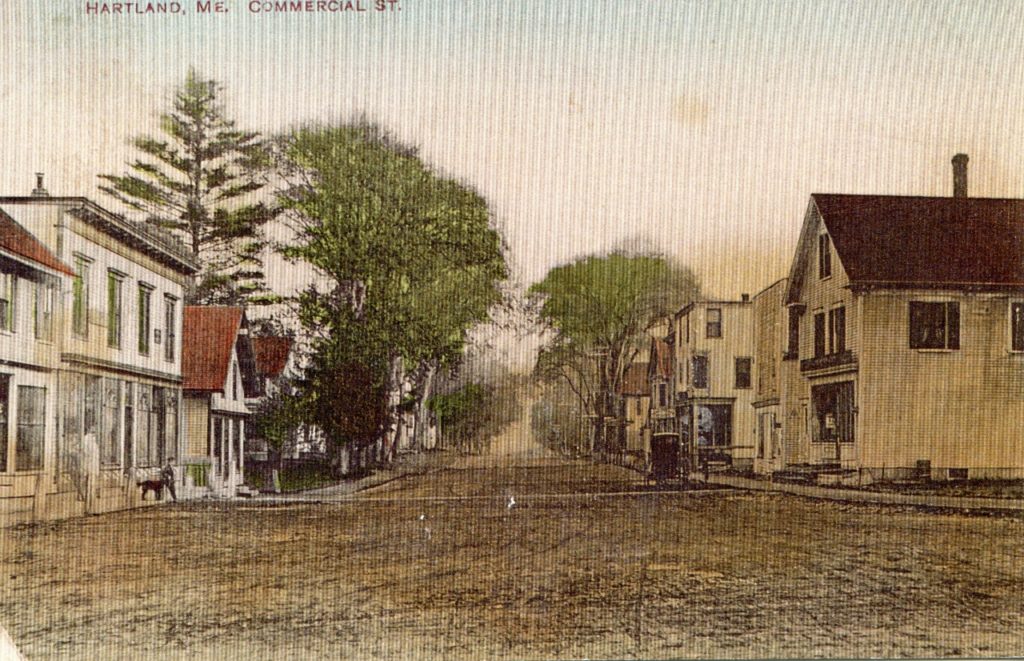
Commercial Street
*
Currently, no maps of Hartland detailing the locations of homes, businesses and merchants before 1860 have been discovered. Various documents provide us with enough information to know many existed in its early years of settlement, but most of the specific details of when they were built or by whom remain unknown. The following is based on our best interpretation of known maps, town records, census data, historical book references, photos, artifacts and family genealogical information. Updates will be made as new information is discovered.
*
All of the Commercial Street area, as well as much of the future Hartland Village area, was originally part of the future town of St Albans when it was purchased by William Moor of Goffstown, New Hampshire. Moor first came to explore the area around 1796 after St Albans was first surveyed as Township No. 5 in the 4th Range north of the Waldo Patent. Moor’s expansive lot stretched along both sides of the Sebasticook River and remained part of St Albans when it incorporated at a town in 1813.
This edited close-up of the original map surveyed by Samuel Weston in 1798 is rotated to a north-south perspective and highlights the original existing borders at the time of future towns surrounding Moor’s Lot S-17. Since Weston’s primary assignment was to survey St Albans and Palmyra, there were some obvious omissions on his map of Great Moose Lake bordering Hartland and Harmony and only a partial inclusion of its Sebasticook River outlet. Hartland’s original surveyed southern border with the L of Palmyra and the Gore of the Mile and a Half Strip are also highlighted. (See Maps page for further details)
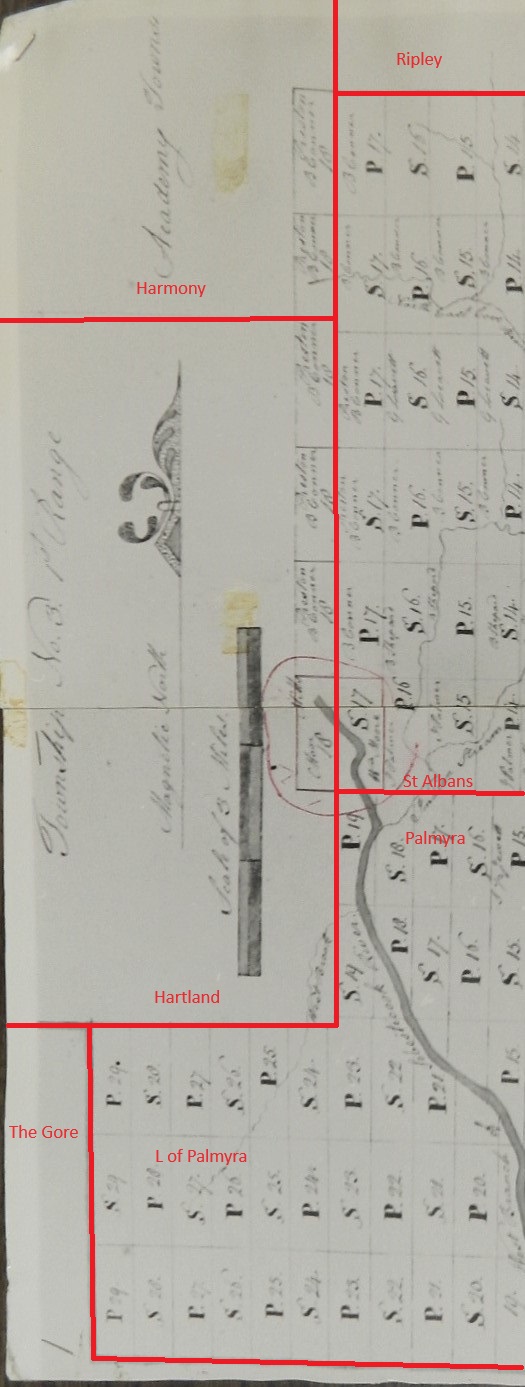
Edited Map of William Moor’s Lot S-17 location in Township No. 5 – 1798
*
For further visual reference, Moor’s entire Lot is highlighted below as it would have existed on a future map of the village area in 1883.
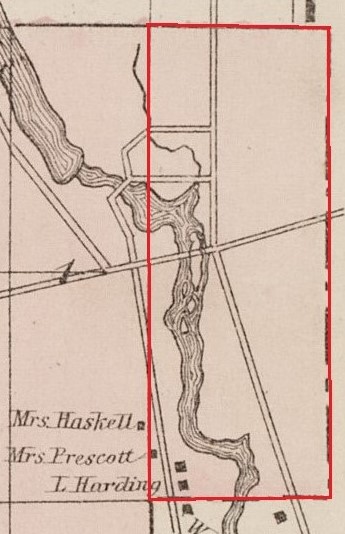
William Moor Lot Location Reference
*
Moor traveled back and forth from New Hampshire to his lot for a few years as he gradually built a small raceway dam on the future Commercial Street side of the Sebasticook River Island then located his sawmill along its banks and built a temporary log cabin nearby for shelter. Upon one of his returns to New Hampshire in 1797, he married Sally Moor, daughter of Abraham Moor & Esther Walker. In 1802, William returned to settle on their lot for good with Sally and their 2 oldest children in tow where Moor later built their first permanent stick home near the future woolen mill office/town library.
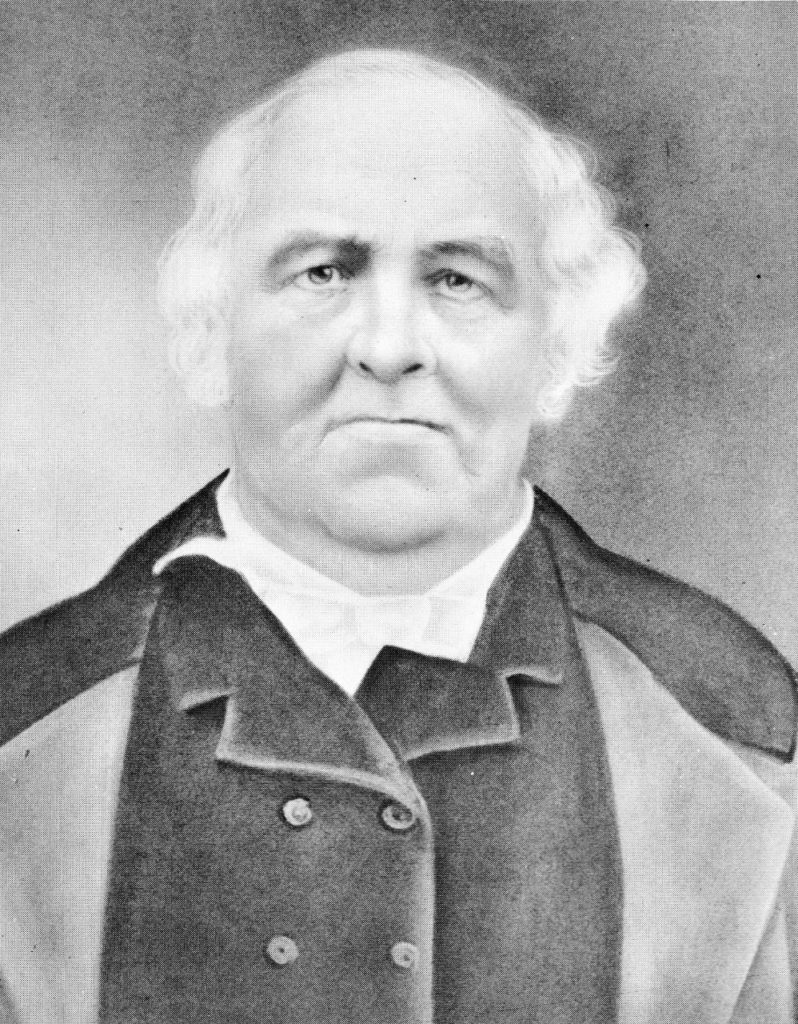
William Moor (1776-1848)
*
William Moor’s first sawmill used some of latest technology at the time utilizing a new water powered “Up-and-Down Saw” design. Family legend holds that Moor would often leave his saw running overnight to ward off wild animals coming around their home located next to the mill.
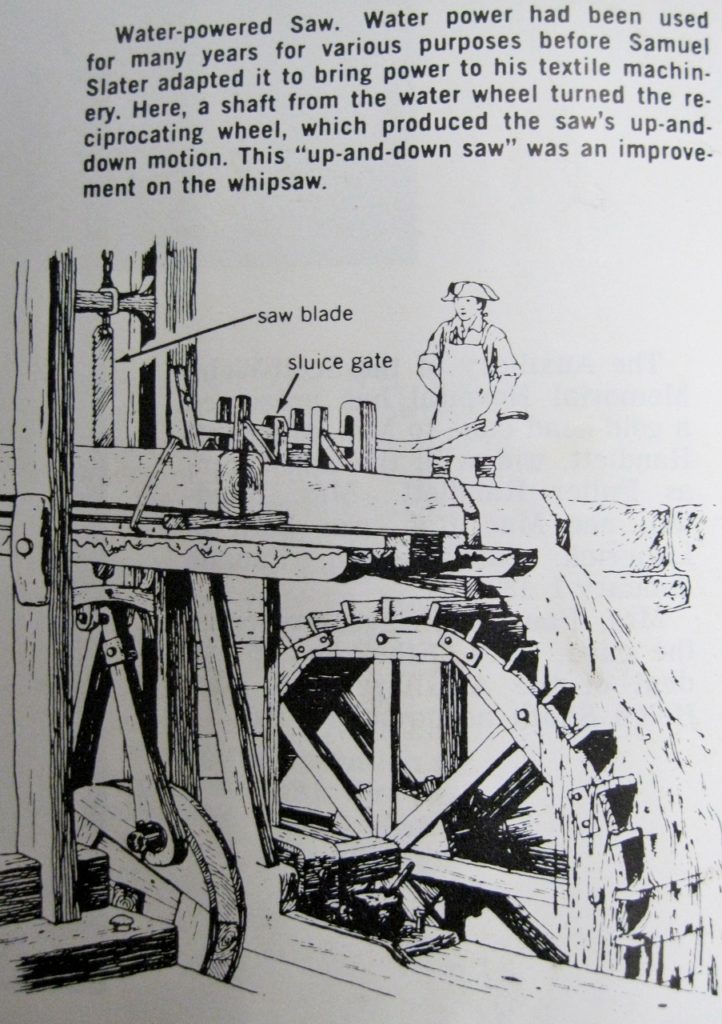
Samuel Slater’s “Up-and-Down Saw” Design
*
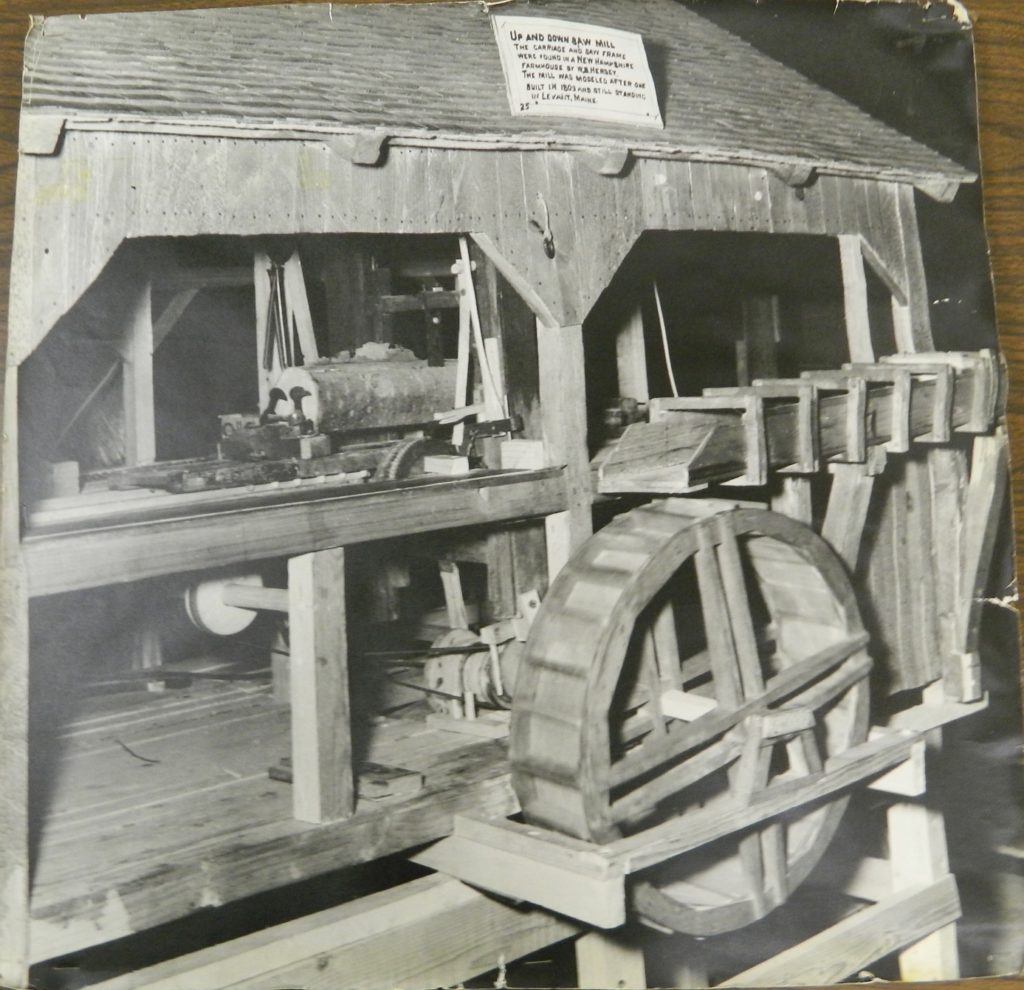
An original “Up-and-Down Sawmill” from Levant on display at the Maine State Museum
*
Years before major settlement began in the present St Albans Village area in the early 1820s, many early pioneers of then Township No. 5 settled around the St Albans Mountain area including Judah Hackett who first settled there in 1800. Several other families soon joined Hackett in the mountain area while William Moor settled in the valley along the Sebasticook River and was soon joined there by other settlers including his wife’s father Abraham Moor and her brother Samuel Moor and their families. This collective group of settlers referred to Township No. 5 as “Fairhaven” in the 1810 Federal Census where some 2 dozen families, noted by Head of Household and number of people in the household, had settled across the area by that time. Families living in future Hartland in 1810 were reported on separate Census pages as Township No. 3. (See Historical Documents page for further details)
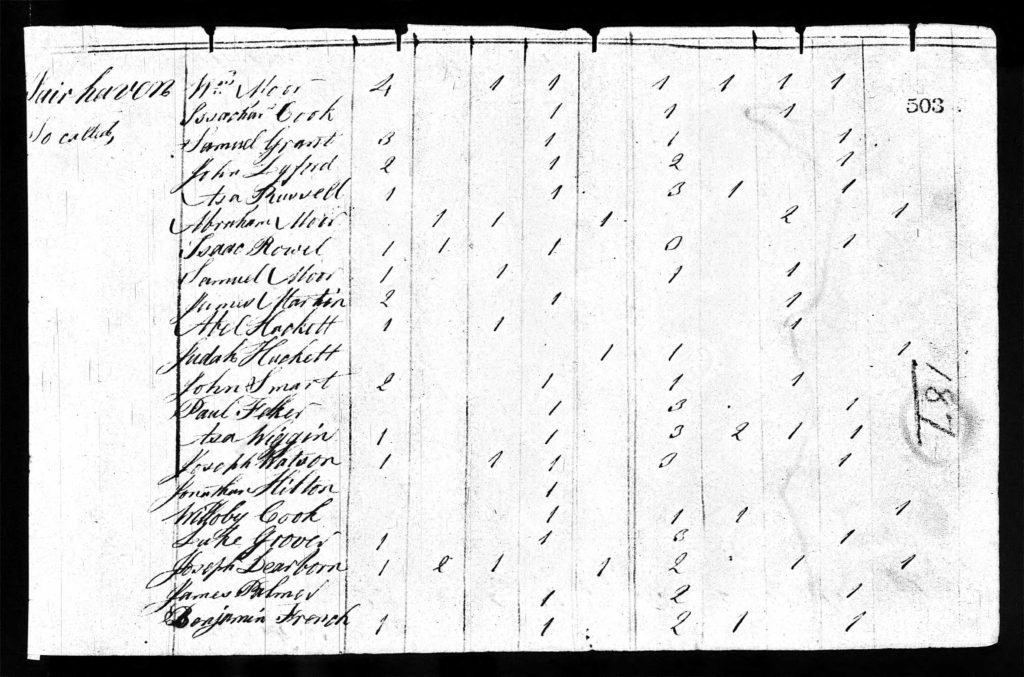
1810 U. S. Federal Census for Fairhaven
Transcription of the 1810 Census for Fairhaven as listed in order by Head of Household:
William Moor | Isachar Cook | Samuel Grant | John Lyford | Asa Rowell | Abraham Moor | Isaac Rowell
Samuel Moor | James Martin | Abel Hackett | Judah Hackett | John Smart | Paul Felker | Asa Wiggin
Joseph Watson | Jonathan Hilton | Willoby Cook | Luke Grover | Joseph Dearborn | James Palmer | Benjamin French
*
William Moor is respectfully acknowledged as a pioneer settler of both St Albans & Hartland and is prominently included in Hartland’s early history for his contributions to the initial settlement and first industry in the future village area as well as having a significant role in early area town affairs. Moor had already divided up most of his original lot into multiple properties sold to new settlers in the village area well before he & Sally moved to Corinna in the mid-1820s with their 6 youngest children. Their 2 oldest children Maria Moor, who married John Stinchfield Sr, and James Moor remained in Hartland. William & Sally remained in Corinna for the rest of their lives and are interred at Corinna Village Cemetery.

Replica of William Moor’s Sawmill Sign
*
On March 15, 1821, a substantial change to Hartland’s original incorporated borders occurred when all of its land east of the Sebasticook River and Great Moose Lake was set off to St Albans including a small northwest section of the future village area. Several documents at the time refer to this part of St Albans as the “West Village”. Moor’s original lot is included below as a reference to its location.
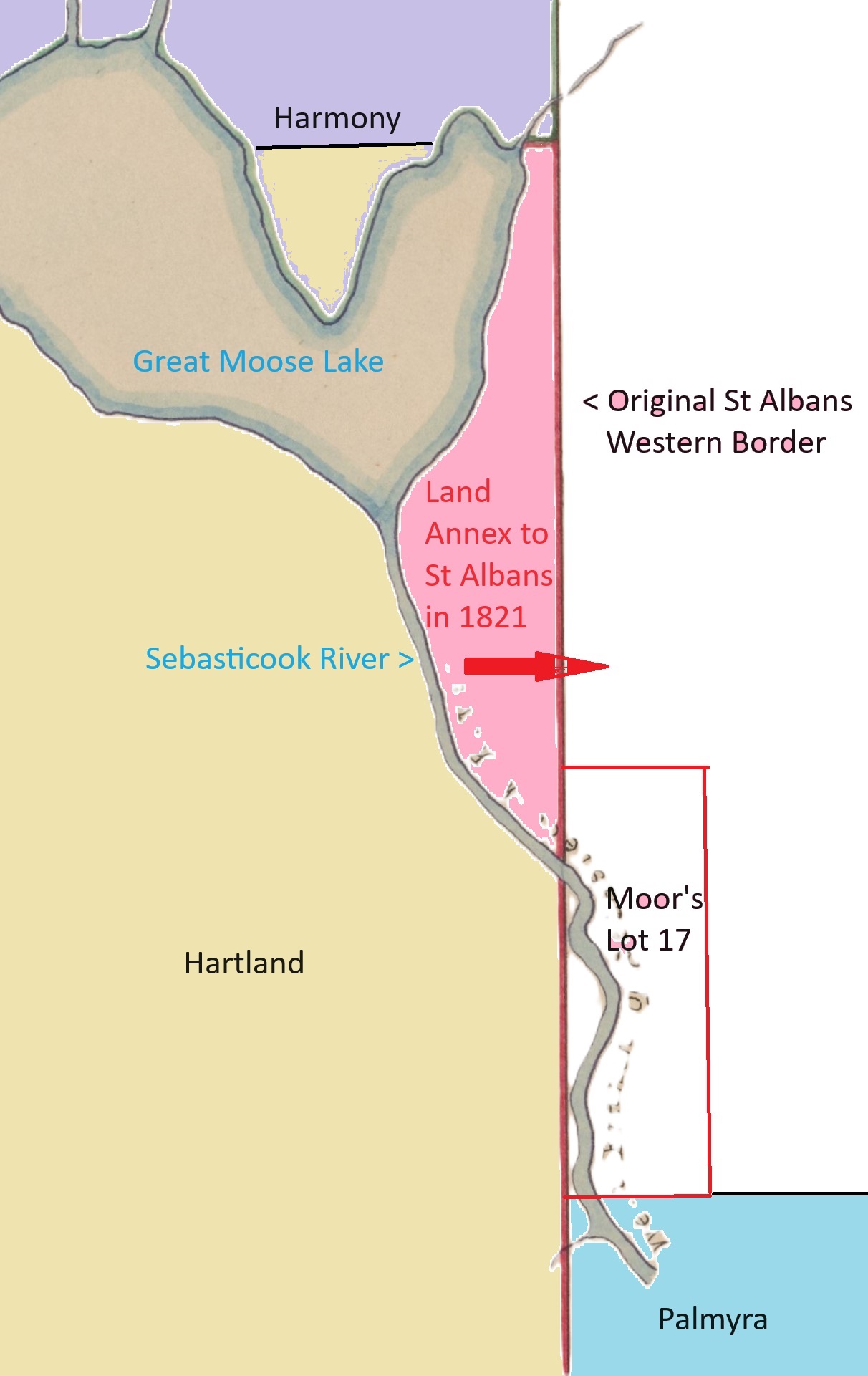
1821 Annexation to St Albans
*
All of William Moor’s original Lot 17 remained part of St Albans including the southwest section which crossed the Sebasticook River. This section sustained that part of St Albans’ original southern border with Palmyra and its western border with Hartland as illustrated below using a template of the 1883 map with future streets included for reference as to where the village area remained divided in 1821.
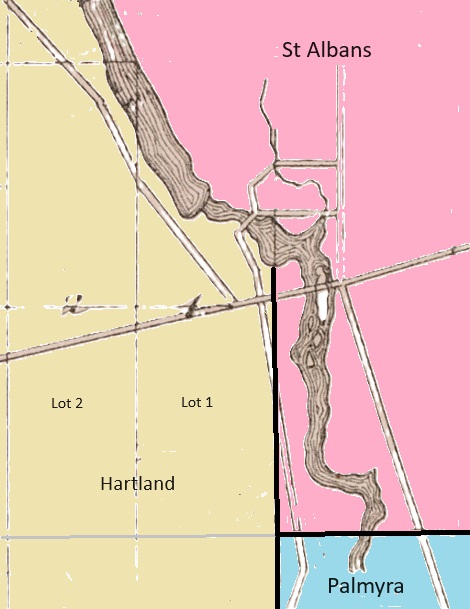
1821 Village Area Borders
*
As growth in population, industry and commerce continued on both sides of the village area over the years, it further escalated old issues and since created new concerns with the divided village area border. Some of these concerns had grown even more so as the shifting population and location of town government of St Albans began centralizing at the foot of Big Indian Pond in the late 1820s putting those St Albans citizens residing near the Sebasticook River further away from participating in their town affairs.
Despite these growing concerns, it would take another 25 years and several discussions among citizens of both towns before the current borders of the village area between Hartland and St Albans were finally established following an 1846 petition presented by inhabitants of St Albans living on the western side of the village area to the Maine State Legislature.
On August 7, 1846, the Legislature formally approved an Act to again alter some of the Hartland and St Albans town line on the eastern and a part of the western side of the village reading in part as, “From and after the passage of this act, all that part of the Town of St Albans, in the County of Somerset, which lies west of Lot Numbered Sixteen, in the First Range of lots in said Town of St Albans, be, and is hereby set off from said Town of St Albans and annexed to the Town of Hartland in said County.”
As seen on this illustrated future map of 1883 as reference, the majority of this annexed land was William Moor’s entire original Lot Seventeen which had since been divided into multiple properties. Also included was a small section of land west of the northwest side of Moor’s lot bordering the Sebasticook River which had been previously annexed from Hartland to St Albans in 1821.

Hartland Village following 1846 Land Annexation from St Albans
*
The uniquely bordered village area now including Commercial Street as part of Hartland as seen a few years later on the 1860 map below.
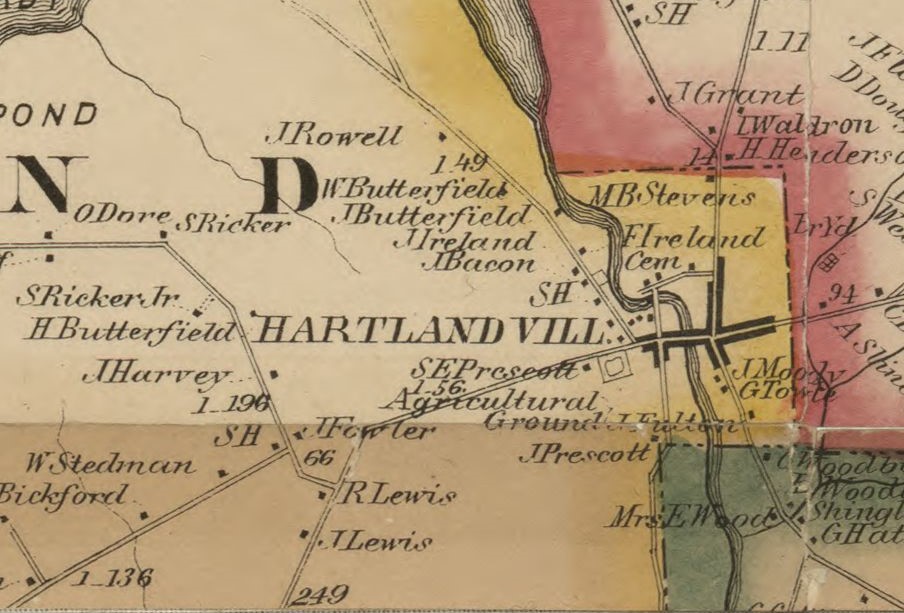
Hartland Village Town Lines – 1860 Somerset County Map
*
Living on Outer Commercial Street in 1860 were Matthew B. Stevens (1814-1883) and his wife Mary Jane Fowler (1815-1863) who are both interred at Ireland Cemetery . Noted living with them in the 1860 Census at their homestead seen above just before the St Albans Town Line were their 9 surviving children ranging from age 4 to 21 years old (including a set of 7 year old twins). Also living with them was a 10th child, 19 yr old Angeline (Stevens) Fuller and her newly wedded husband, 22 yr old Edward K. Fuller.
*
In the years following its consolidation as Hartland, growth in the village area continued with the addition of some new industries, businesses, merchants and residences, however Commercial Street, still known as North Street at the time, remained a mostly residential section.
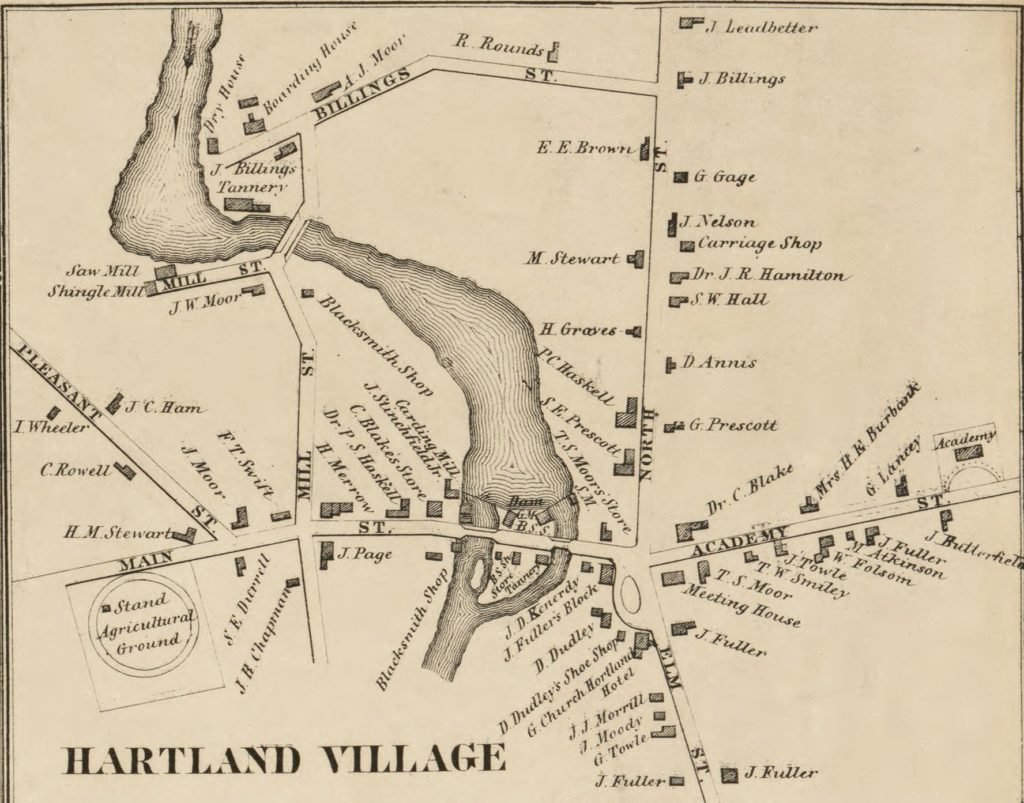
Hartland Village – 1860 Somerset County Map
*
Research continues on houses on Commercial Street shown on the 1860 Map but we have found some information for several of them below.
S.M.: The original sawmill location built by William Moor. The sawmill was razed around 1863 to make way for the new Linn Woolen Mill.
S. E. Prescott: Sewell E. Prescott served as a Town Selectman and Post Master in Hartland before moving to Skowhegan. He is a son of Sewell Prescott, Jr (1798-1837) who arrived in Hartland from Monmouth in the 1820s and likely built this house which was located near the original home built by William Moor. Prescott would build a store at Warren Square around 1827 which was later bought and operated as Fuller & Buck General Store. The house would later be owned by Archibald Linn as his residence, Edward K. Fuller, Elmer Burton and Reggie Knowles. It was razed in 1999 and is a parking lot today.
G. Prescott: Gorham Prescott (1801-1878) is a brother of Sewell Prescott, Jr. He likely moved to Hartland from Monmouth around the same time as his older brothers Sewell and Jason. He served as Post Master in Hartland in 1848 and moved to Bangor after 1870. The house originally had an attached barn and would later be owned by Archibald Linn, Ira Page, Lagorio Brothers, Claire Currie and Rae Fuller Randlett and still stands today.
P. C. Haskell: Peleg C. Haskell (1796-1873) moved to Hartland from New Gloucester in the early 1820s and likely built this house. Peleg was on the original Board of Directors at Hartland Academy in 1832 serving as Vice-President. He was Post Master in Hartland in 1845 and Town Coroner in 1856. Peleg’s younger sister, Louisa Haskell, married Dr. Calvin Blake. The house would later be owned by his son Plummer T. Haskell, Reverend Augustus T. Bowman and Ervin W. Martin and still stands today.
D. Annis: Dudley Annis, Sr (1796-1870) moved to Hartland soon after 1830. It is presumed this was his residence but still unconfirmed.
H. Graves: presumed as Henry S. Graves born in Canaan in 1807 and married Eliza Goodwin. They are noted with their children in the 1850 and 1860 Census in Hartland Village listed with many of the families noted on the 1860 map as neighbors. Their son Henry H. Graves died from disease in 1864 while serving in the Civil War at 22yrs old. Another son George Graves died at 2yrs old in 1850 and is interred at Ireland Cemetery. Their daughter Julia Graves would marry George L. Fuller.
S. W. Hall: (1827-1883) Sumner W. Hall was originally from Athens and married Mary Spaulding in 1851. They were living in Hartland as noted in the 1860 Census just before Mary’s death on December 30, 1860 at 34yrs old and interred at Ireland Cemetery. Sumner remarried the following year to Chloe Abbott and moved to Dover living there in 1863. He had become a physician by the time they moved soon after 1870 to Colorado living there in 1880. He was living in Chicago when he passed away.
Dr. J. R. Hamilton: (1830-1908) Dr. Jonathan R. Hamilton, a native of Cambridge, had moved to Hartland following his marriage to Roseanna Davis (1831-1906) of Wellington in 1851. They had already moved their family to Skowhegan by the time the 1860 Census was taken there in July. They moved west soon after where he continued his medical practice living first in Minnesota by 1870 then in South Dakota by 1900. They moved to Soquel, California soon after where they were living at the time of their deaths and are interred together at Soquel Cemetery.
J. Nelson: Joseph G. Nelson (1823-1863) was living in Hartland Village by 1850 with his wife Mary Jane Fernald. He was operating a carriage shop next to his house at the time of the 1860 Map and 1860 Census noted as a Wheelwright. On September 25, 1861, Mary Jane passed away at 35yrs old and was interred at Ireland Cemetery with an infant daughter. A year later, Joseph enlisted in Hartland with the 1st Maine Light Artillery, 6th Battery. He died in service of Typhoid Fever on November 24, 1863 at Lincoln Hospital, Washington D. C. where he is interred at Soldier’s National Cemetery.
E. E. Brown: Enoch Emery Brown (1806-1881) moved with his parents from his hometown of Taunton, Massachusetts to Hampden when he was a young boy. He graduated from Bowdoin Law School in 1827. He began practicing law in St Albans before moving to Hartland in the early 1840s where he continued his practice until moving to Olathe, Kansas about 1879 where he passed away soon after. He is interred at Olathe Memorial Cemetery with his wife Elizabeth Whitman and their oldest daughter Mary (Brown) Clarke. Brown also served on the Board of Trustees of Hartland Academy for several years.
J. Billings: Josiah Billings‘ primary residence was on the corner of the future North Street & Mill Street built when he arrived in Hartland in 1856 and built a Tannery at the Upper Dam on North Street. This house may have been used for lodging for some of his employees. Billings left town in 1867 for Iowa after selling his tannery.
J. Leadbetter: James Leadbetter remarried and moved to Skowhegan following his wife Harriet Hogdon’s death in 1875. She is interred at Ireland Cemetery with their 4 year old son Newell Monroe Leadbetter.
*
In 1863, Archibald Linn came to Hartland and built the Linn Woolen Mill on Main Street originally known as the Sebasticook Woolen Mill. The new mill induced numerous other businesses and merchants to emerge in the Village including a surge of stores built on Commercial Street soon after. Linn also built the mill’s main office on Commercial Street noted below as Building No. 6 which would become the future home of the Hartland Public Library.
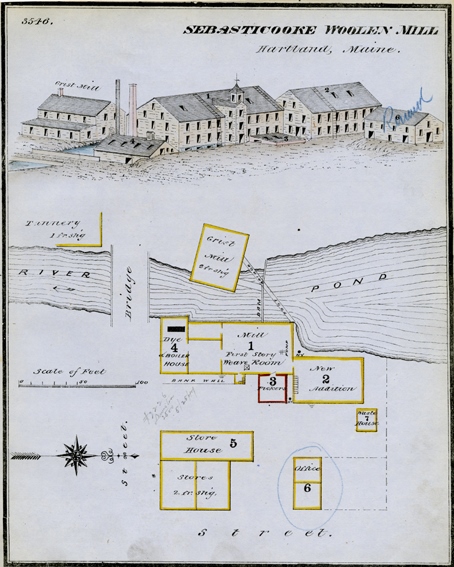
Original Linn Woolen Mill – 1874
(Photo courtesy of American Woolen Mill Museum, Ohio)
*
Technically, the façade of the future Drug Store Block faces Main Street however side entries for its front and rear sections have always emptied out onto Commercial Street so its details have been included on this page instead of Main Street.
The origins of the building operated as a store by Thomas S. Moor on the corner of Commercial Street & Main Street in 1860 are unknown nor is it known what his store sold for goods, however the future Drug Store Block would become a well known center piece of the area over the decades and remains as one of the few buildings from the era still standing today.
By the mid 1870s, the former Thomas S. Moor Block housed 2 separate businesses with Miss Ella F. Davies operating her “Millinery and Fancy Goods” business in the front section and Alden Sampson operating his apothecary business in the rear section. This had also become the new location of the Hartland Post Office where Sampson served as the Post Master for several years.
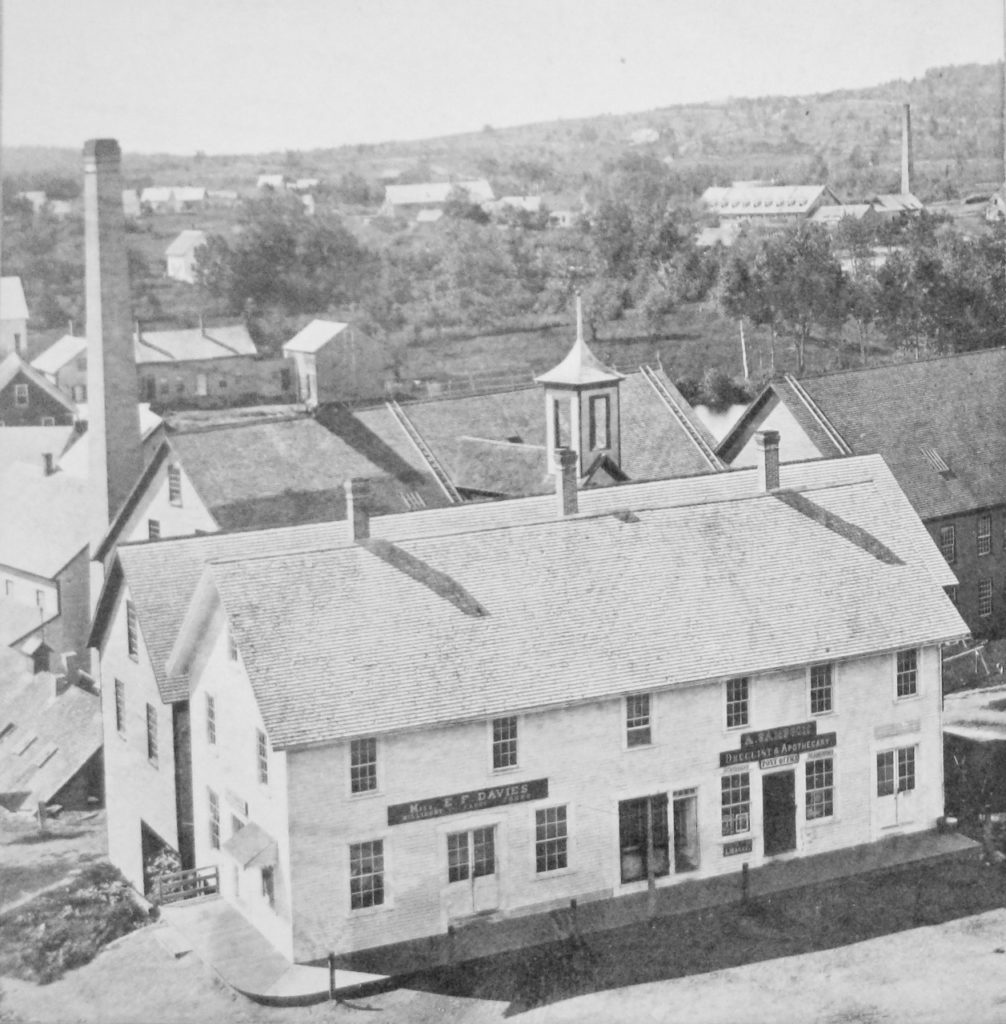
Drug Store Block – Corner of Main Street & Commercial Street – c1877
*
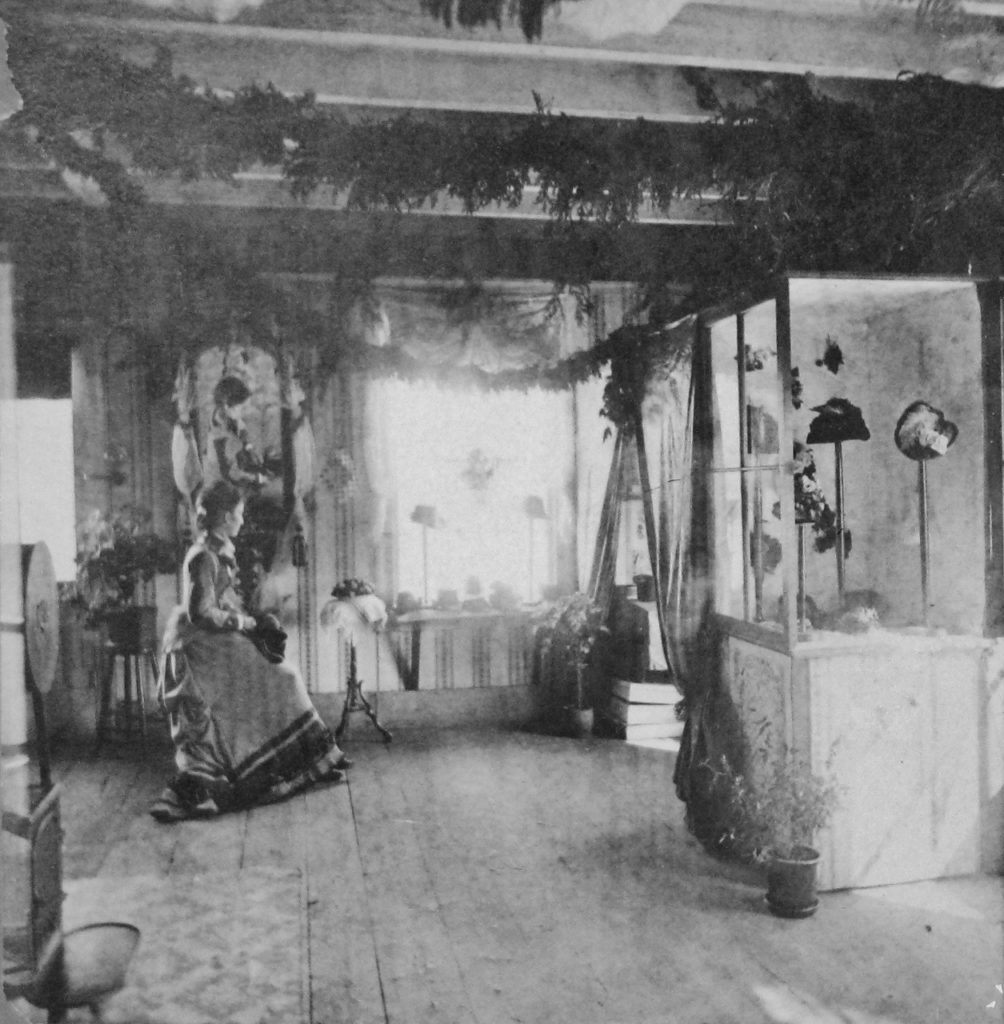
Interior of Miss Ella F. Davies Millinery & Fancy Goods Store – c1877
*
By the end of 1883, Alden Sampson had renovated his store and expanded his business throughout the entire block.
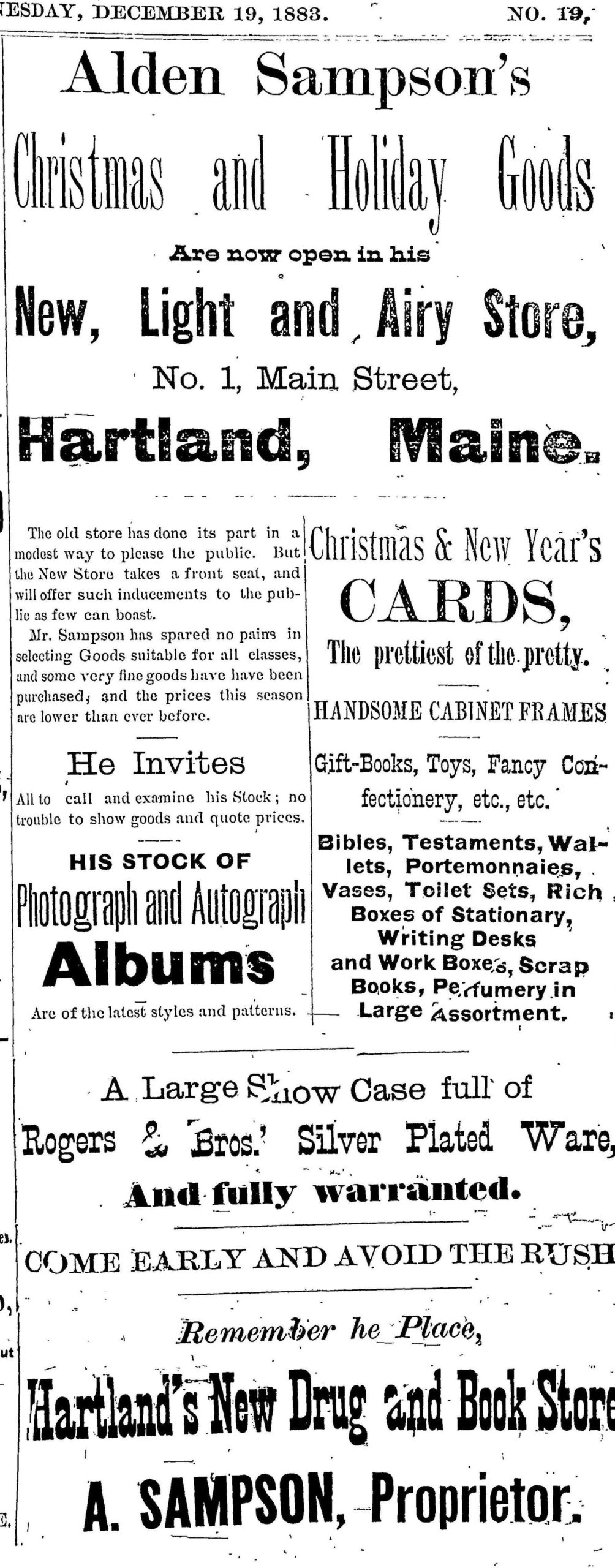
Ad for Alden Sampson’s Newly Renovated Store – December 19, 1883
*
Following his marriage in 1885 to Nellie G. Lancey , daughter of Samuel & Clarinda (Moor) Lancey, the couple soon moved to the newly formed town of Woonsocket, South Dakota along with her widowed mother where he set up his apothecary business and remained there until his death by 1909.
*
Archibald and his wife Grace (Wilson) Linn purchased the former Sewell E. Prescott house next to his new main office on Commercial Street after they moved to Hartland where they would remain until their respective deaths in 1884 and 1889. They were known for regular social gatherings of family, friends and employees at their home.
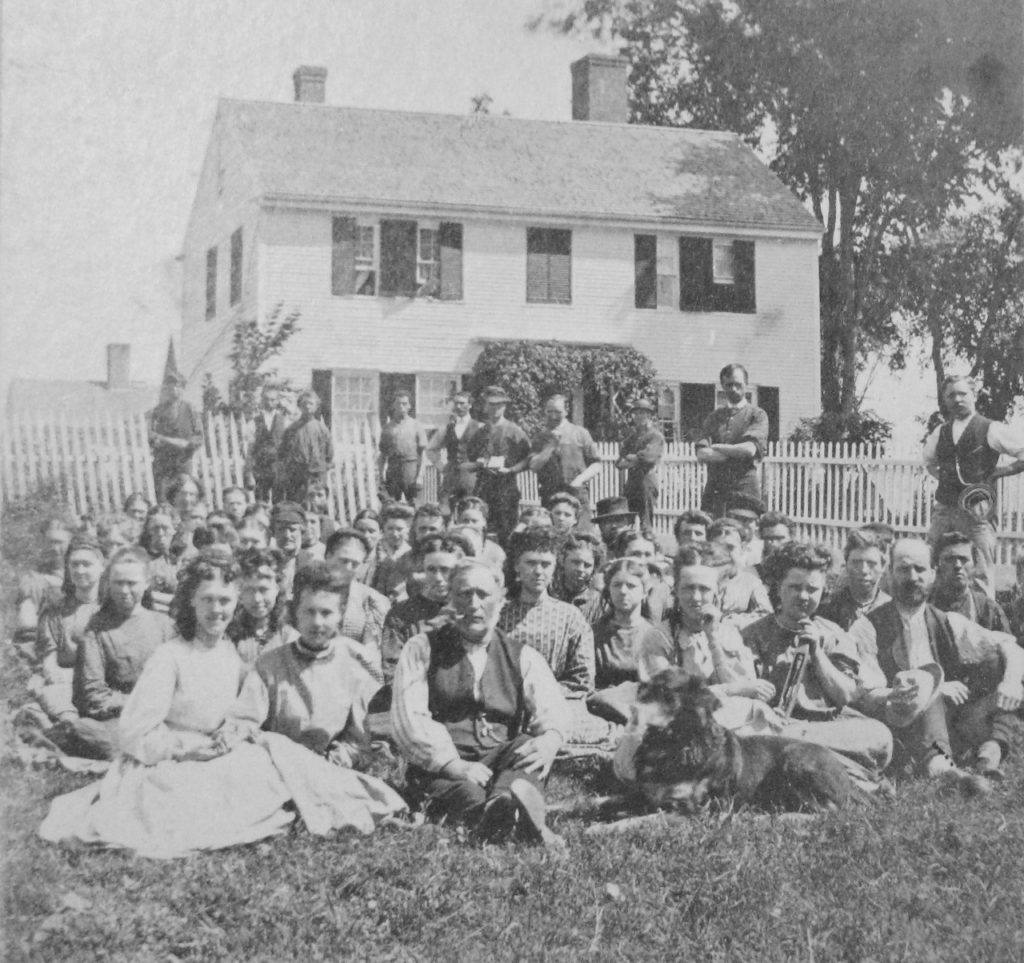
Archibald Linn (center) with Linn Woolen Mill Employees at his Commercial Street Residence – c1877
*
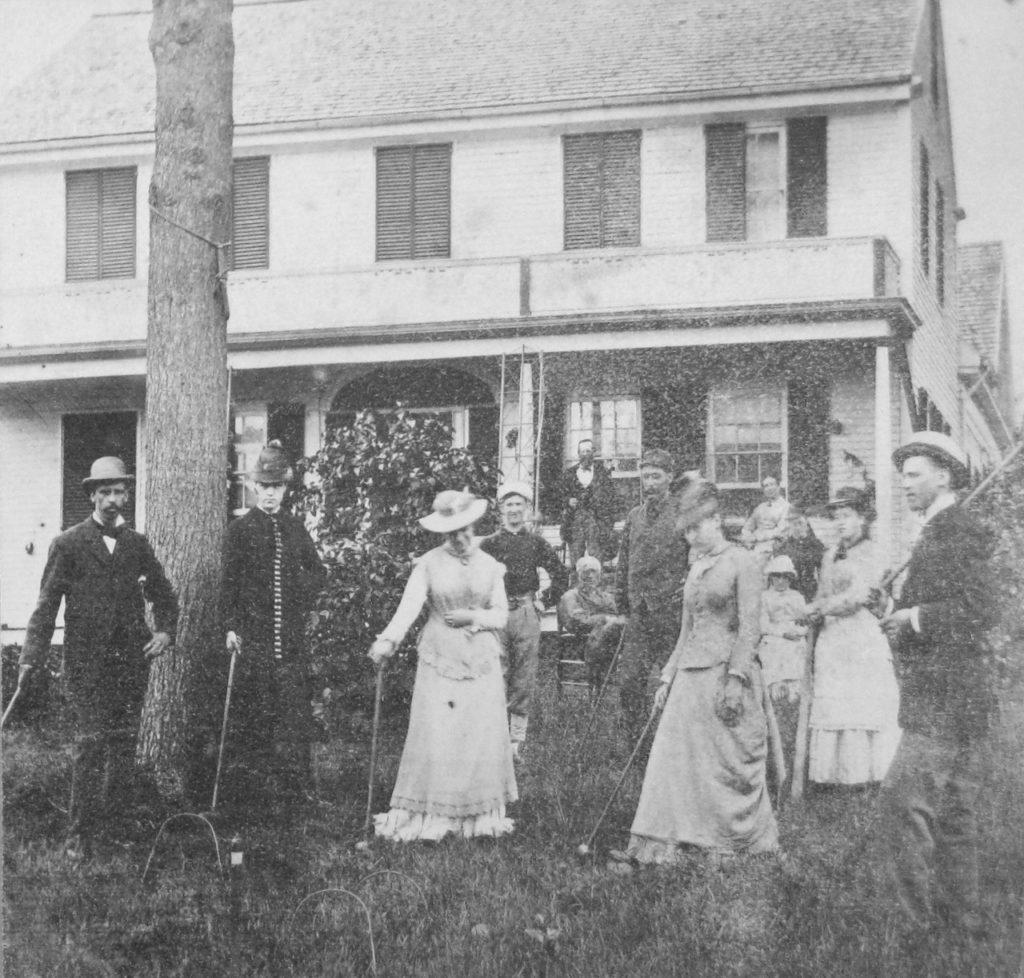
Family & Friends Gathering at the Linn Residence on Commercial Street
*
Following construction of the Linn Woolen Mill in 1863, several new stores and houses were built on Commercial Street along with the new Linn Woolen Mill Main Office. George Lancey, Jr was one of the first to build a dry goods store on Commercial Street (1st building on right).
George Lancey, Jr (1828-1885) is the grandson of Palmyra pioneer Samuel Lancey. George married Frances Blake, the daughter of Dr. Calvin Blake & Louisa (Haskell) and a sister of Peleg C. Haskell. George & Frances first lived on Academy Street at the future Hartland Academy Vocational Building which had been built by her father in the late 1820s. They moved into her father’s second house he built on Academy Street following Dr. Blake’s death in 1870.
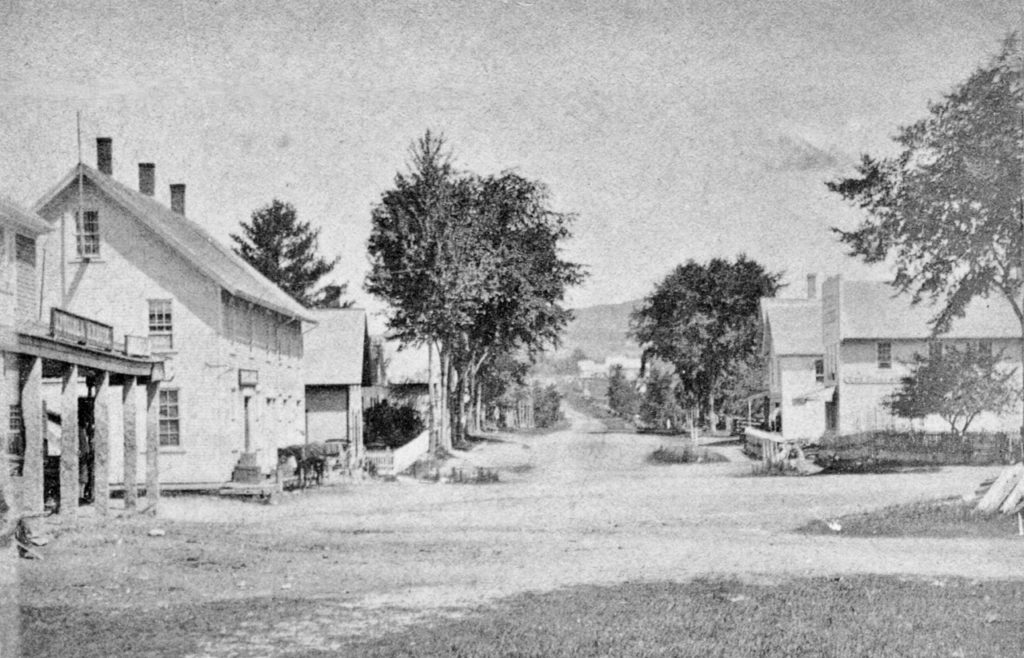
Commercial Street with Additional Buildings seen from Warren Square – c1875
*
On February 24, 1870, an act was passed by the Maine State Legislature to incorporate the Hartland Savings Bank with Archibald Linn serving as President. We currently have no details on its location nor how long it operated after being noted there in a financial report from 1876.

Hartland Savings Bank – August 19, 1876
*
By 1883, Commercial Street, then still known as North Street, had experienced significant business and residential growth as well as a new church as the Village transformed into the eventual industry, business, political and population center of Hartland.
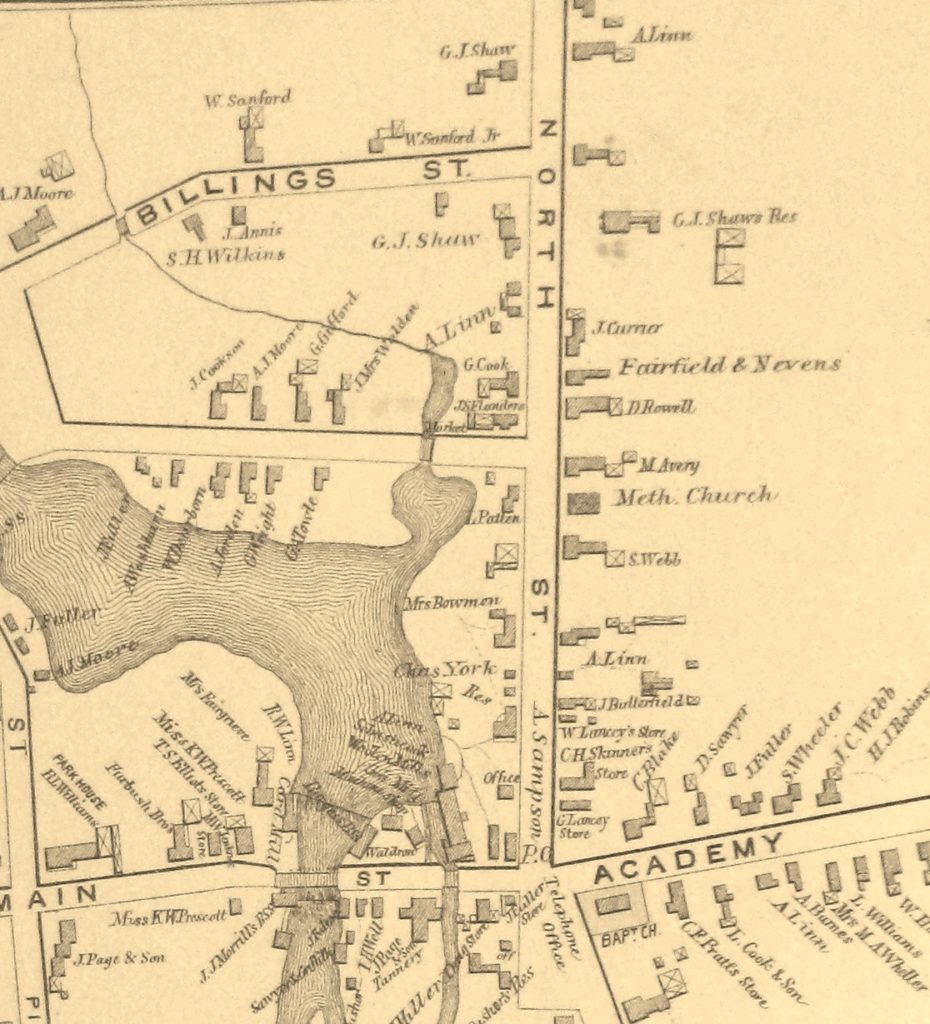
1883 Village Map
*
Soon after Alexander Graham Bell’s patent of the telephone in 1876, telephone companies began to appear throughout Maine where The Bell Telephone Company was the first to operate in Portland in 1878. Several consolidations would occur before The New England Telephone & Telegraph Company came into existence in 1883 as the primary provider in larger cities in Maine. Although they would eventually establish telephone connections in Hartland, several prominent businessmen in Hartland decided they weren’t going to wait for “Ma Bell” to reach out to the smaller communities to fulfill their immediate communication needs.
In May of 1882, a Pittsfield Advertiser article noted, “Hartland is soon to be connected by telephone with the telegraph in Pittsfield. The town has long felt a need for other means of communication than the mail.” It went on to note an (unnamed) association had been formed with capitol for the project sold in shares of $10 each. Officers for the association were listed as President, Greenville J. Shaw; Vice-President, Amasa J. Moor; Secretary, James O. Bradbury; Treasurer, Albert W. Miller. Board of Directors; Greenville J. Shaw, Amasa J. Moor, James O. Bradbury, Llewellyn Parks II, L. Lancaster, Archibald Linn & Dr. Harris H. Pushor.
The new telephone association’s project was completed by 1883 with their office located at the Drug Store Block, then operated by Alden Sampson, as seen on the map above. The office is also seen in the edited photo below taken around 1886 of the Warren Square area revealing an unnamed “Telephone Office” sign located at the Drug Store Block, then owned by Albert W. Miller, and what appears to be a telephone switcher box connected underground to a telephone pole in the center of Warren Square.
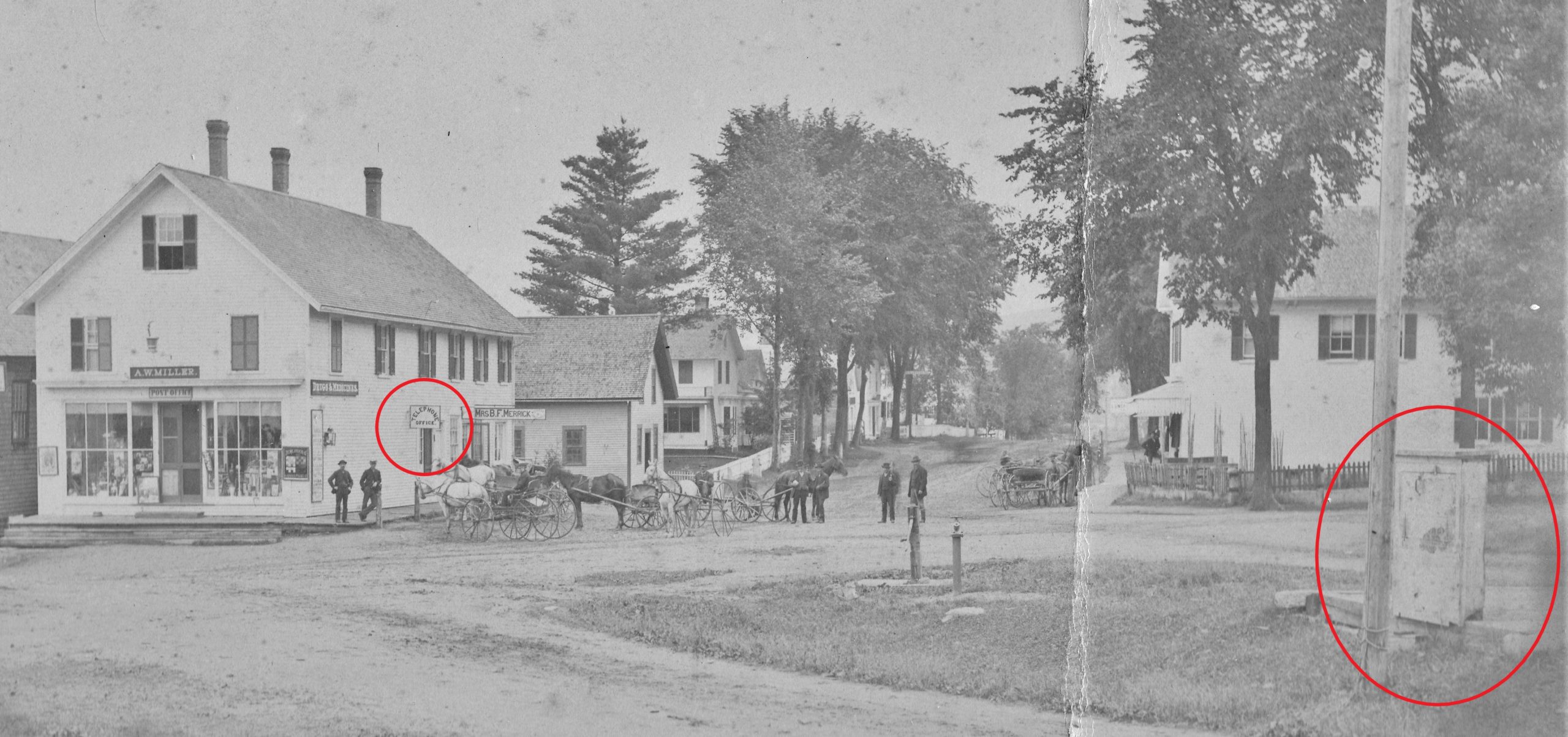
Commercial Street from Warren Square with Telephone Office & Telephone Switch – c1886
*
The new telephone lines appear to have originally run along Pittsfield Avenue following the Lancey Stage Coach route from Pittsfield as noted in a November 4, 1886 newspaper article written after the opening of the new Sebasticook & Moosehead Railroad, “The ends of the Hartland telephone lines will be swung around to the railroad stations at this place (Pittsfield) and Hartland and telegraphic instruments attached to the wire.” By June of 1888, new poles had been installed along the railroad line route as part of a new dedicated railroad telegraph system. Other articles written at the time also noted Greenville J. Shaw as “President of the phone company in Hartland” confirming the Hartland Telephone Association existed at least into the late 1880s. Dates and details of the association’s eventual demise have yet to be uncovered but The New England Telephone & Telegraph Company eventually established a connection to the former Hartland system by 1900.
*
Greenville Jefferson Shaw (1843-1903) was born in Cummington, Massachusetts and came to Dexter with his father Charles Colson Shaw when he was 8 years old where he was raised. In 1867, he and his father purchased the Josiah Billings Tannery at the Upper Dam on North Street where they began operating Shaw & Son Tannery as well as purchasing and operating tanneries in Burnham, Detroit & Plymouth under the same name. Greenville and his family had moved to Burnham at the time then to Detroit by 1870 and remained there until they closed the latter 3 tanneries in 1878 due to a bark shortage which was then a key component of the tanning process.
While living in Detroit, Greenville got his start breeding trotters around 1876 when he began operating Trout Brook Stables located next to Brackett Brook across the road from his tannery. He raced several of his trotters at local tracks including the East Somerset Agricultural Fairgrounds in Hartland but most of his trotting stock at the time was raised for Boston & New York markets. It was here Shaw purchased one of his most notable prize stallions ‘General Withers’ from Kentucky in 1876. ~ Compiled from the article “Cream Brook Farm” by Clark P. Thompson – 2007
In late 1880, he built Maple Place Farms, so called by Shaw, on an 8 acre lot on Commercial Street, then known as North Street, and moved with his wife Jennie Maria Luce and their 4 surviving children to Hartland where he operated his remaining tannery and continued purchasing, raising and breeding thoroughbred trotters. That same year, he also purchased a 640 acre farm in Stetson which he renamed as Cream Brook Farm where he also raised horses as well as premium cattle while living at his new Hartland residence, now commonly known as the Century House.
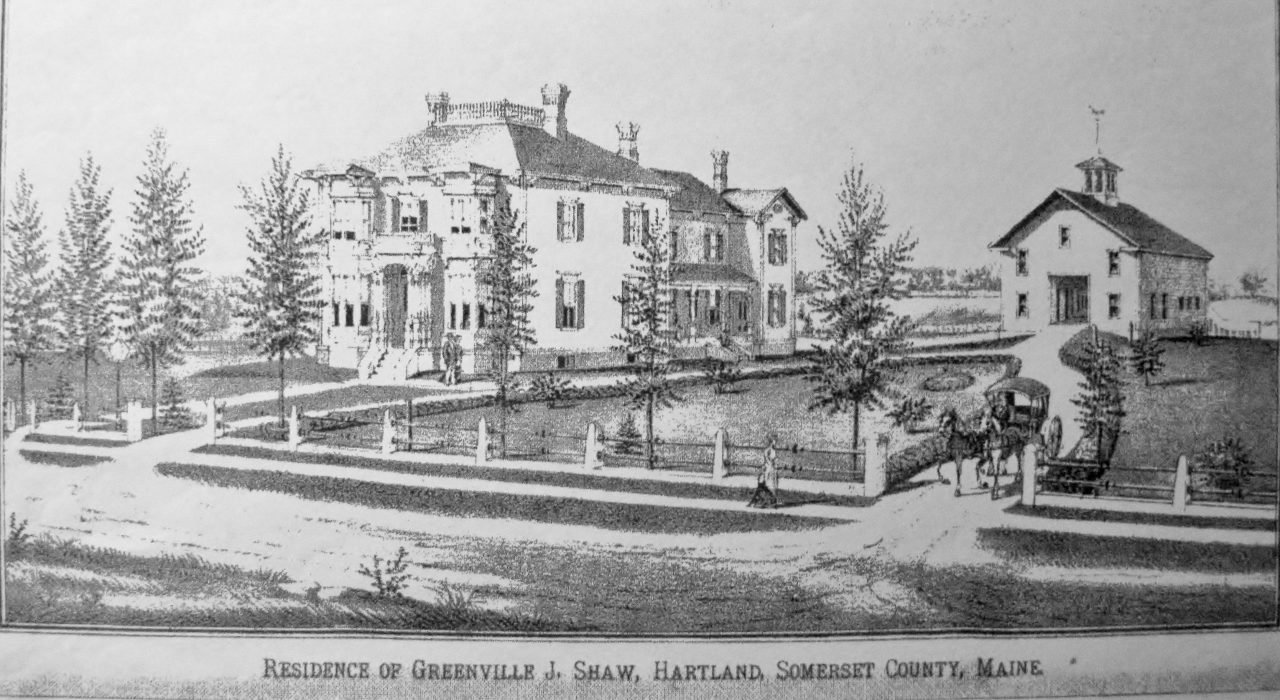
Maple Place Farm – Commercial Street – c1882
*
In March of 1886, Shaw held a large gathering of some 50 friends, patrons and reporters in Stetson to give notice of his pending retirement operating Cream Brook Farm in part due to his other business interests. He announced he was putting his entire stock of horses, cattle and the farm up for sale with the exception of ‘General Withers’ whom he brought back to Maple Lane Farm where he later built a pair of larger stables and continued his breeding operations for several more years. Cream Brook Farm was eventually purchased in 1889 by Alphonso S. Rand. ~ Compiled from a Pittsfield Advertiser article and an article “Cream Brook Farm” by Clark P. Thompson – 2007
Among Shaw’s several notable stallions he purchased and bred were ‘General Withers’ & ‘Gideon’, the latter being the father of ‘Gretchen’ who was sired by ‘Young Rolfe’ by Mr. C. Horace Nelson and foaled the legendary ‘Nelson’ born at Nelson’s Sunny Side Farm in Waterville in 1881 and considered by many to be the greatest race horse of his era. ~ Compiled from Lost Trotting Parks of Maine
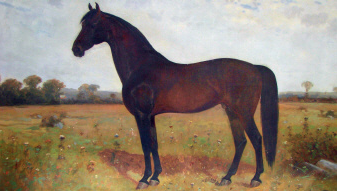
‘General Withers’
(Painted by Scott Leighton)
*
Shaw eventually owned several real estate holdings in Hartland and by 1883 had also purchased the 90 acre former Ireland Farm which extended along the southern side of Pleasant Street to the Canaan Road where a Right-of-Way was granted by 1886 for the new Sebasticook & Moosehead Railroad line’s plan to continue to Harmony. A large portion of the property would later be purchased by H. C. Baxter & Brother Canning Company as the location for their new canning facility opening in 1913.
The ongoing bark shortage remained a constant issue for Shaw’s tannery operations for several years and in 1884 he announced plans in the Pittsfield Advertiser to close his tannery at the end of the year. However, he was able to remain in business a few more years until the Great Flood of 1887 caused major damage to numerous Hartland industries along the Sebasticook River including extensive damage to his tannery as noted by the Pittsfield Advertiser, “The Boat House at the Upper Dam and a wing dam connecting to the end of Shaw’s Tannery were carried away.” The heavy damage incurred from the flood was likely the final blow in the tannery’s eventual demise as Shaw ceased operations and left the tanning business soon after to focus on his trotter breeding operations at Maple Place Farm and other business ventures.
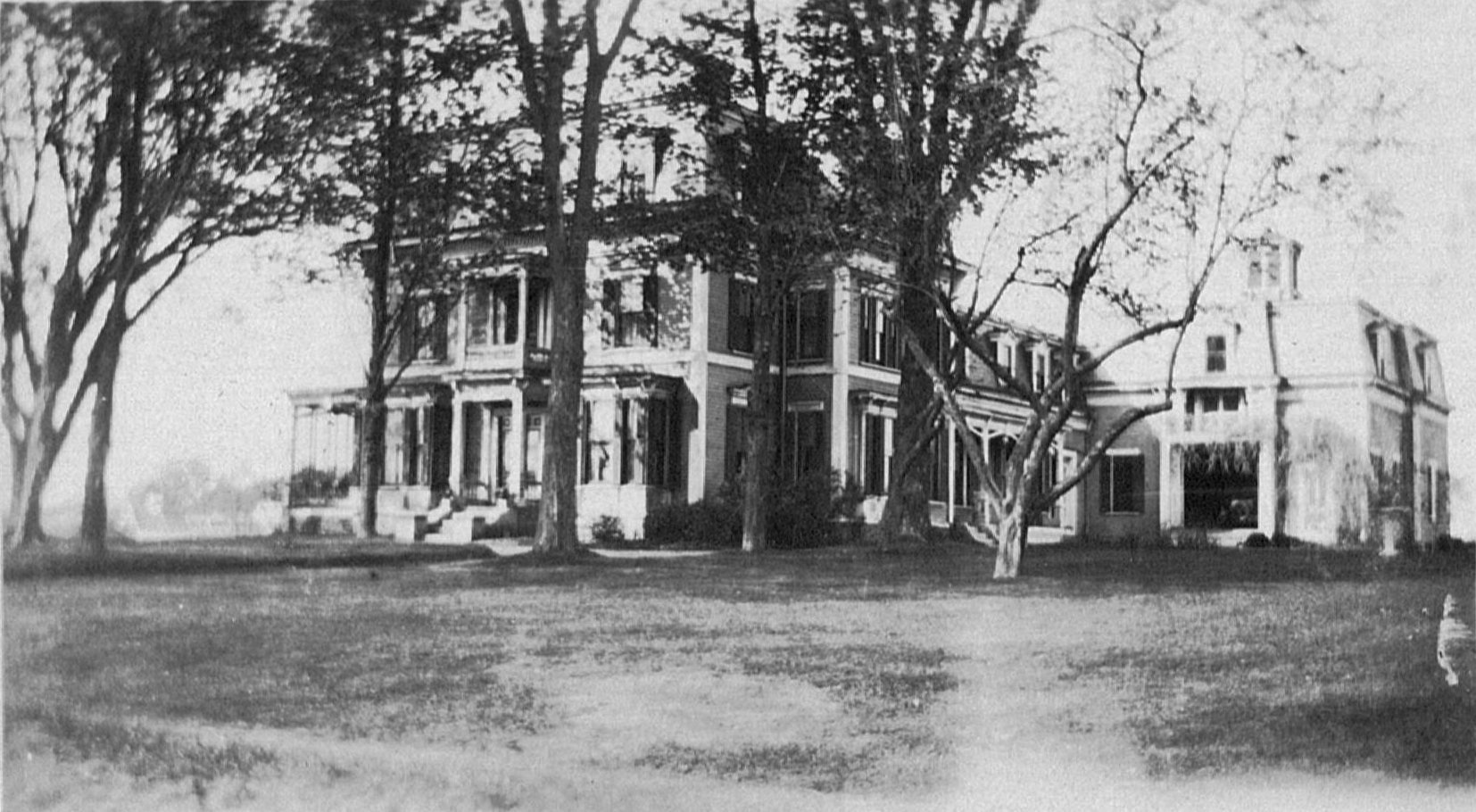
Maple Lane Farm
*
Greenville Shaw was very active in town affairs while he lived in Hartland including his role as President of the Hartland Telephone Association formed in 1882 and along with Archibald Linn was a leading advocate to bring the Sebasticook & Moosehead Railroad to Hartland in 1886. He served as a Town Selectman in 1887 & 1892 and was a member of the Hartland School Committee. He also served a leading role in creating the Hartland Town Hall Association in 1891 which would pave the way for a new dedicated Town Hall to be built in 1892 on Academy Street. He was an Executor of Archibald Linn’s Will upon his death in 1889 and oversaw some of the newly formed Linn Manufacturing Company’s woolen mill operations by Linn’s heirs. Shaw was also a long standing member of the Masons and Odd Fellows.
Shaw remained in Hartland into the late 1890s and later had business interests in a Salmon Farm on Sears Island off Searsport which he operated for a short time before moving to Bath in 1900 where he owned an insurance company at the time of his death in 1903. Greenville and his wife Jennie (1845-1919) are interred together at Mt Pleasant Cemetery in Dexter. Their son Frank Irving Shaw married Cora Adele Webb, daughter of Nathan Webb & Almeda Moor; she the daughter of James Moor.
*
John S. Flanders lived at the corner of Commercial Street & Water Street where he operated a market in the attached barn in the 1880s.
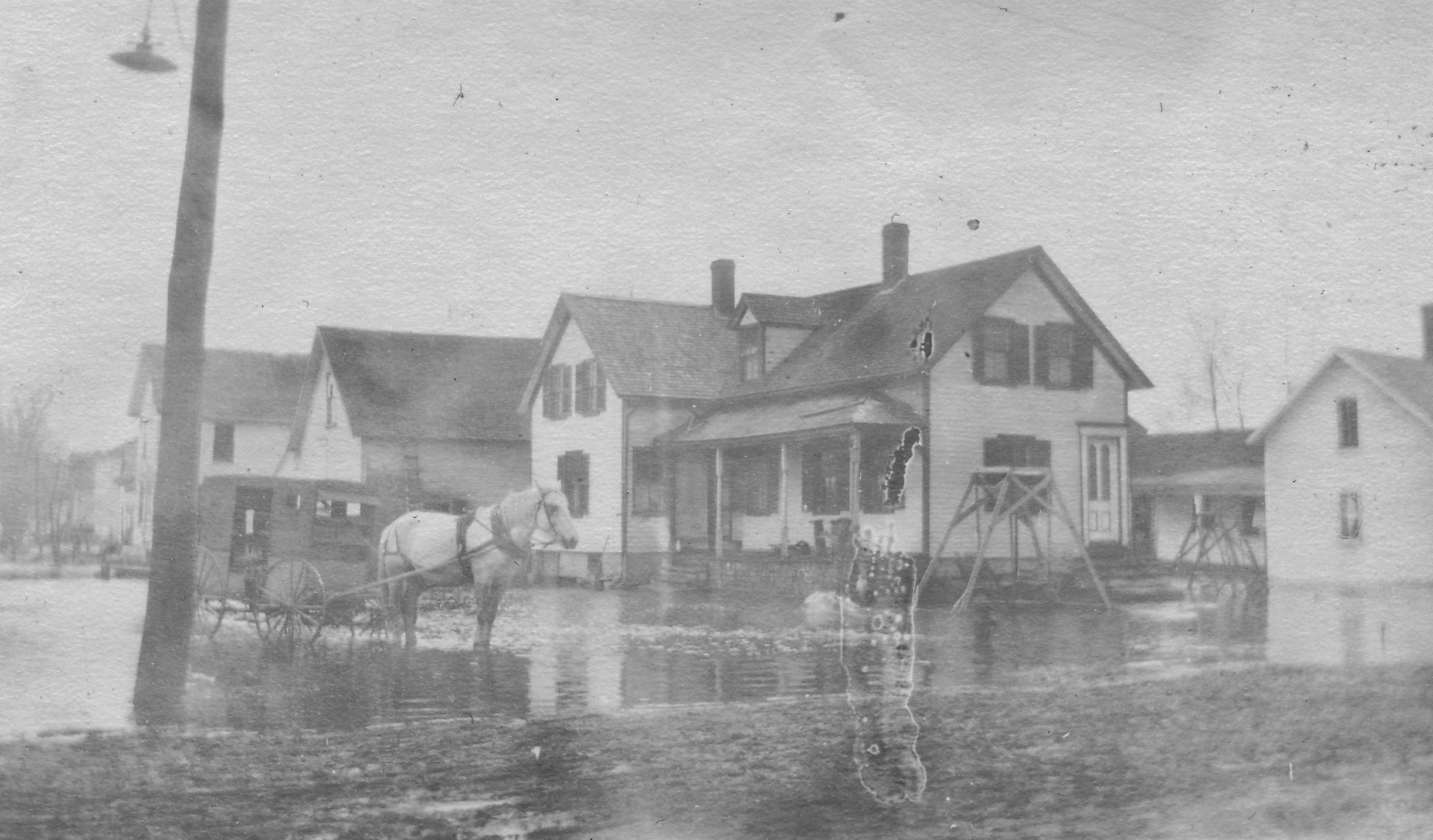
Former John S. Flanders Residence & Market as seen in 1923
*
Andrew Hanson Buck (1841-1932) moved to Hartland from Fairfield about 1865 with his newly wedded wife Lucy Maria Burden. He first operated his tin & stove business at the Fuller-Buck General Store with James Fuller, Jr at Warren Square until it burnt in 1878. Buck opened his own store on the lower side of the Sebasticook River Island until the building was heavily damaged during the Great Flood of 1887.
He then opened a new shop on Commercial Street operating as “A. H. Buck Stove & Tin Shop” until he sold the building to J. M. Higgins. Following Lucy’s death in 1920, he moved to Ripley to live with the oldest of their 2 sons, Arthur C. Buck, until his death. Their youngest son, Frank Clifton Buck, married Nina Webb in 1891, the daughter of Nathan Webb & Almeda (Moor). After divorcing in 1903, Frank remarried and moved to Auburn where he worked as a Tinsmith.
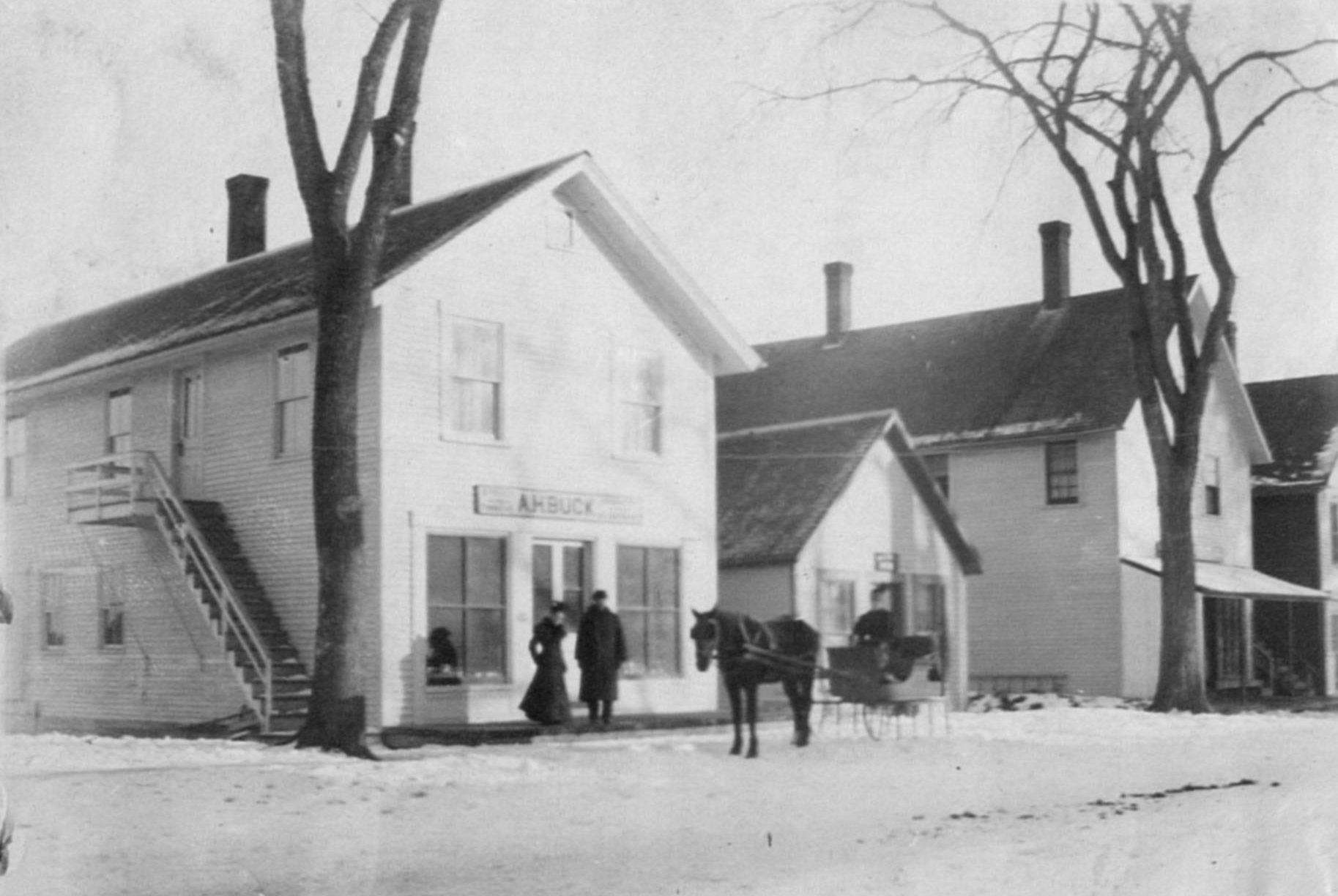
A. H. Buck Stove & Tin Shop – Commercial Street
*
Andrew Buck was known for carrying an extensive line of fine porcelain products at his store with many of them featuring local landmarks.
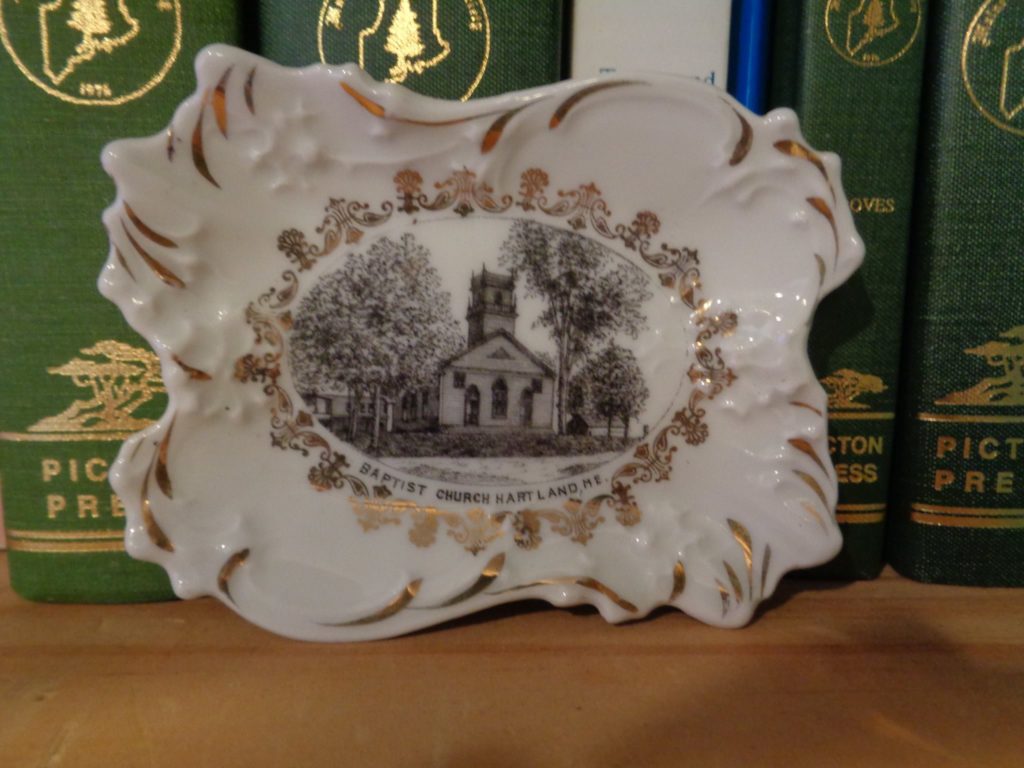
Baptist Church Dish
(Photo courtesy of Ann Foss)
*

Opera House/Town Hall Dishes
(Donated by the Estate of Mary Anderson Butterfield)
*

Hartland Academy Teacup & Saucer
(Donated by the Estate of Mary Anderson Butterfield)
*
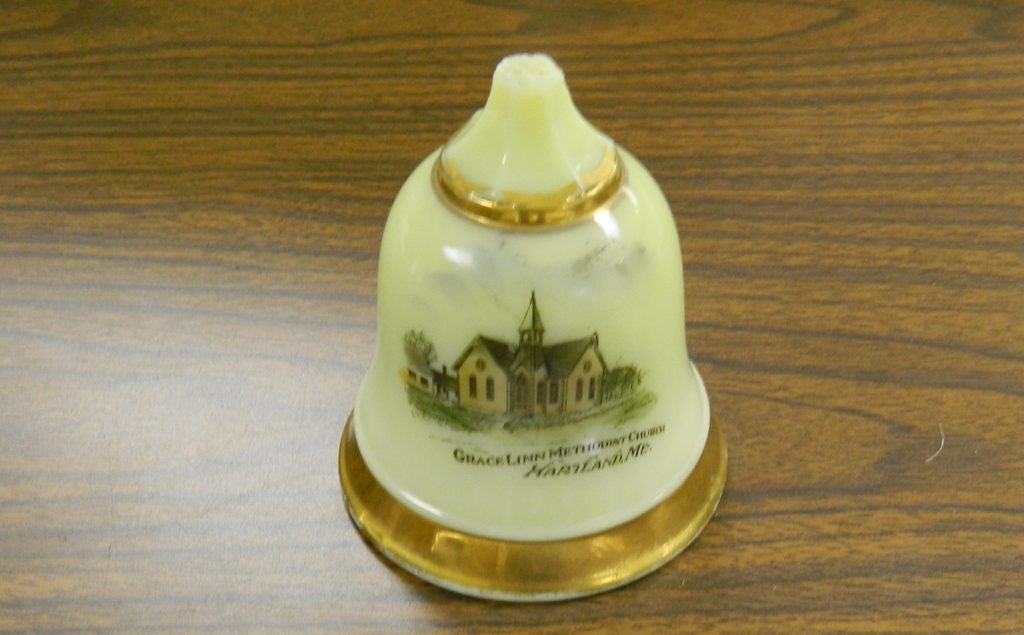
Methodist Church Bell
(Donated by Meredith Knowles Randlett)
*
Following the death of his son Plummer T. Haskell in 1876, the former Peleg C. Haskell residence was purchased by Reverend Augustus Thomas Bowman (1823-1880) and his wife Rhoda Lowe (1826-1905). The Bowmans had arrived in Hartland with their children from Somerset Mills (Fairfield/Waterville) around 1865 where he became the first Pastor of the Free Baptists who formally organized in Hartland on February 25, 1868. Following the death of their oldest daughter Fanny (Bowman) Merrow in 1872 at 25yrs old, they took in their granddaughters Idell & Iola Merrow to live with them. Augustus and Rhoda are interred at Ireland Cemetery with 3 of their 10 children.
Reverend Bowman also operated a Dry Goods & Grocery Store at the building next door as early as 1870 until his death in 1880. In 1881, Mrs. Ira Page opened her 1st millinery store at the location before moving across the street around 1883. Charles York then operated his tailoring store there until around 1888 when Willard D. Burton opened a barber shop in the building while Mrs. Rhoda Bowman remained at the house raising her 2 granddaughters.
*
Reverend Augustus T. Bowman was known for performing Baptisms behind his residence at the Mill Pond Lagoon off Water Street.
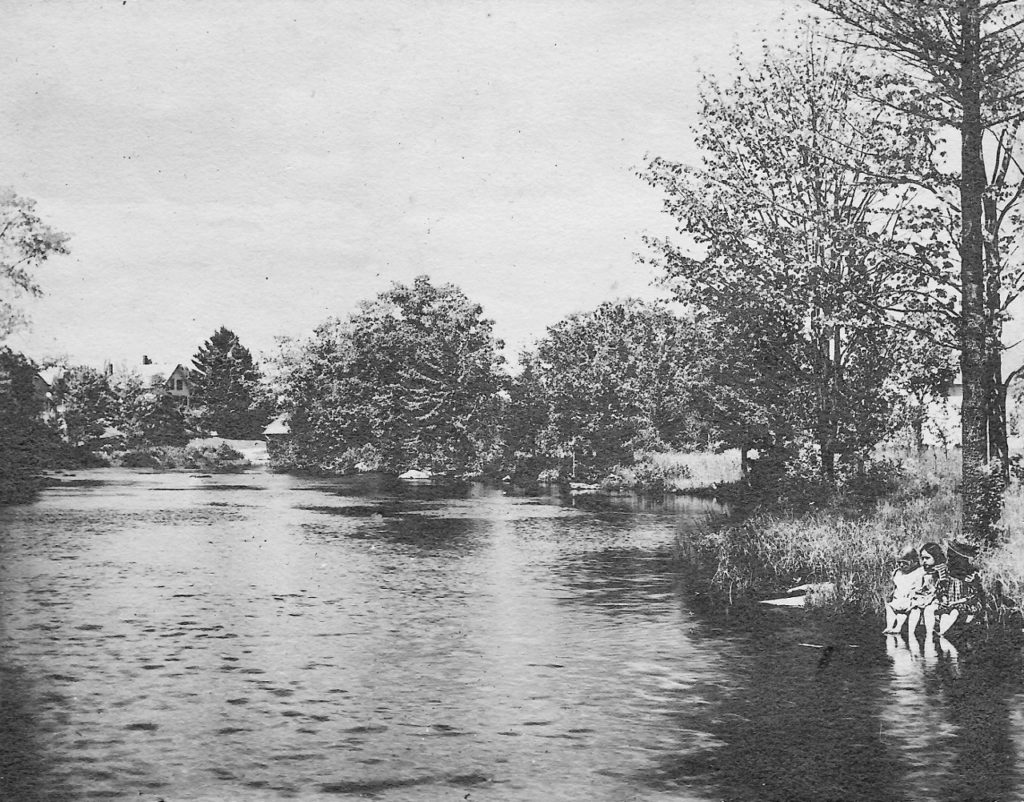
Gertrude Anderson, Crystal Bowman & Freda Bowman at Mill Pond Lagoon behind Commercial Street – c1900
(Courtesy of Maggie Smith)
*
In early 1883, work began on a new dedicated church for the Methodists on Commercial Street led by the efforts and financial support of Mrs. Grace (Wilson) Linn, wife of Archibald Linn. It cost $2,800 and was built by Amasa J. Moor of Hartland and opened in December of 1883.
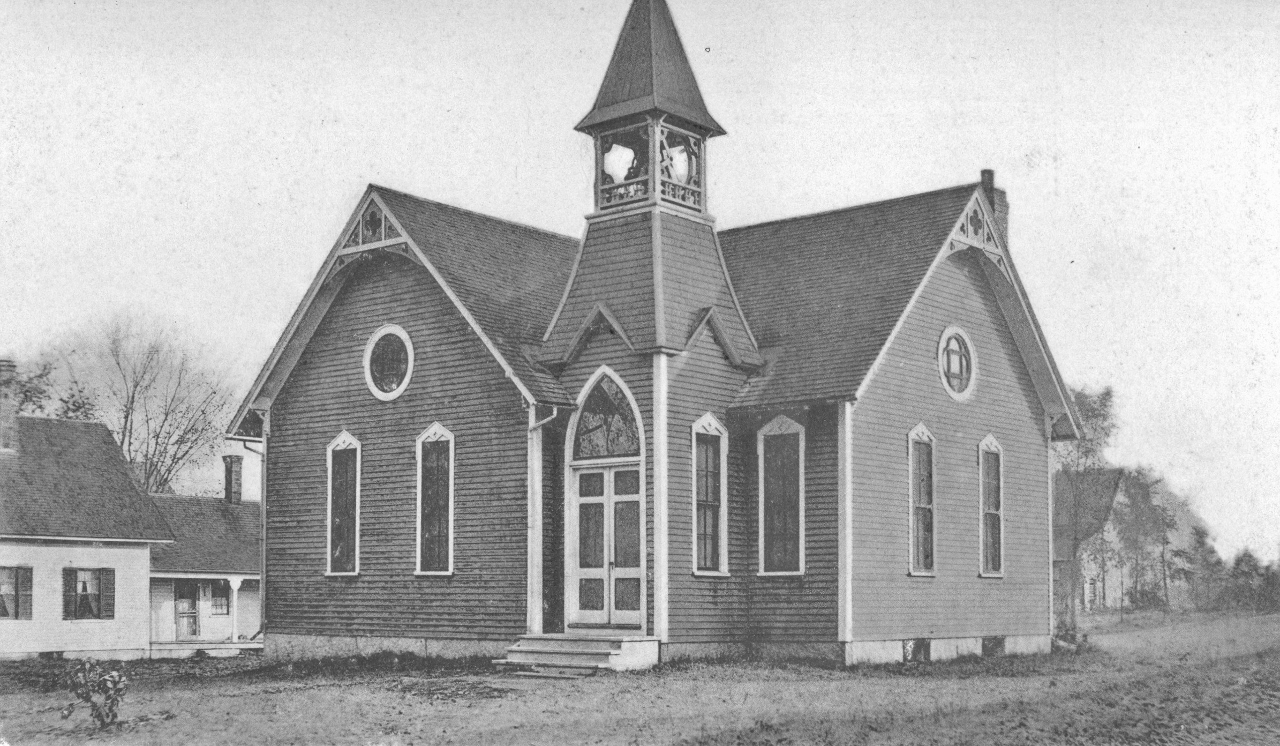
Grace Linn Memorial Methodist Episcopal Church
*
Mrs. Linn unfortunately passed away on January 26, 1884. Her funeral was the first Memorial Service held in the new church she worked so diligently to have built.
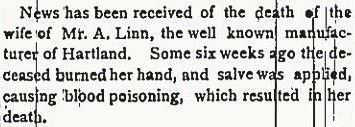
Grace Linn Death Notice – Piscataquis Observer – February 7, 1884
*
On March 26, 1884, the church was officially dedicated in her memory as the Grace Linn Memorial Methodist Episcopal Church.
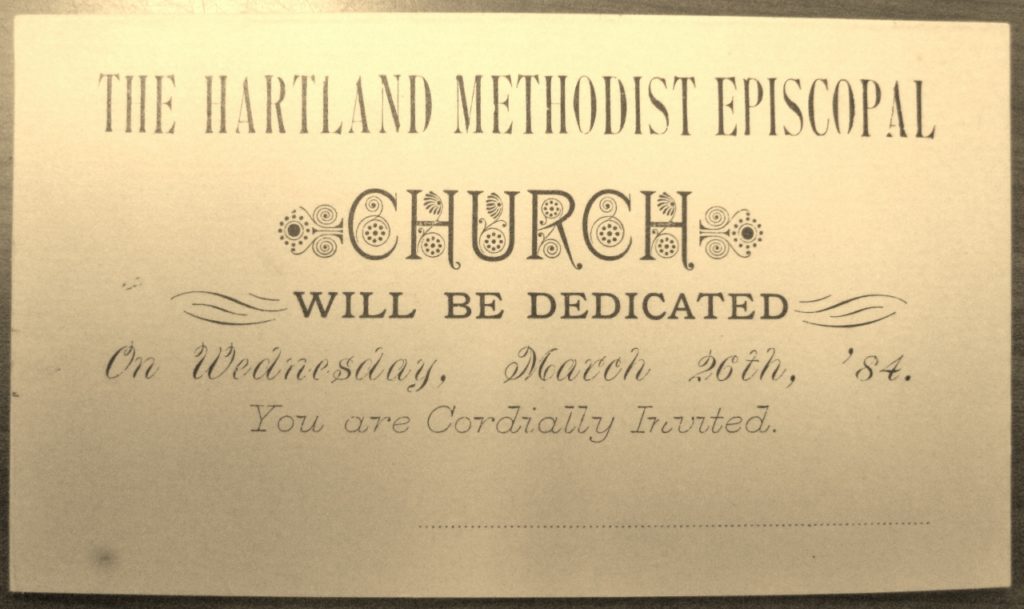
Original 1884 Invitation to Albion K. Libby
(Photo courtesy of Wayne Libby)
*
By 1876, George Lancey, Jr had built another building for a new dry goods store next door to his original store near the corner of Commercial Street & Academy Street which he operated up until his death in 1885.

George Lancey, Jr’s New Store near corner of Commercial & Academy Streets
*
After he built his new store, George Lancey, Jr sold his original store block and lot on Commercial Street to E.N. Haskell & L. C. Young who in turn sold it to St Albans native Charles Henry Skinner on January 5, 1877. Skinner began operating at the location as “C. H. Skinner Dry Goods & Groceries”. In spring of 1891, Skinner sold the store and soon after left with his family to go west eventually settling in Everett, Washington where he opened a store in the upstart railroad town and started a new life. Skinner unfortunately died soon after in 1894 and was buried there. His family remained in the Everett area.
“Mr. Charles H. Skinner and his family have left for the West where they expect to make their future home. Mr. Skinner has lived among us for a number of years and by his capacity for business and fair dealing had succeeded in building up a large and lucrative trade. He has been successful in some western land speculation and decides to go there, where a dollar can be turned over a little oftener than here in staid old Maine.”
“Mrs. Skinner has always been a prominent member of the Methodist Church, which meets with a sad loss in her removal. The whole family have a host of friends behind them who remember them kindly, and wish them joy and prosperity in their new home. They will make a short stay at Old Orchard then go to Boston, where they will start for Seattle, Washington.” ~ Pittsfield Advertiser – August 13, 1891
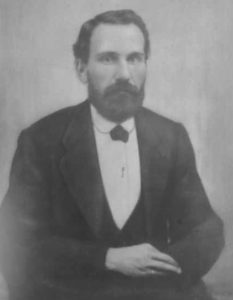

Charles Henry Skinner (1838-1894) and his gravestone in Everett, Washington
*
The house on the corner of Commercial & Water Street was occupied by Henry S. Graves on the 1860 Map then L. Patten by 1883. Soon after, William Anderson (1851-1917) and his wife Alice Jean Nicol (1853-1925) moved there from Guilford with their 2 oldest children. Both Scottish natives, William had first come alone to Guilford in 1880 taking work at the local woolen mill. In 1881, he was joined by Alice and their infant son Thomas and a year later a daughter Margaret was born to them. In 1883, William took a job as a Carder at the Linn Woolen Mill and moved the family to Hartland where the 4 youngest of their children William, Jean, Mary and Gertrude were born and raised. William remained at the woolen mill following the takeover by the American Woolen Company and was still employed as Carder Foreman at the time of his death.
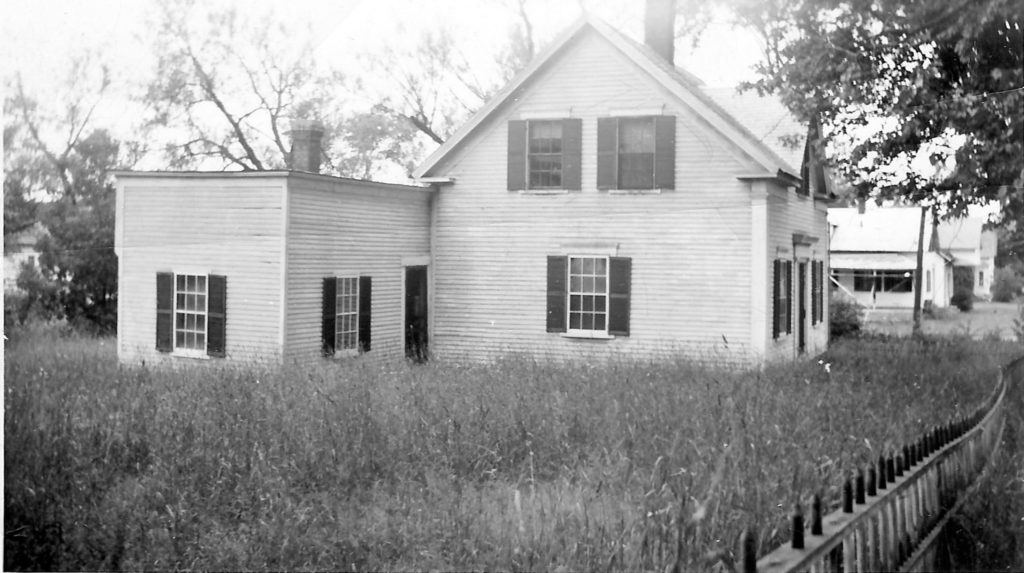
Former Graves-Patten-Anderson Residence before renovations – c1930
(Courtesy of Maggie Smith)
*
Margaret E. Nicol was a sister of Alice (Nicol) Anderson and came from Glasgow, Scotland to Hartland where she lived with the Andersons for a time. During her stay in Hartland, she offered her services as a mid-wife as seen in this 1886 advertisement in the Pittsfield Advertiser.
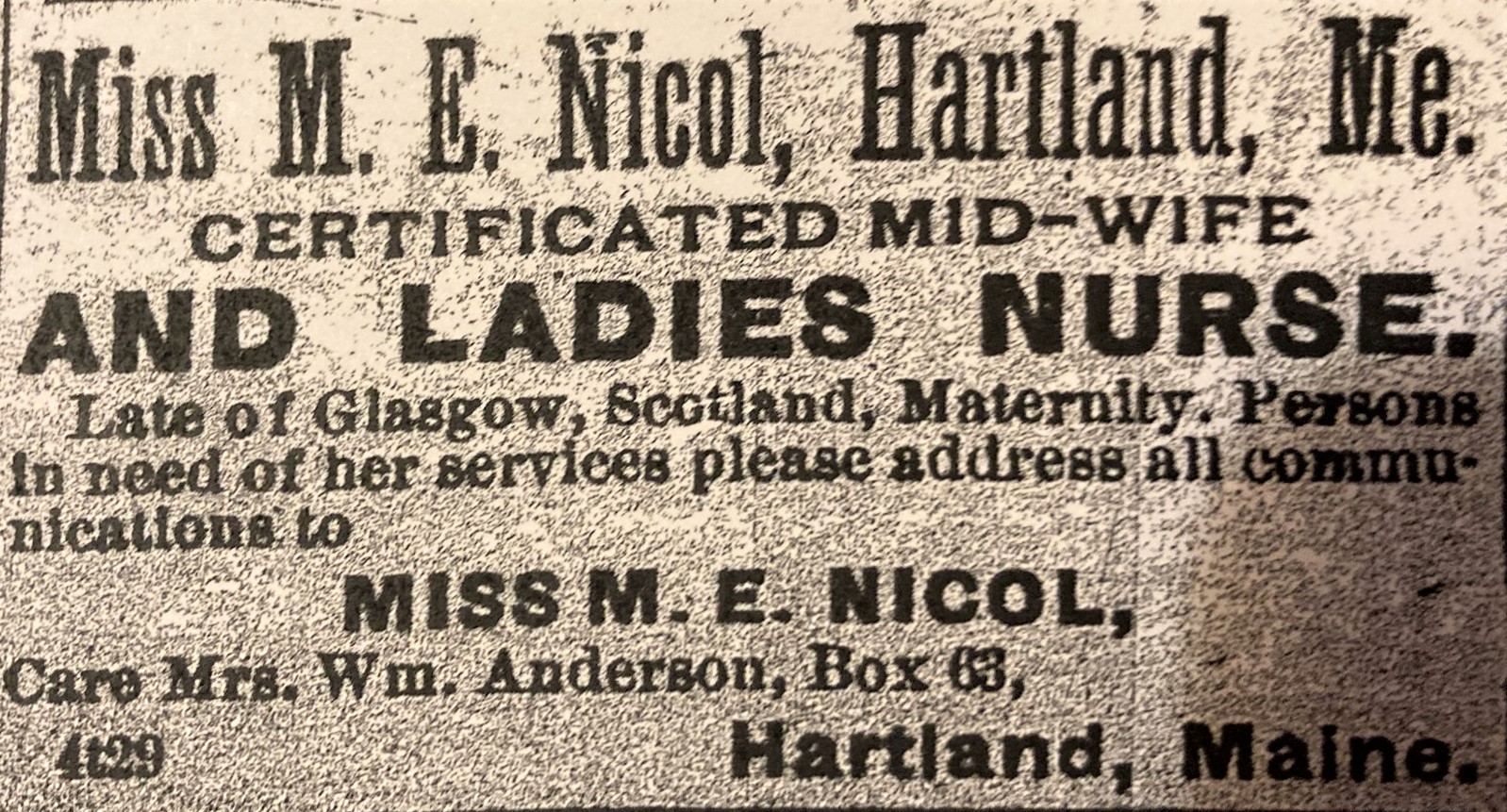
Pittsfield Advertiser – November 4, 1886
(Courtesy of Maggie Smith)
*
The former Gorham Prescott residence was purchased by Archibald Linn probably soon after Prescott moved to Bangor around 1861. It is unclear exactly what purpose Linn used the buildings for as his residence was across the street but he added an additional barn and other out buildings. Linn also purchased several others buildings on Commercial Street by 1883 including the former Leadbetter Homestead on Outer Commercial Street.
*
Other stores operating on Commercial Street in 1883 included George Lancey Jr’s brother, William Lancey (1834-1900) who operated a men’s clothing store as early as 1870 into the late 1880s when he sold the store to E. S. Locke who operated a full line clothing store with his wife into the late 1890s.
John Butterfield, Jr (1823-1898) operated a confectioneries store from the mid-1870s into the mid-1880s before Delia Hardy and her sister Jennie Hardy began their confectioneries & groceries business in the building. By the early 1890s, Freeman Daniels had opened his jewelry store business at the location.
Origins of the 2 buildings between the former Peleg C. Haskell residence (noted as Mrs. Bowman’s residence) and Archibald Linn’s residence are currently unknown but neither appear on the Map of 1860.

1883 Village Map
*
Following Alden Sampson’s departure to South Dakota around 1885, Albert W. Miller purchased the Drug Store Block moving his business from across the street on Main Street which he had opened in the mid-1870s. The Post Office was also relocated to Miller’s front section of the building. Miller remained at this location before eventually moving back to his original Main Street location in 1902.
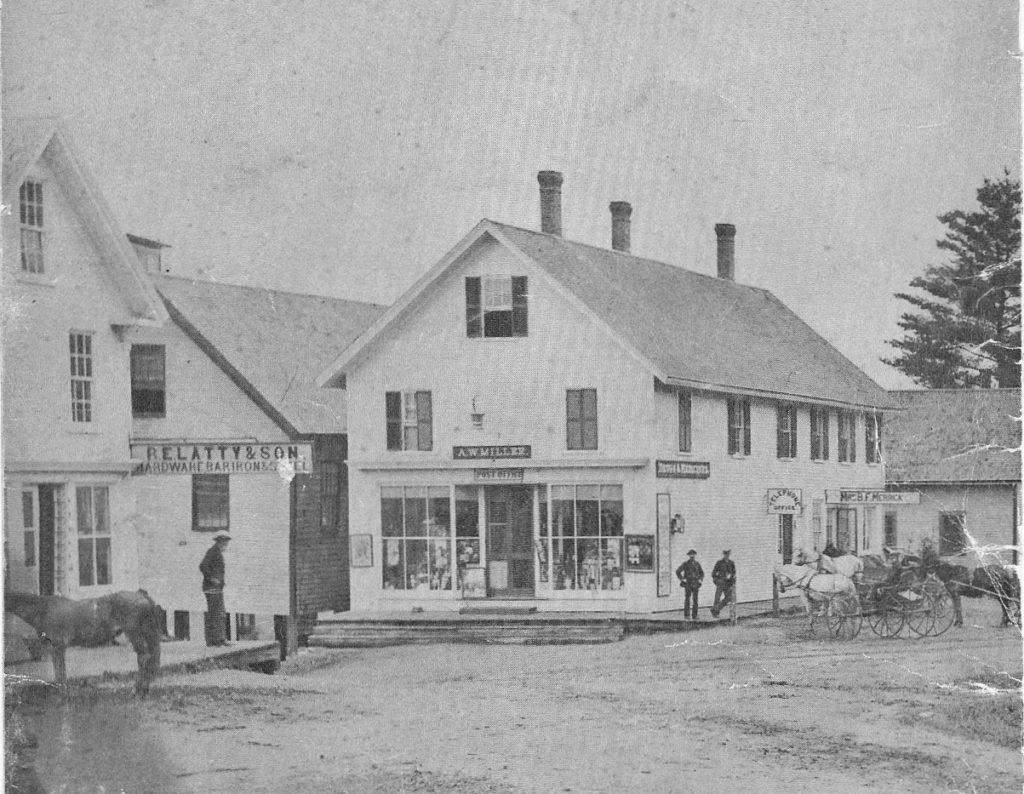
New Location of A. W. Miller Drug Store – c1886
*
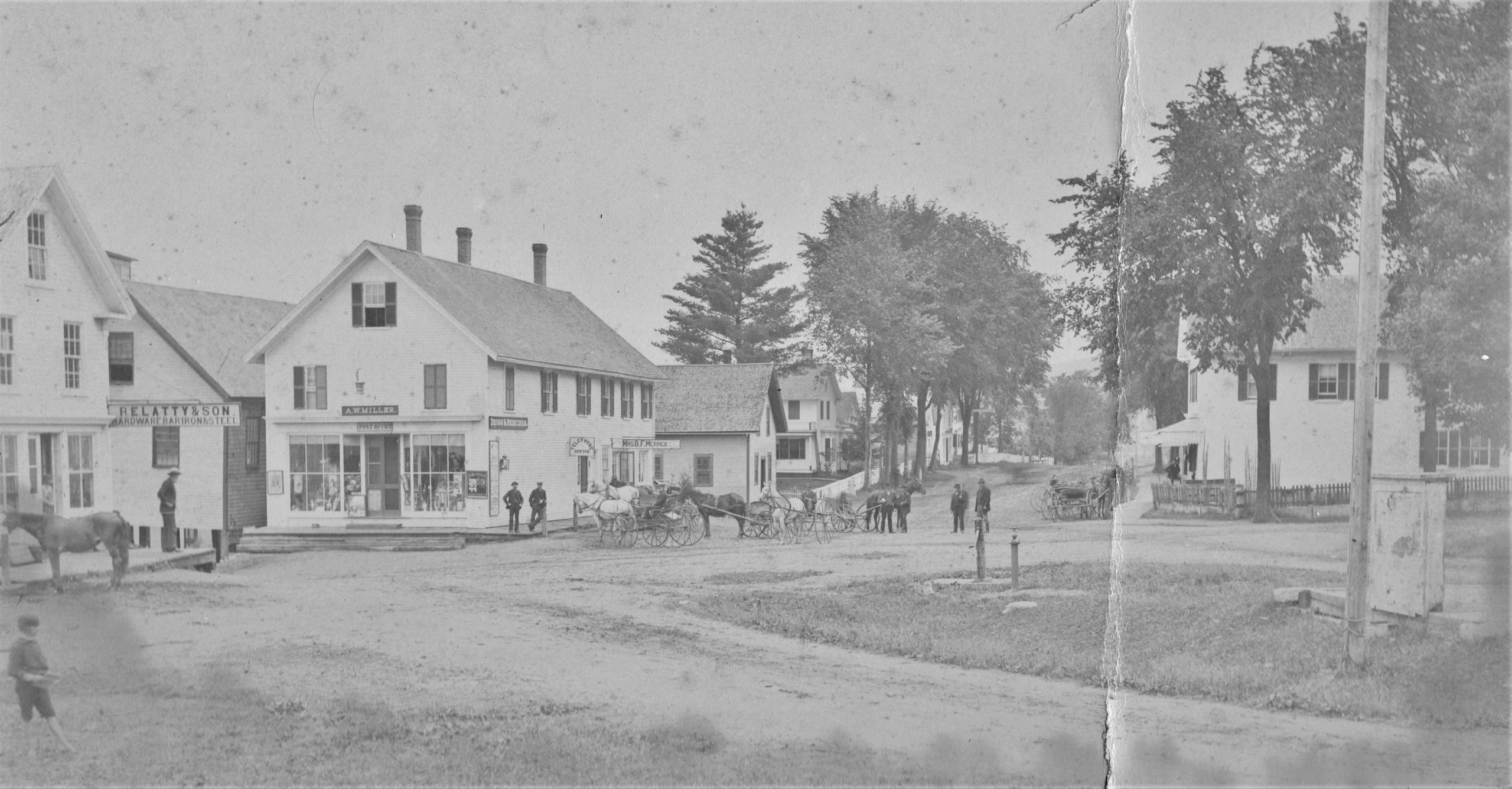
Full View of Commercial Street from Warren Square – c1886
*
In 1888, just a year before his death, Archibald Linn completed construction of a new building on Commercial Street next to the Drug Store Block containing 2 units downstairs and 2 units upstairs. The Linn Woolen Mill Office was relocated from its original building next door in the right side of 1st floor of the new building. Early tenants in the upstairs offices included Dr. Lynn H. Blanchard, Attorney Horace W. Stewart and Attorney William B. Brown. In 1889, the Post Office was moved here from the Drug Store Block next door and initially located in the left side of the 1st floor as seen below. The Linn Block would be used by numerous and various businesses over the decades until meeting its fiery fate in 1952.
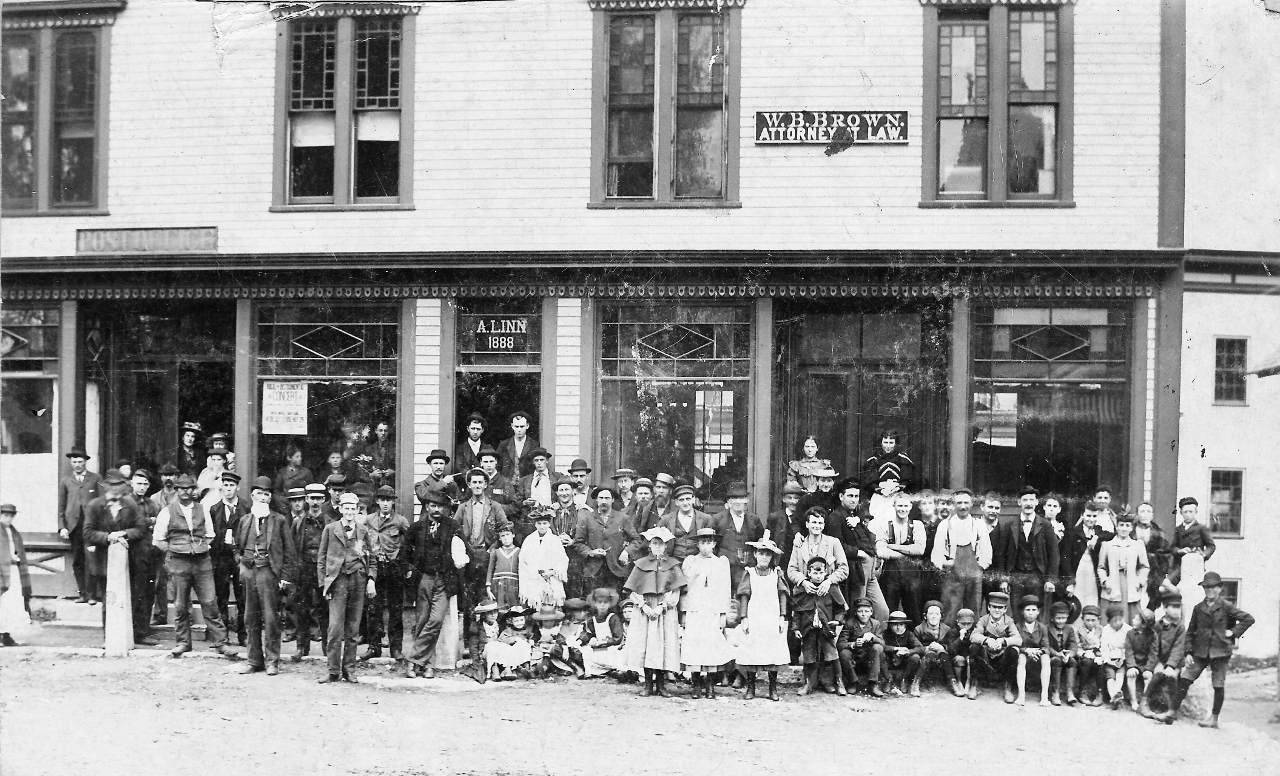
New Linn Block on Commercial Street – 1889
*
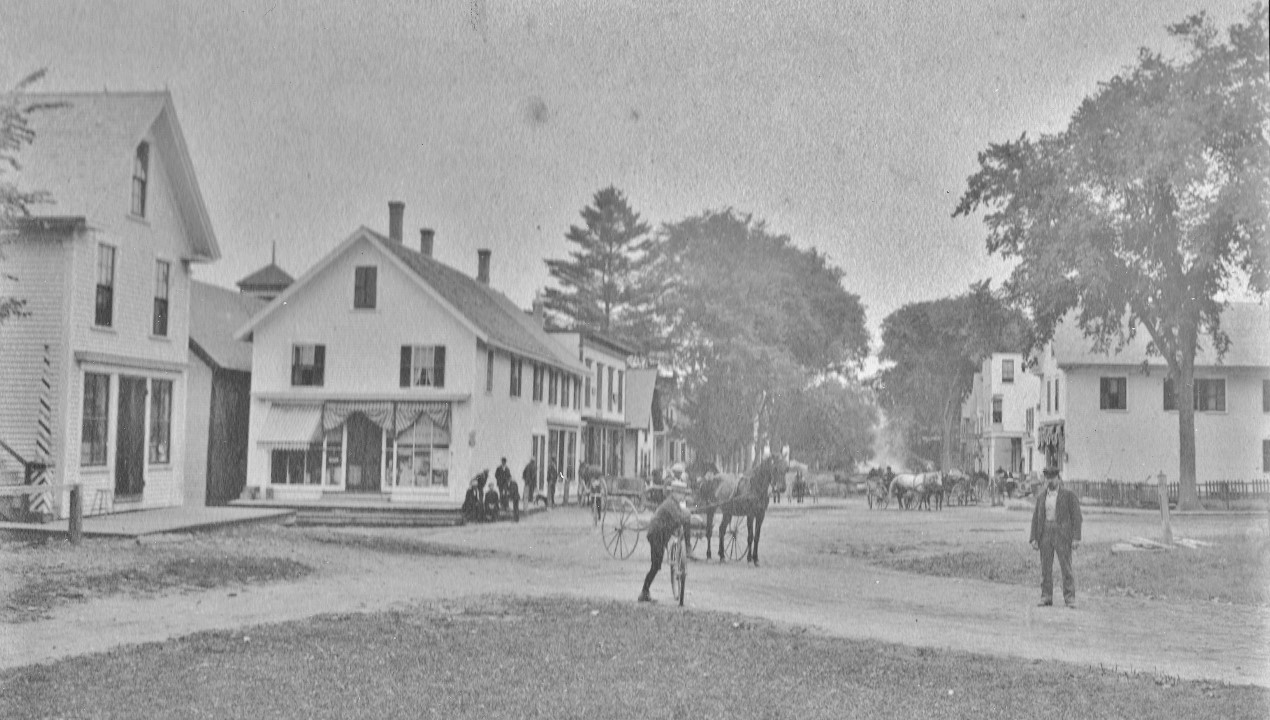
Commercial Street from Warren Square with new Linn Block – c1897
*
Mary (Anderson) Butterfield (right) and a friend photographed inside the 1st Post Office new location at the Linn Block.
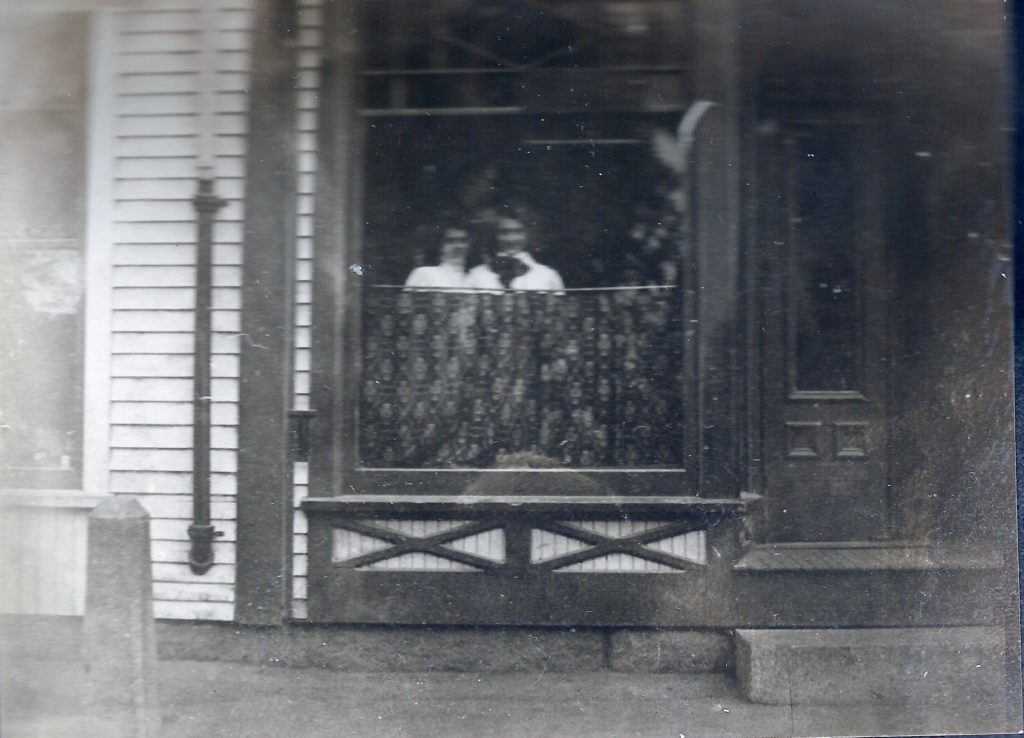
1st Post Office location at the Linn Block – c1905
(Courtesy of Maggie Smith)
*
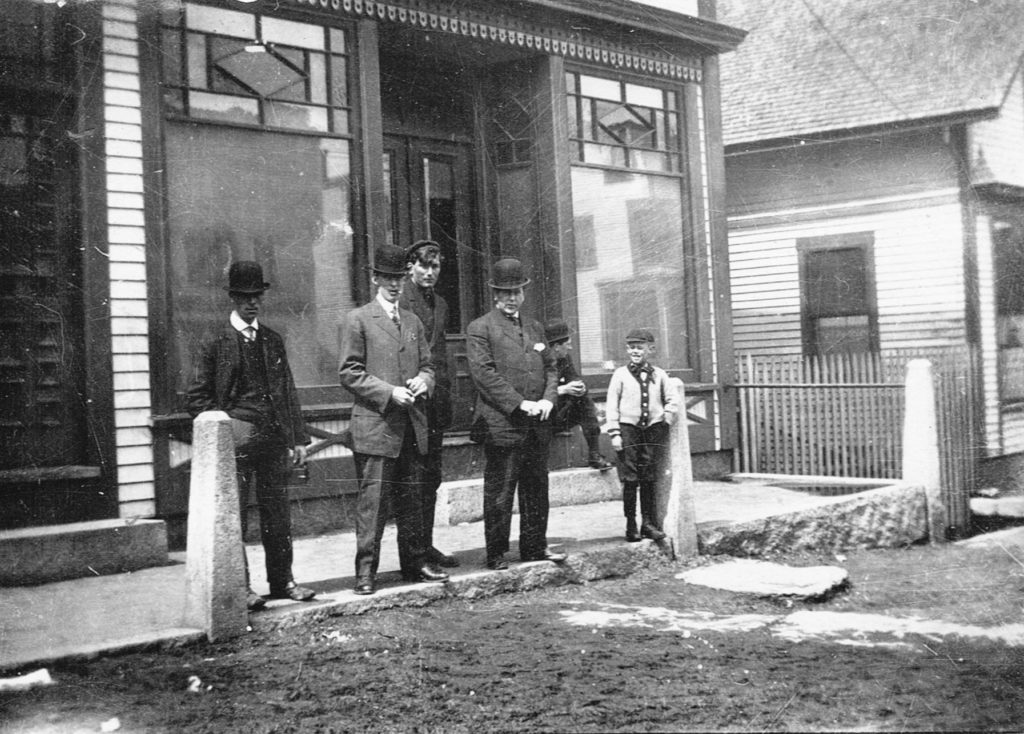
Unknown group in front of the Linn Block
*
Following his father’s death in 1885, George Merrill Lancey soon took over the family dry goods & groceries business near the corner of Commercial & Academy Street operating as “G. M. Lancey Dry Goods & Groceries” and became a very successful local merchant. He and his wife Annie Linn moved into the upstairs apartment where they remained until 1920. Lancey would often make boat trips to Castle Harmony and The Commodore Club on Great Moose Lake to bring members and guests needed supplies. By 1894, Mrs. Henry L. Smith (Margaret Brown) had begun a millinery business first located in G. M. Lancey’s store.

G. M. Lancey’s Dry Goods & Groceries Store – c1901
*
George Merrill Lancey (1861-1942) is the son of George Lancey, Jr & Frances Blake, daughter of Dr. Calvin Blake. In 1885, he married Annie Clapperton Linn (1861-1948), the daughter of William Linn, Sr & Elizabeth (Patterson), a brother of Archibald Linn. G. M. was also very active in town affairs serving on numerous committees including a group trying to sell the former Linn Woolen Mill eventually purchased by the American Woolen Mill. G. M. was also a long standing member of the Hartland School Committee and the Hartland Library Board of Directors serving for many years for both beginning in the early 1900s. G. M. and Thomas Archibald Linn built a dual family camp on Great Moose Lake in the 1890s naming it “Camp DeLancey” where G. M. passed away in 1942.
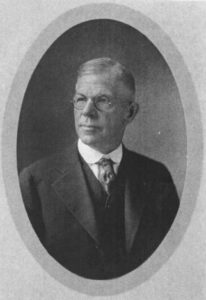
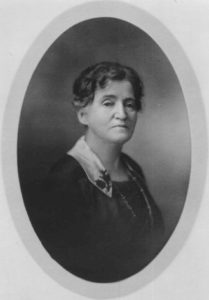
George Merrill Lancey & Annie Clapperton Linn
(Photos courtesy of Joan Joy Tibbetts)
*
Merchants like G. M. Lancey would often pack a customer’s purchased goods into a box and wrap the box with twine then attach a handle to the twine for easier carrying of their items as well as providing some good advertising as seen below.
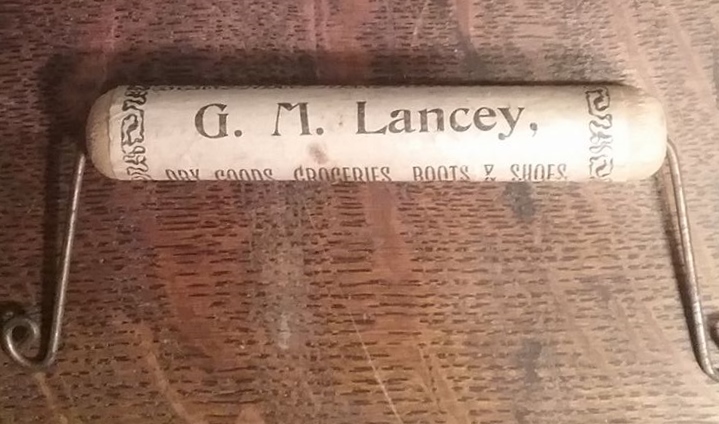
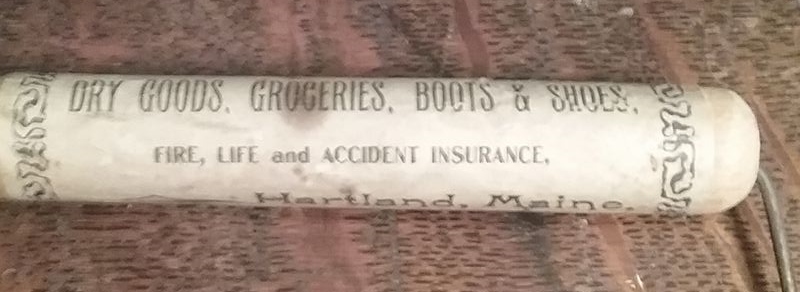
G. M. Lancey Store Box Handle
(Photos courtesy of Mike Massey)
*
On November 18, 1889, Archibald Linn died while seeking medical treatment in Georgia at 71 years old. Linn was interred with his wife Grace and 2 of their young deceased children at Ireland Cemetery. Linn’s Commercial Street residence and his vast real estate holdings throughout Hartland and the surrounding areas along with his numerous business interests including the Linn Woolen Mill initially remained under the watch of his Estate Executors he assigned in his Will, Greenville Jefferson Shaw of Hartland and General Charles Hamlin of Bangor, son of former Vice-President Hannibal Hamlin. Soon after, Linn’s 3 surviving heirs and his son-in-law Henry C. Fuller incorporated as the Linn Manufacturing Company and continued woolen mill operations along with several future expansions to the business and its buildings.
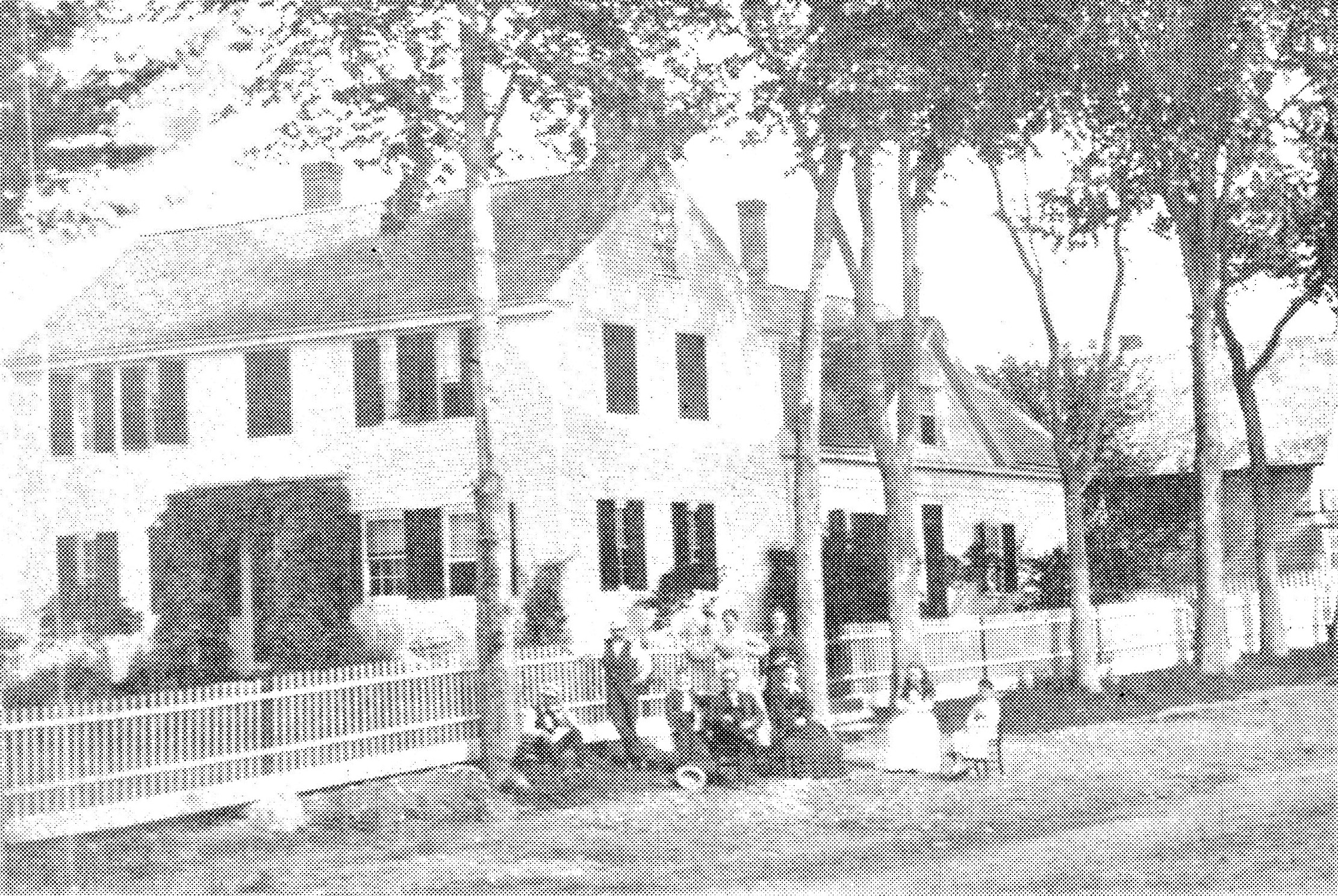
Archibald & Grace Linn Residence – Commercial Street
*
Anna Maria (Folsom) Page, known as Maria, first began operating a millinery business in Hartland in 1881 at the former Reverend Bowman’s store after they moved here from Harmony. A couple of years later, she moved her business across the street into the former Gorham Prescott residence on Commercial Street until the family moved to Skowhegan in 1909. The Prescott Block was still owned by Archibald Linn at the time and leased by Maria’s husband Ira Wall Page, Sr who was operating the Hartland House at the time. Their daughter Florence Belle Page married Walter H. Moore in 1890. In 1910, Ira & Maria returned to Hartland where he and their son Ira, Jr moved their sash & blind business from Skowhegan into Walter’s former woodworking shop at the Upper Dam on Moore Street operating there until Maria’s death in 1912 when he left town again. Ira & Maria are interred at Pine Grove Cemetery with their son Ira W. Page, Jr and family.

Mrs. Maria Page’s Millinery Sign on Commercial Street
*
In 1891, following his decision to move west, Charles H. Skinner sold his building and store business around April of 1891 to Arthur W. Bartlett, a former merchant in Harmony & Athens. Bartlett partnered with his brother-in-law Willard F. Smith, originally from Harmony, and began operating as Bartlett & Smith Dry Goods & Groceries. Smith already had local connections as his older brother Elmer J. Smith had married Florence Moor, daughter of Amasa J. Moor, in 1885 and moved to Hartland.
Willard Smith had recently bought his other brother-in-law Henry W. Bartlett’s store in Athens a few months before due to Henry contracting Tuberculosis. Willard decided to sell the Athens store and moved to Hartland with his 2nd wife Albra Cook, his widowed mother Lupira (Grant) Smith, and his 4 children from his 1st marriage to Angie Bartlett (1853-1882) including their son; future U.S. Representative Clyde H. Smith.
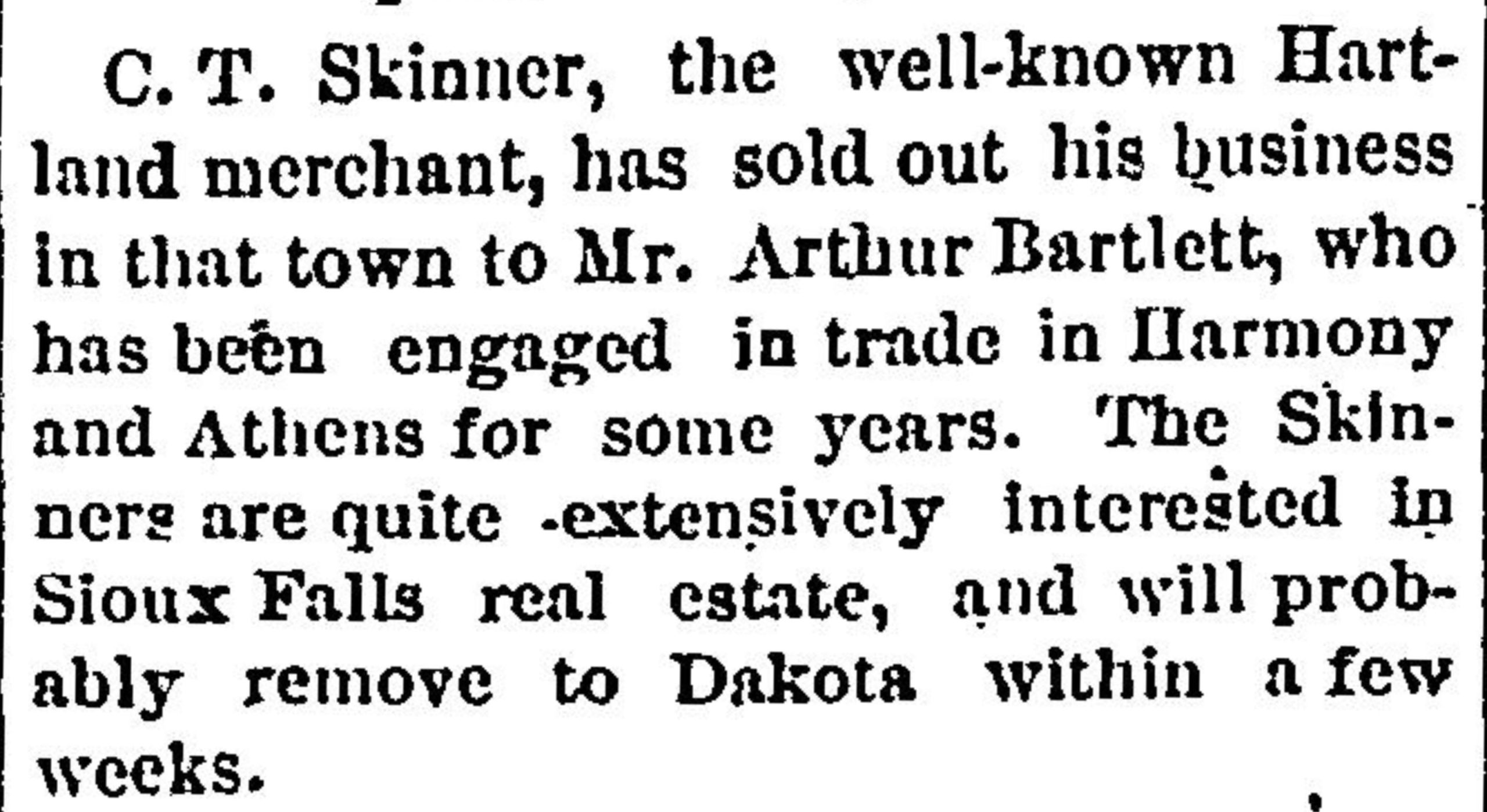
Skinner to Bartlett Sale – Published April 1891
*
Unfortunately for Arthur Bartlett, he contracted Tuberculosis as his brother Henry had and was forced to retire just a few months after he and Smith had gone into business together. Arthur returned to Harmony but quickly succumbed to the dreaded disease that same December at just 30yrs old while Henry lingered on until his death in 1894 at 42yrs old. Willard Smith took over the business as sole proprietor as the family settled into their new dwelling on the 2nd floor of their Commercial Street store.

Notice of Dissolved Barlett & Smith Business Partnership – October 3, 1891
*
Walter Ernest Mebroy Seekins (1860-1910) was born in St Albans where he married Hartland native Alice Waldron in 1877 and settled on their farm in St Albans. They remained in St Albans except for a very brief residence in Camden, New Jersey around 1880 until moving to Hartland in 1892 where Walter built a new 3 floor building on Commercial Street between the former Skinner Store Block and William Lancey Store Block. He opened a dry goods & grocery store on the ground floor, moved their family into the 2nd floor and rented out the 3rd floor apartments of the new building. Its original open street level entryway along with unique corner windows and molding on the 2nd floor made the Seekins Block distinctly recognizable for decades.

Elberton P. Dyer (left) & Walter E. M. Seekins in front of Seekins Store Block
*
In 1892, Hartland town affairs were centralized in the Village following many years of debate to a location when the new Opera House-Town Hall opened on Academy Street. In 1897, the original building burnt but was replaced within a year with an almost identical structure.
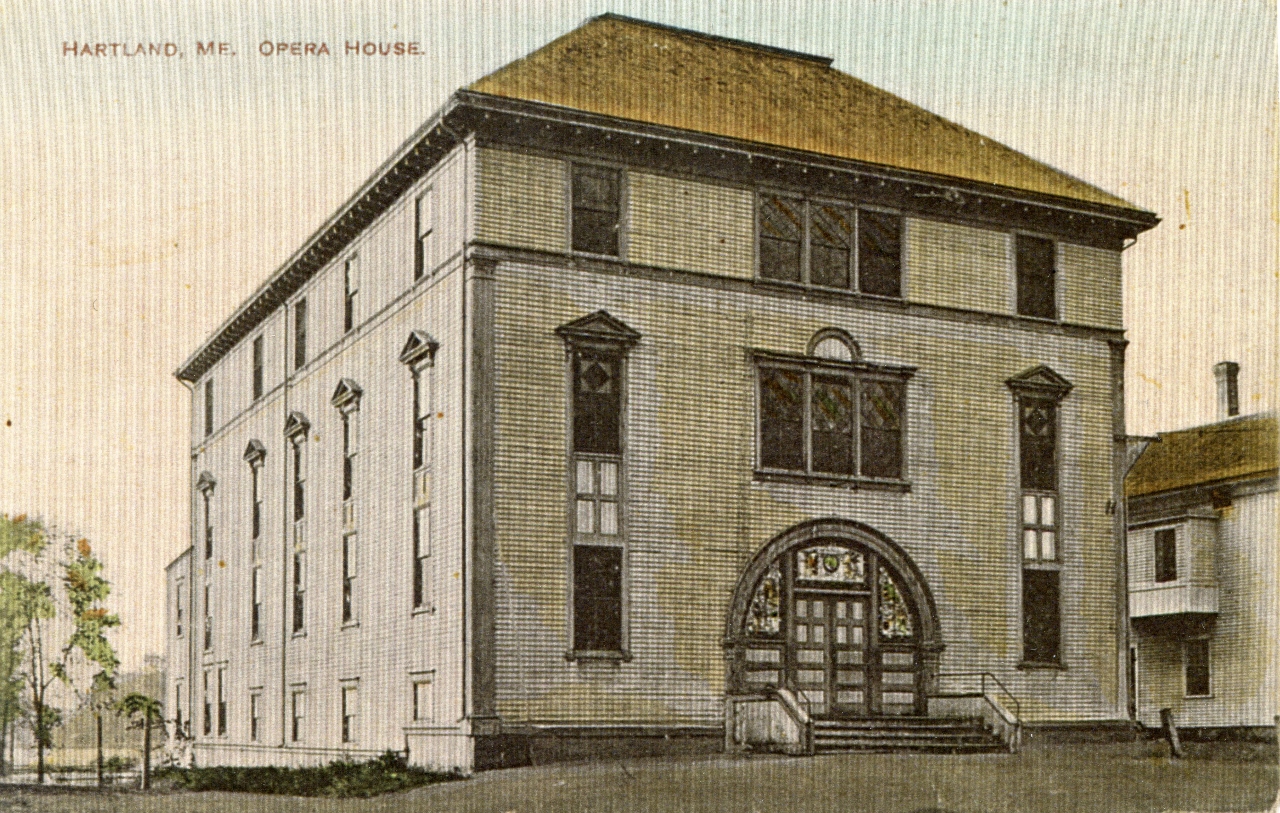
Rebuilt Hartland Opera House-Town Hall on Academy Street
*
In the summer of 1886, Frank E. Buker (1856-1927) moved from St Albans to Hartland where he had purchased a harness shop at an unknown location in town. In 1888, he was joined by his older brother Albion F. Buker and began doing business as Buker Brothers Harnesses. In 1893, the brothers purchased the former Butterfield Block on Commercial Street and moved their operations into the 1st floor of the building. At the time of their purchase, Freeman Daniels was operating his jewelry store at the location.

April 6, 1893
*
Meanwhile in St Albans, the future of Hartland’s telephone service was unfolding as the St Albans & Hartland Telephone Company was established by Dr. Charles A. Moulton on July 23, 1894 which included these original subscribers in Hartland; Walter H. Moor, George M. Lancey, Thomas A. Linn, H. C. Prescott, Sebasticook & Moosehead Railroad Depot, Linn Woolen Mill Main Office and the Park House.
*
Still known as North Street in 1896, the future Commercial Street was fully lined with merchants offering medicine, dry goods, groceries, meats, confectioneries, men’s & women’s clothing, a barber shop and various other goods and services including the Methodist Church. Several more residences had also been built on both sides the street all the way to the St Albans Town Line.
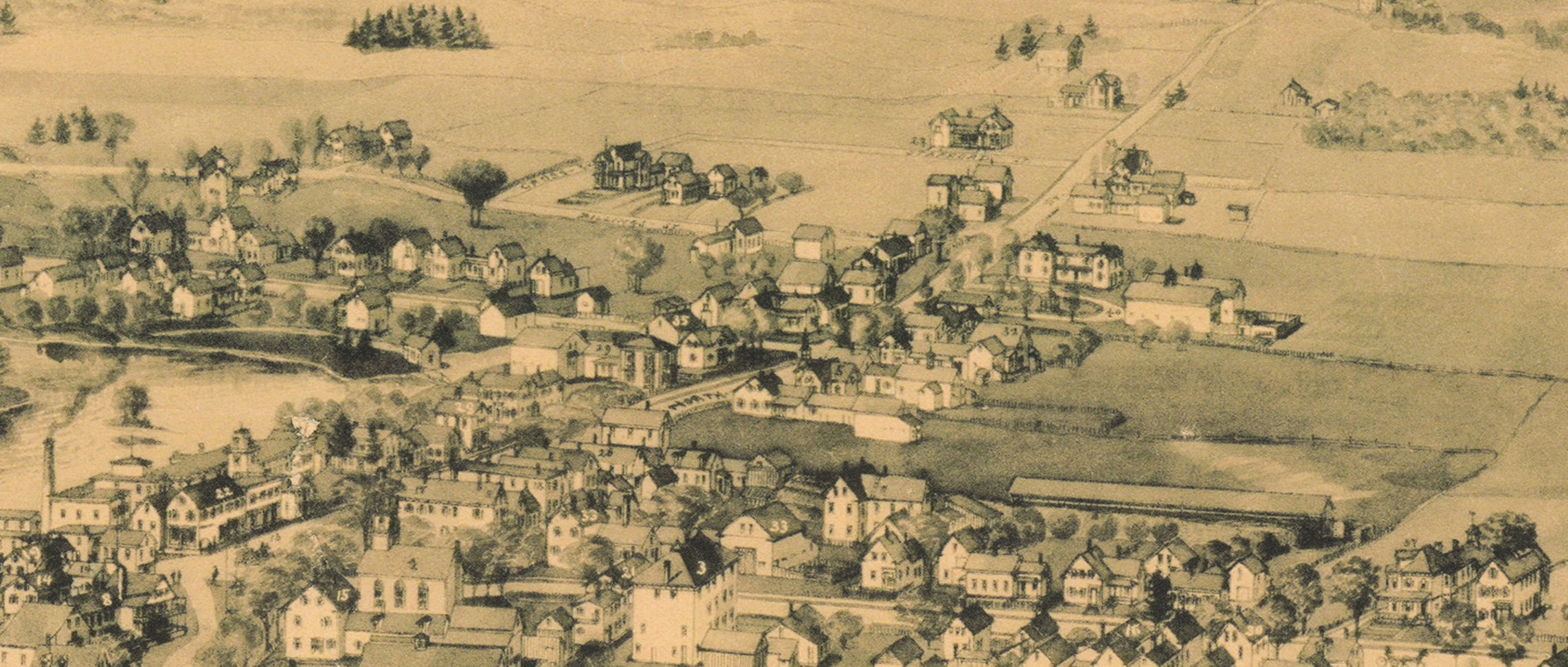
Commercial Street – 1896
See Maps Page for a full and enlargeable version of the 1896 Map above.
*
Lucian Henry Goodwin had been leasing Albert W. Miller’s old store building on Main Street for his clothing store business before he built a new store next to Walter E. M. Seekins store on Commercial Street where he continued business as L. H. Goodwin Clothing until 1901.

December 3, 1896
*
On March 26, 1897, an act by the Maine Legislature was passed to incorporate the Hartland Trust & Banking Company in Hartland. The stock held company was incorporated by Horace W. Stewart, George M. Lancey, Lucian H. Goodwin, Milton L. Merrill, F. E. Bridgham, N. B. Turner, Stephen B. Prescott, Thomas A. Linn, Albert W. Miller, Greenville J. Shaw, Robert W. Linn, Walter H. Moor and Prince W. Thompson. No further details regarding its operations or intended location have been found beyond the 1897 act. A stipulation in the incorporation act required a minimum of $50,000 in paid stocks sold at $100 each be raised before it could open to the public which may have prevented them from bringing the intended business to fruition. Several of these men would soon join in another banking venture with the Waterville Trust Company in 1901.
*
In 1897, Commercial Street was officially given its new name by a vote of Hartland citizens at a Special Town Meeting as noted; “From said (Warren) Square to St Albans town line going north; ‘Commercial Street’. Its former North Street name would replace the Billings Street name.
*
In 1897, Dr. Charles A. Moulton moved his family from St Albans to Hartland to be more centrally located to his numerous patients in the St Albans, Palmyra & Hartland areas while continuing his operations of the St Albans & Hartland Telephone Company in St Albans. Following his move to Hartland, Dr. Moulton became a leading entrepreneur in the new era of telephone communication and electrical power distribution. He lived out the rest of his life in Hartland at his Elm Street residence serving as a local family doctor, hospital administrator, businessman and an active member in town affairs until his death in 1946.
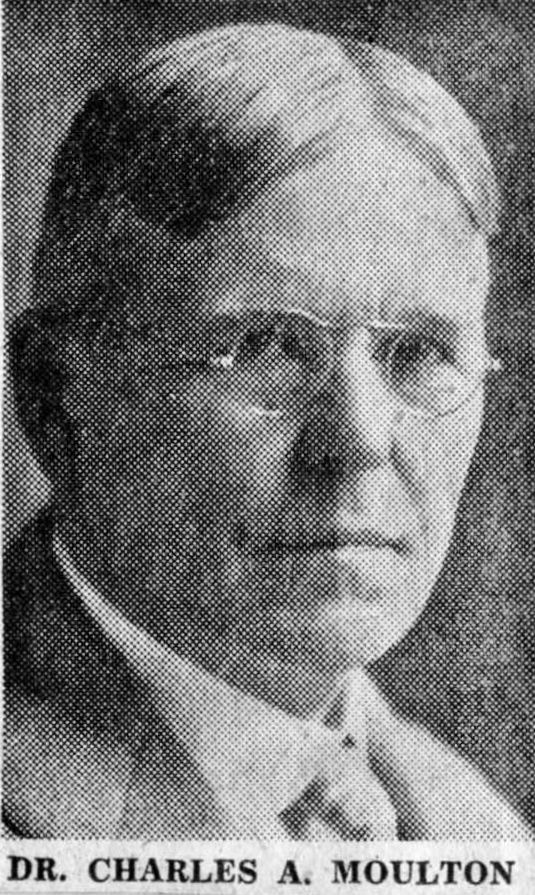
*
In June of 1898, Allen Richard Burton (1865-1932) leased the former Fairgrieves Carding Mill on the corner of Main Street and future Hubbard Avenue where he opened his first business operating a furniture store which included undertaking services. Allen married Adeline M. Woodbury (1864-1929), a daughter of Isaiah Woodbury III & Mary Jane Nevens. Burton’s success at this first location eventually prompted him to move his business to Commercial Street.
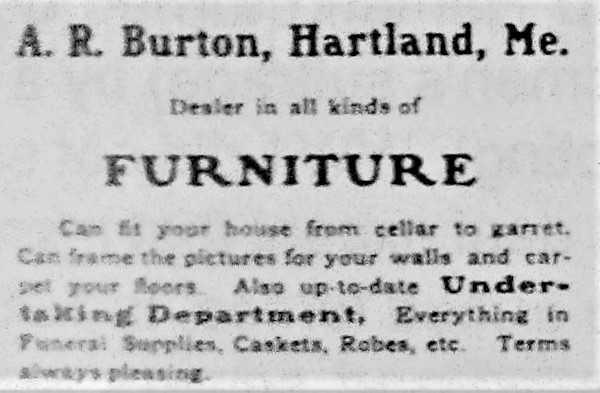
A.R. Burton Ad at old Carding Mill Location – 1905
*
In September of 1898, Greenville J. Shaw sold all his remaining real estate holdings in Hartland including Maple Lane Farm on Commercial Street and his tannery property on North Street with its support buildings to the Linn Manufacturing Company. The house at Maple Lane Farm would be occupied for a time by Archibald Linn’s son Robert Wilson Linn, Sr who was living there with his family by 1900 and remained there until about 1916.
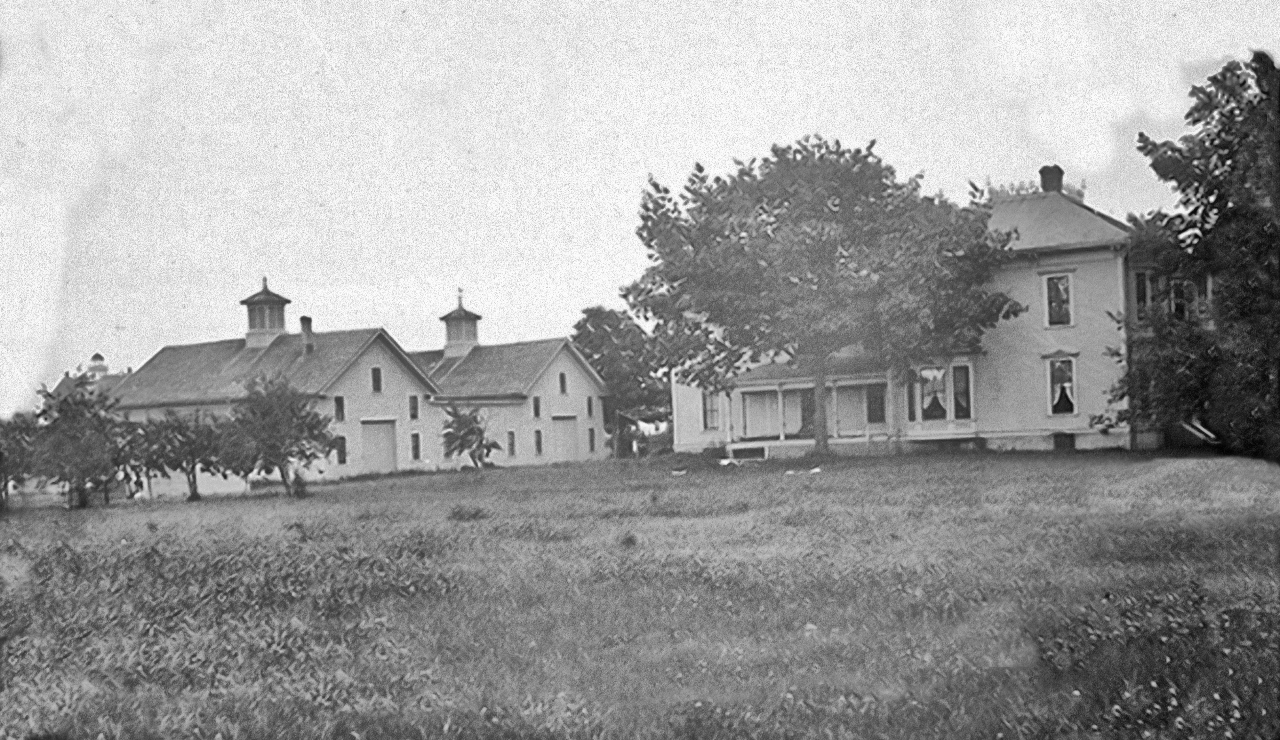
Former Maple Lane Farm occupied by Robert Wilson Linn, Sr
*
By the turn of the century, electricity arrived in Hartland with many of the first power lines located on Commercial Street & Main Street before eventually spreading throughout the Village. The new power source would forever change how businesses and households functioned.
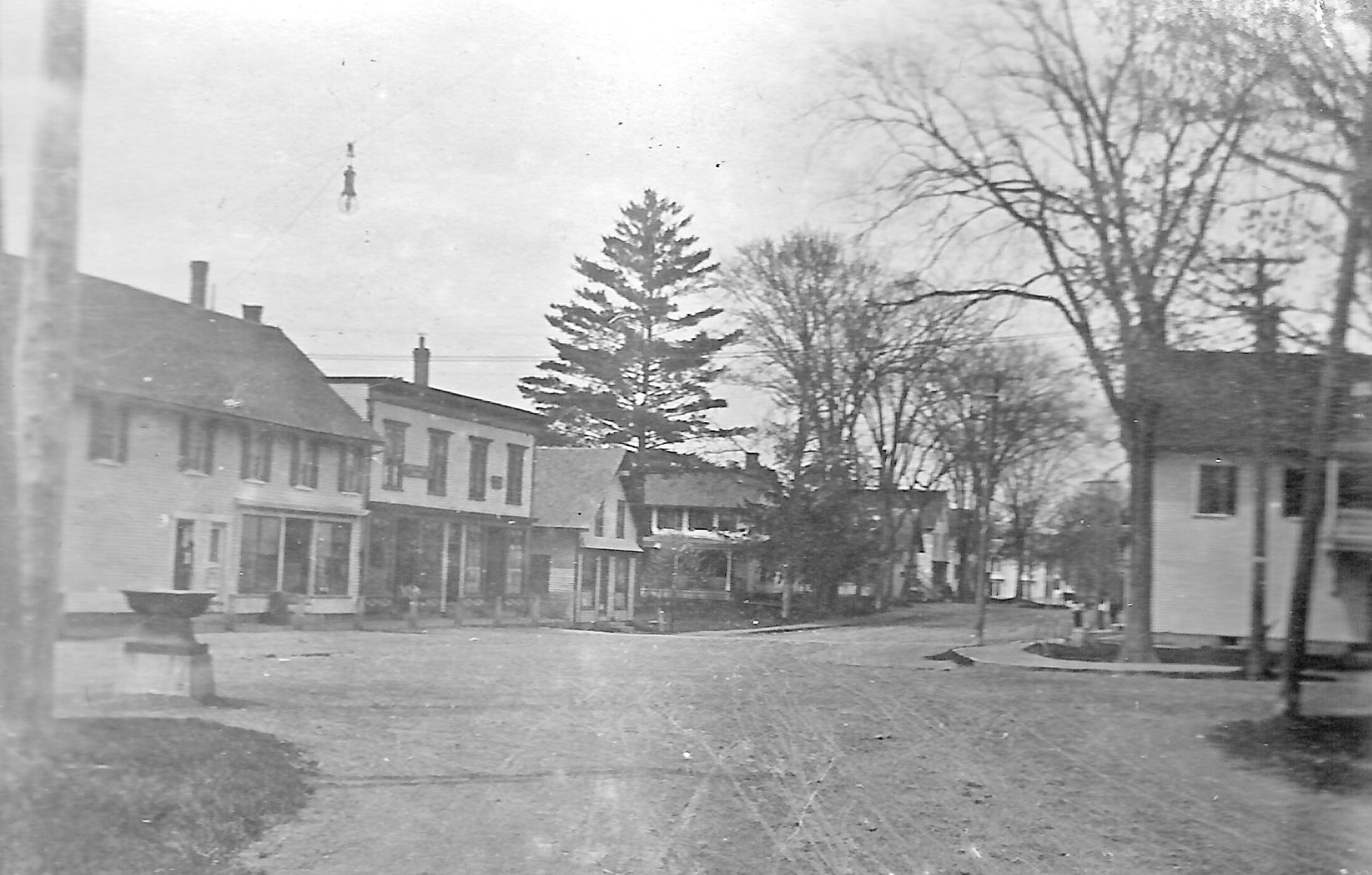
Commercial Street from Warren Square with New Power Poles, Electrical Lines, Telephone Lines & Hanging Street Light
*
For several years leading into the turn of the century, Albert W. Miller maintained a private Circulating Library at his Commercial Street store location where he rented out his collection of some 200 books until around 1900. Miller would soon play an important supporting role in the establishment of the Hartland Public Library which incorporated on December 30, 1903 occupying a room behind the stage at the Opera House.

Commercial Street
*
In February of 1900, The New England Telephone & Telegraph Company announced they were establishing a telephone connection in the spring to the Hartland system likely replacing the old Hartland Telephone Association system. The New England Telephone Company, as they were more commonly known, placed a switchboard at George M. Lancey’s Store on Commercial Street where they operated an office location in Hartland for the next 3 years.
*
In June of 1900, Walter E. M. Seekins purchased the first of several lots owned by Calvin Blake, Jr and Dr. Charles A. Moulton on the newly developing Blake Street where he would soon build a couple of houses including his residence. Following his purchase in May of 1902 of additional land on or around Blake Street from Calvin Blake, Jr ($325), Dr. Charles A. Moulton ($150) and the widow Louisa Webb ($150), Walter began a westerly extension of his Blake Street residence driveway, commonly referred to as West Court, where he built at least two more houses soon after.
By late 1902, West Court (aka West Street or Seekins Street depending on the newspaper reporter) had been extended along the entire northern border of the late Seth Webb Commercial Street homestead as a new throughway to Commercial Street connecting to the driveway entry of the Methodist Church which had also built their new Parsonage on Blake Street by this time. The first article to propose the new throughway as a public town street appeared in the 1903 Town Report, however it would take several more years before voters finally approved its adoption by 1910 and named it Seekins Street as homage to Walter E. M. Seekins.
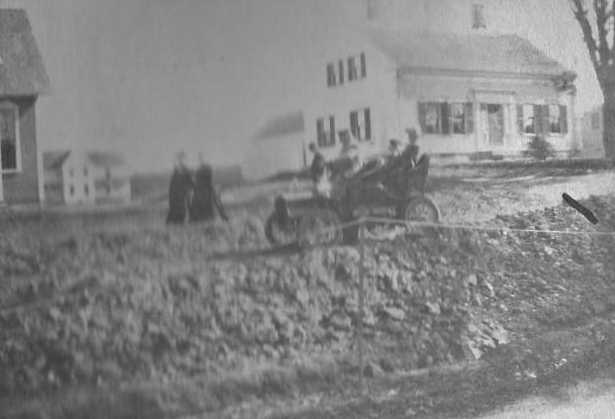
Entry of Seekins Street from Commercial Street between Methodist Church & former Seth Webb Residence – c1902
*
In 1901, Ira S. Hatch left his job as Station Agent for the Sebasticook & Moosehead Railroad where he had been working since the mid-1890s and opened a dry goods store at Reverend Bowman’s former store location after Willard R. Burton moved his barber shop to the former James Fuller Store in Warren Square that same year. Ira had married Iola Merrow in 1896 and they were living with her widowed grandmother Mrs. Rhoda Bowman in the house next door. Iola also sold clothing from the store and became an agent for the famous Sebasticook Walking Skirts being manufactured in town by the Fuller-Osborne Company as seen below in a 1905 advertisement.
After Rhoda’s death on April 6, 1905, Iola & Ira sold the house and the store in November and moved to Long Beach, California where they remained for the rest of their lives. As noted in a November 1, 1905 Bangor Daily News article, Ira & Iola sold the store and goods to John F. Webendorfer of Pittsfield who opened his store there by December operating at the location for a couple of years.
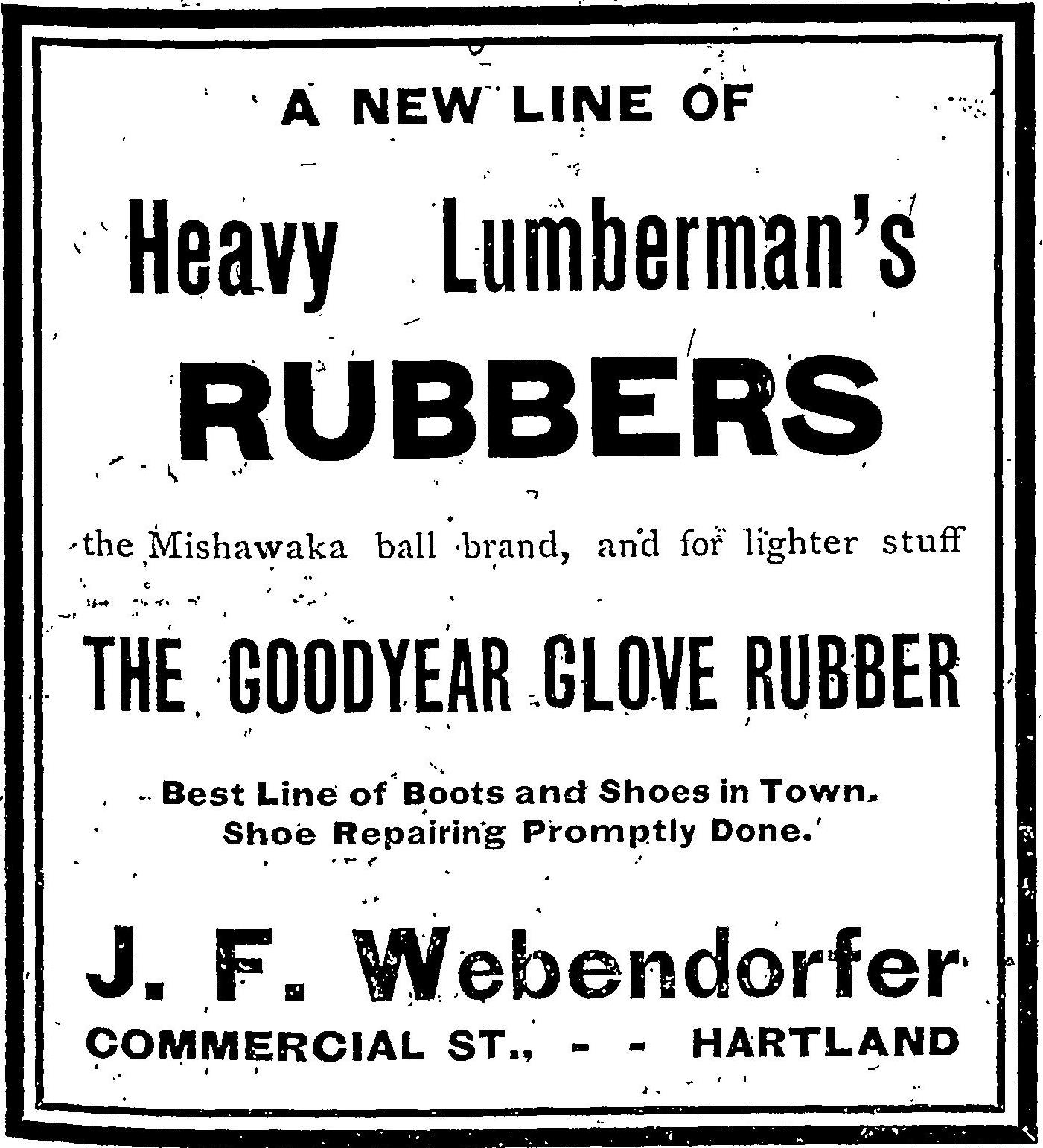
December 1905 Ad
*
In November of 1902, Albert W. Miller sold the Commercial Street Drug Store Block to the Linn Woolen Company and moved his business back to his original building on Main Street while plans were set in motion to renovate his former store location to be occupied by Dr. Lynne H. Blanchard.
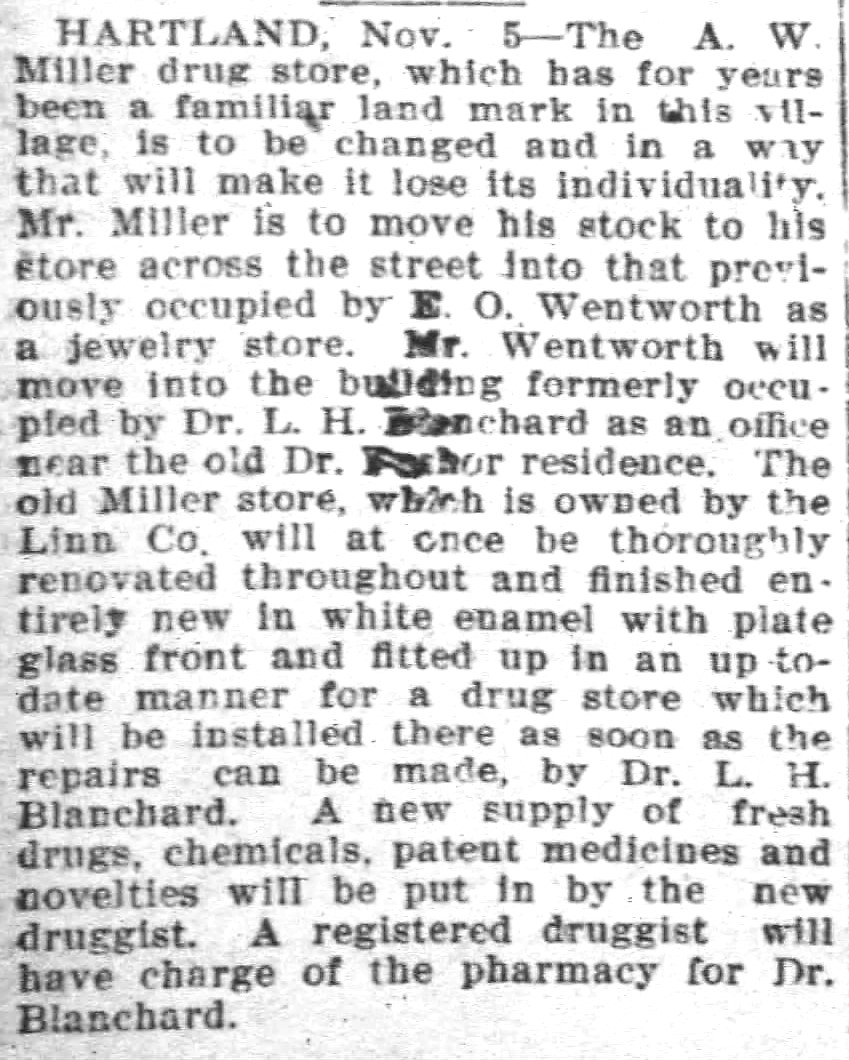
November 5, 1902 – Bangor Daily News
*
Just before the return to his old store location, Miller had hired a new young pharmacist who had moved to Hartland soon after 1900 named Ralph C. Hamilton who remained with Miller until 1904.
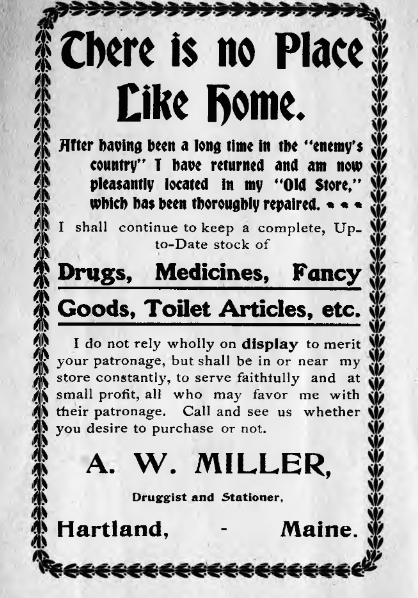
A. W. Miller’s Full Page Ad from the Hartland Town Report – February 28, 1903
*
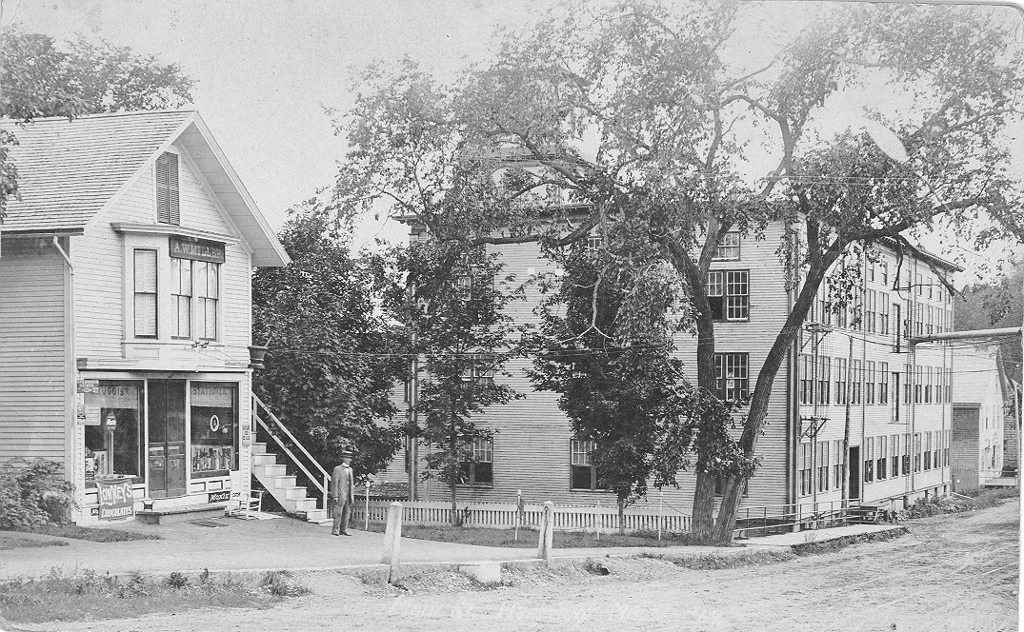
A. W. Miller Drug Store after his return to Main Street
*
Dr. Lynne Harry Blanchard (1872-1935) arrived from Springfield, Maine in the mid-1880s when he began his medical practice in Hartland. He eventually leased a small building at Warren Square where he had his office for a few years until 1902. On December 11, 1901, Dr. Blanchard married Carrie May Linn (1879-1964), the only child of Thomas Archibald Linn & Clara Isabelle Osborne and a granddaughter of Archibald & Grace Linn. Carrie’s parents presented the newlyweds with a house on Blake Street built by Horace W. Stewart in 1896. They remained at the residence until moving to Pittsfield in 1915. Carrie remained in Pittsfield the rest of her life but Dr. Blanchard moved to California in the late 1920s where he remained until his death. Their Blake Street house would eventually become the home of Dr. Paul R. Briggs.
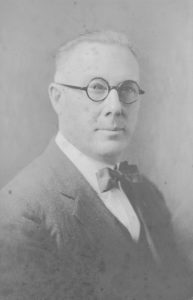
Dr. Lynne H. Blanchard
*
Following Dr. Lynne H. Blanchard’s purchase of the drug store block in 1902, he became the first proprietor of the building to operate it under the exclusive business name of Hartland Drug Store which it would continue being known as until 1955.
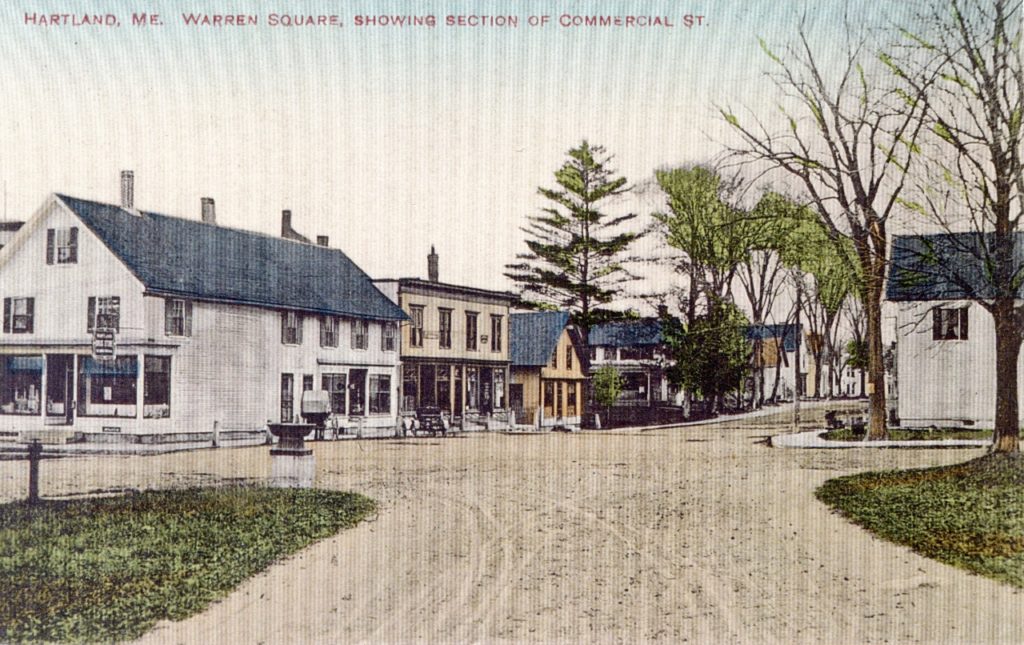
Commercial Street from Warren Square
*
Dr. Blanchard was a licensed Physician and delivered many local children as well as witnessing and signing death certificates.
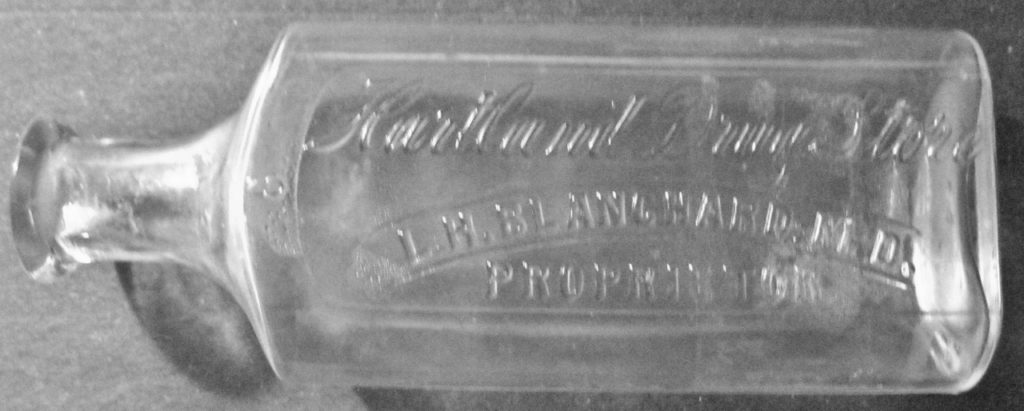
Medicine Bottle “Hartland Drug Store – L. H. Blanchard, M. D. – Proprietor”
*
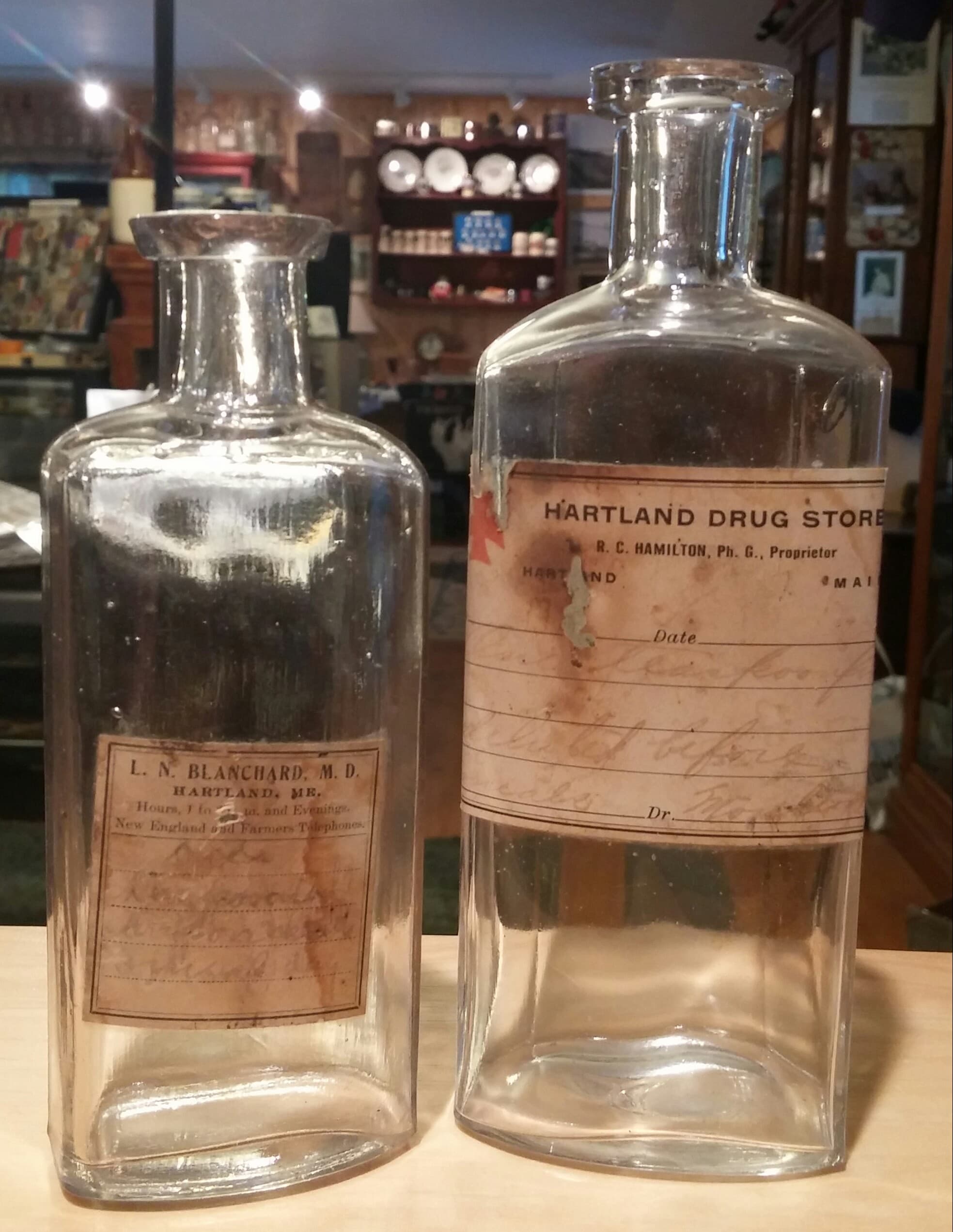
Medicine Bottles from the Hartland Drug Store
(Photo courtesy of Sam Fuller)
*
In 1901, the Waterville Trust Company opened a branch location within G. M. Lancey’s Dry Goods Store. Board of Directors of the Hartland Branch were George M. Lancey, Thomas A. Linn and Walter H. Moore. Other area branches included locations in Corinna, Newport & Dexter.
One popular advertising campaign used by banks at the time were Pocket Savings Banks given to customers to encourage savings and eventual deposits.
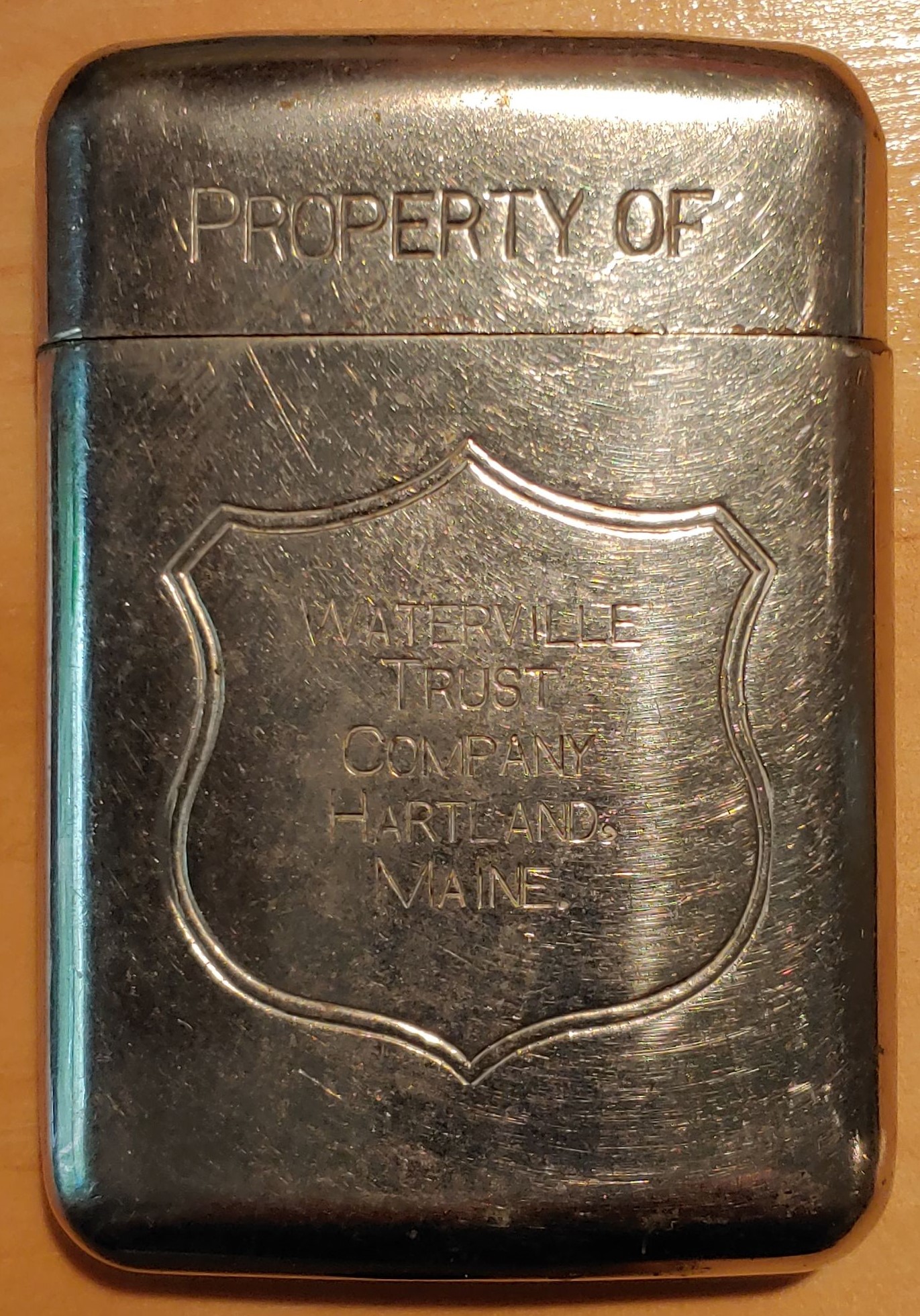
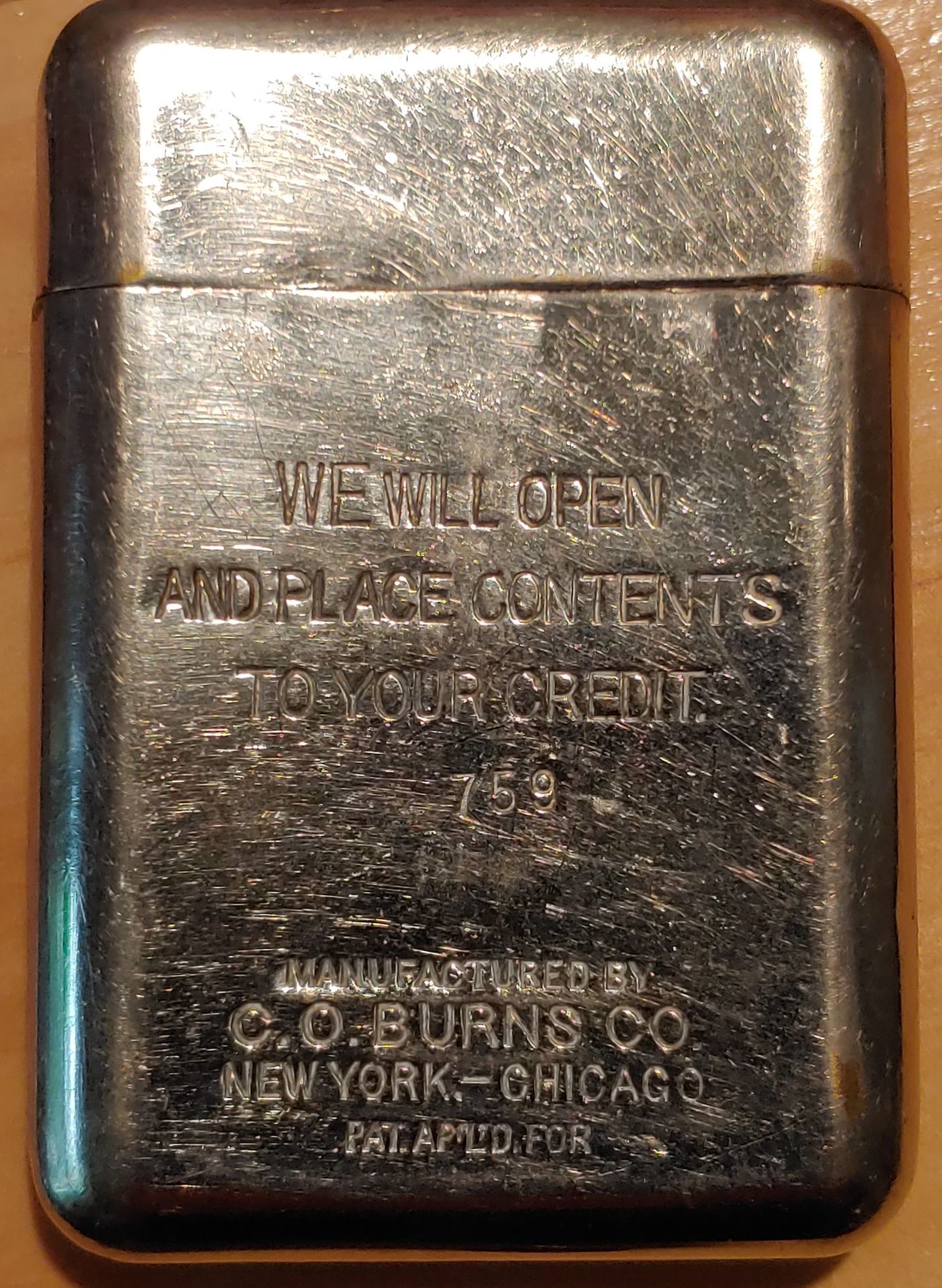
Waterville Trust Company Pocket Savings Banks
(Photo courtesy of Sam Fuller)
*
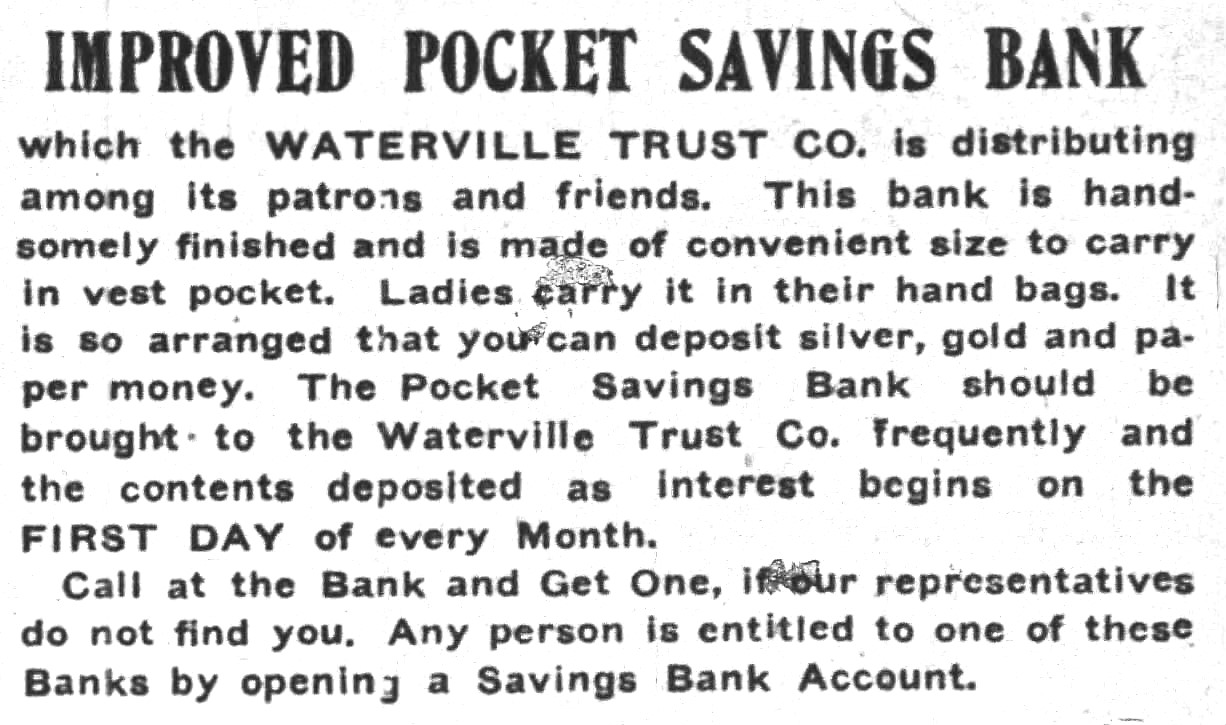
Waterville Trust Company – Pocket Savings Bank Advertisement – June 28, 1906
*
In June of 1901, G. M. Lancey built a balcony for their 2nd floor dwelling on the south side of his store block as reported in the Bangor Daily News giving us an important hint to the building’s timeline in photos of it.
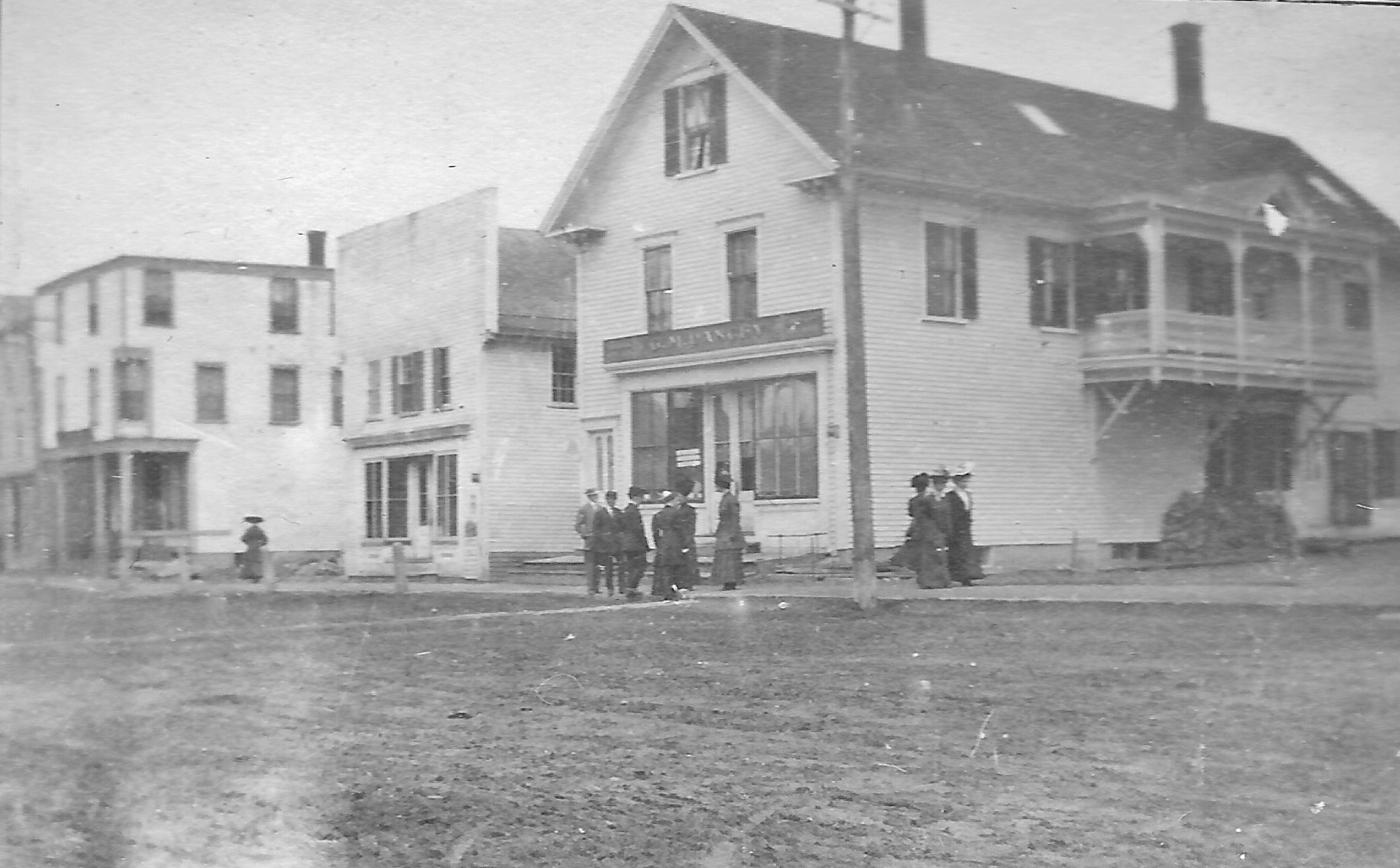
Waterville Trust Company’s Hartland Branch at G. M. Lancey’s Store – Commercial Street
*
By 1900, Henry L. Smith and his wife Margaret Guy Brown had purchased the former William Lancey store block, which had been operating as a clothing store by E.S. Locke and his wife since the late 1880s, and were living upstairs with daughters Ethel & Jean.
On the first floor they operated their new dry goods, clothing & millinery store for several years doing business as “Mrs. H. L. Smith Dry & Fancy Goods”. Their store also became a local retail agent for the Fuller-Osborne Manufacturing Company featuring its popular Sebasticook Walking Skirt. Jean was still living with them during the 1910 Census taken on April 16th just before Henry & Margaret leased their building and business interests to Daniel A. Packard and his wife and moved to Brighton, Massachusetts. A year later they moved to Franklin, New Hampshire where Margaret passed away in 1912 and was interred at Pine Grove Cemetery.
Margaret (Brown) Smith is a daughter of Dr. David Brown & Margaret (Guy) who moved with their 5 children from Scotland to Hartland in 1883 where he continued his medical practice until his death in 1900. Dr. Brown and his wife Margaret are interred at Ireland Cemetery. Their other daughter Myra Brown married Charles L. Moor, son of Amasa J. Moor. Henry & Margaret Smith’s daughter Jean Brown Smith married Birney J. Moore in 1918.
Henry moved to Portland, Oregon by 1918 and the store block was put up for sale that same year by their daughter Mrs. Ethel Craig after Daniel Packard and his wife closed their business and moved west. It was occupied in 1919 by a Mr. Ridley & Mr. Wakefield who opened a hardware store at the location.

1908 Telephone Directory Advertisement
*
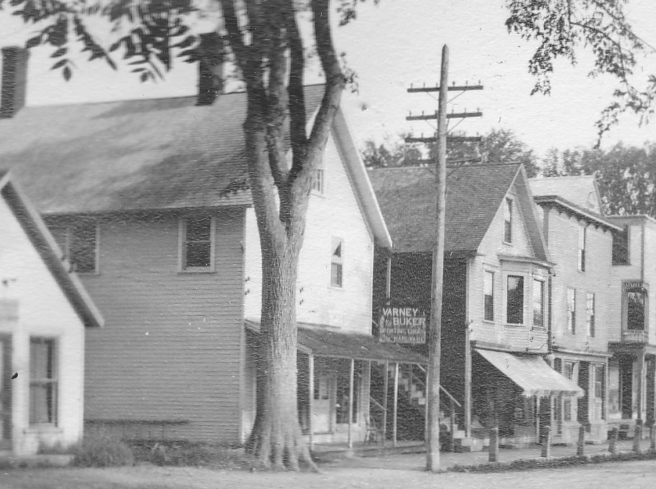
Former Mrs. Henry L. Smith Store to the right of Varney & Buker Sporting Goods
*
Although it was never fully completed, plans for another throughway from Commercial Street to Blake Street were reported in an October 29, 1903 Pittsfield Advertiser article. The unfinished street became known at the time as Cook Place and eventually as its modern designation of Libby Street.
“Another new street is soon to be laid out running exactly parallel with West Street and through what is at present a field of Fairfield Nevens coming into Commercial Street near Mr. Nevens’ buildings and into Blake Street near the Methodist Parsonage. A new house is already in process of erection on this new street being built by Charles Cook.”
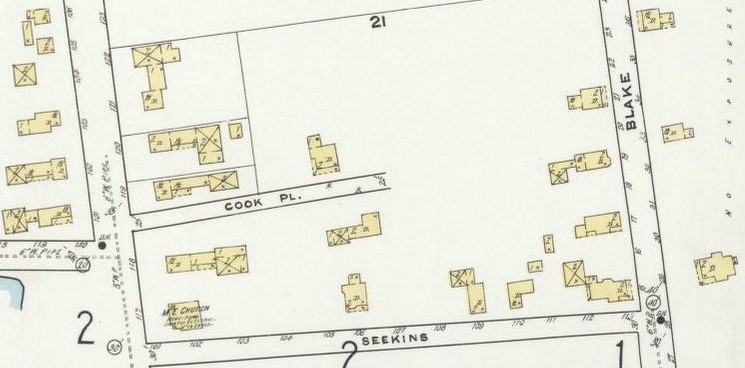
Cook Place – Sanborn Insurance Map – 1917
*
On July 17, 1903, Dr. Charles A. Moulton re-organized his original St Albans telephone business and incorporated as the new Hartland & St Albans Telephone Company relocating the home office to the 2nd floor of his Elm Street residence. The new company connected to The New England Telephone Company’s exchange system which transferred its switchboard from G. M. Lancey’s store to the new location, but operated its local lines independently. The Hartland & St Albans Telephone Company expanded service in Hartland with additional telephone lines throughout the Village and added more full-time Telephone Operators to service its 140 subscribers.
In December of 1904, The New England Telephone Company announced they had assigned a portion of their service territory to the Hartland & St Albans Telephone Company as reported in a Pittsfield Advertiser article which included Hartland, St Albans, Palmyra, Mainstream, Ripley, Wellington and Cambridge. In December of 1906, a new magneto switchboard was installed at the Hartland & St Albans Telephone Company’s office replacing the original New England Telephone Company’s unit.
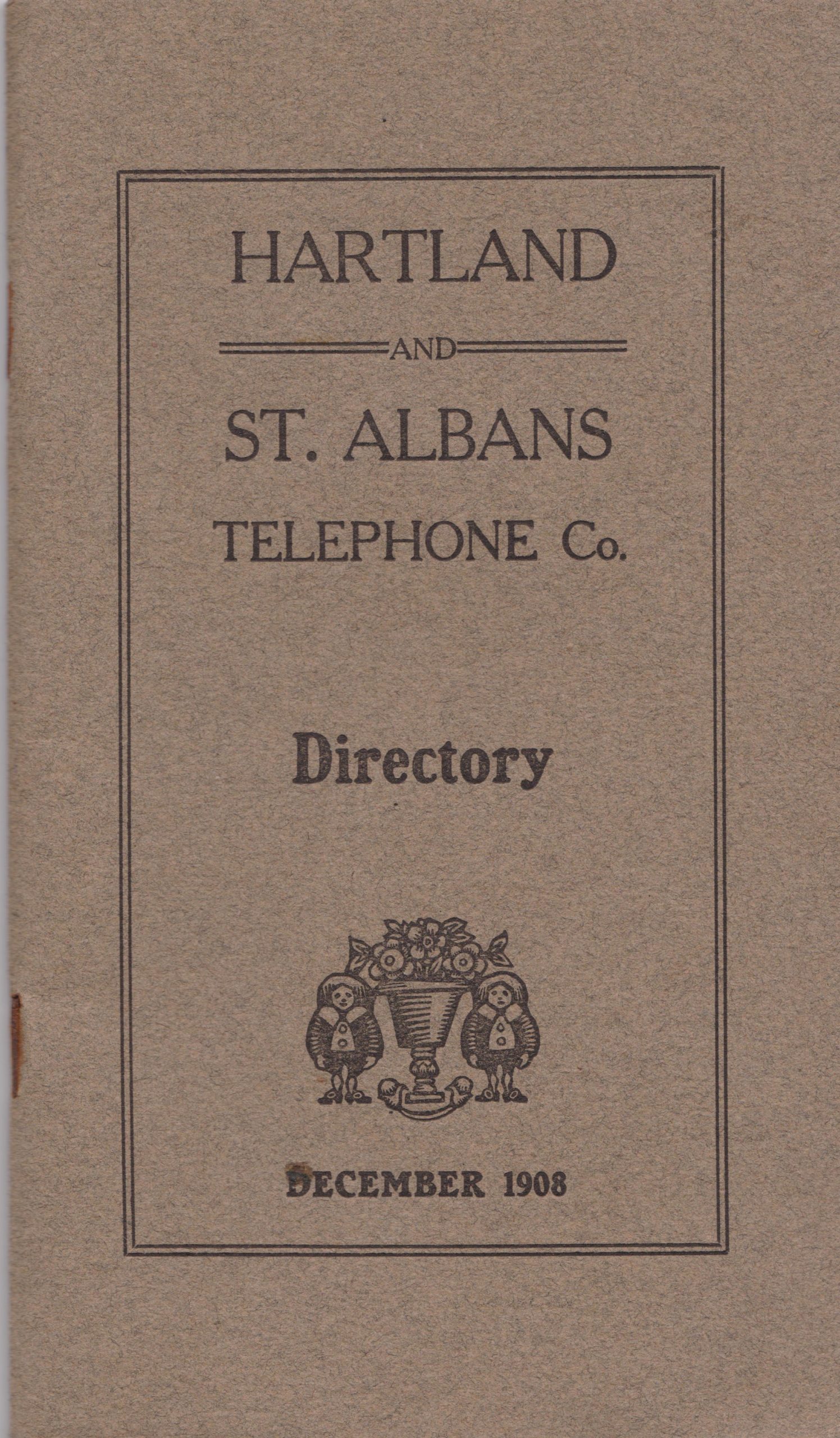
Cover of the Hartland & St. Albans Telephone Company Directory – 1908
*
In 1901, Lucian H. Goodwin sold his clothing business located in the building next to Walter E. M. Seekins’ Store where he had operated since 1896 to future U.S. Representative Clyde H. Smith. Goodwin went on to own a successful clothing store in Pittsfield which he operated until 1931. Clyde was also operating a hardware store at the time at the Latty Block on Main Street with his business partner Albert C. Bowman but sold his share that same year to Bowman to focus on his new clothing store acquisition. Clyde was joined in the clothing business by his younger brother Myron E. Smith operating as Smith Brothers Clothing until Clyde was elected Somerset County Sheriff in 1904 and sold the business to Elberton P. Dyer before moving to Skowhegan.
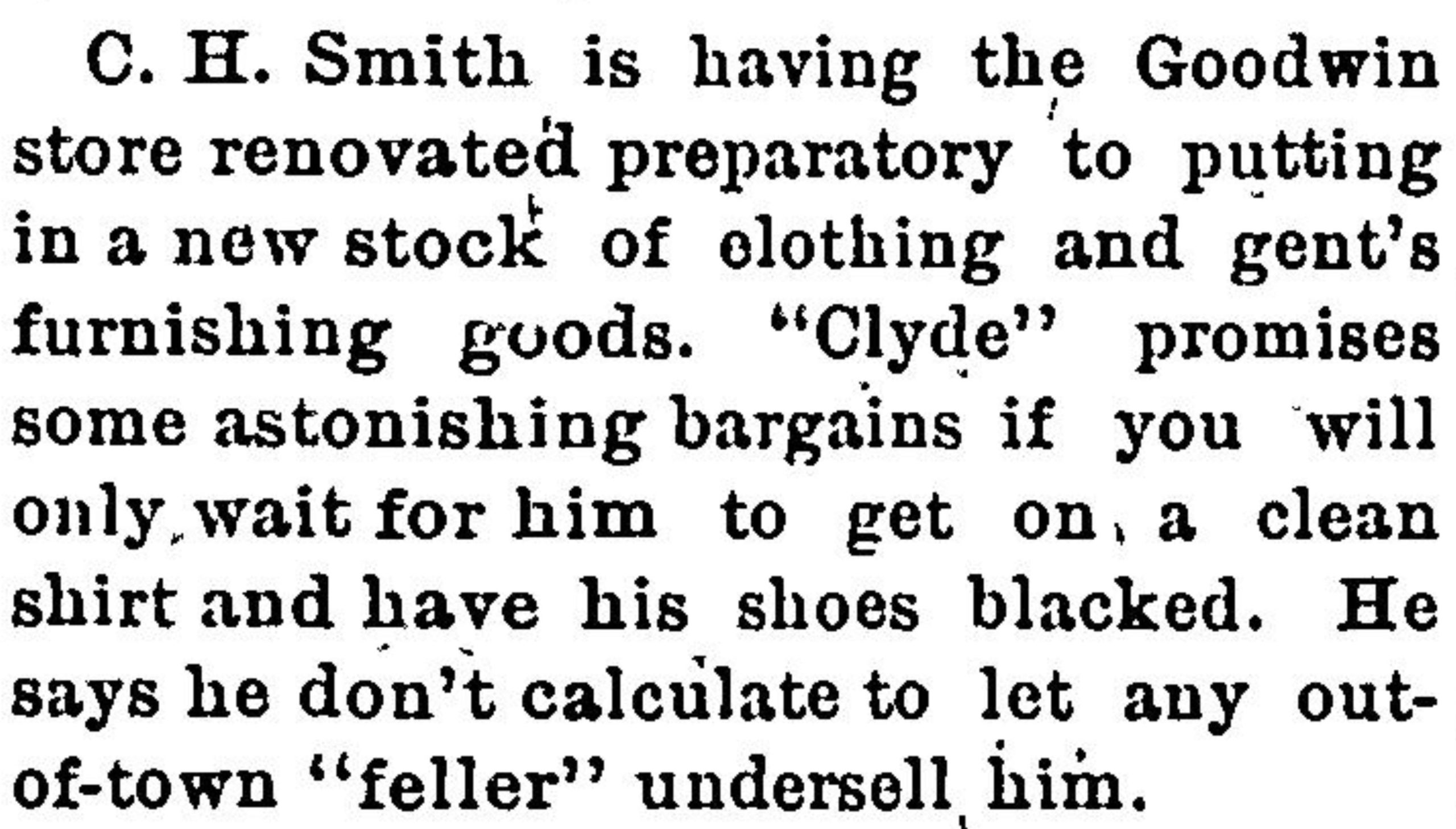
Newspaper Article – 1901
*
Elberton P. Dyer (1869-1947) first came from his native town of Brighton to Pittsfield to complete his education at MCI where he graduated in 1891. Later that year he married Hartland native Georgia Ellen Annis (1870-1963) and the newly wedded couple moved to St Albans where he was a Teacher in the common schools until 1895 as well as serving as St Albans School Superintendent and Town Clerk. In 1895, he became Principal of Hartland Academy and also served as Superintendent of Hartland Schools in 1897. In 1900, they moved to Newport with their 2 children Mervyn & Doris where he was Principal of Newport High School until health issues forced him to relinquish his teaching career in 1903.
He took a job as a traveling insurance salesman but after a weary year on the road, he and Georgia returned to Hartland with the children. In December of 1904, Elberton purchased the clothing stock and business of the Smith Brothers and opened “E. P. Dyer Clothing” in the building next to Walter E. M. Seekins’ store. He continued selling fire insurance from his store and also served for several years as Somerset County Treasurer. His wife Georgia is a sister of Wendell D. Annis who married Walter’s daughter, Edna Alice Seekins. Georgia is also a sister of Maude Annis who married Carl F. Randlett and a sister to Mary Annis who married John F. Connelly.
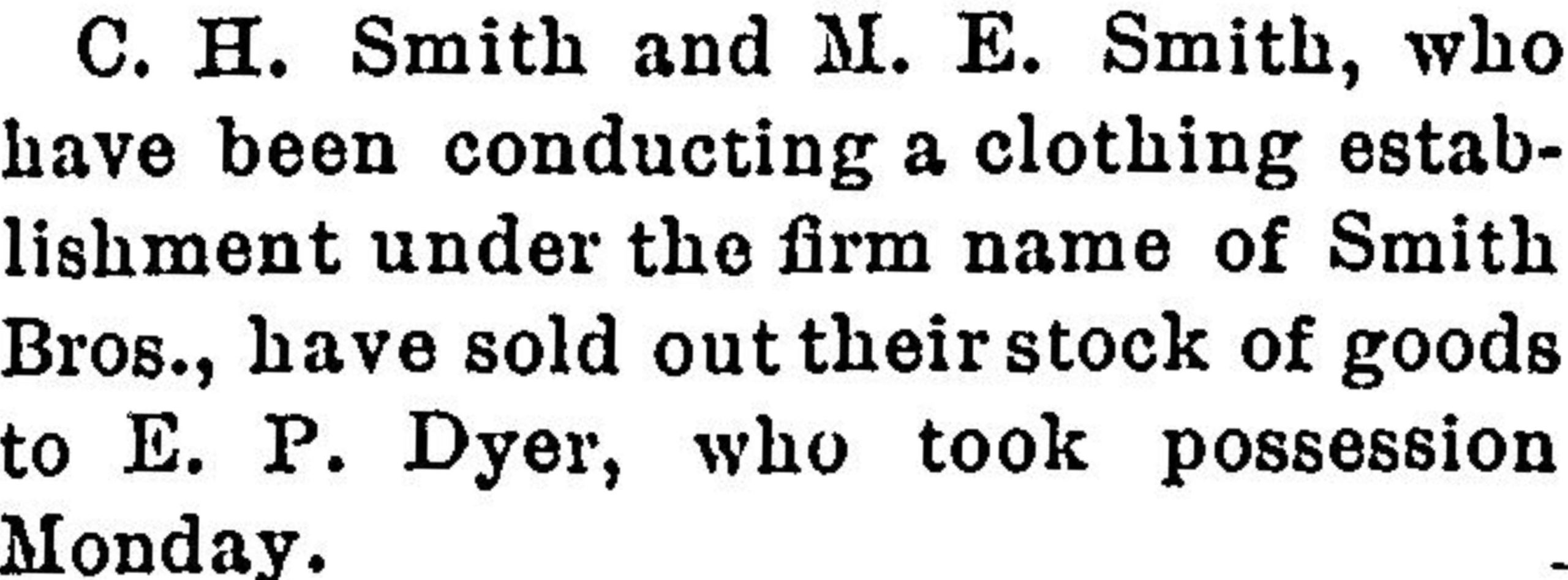
Newspaper Article – December 1904
*
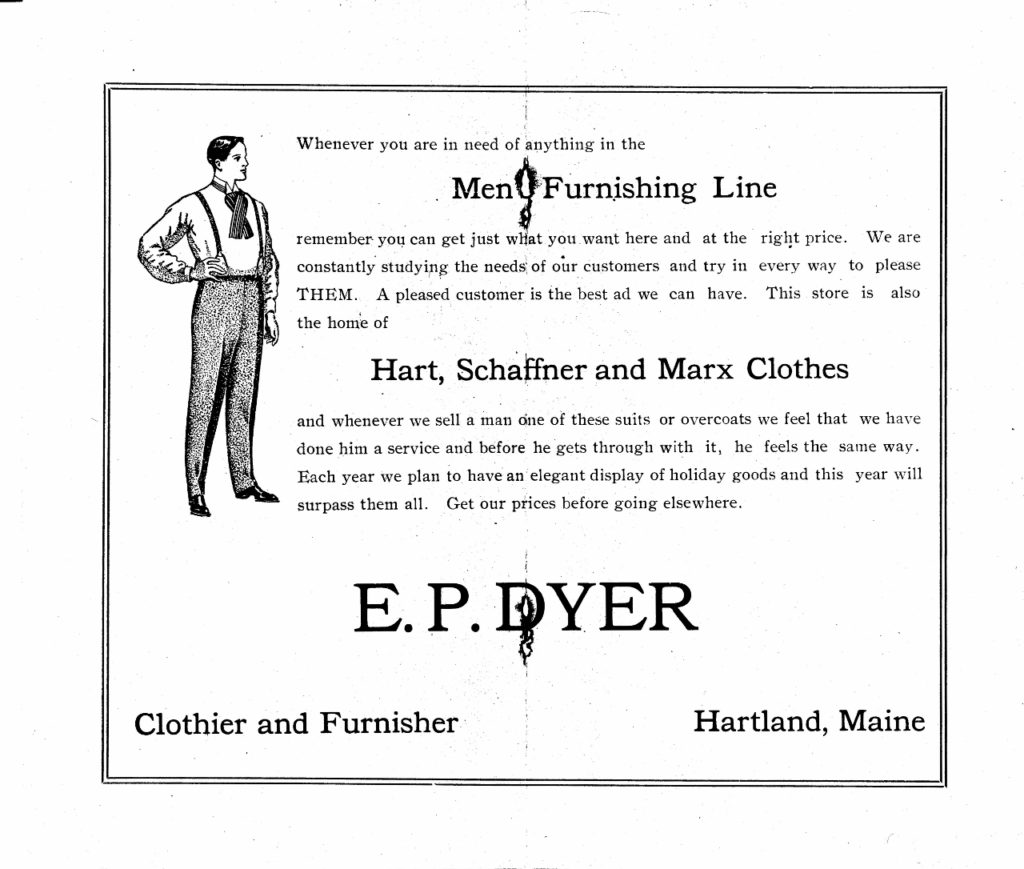
Elberton P. Dyer Clothing Store Advertisement – 1908
*
Willard F. Smith had been successfully operating his dry goods & groceries store on Commercial Street since 1891. He had also become involved in town affairs serving as a Town Selectman for a couple of years in the late 1890s before illness began reducing his daily role in his business around 1905. Soon after his sons had sold their clothing business to Elberton Dyer, the youngest son Myron E. Smith took over his ailing father’s business for a couple of years until Willard’s lingering illness finally forced him into retirement for good. He sold the building and, along with his wife and Myron, moved to Skowhegan in 1909 to join his eldest son Clyde where Willard remained until his death in 1919. Many of the Smith Family members are interred at Pine Grove Cemetery including cenotaphs for his father and 1st wife. It is currently unknown exactly when or to whom Smith sold his building or what business may have operated there soon after. It was eventually purchased by Mrs. Mary (Linn) Fuller, widow of Henry C. Fuller, who would lease it to A. R. Burton in 1914 as detailed below.
*
Several of the businesses on Commercial Street operating in 1905 are seen in the advertisement below including those operated by Iola Hatch, Elberton P. Dyer, George M. Lancey, Andrew H. Buck and Dr. Lynne H. Blanchard.
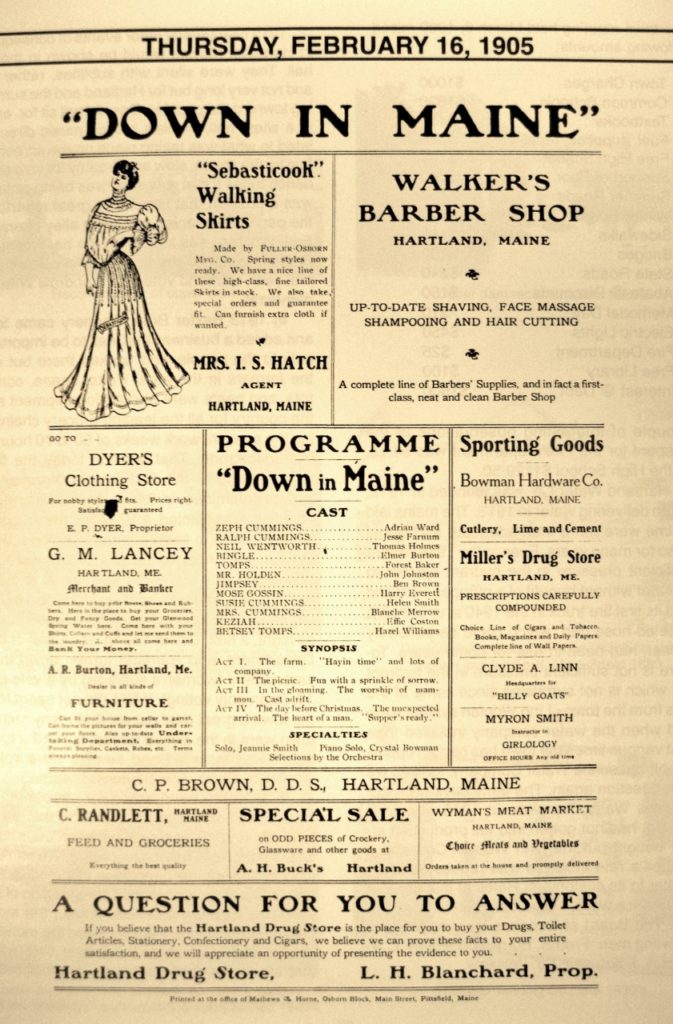
1905 Advertisement
*
In early 1906, Edward G. Varney partnered with Albion F. Buker to open Varney & Buker Sporting Goods at the former Butterfield Block until Varney’s unexpected death in 1912. The Buker Brothers had continued operating their harness business and were included in local business listings as such during this time period and into the early 1920s however the location of their business remains unclear as some articles suggest they may have moved to an unknown location on Main Street.
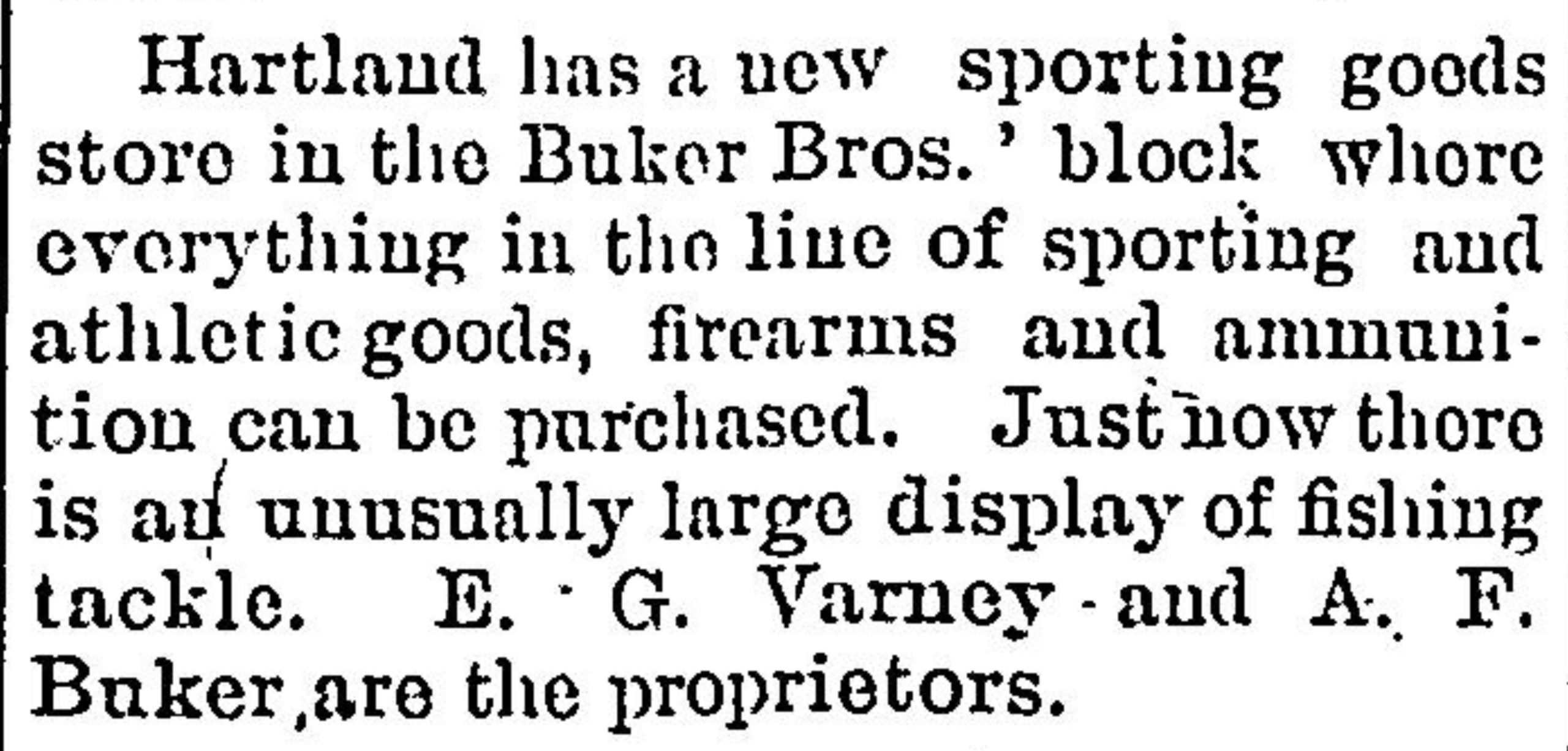
Varney & Buker Sporting Goods Store Notice – Published April 5, 1906
*
Edward G. Varney (1859-1912) was born in Lebanon, Maine and had worked at several woolen mills by the time he came to Hartland in 1890 to take a job at the Linn Woolen Mill as a Foreman in the spinning department. In 1908, he resigned from the woolen mill after he was appointed Hartland Post Master succeeding William B. Brown. He had just begun his 2nd term as Post Master when he was stricken with Pneumonia and passed away just a week later on January 29, 1912. His obituary noted the Linn Woolen Mill and local businesses closed during his funeral service.
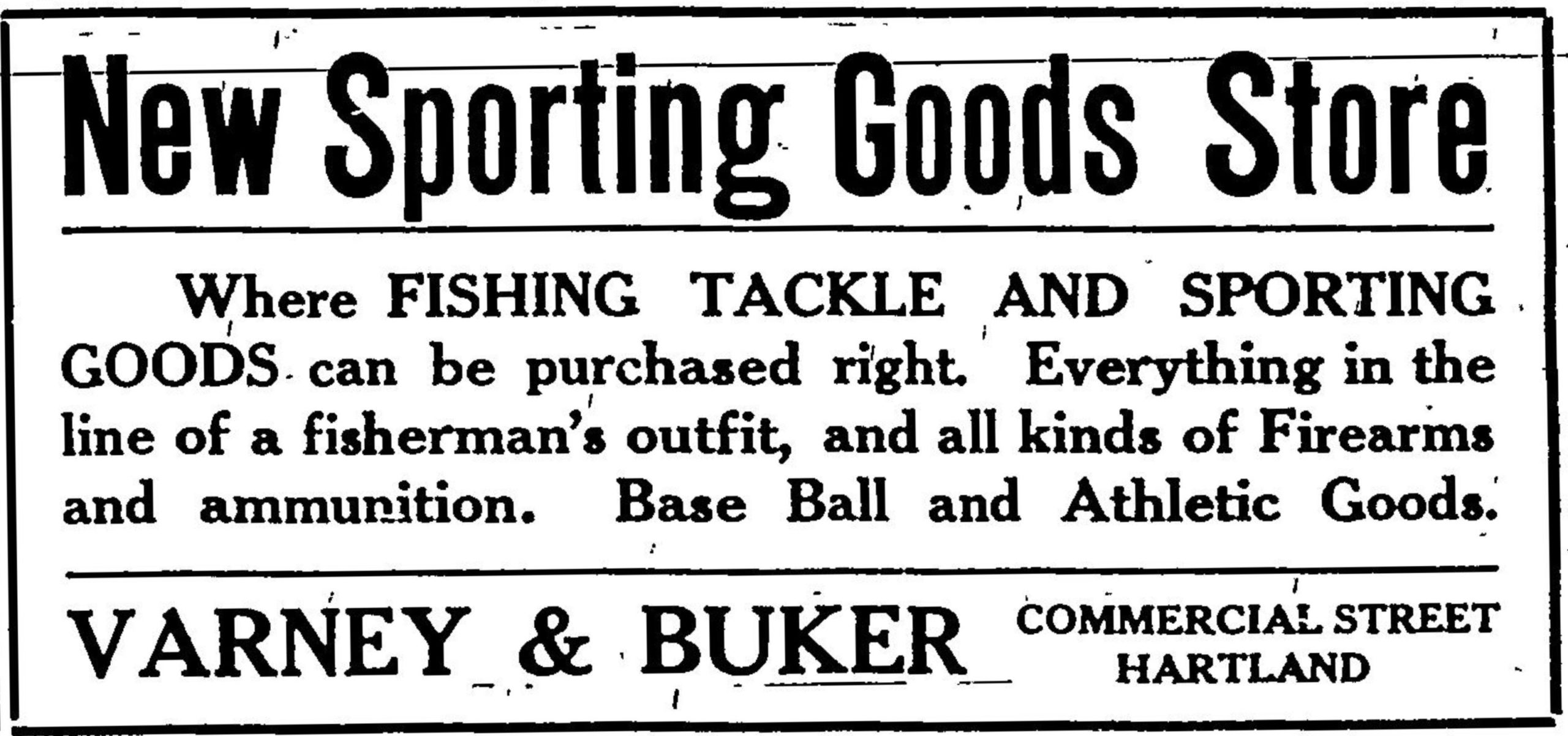
Varney & Buker Sporting Goods Ad – 1906
*
In 1906, owing to a serious lingering illness, Walter E. M. Seekins leased his Commercial Street Store Block to Halver H. Whitney who operated a store there for a couple of years. Although his health was failing, Walter purchased a farm in Harmony in 1907 where he and his wife Alice with some of their children and their spouses spent much of their time for the next few years while still maintaining their Blake Street residence. Walter suffered an attack of acute bronchitis in November of 1909 which severely aggravated his other long standing illnesses and his condition weakened further. He was recorded in the 1910 Census taken in April at their Harmony farm, but returned home to Blake Street in late June where he passed away on July 26, 1910 at 60yrs old. Alice then remained at the Blake Street residence until her death in 1933.
*
In 1906, the Linn Woolen Company renovated its original office building on Commercial Street and relocated its business operations from the Linn Block next door that had been built in 1888.
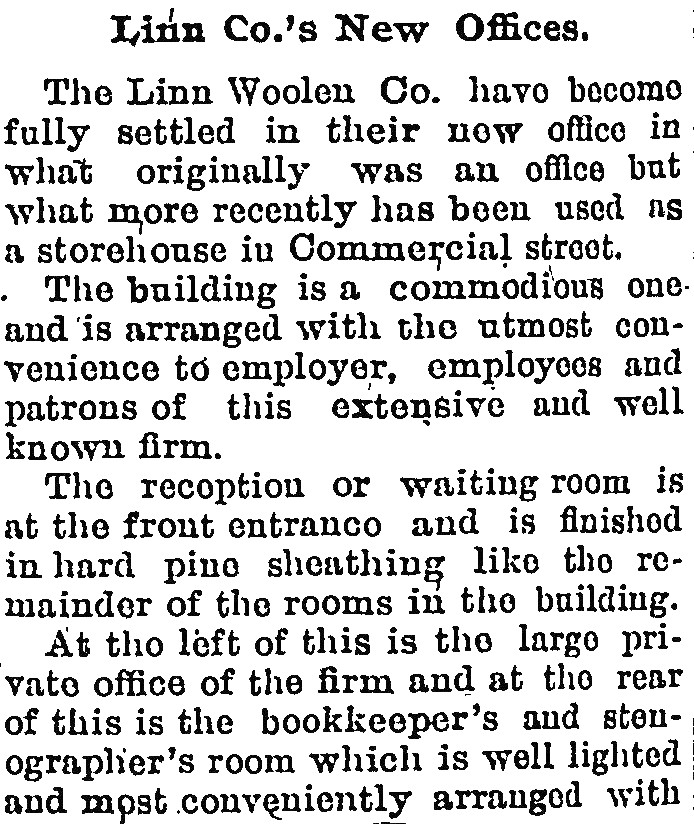
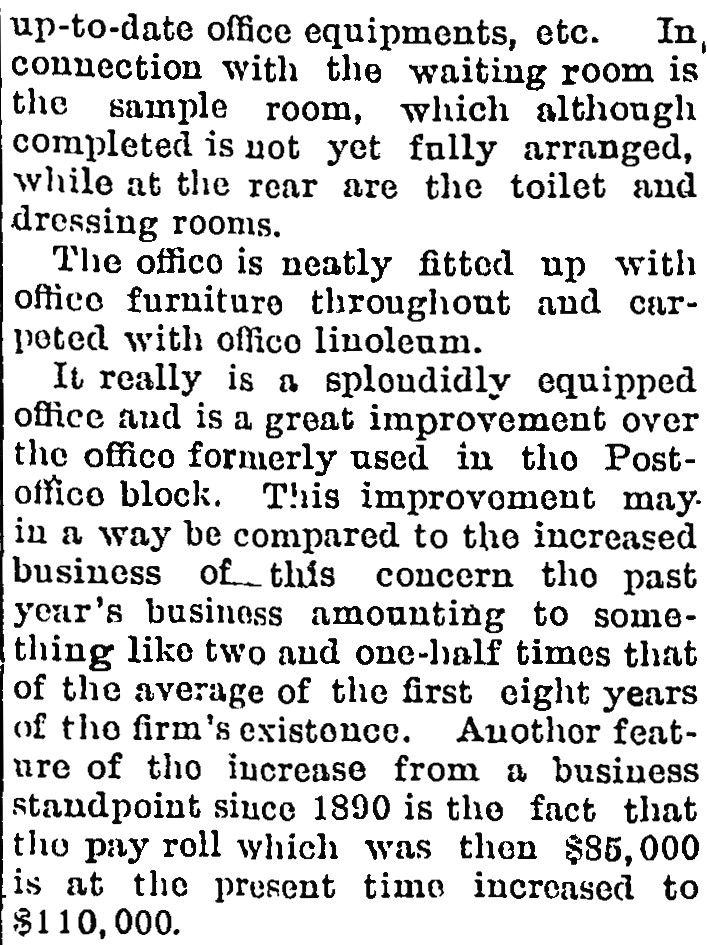
Published April 19, 1906
*

Renovated Original Linn Woolen Mill Office next to the Linn Block
*
In 1906, Ralph C. Hamilton purchased the drug store block where he had recently been hired in 1904 from A. W. Miller’s Drug Store to work for Dr. Blanchard as a Pharmacist. Dr. Blanchard resumed his medical practice full-time while he and his wife Carrie remained at their Blake Street residence with their daughter Meredith until moving to Pittsfield in 1915. Hamilton continued operating as the Hartland Drug Store remaining in business at the location for the next 45+ years until his death in 1955.
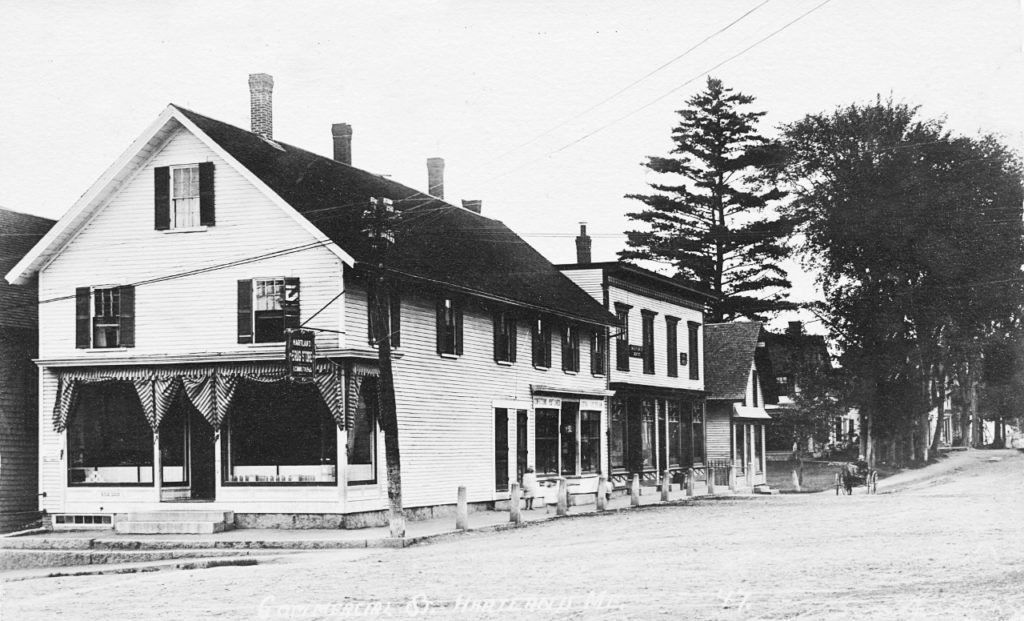
Hartland Drug Store operated by Ralph C. Hamilton – c1909
*
Ralph Carlton Hamilton (1882-1955) was born in Springvale, Maine and moved to Hartland shortly after 1900 when he took his first job as a druggist at A.W. Miller’s Drug Store while staying at the Park House Hotel. In 1910, he married his first wife Gertrude Mae Patterson (1877-1940), the daughter of Alexander S. Patterson & Evelyn Sanford. Following their marriage, Ralph & Gertrude lived with her parents at their home on the corner of Main Street & Mill Street where they remained for the rest of their lives. Ralph was very active in town, county & state politics and civic affairs throughout his life including serving as President of Hartland Academy Board of Trustees, Maine House of Representatives and Hartland Town Treasurer. Ralph was also a partner in the Hamilton & Young Company which first began operations on Commercial Street in 1915 making skirts.
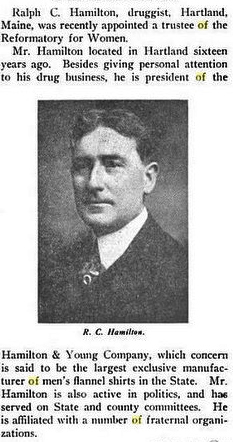
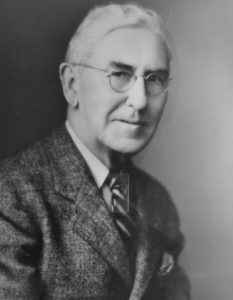
Ralph Carlton Hamilton
*
In 1908, Edwin Herrick Whitcomb, originally from Mercer, leased the W. E. M. Seekins Store Block where he operated as E. H. Whitcomb Dry Goods including shoes, rubber boots and moccasins. His wife Alice McLaughlin also had a millinery business in the location until late 1914 when they moved to her native town of Farmington where they remained until their deaths.
*
A dated photo provides details of how the Warren Square area appeared at the time of this Independence Day Gathering in 1908.
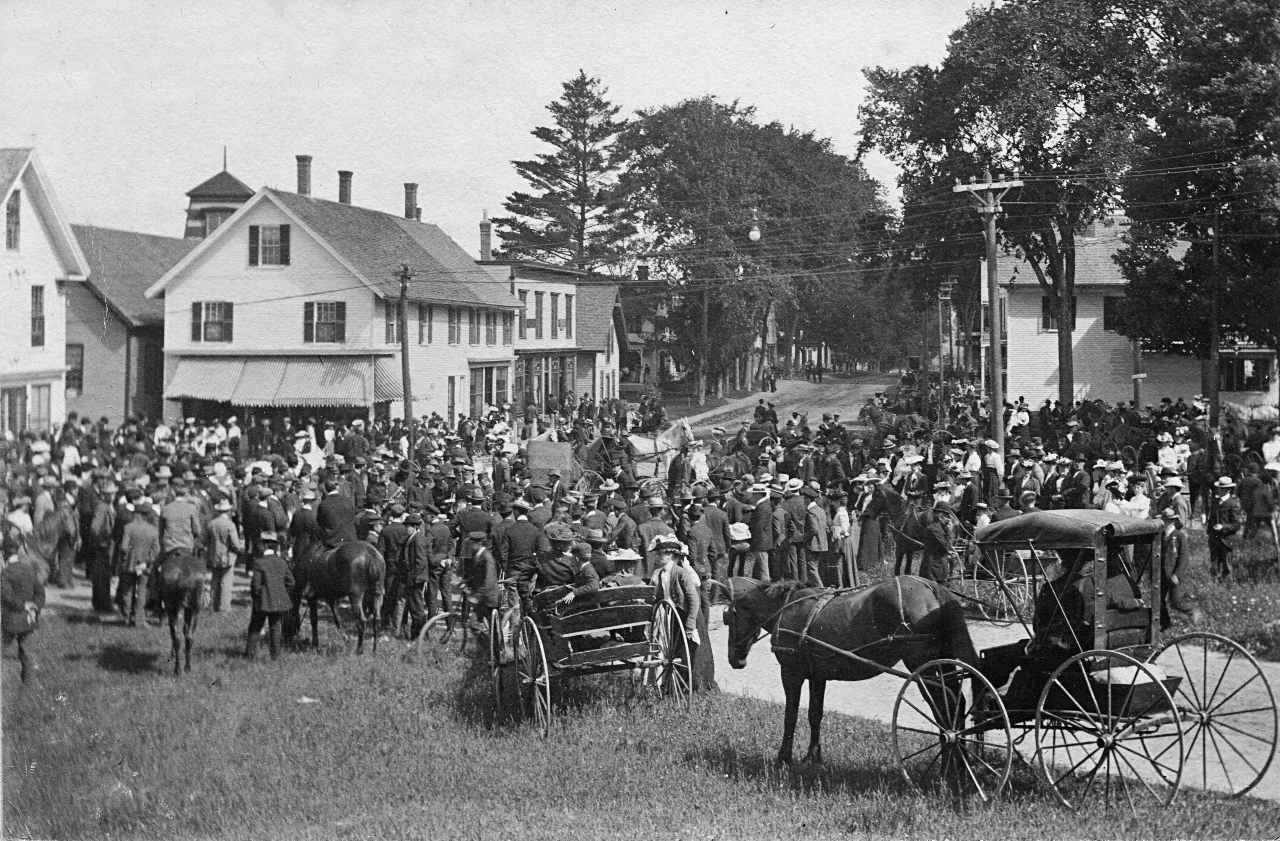
Independence Day Celebration – July 4, 1908
*
Following Ira & Maria Page’s move to Skowhegan in 1909, the Lagorio Brothers of Pittsfield opened a store in Hartland on Commercial Street at the former Gorham Prescott Block operating as Lagorio Brothers Fruit Store.
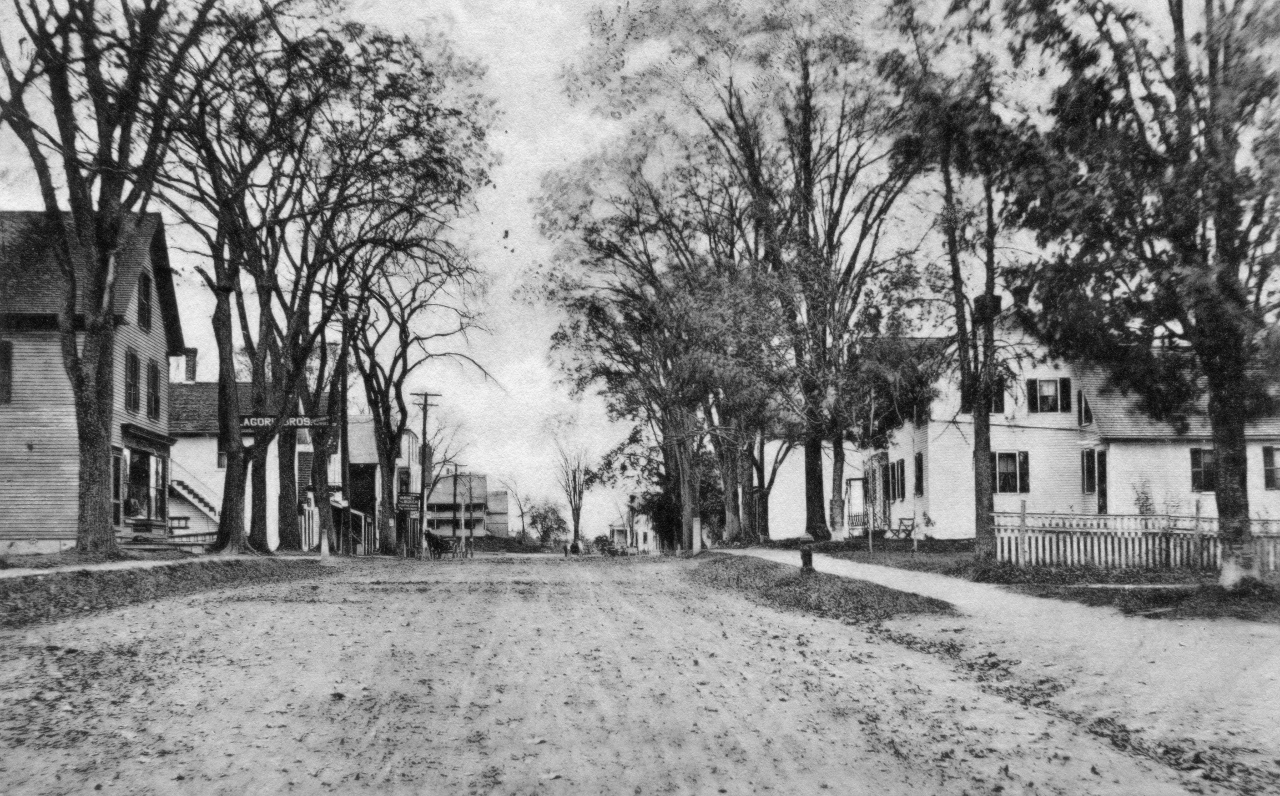
Lagorio Brothers Fruit Store – Commercial Street
*
In 1909, Elizabeth A. Linn (1879-1973) opened her store in the rear north section of the Hartland Drug Store Block operating as “The Specialty Store”. The store featured fountain soda, ice cream, stationary supplies, various confectioneries and post cards as well as many other items. Elizabeth is the oldest child of William Linn, Jr & Luella Greene and a Great Niece of Archibald Linn.
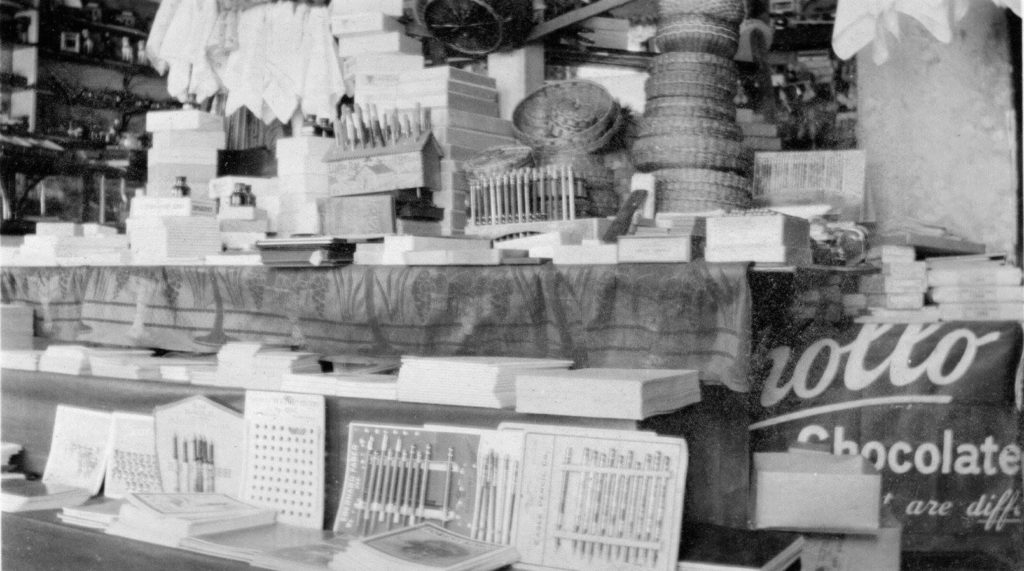
Window Display at The Specialty Shop
(Photo courtesy of Joan Joy Tibbetts)
*
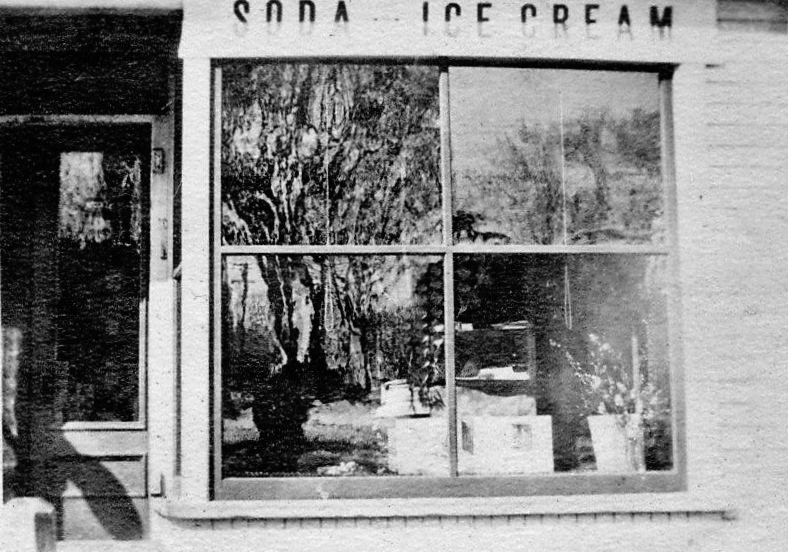
Store Front of The Specialty Shop
(Photo courtesy of Joan Joy Tibbetts)
*
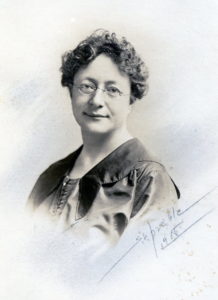
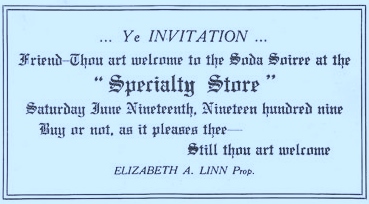
Elizabeth A. Linn & 1909 Invitation to The Specialty Store Grand Opening
*
An undated photo taken from Academy Street with the Hartland Drug Store, Linn Block and original Linn Woolen Mill Office seen along Commercial Street with G.M. Lancey’s store & residence in the foreground. The presence of G.W. Furber’s former store still standing next to the woolen mill on Main Street until 1917 and Lancey’s deck built in 1901 gives us a rough idea of the time frame the photo was taken.
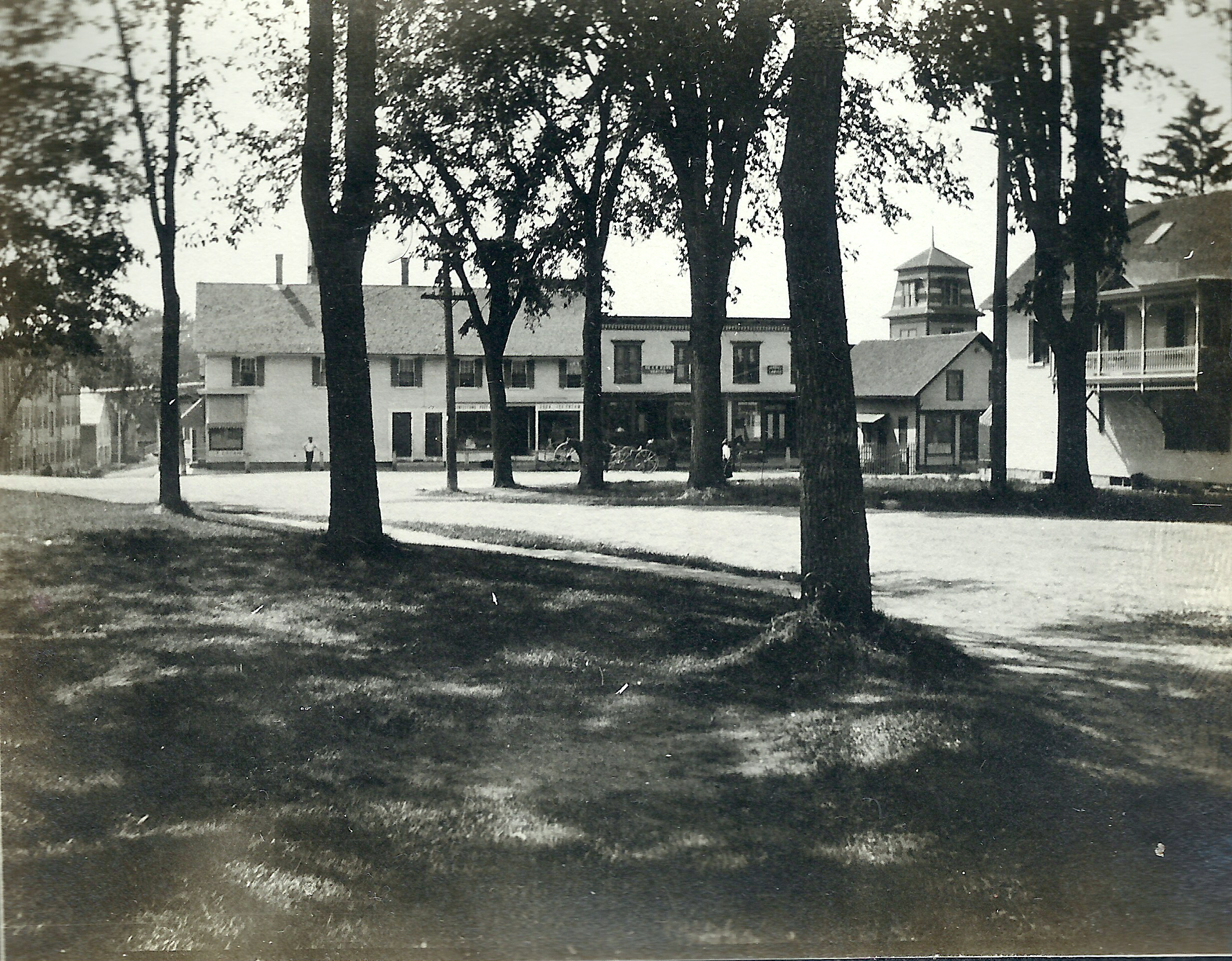
Commercial Street from Academy Street
*
In early 1910, major renovations under the guidance of Post Master Edward G. Varney were completed at the Linn Block on Commercial Street as the Post Office moved from its original location on the left side of the 1st floor to the right side which had been occupied by the Linn Woolen Mill Office until 1906. The Post Office would remain at these new quarters until 1922 when it was relocated to the E.E. Latty Block on Main Street.
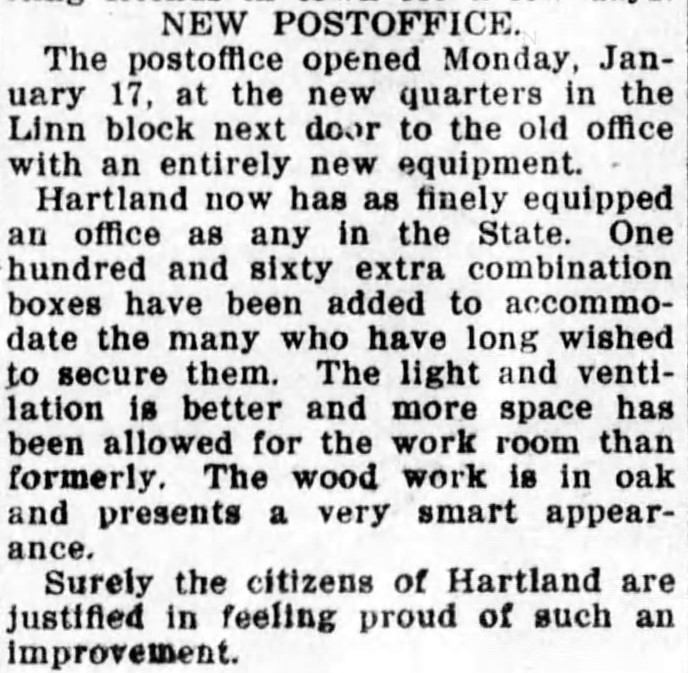
New Post Office Location – Published January 27, 1910
*
In the early 1900s, shoppers had a vast selection of dry goods, groceries, clothing, pharmaceuticals and various services to choose from a large number of local merchants in Hartland including those conveniently located together along Commercial Street.
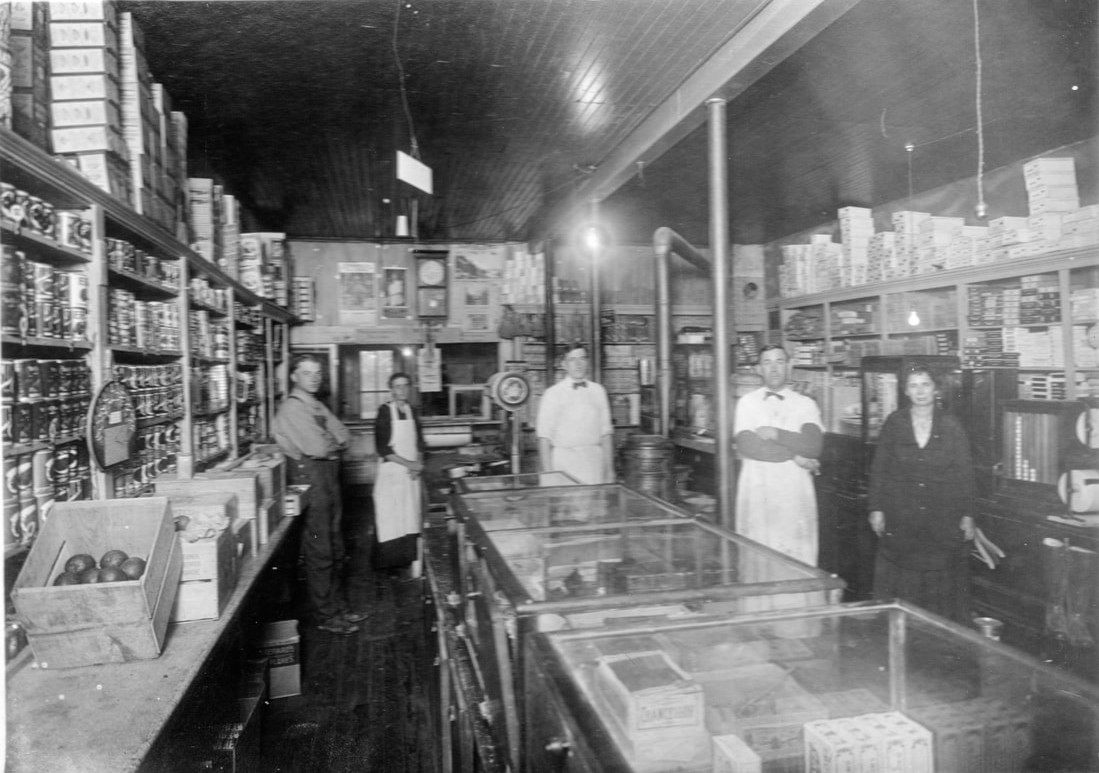
Interior of G. M. Lancey’s Dry Goods & Groceries Store – c1915
(Photo courtesy of Joan Joy Tibbetts)
*
Soon after the Post Office relocated in 1910, Perley Moses Hanson and his wife Alberta “Bertie” Wilkins moved from Palmyra to Hartland with their 2 young children Maurice & Gwendolyn Hanson. Bertie had begun a millinery business around 1908 in Hartland before opening her own store at the former Post Office location in the Linn Block while the family resided further up Commercial Street. Bertie used the initials of her nickname, maiden name and surname for the store’s title and expanded her millinery offerings to include a broader line of clothing and accessories.

Advertisement – 1912
*
On February 27, 1911, Lagorio Brothers Fruit Store was heavily damaged by fire. Numerous photos of the aftermath of the huge fire were taken by several people as seen below. The building was eventually remodeled although its function for the next several years is unclear.
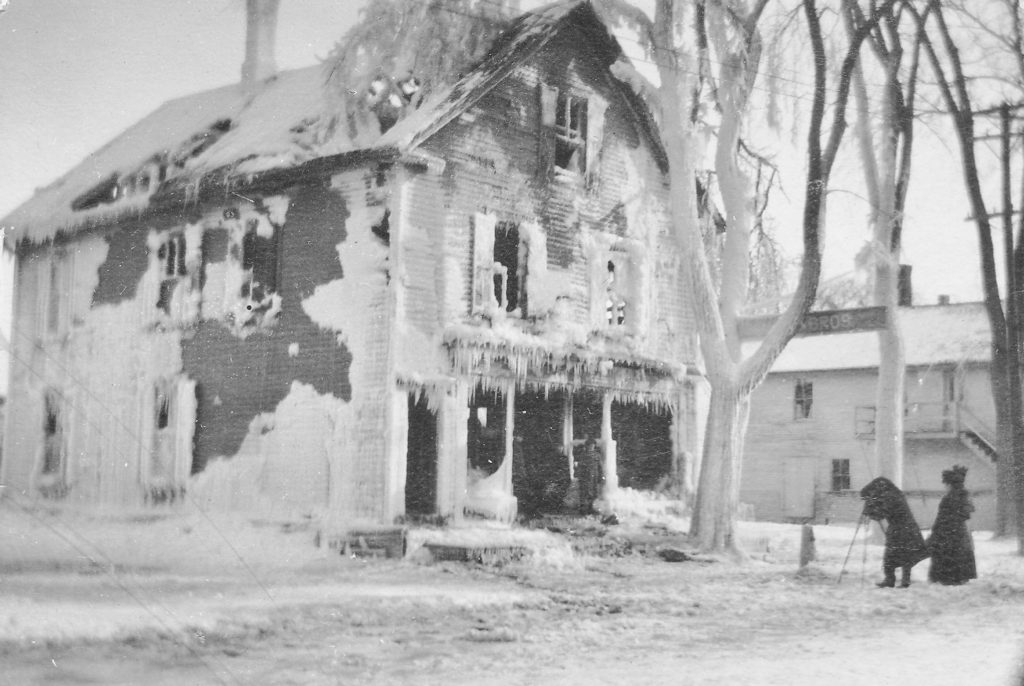
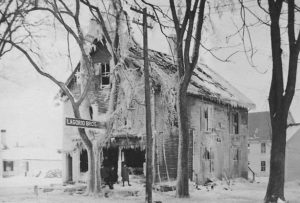
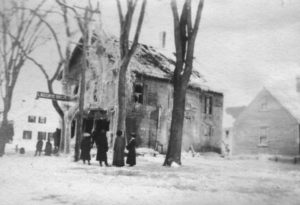
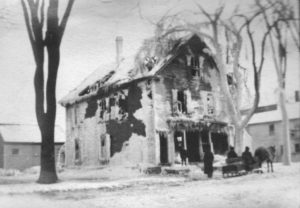
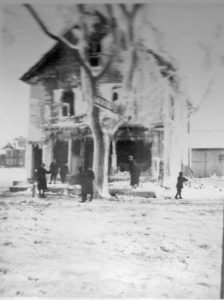
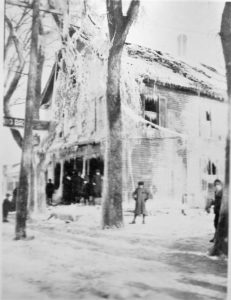
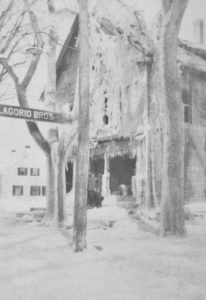
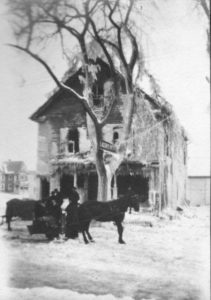
Lagorio Brothers Fruit Store Fire – 1911
*
Seekins Street had become an official public street connecting Commercial Street to Blake Street and in 1910 a new Grange Hall was built on it.
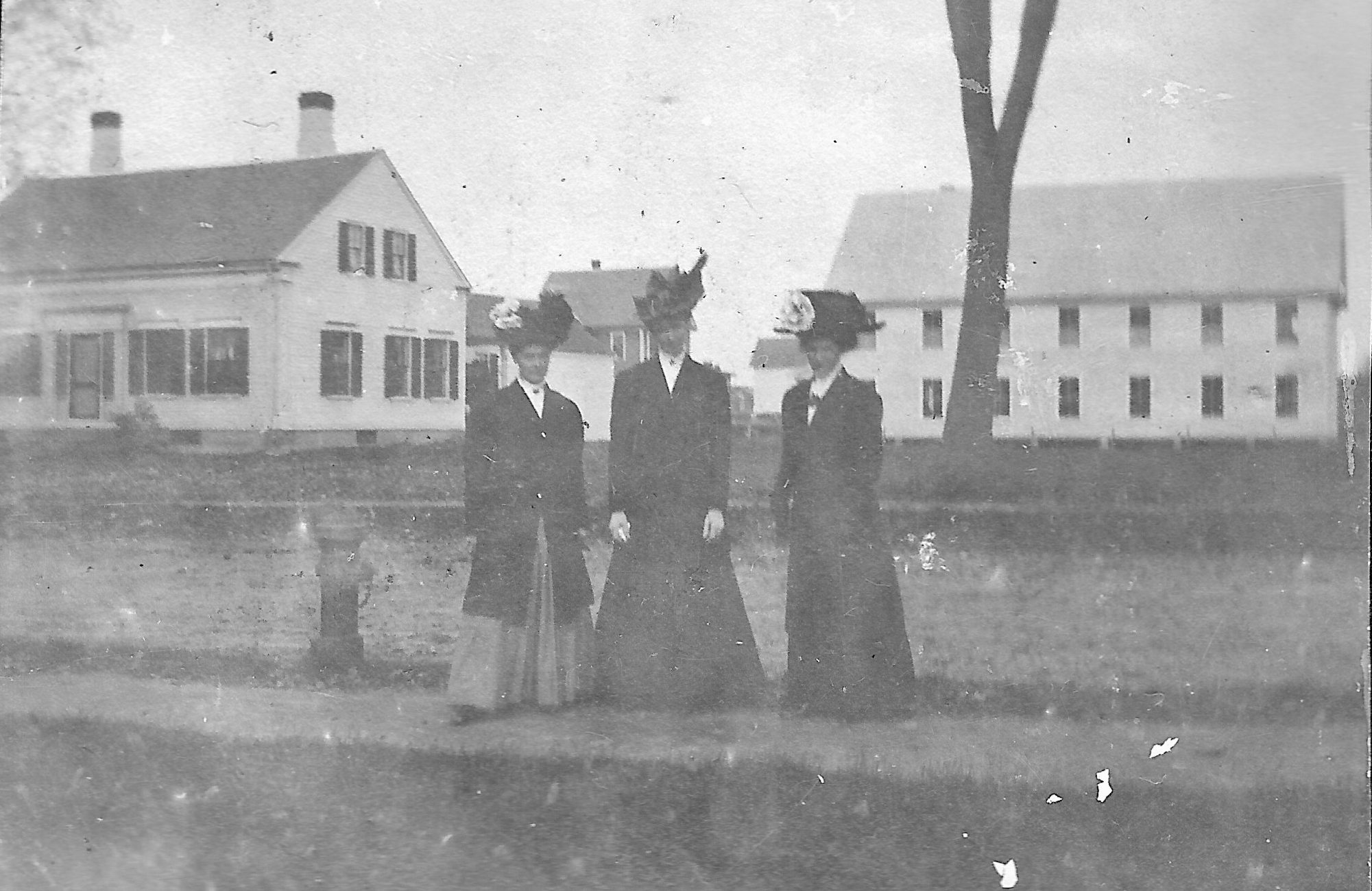
Former Seth Webb Residence on Commercial Street with new Grange Hall on Seekins Street in the background
(Courtesy of Maggie Smith)
*
Electrical and telephone service would make their way to outer Commercial Street in the early 1900s, but paved roads were still years away.
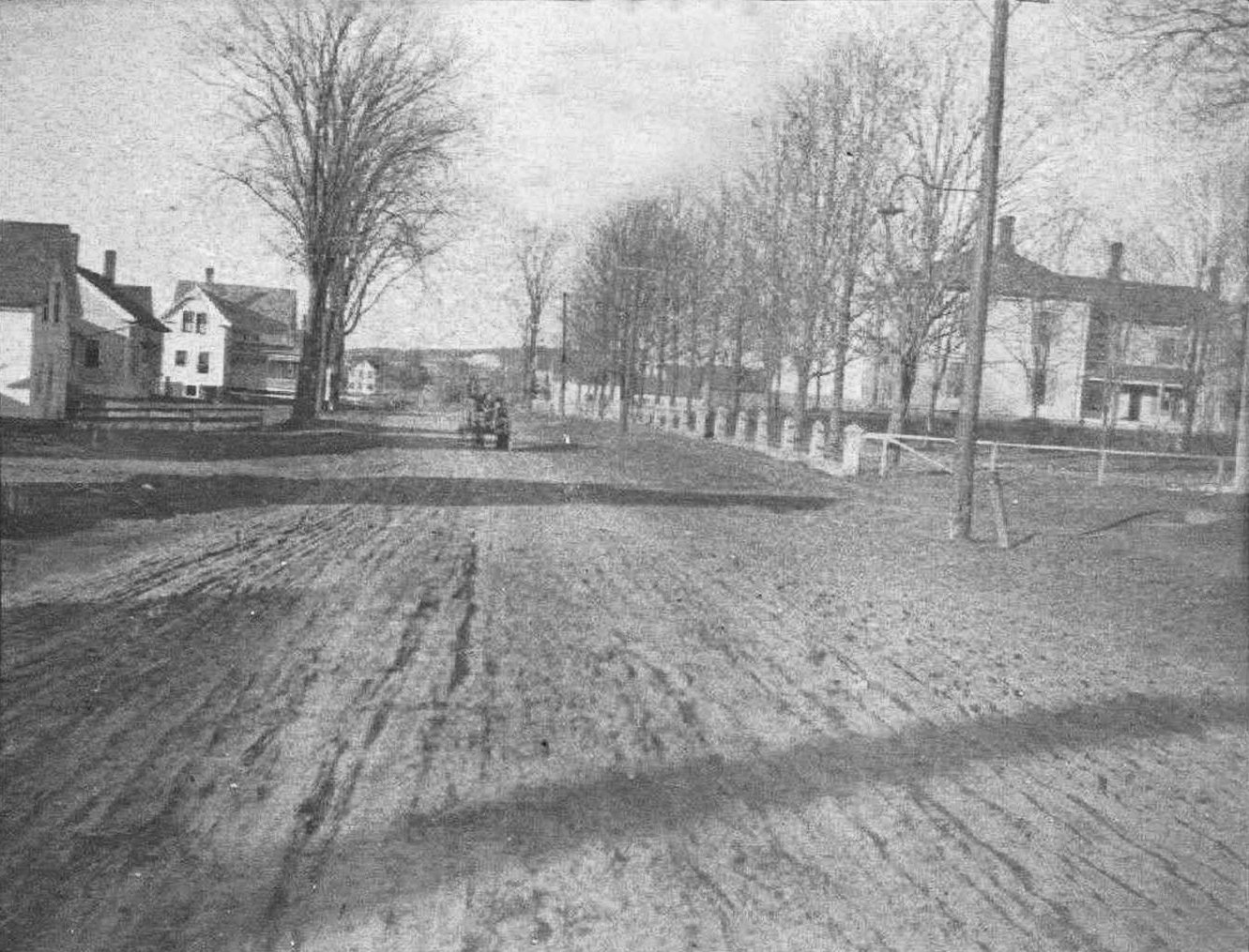
Commercial Street with the former Greenville Shaw’s Maple Lane Farm to the right
*
In 1914, Allen R. Burton entered into a 15 year lease at the former C. H. Skinner & W. F. Smith Store Block on Commercial Street then owned by Mrs. Mary (Linn) Fuller where he moved his business from the former Fairgrieves Carding Mill. His son, Elmer Merle Burton (1889-1947), had been working with Allen since he was a young man and was a licensed Embalmer. Elmer had become a partner in the family business by the time they moved to the new location where they eventually dropped furniture sales and focused on hardware sales on the 1st floor and an undertaking and funeral parlor operation on the 2nd floor operating as “A. R. Burton & Son Hardware & Undertaking”. Elmer noted himself as an Embalmer on his 1912 marriage certificate to Marguerite Hatch (1893-1977).
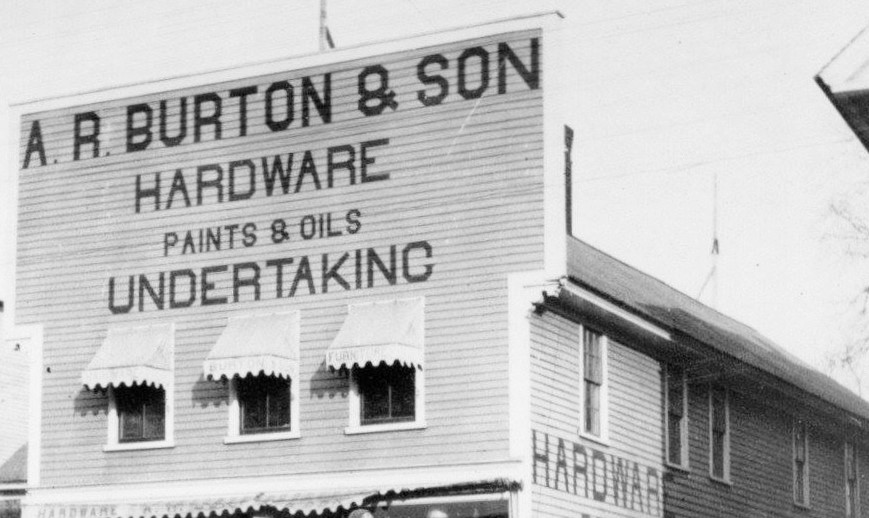
A. R. Burton & Son Hardware and Undertaking
*
Looking south along the western side of Commercial Street about 1912 with some of the known merchants at the time. The Hartland House on Elm Street and the new Bandstand built in 1911 at Warren Square are also seen in the background.
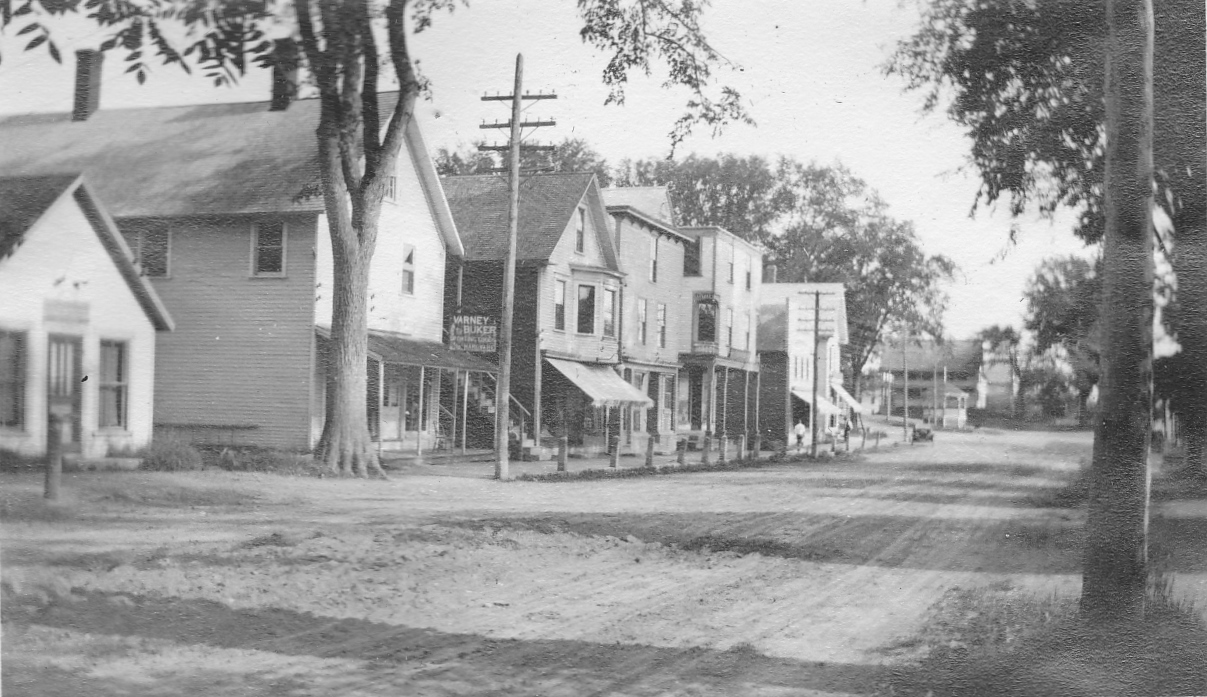
(L-R): Unknown | Varney & Buker | D. A. Packard | E. P. Dyer | E. H. Whitcomb | (future) A. R. Burton | G. M. Lancey
*
Looking north along the eastern side of Commercial Street with some of the known merchants at the time. The original Linn Woolen Mill Office had been renovated by this time and the Post Office moved into its new location in the Linn Block.
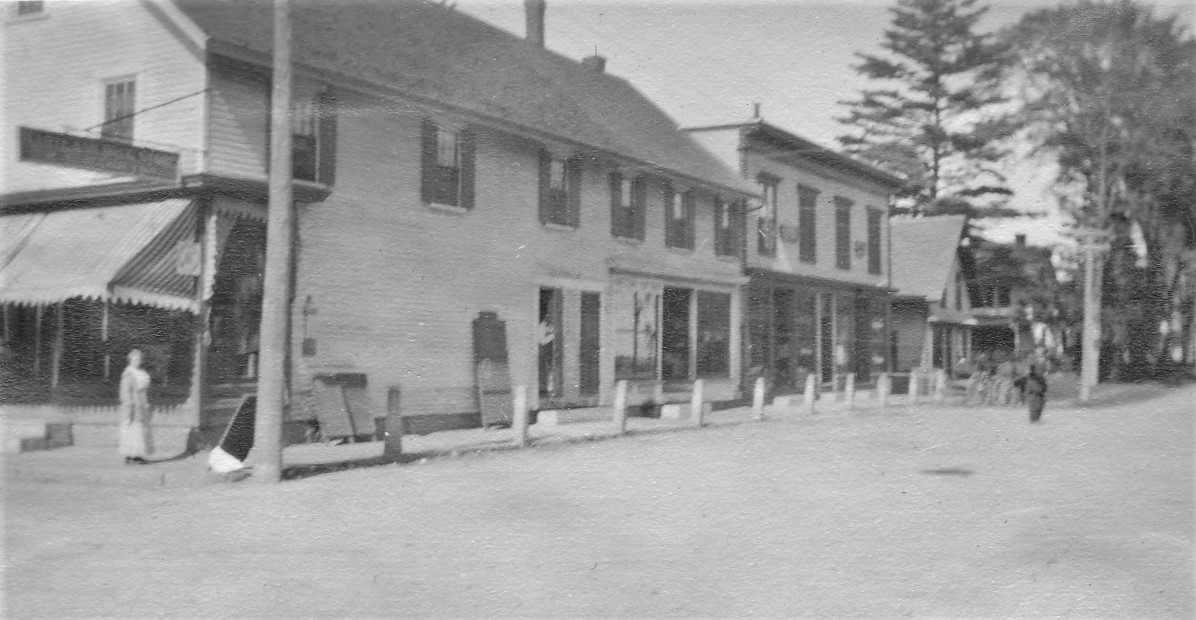
(L-R): Hartland Drug Store w/The Specialty Store | B. W. Hanson & Post Office | Linn Woolen Mill Office | Former Linn Residence – c1914
*
Christmas Ad for Elizabeth Linn’s store located in the north side of the Hartland Drug Store Block.
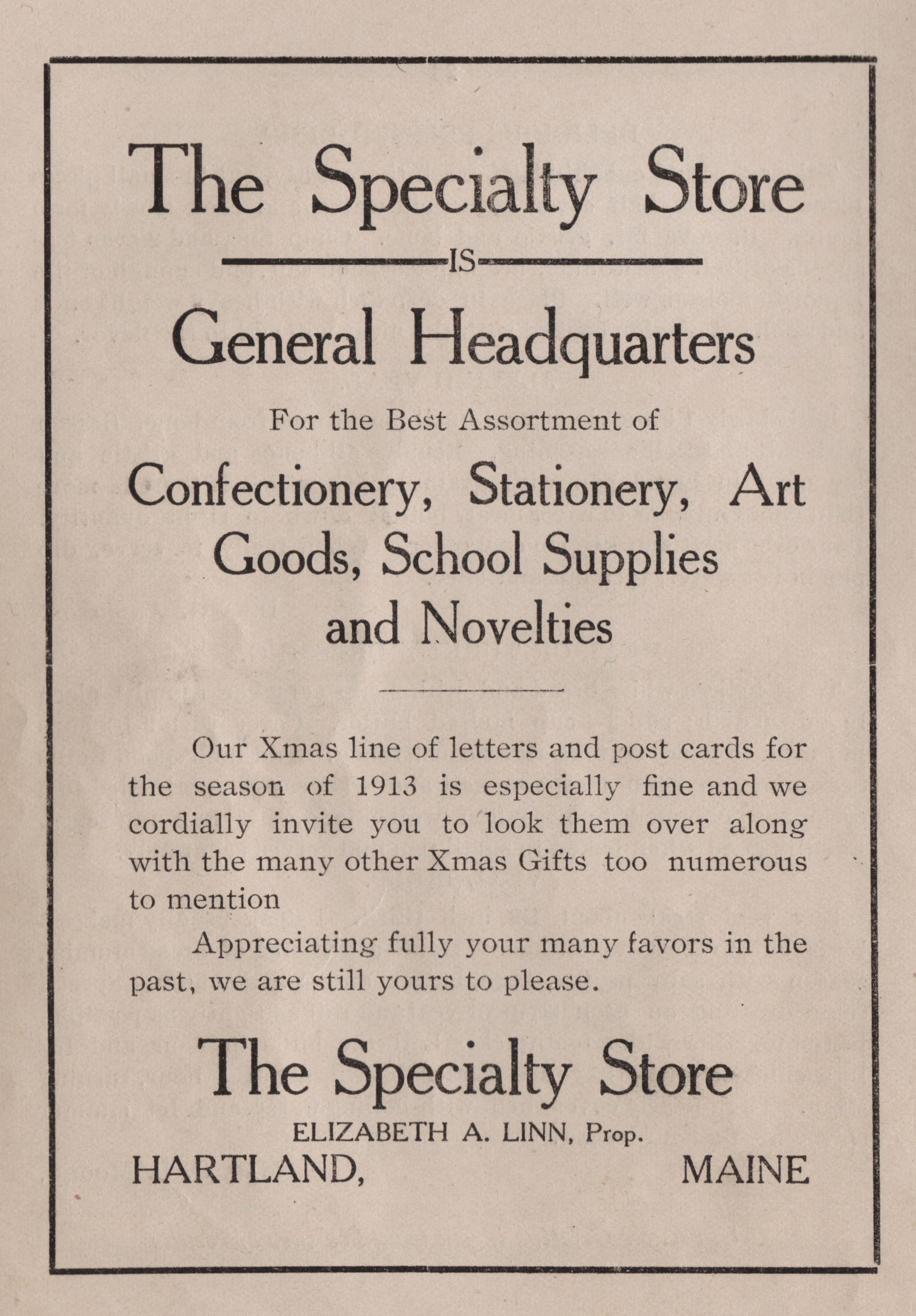
The Specialty Store Advertisement – 1913
*
On April 15, 1914, fire heavily damaged Elberton P. Dyer’s Clothing Store Block on Commercial Street. He renovated the building soon after and reorganized the business with his son-in-law Ralph Edward Nutting as his partner and began operating as the Dyer Clothing Company which Ralph managed. Another article about the fire from the Waterville Sentinel noted water damage to the D. A. Packard Store Block to the north and the E. H. Whitcomb Store Block to the south owned by Alice Seekins.
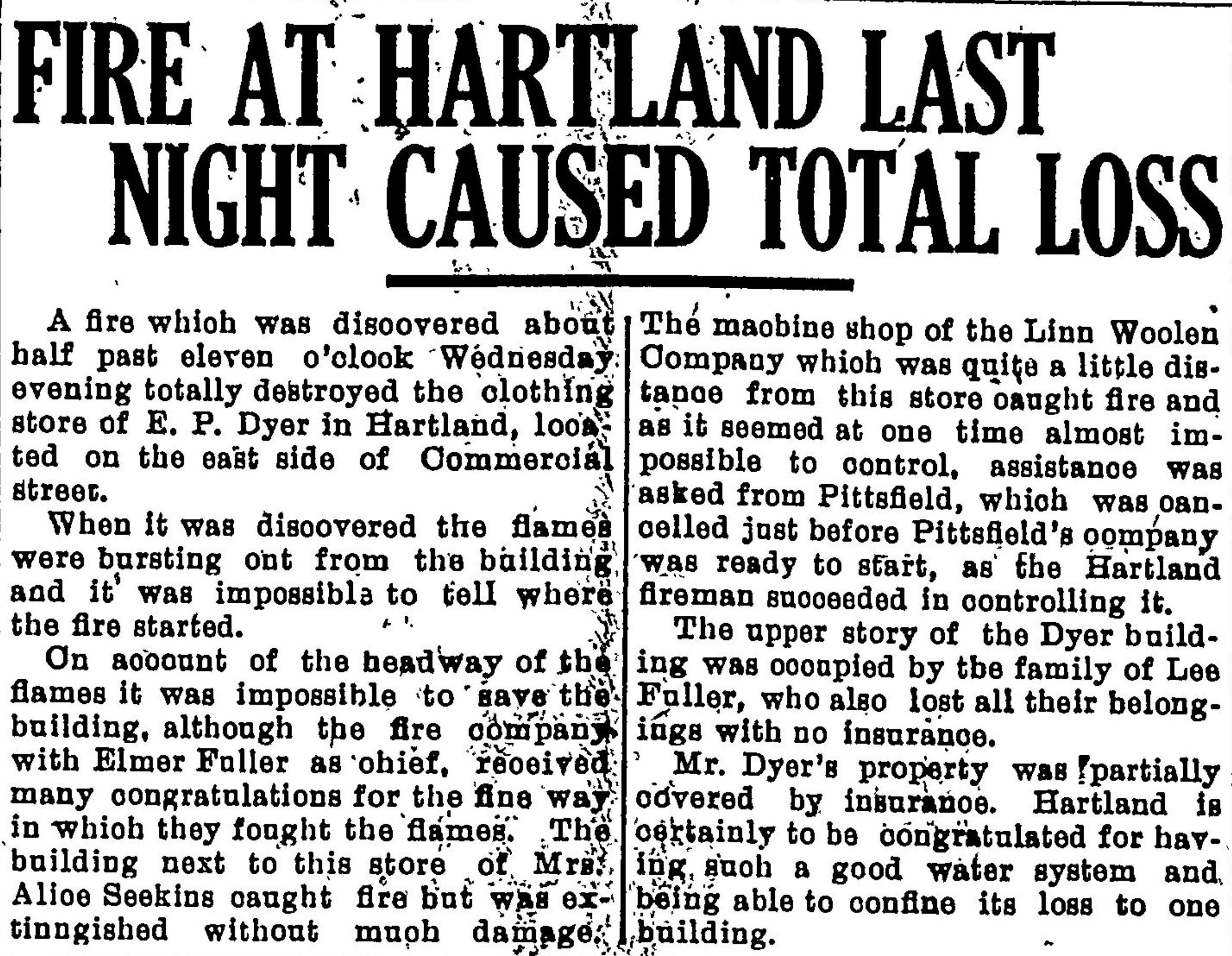
Pittsfield Advertiser – April 16, 1914
*
By 1915, the Linn Manufacturing Company had run into substantial financial hardship and filed for bankruptcy. A short term lease was made with the American Woolen Company who continued operations while Linn Trustees sought a viable long term tenant. Although plans for an auction to sell the mill were announced, a purchase agreement with the American Woolen Company was made before the auction took place and they began full-time operations in Hartland in 1916.
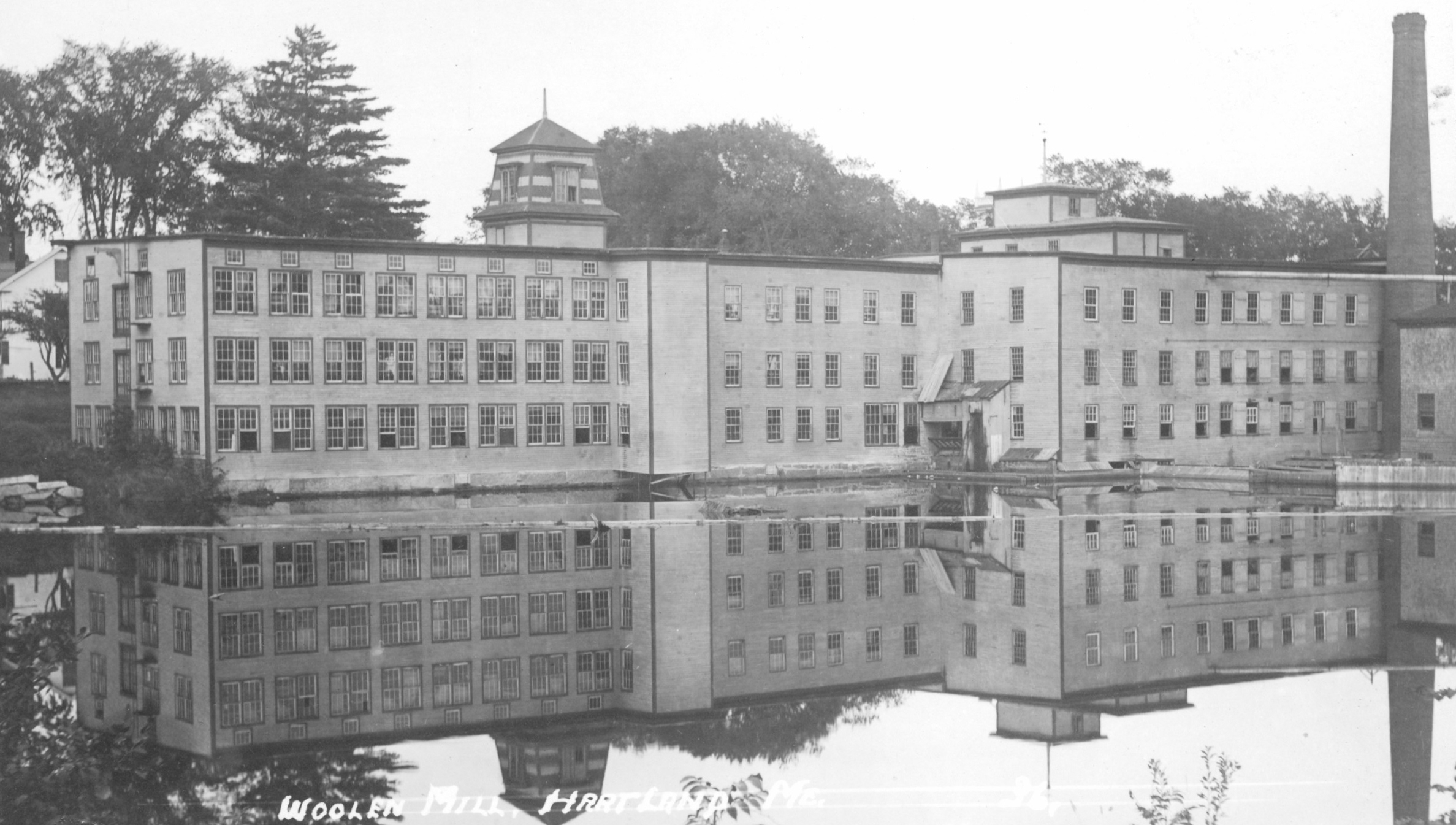
American Woolen Company
*
Under the terms of the sale, many of the Linn Manufacturing Company holdings in Hartland, including the woolen mill buildings, became the property of the American Woolen Company. This included many of the Linn Family Real Estate holdings including some two dozen additional residential houses and lots throughout Hartland. Several of these houses and lots were on Commercial Street including the former Archibald & Grace Linn residence, Linn Woolen Mill Main Office, Linn Block, former Gorham Prescott Block and the former Greenville Shaw Maple Lane Farm occupied at the time by Robert Wilson Linn, Sr.
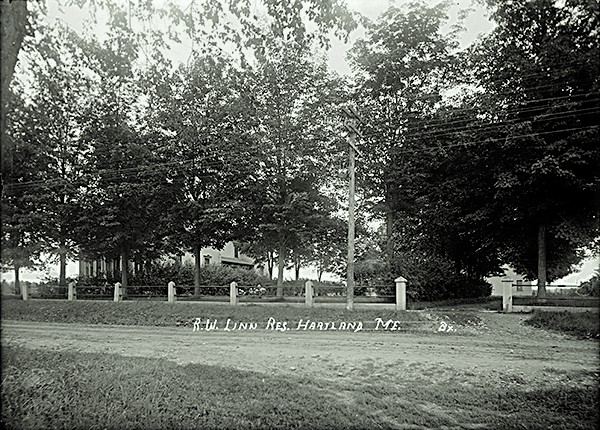
Former Maple Lane Farm occupied by Robert Linn, Sr – c1915
*
On November 1, 1915, Ralph C. Hamilton and James C. Young partnered in a skirt manufacturing business venture and leased the former Walter E. M. Seekins Store Block on Commercial Street following E. H. Whitcomb’s departure from Walter’s widow Mrs. Alice Seekins to locate a shop. Within a week, as reported in a November 17, 1915 Morning Sentinel article, they had 20 Singer sewing machines installed and were producing sample skirts reporting they hoped to eventually employ upwards of 50 people. Following successful operations at the Commercial Street location, they incorporated as the Hamilton & Young Company and in late 1916 constructed a large building on Mill Street known as the Daylight Skirt Factory where they moved the business to expand production capabilities.
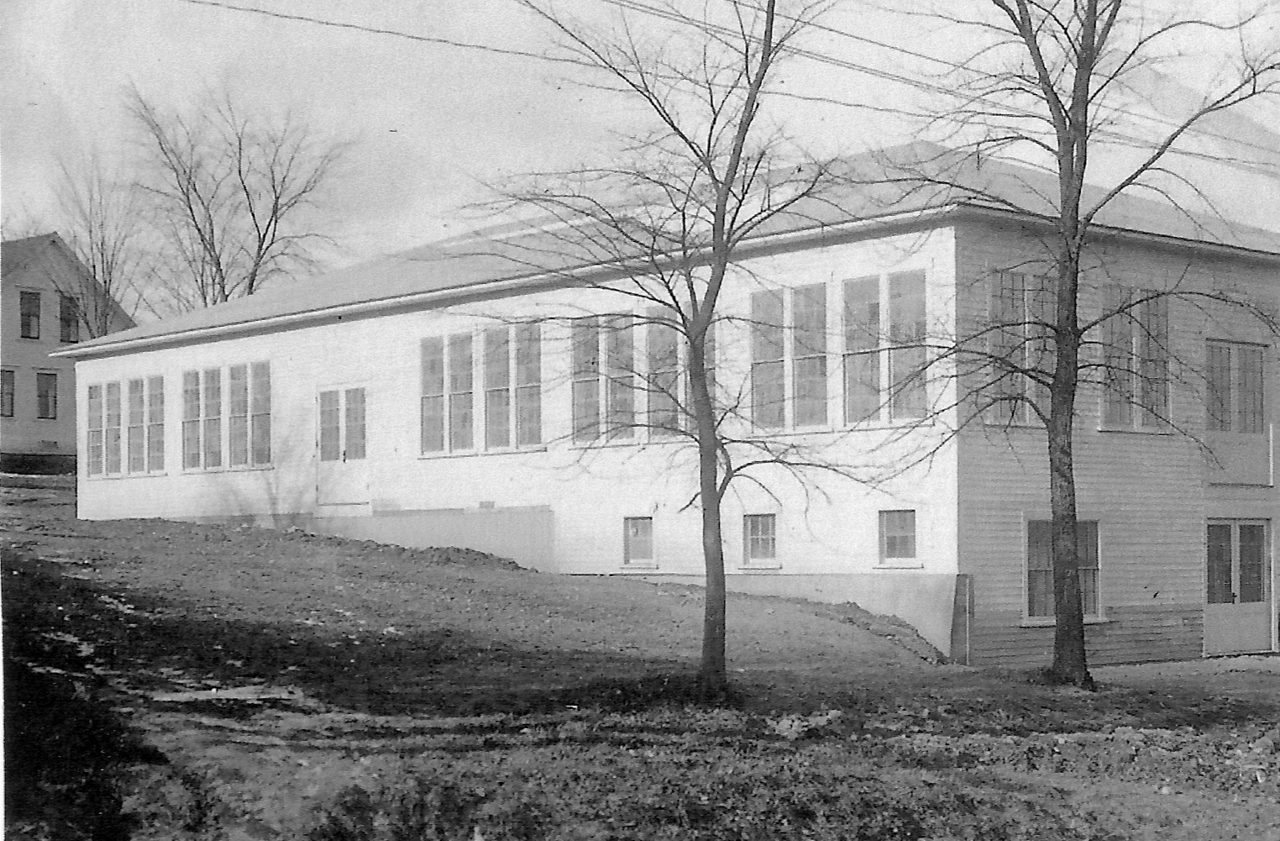
Daylight Skirt Factory on Mill Street owned and operated by Hamilton & Young Company – c1917
*
Noted only as “Hartland” on the back, this photo of an unknown store reveals a typical store interior of the era. Further research on numerous items in the photo such as the calendar days and brand history of merchandise enabled a fairly accurate estimate the time the photo was taken to be 1916.
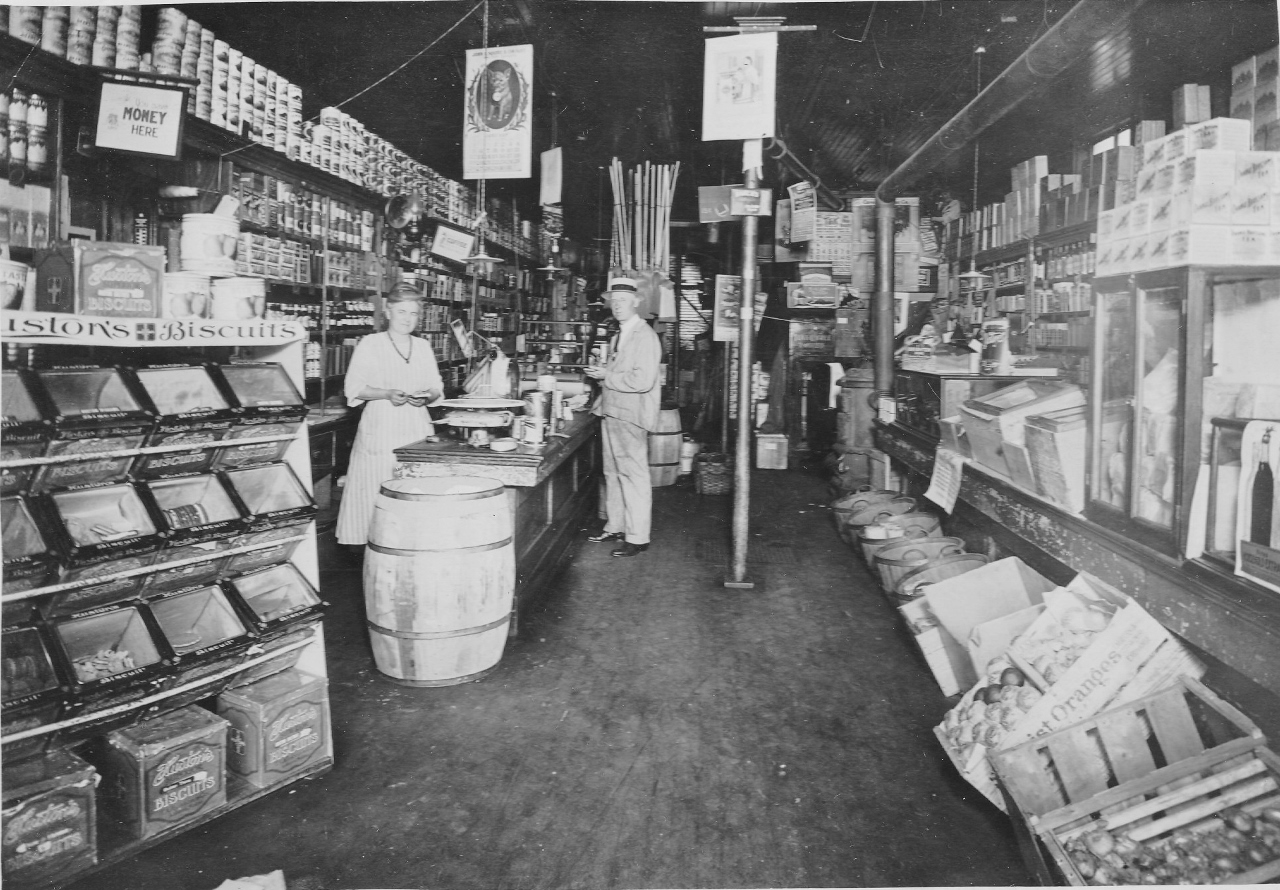
Unknown Hartland Store Interior – 1916
*
In 1916, the Methodist Church was raised 3 feet and a cement basement was added under the structure to provide a new room for church and social gatherings as noted in a Kennebec Journal article published on September 26, 1916.
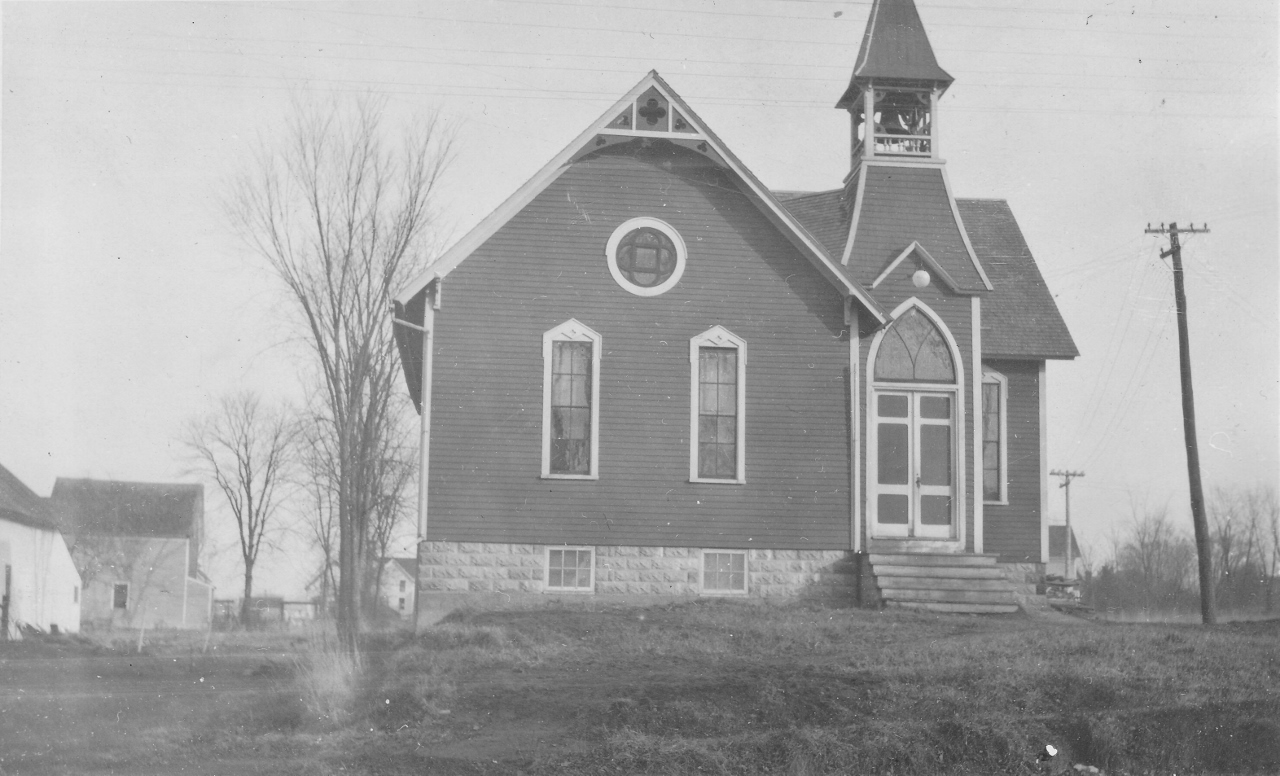
Grace Linn Memorial Methodist Episcopal Church
*
Following Hamilton & Young’s move to their new Mill Street location, Harry L. Sterns purchased the former Walter E. M. Seekins Store Block from Mrs. Alice Seekins around 1917 where he opened another of his Sterns Department Store locations. Harry moved into the upstairs apartment with his wife and their 2 sons with a 3rd son soon on the way.
In 1919, after a fire had done considerable damage, Allen R. Burton purchased the building he had been leasing from Mary (Linn) Fuller since 1914 continuing operations of his store at the location with his son Elmer where they soon expanded the business to include a full service gas station.
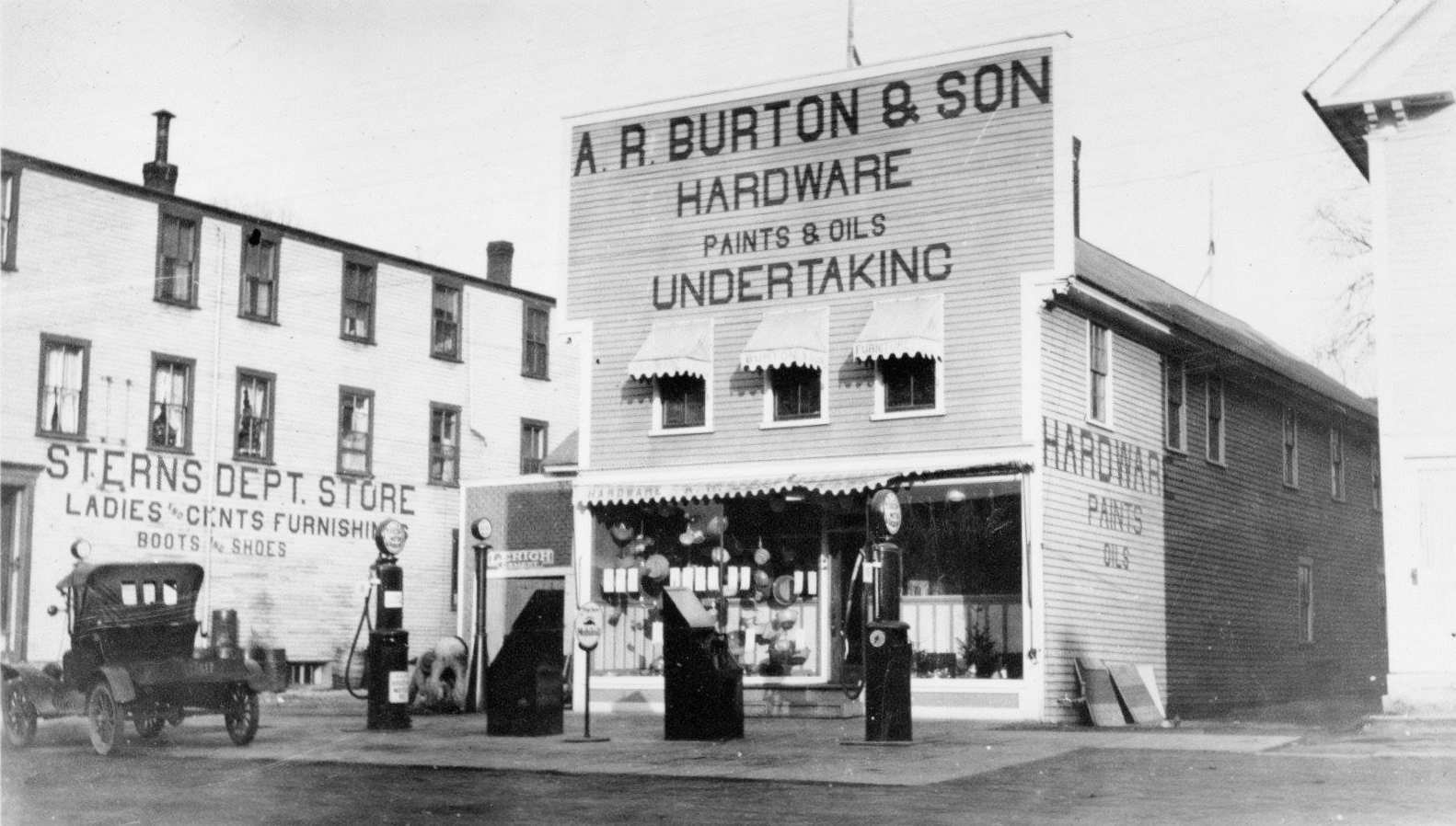
Sterns Department Store and A. R. Burton & Son Hardware & Undertaking – 1924
*
Harry L. Sterns (1884-1935) had immigrated from his homeland in Russia to Bangor where he began his business selling stock from a pack on his back in 1901. He married Russian born Bessie Shiro (1883-1961) in 1905 and they were living in Bangor in 1910 with their 2 sons, George Harold Sterns (1905-1969) and Frederick James Sterns (1908-2002). Their 3rd son, Herbert Daniel Sterns, was born in Hartland on March 11, 1918 and was delivered by Dr. Charles Moulton. Sterns also had a store at the time in Newport but he sold out his stock of goods there in 1924. They remained in Hartland until the late 1920s when they moved to Waterville where a new store had been opened.
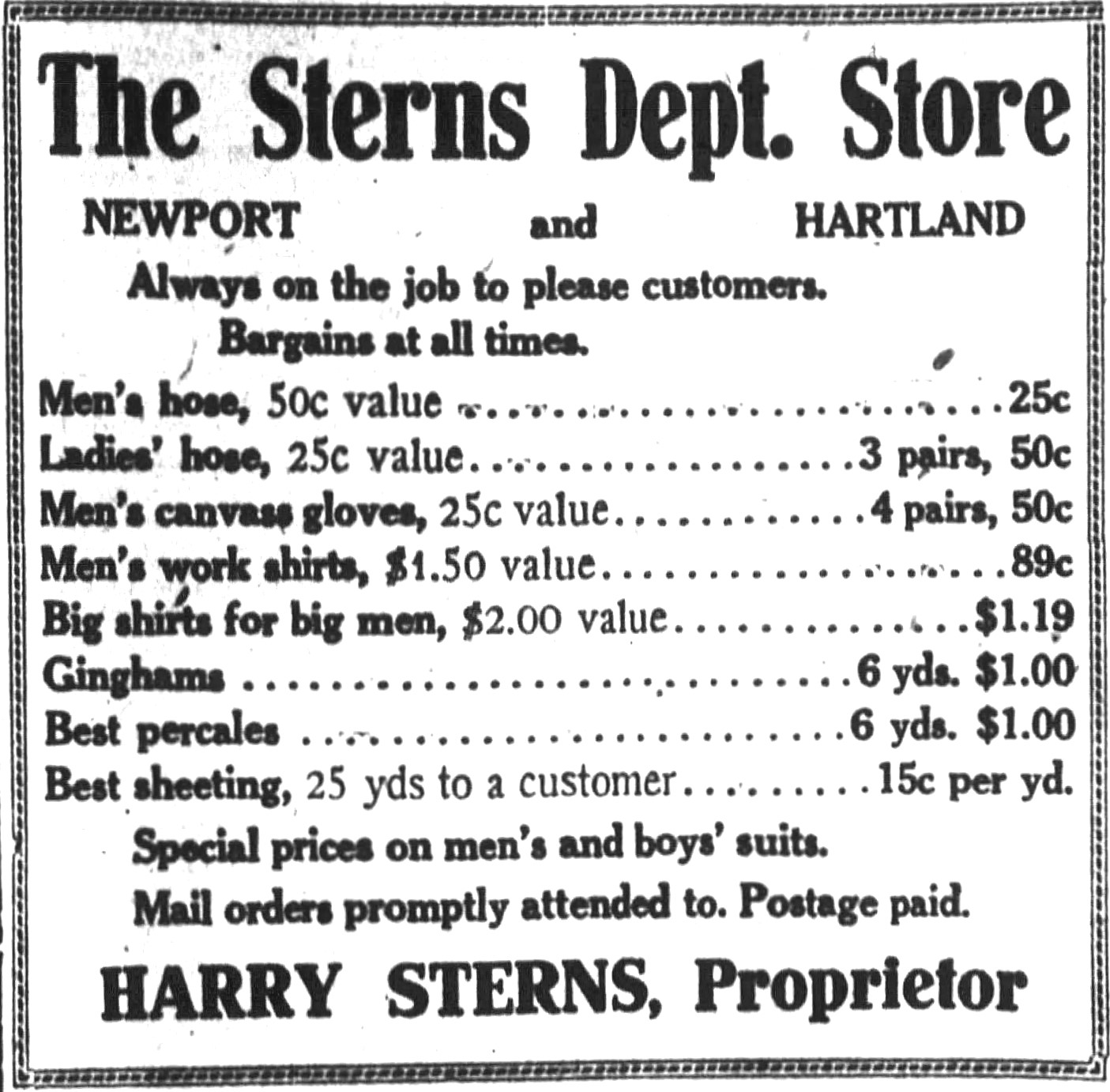
Bangor Daily News – May 4, 1921
*
As noted in a 2011 interview with Harry’s grandson Harvey Sterns, “My father (Fred) graduated from (Colby) college in 1929. My grandfather (Harry) had some illness that also affected my father’s ability to go to graduate school. He had been accepted at Harvard Business, but because of my grandfather’s illness he could not go. So what he was doing was running sales (from the principle store in Waterville) for my grandfather in vacant stores and one of the sales that he ran was a vacant store in Skowhegan. He decided that he liked it there. This would have been either ’29 or ’30, and he decided then to establish a branch of Sterns’ store in Skowhegan.”
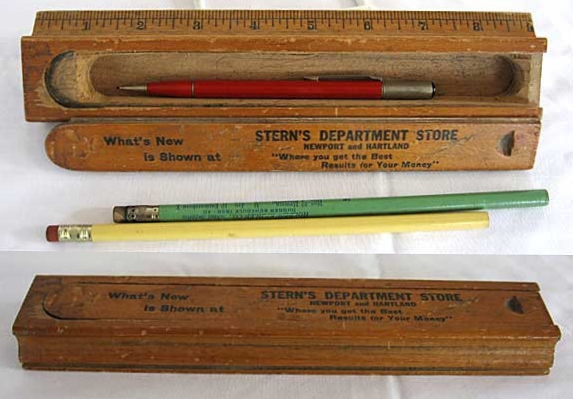
Sterns Department Store Engraved Pencil Box
*
In 1927, a Triangle Brand Shoes Edition of a Webster’s Pocket Dictionary was printed for Sterns Department Store noting the Hartland & Waterville locations. The copy below was owned by Vivian Louise Mills (1922-1993), a daughter of Wesley Horace Mills & Tina Agnes Batchelder. Vivian herself wrote in the back that she got this book as a gift when she was 5 years old in 1927 and recalled using it when she was 13 years old in 1935 while she was in school.
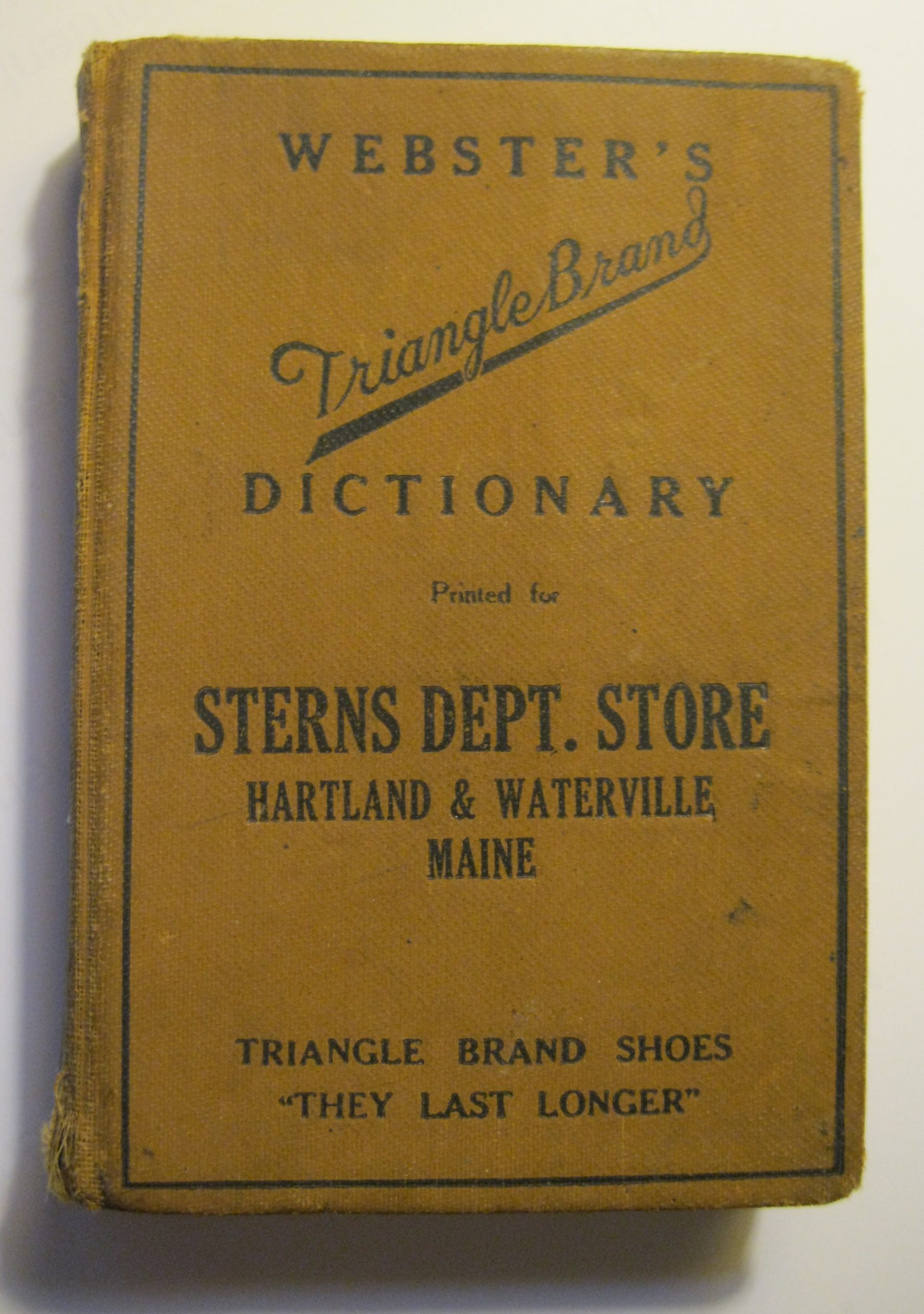
Sterns Department Store Dictionary – 1927
(Donated by Grace L.)
*
In September of 1918, most of the men who resided in Hartland enlisted for the World War I Selective Service Draft at the Hartland Drug Store with their applications signed by Ralph C. Hamilton. Hamilton later registered Hartland men and women for the World War II Draft.
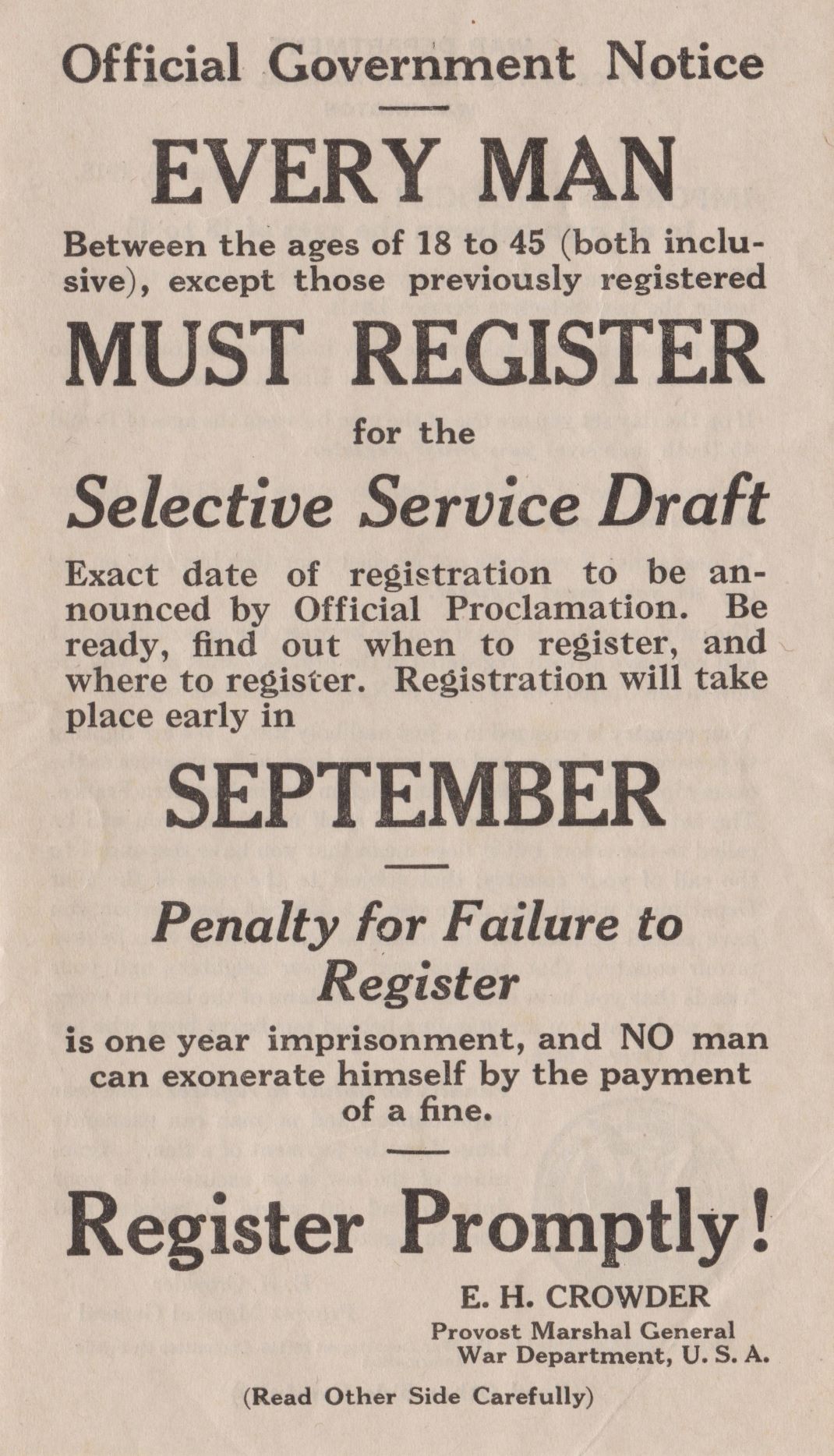
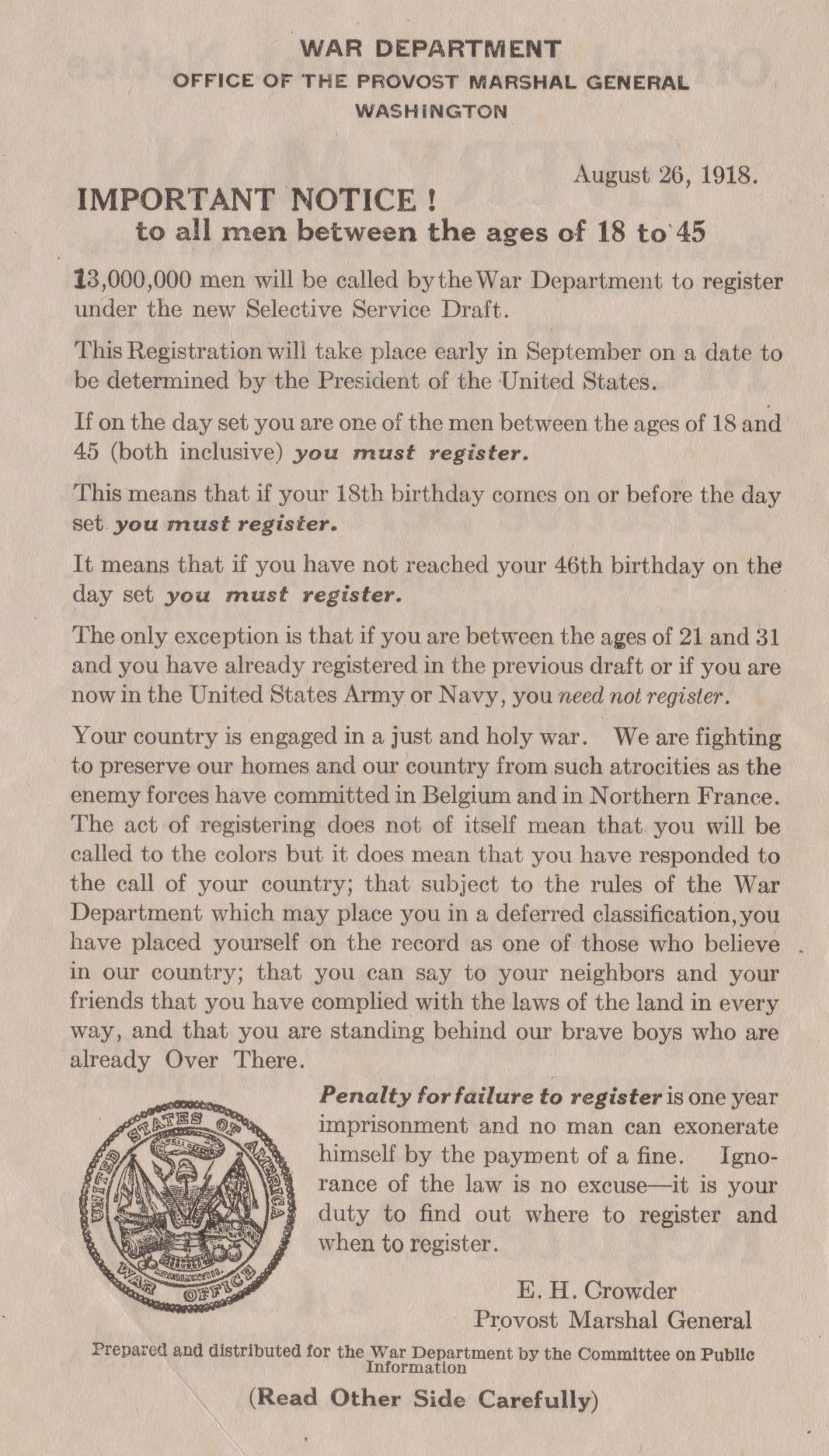
World War I Draft Notice – 1918
*
In 1919, Hartland held its first post-war Memorial Day Observance following Allied Victory in “The Great War”.
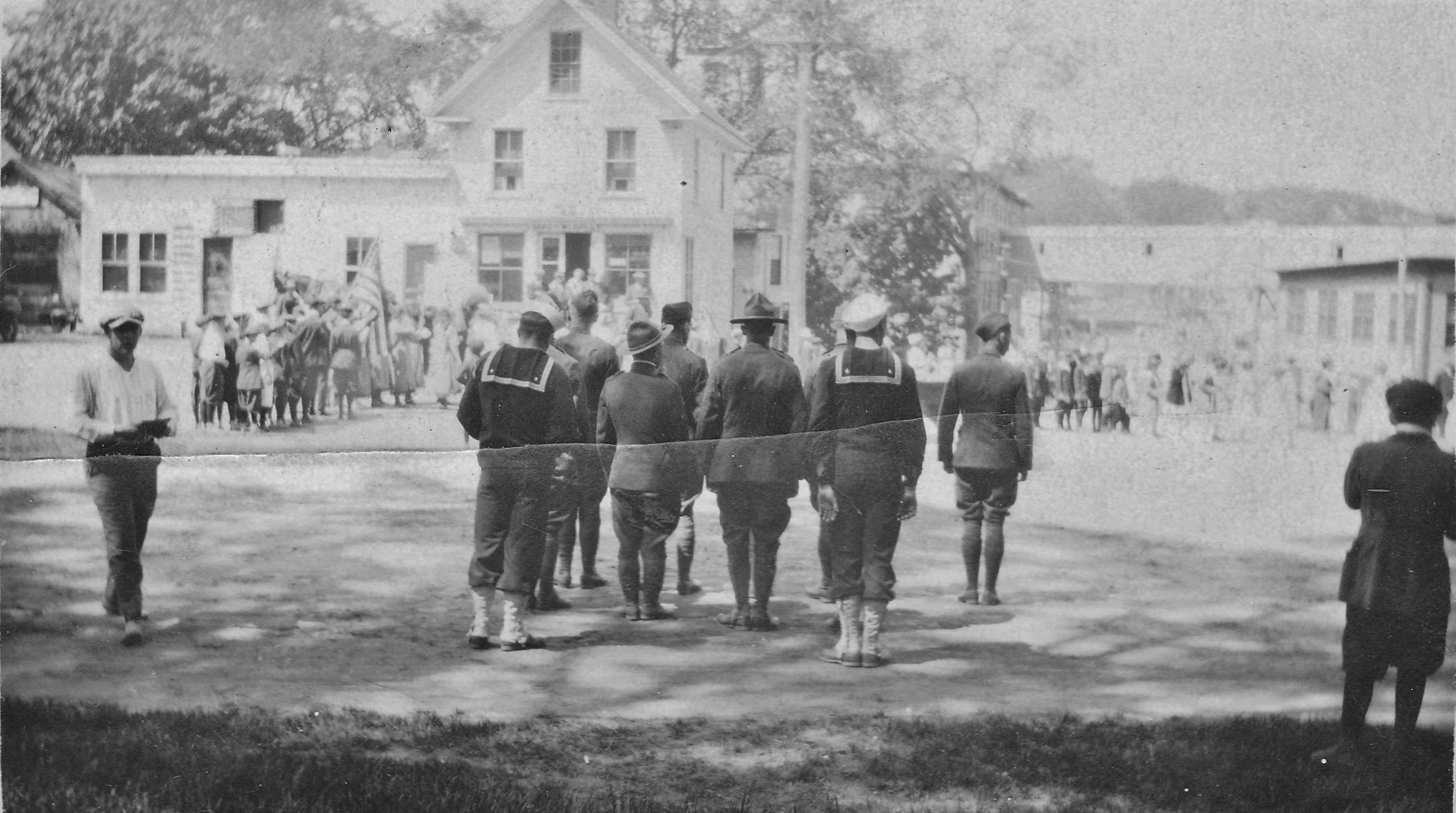
Memorial Day – Warren Square – 1919
*
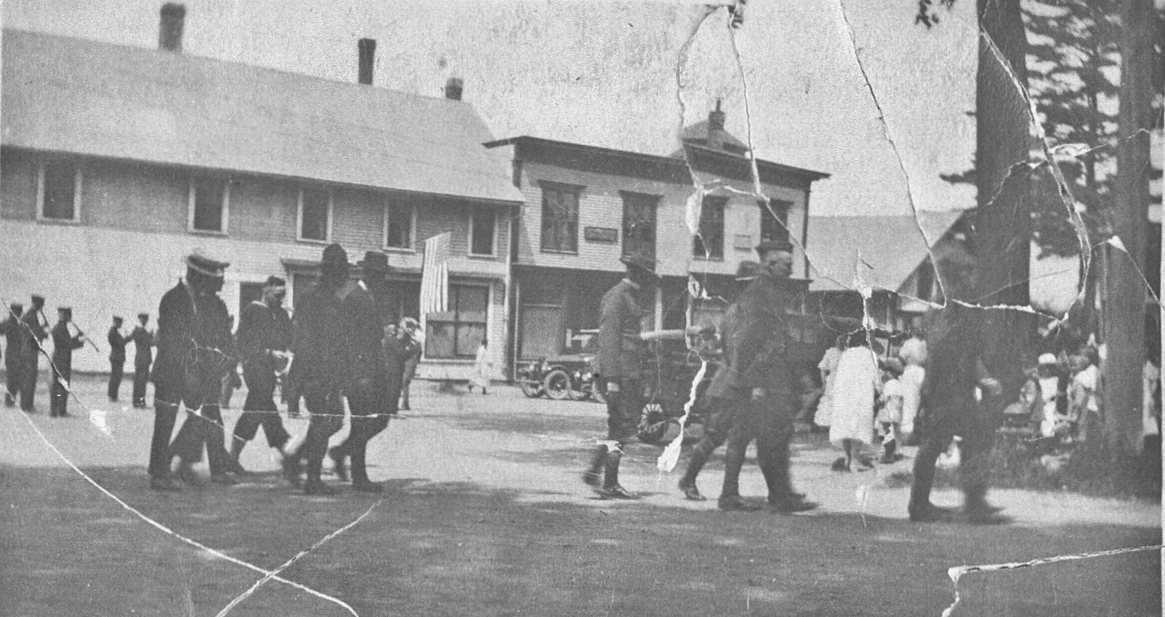
Memorial Day – Corner of Academy Street & Commercial Street – 1919
*
Following the acquisition of the former Maple Lane Farm by the American Woolen Company in 1916, Robert W. Linn, Sr and his wife moved to Pittsfield Avenue where they were living in 1920 and remained until his death in 1927. In November of 1919, the American Woolen Company converted the house into a 4 apartment dwelling as noted in its sale at auction below in 1932.
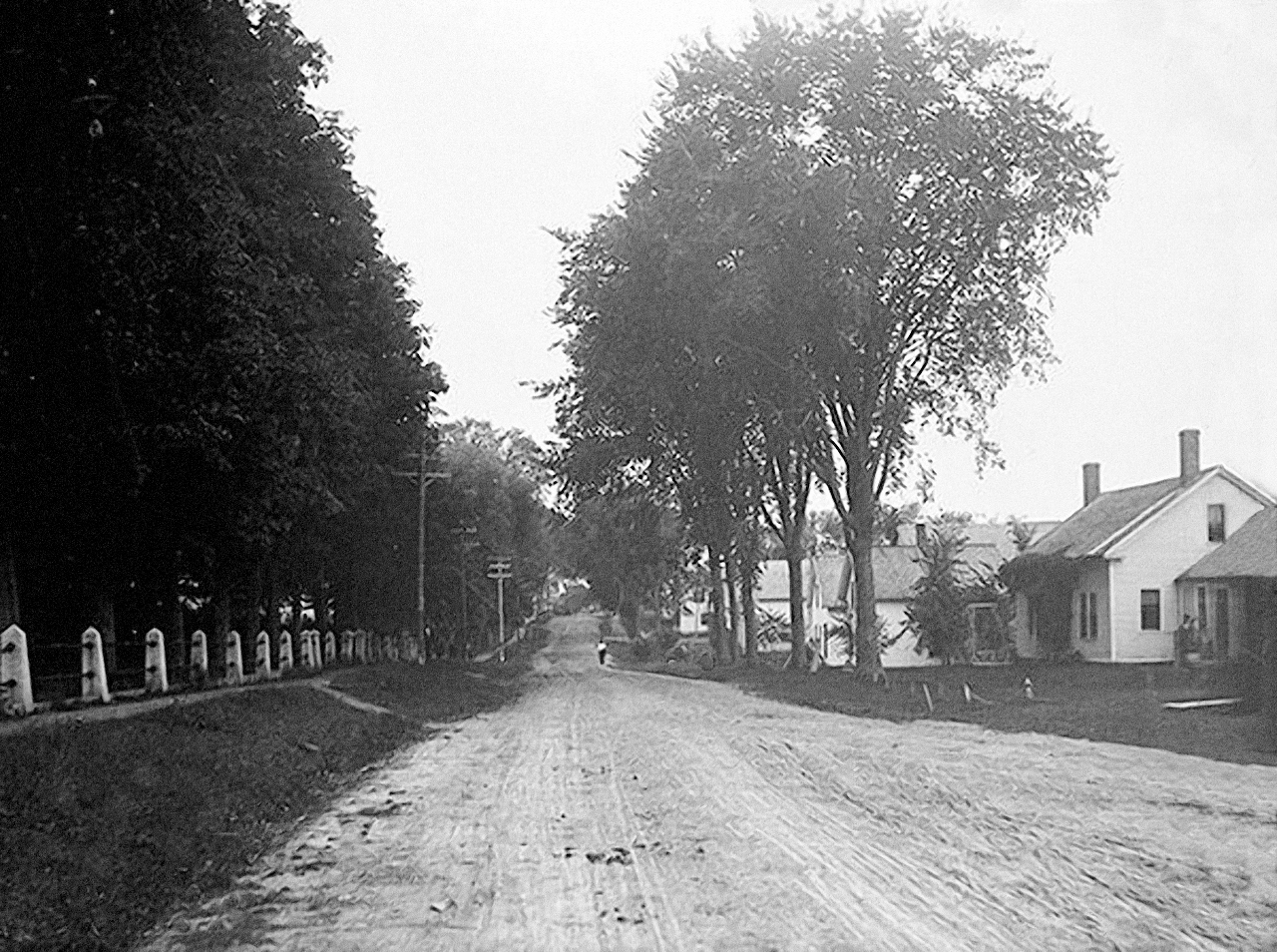
Commercial Street with the former Maple Lane Farm & Robert W. Linn, Sr Residence on the left
*
George Samuel Woodman (1860-1945) and his wife Mary Tarr moved from St Albans to Hartland with their 5 surviving children, Forest, Etta, Florence, Fred & Edgar about 1920. They settled at the former Matthew B. Stevens Homestead on Outer Commercial Street near the St Albans Town Line where George soon began dairy farming. Forest, known as Clair, took over the family homestead following his father’s death and continued operating the dairy farm where he bottled and delivered fresh milk for many years in Hartland operating as Woodman’s Dairy. Clair eventually sold the house in the 1960s to Walter Butler who operated the Hartland Western Auto Store at the location.
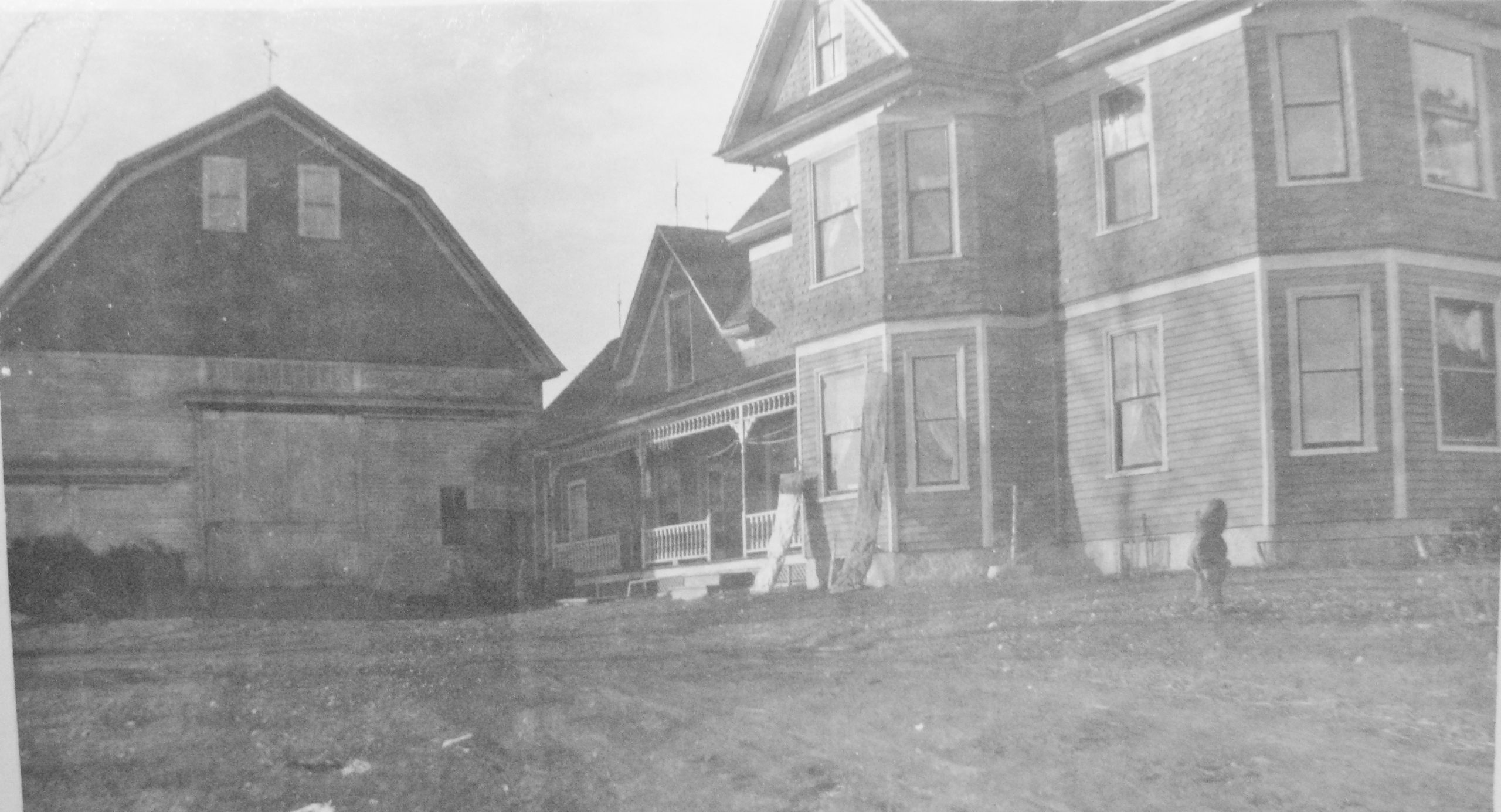
Woodman Homestead – Outer Commercial Street
*
1924 Town Report – Article 28: “To see if the town will vote to allow A. R. Burton & Son to build a cement sidewalk from their line at the Hanson block to their line at the Sterns block, same to be built of cement blocks laid off in two-foot squares, the entire length being about seventy-five feet; also, to allow them to put in a cement slab in front of the gasoline tanks, about forty feet long and thirteen feet wide, no more and probably less in width. The said A. R. Burton & Son agree to keep this cement slab on a level with the street at all times; and it is agreed they shall be allowed to put in one-half of the sidewalk in 1924 and one-half in 1925, provided they cannot see their way clear to put it all in in 1924.”

A new concrete sidewalk and a fresh paint job in the process at A. R. Burton & Son Hardware & Undertaking – 1924
*
In September of 1920, Perley & Bertie Hanson purchased G. M. Lancey’s Dry Goods & Groceries Store Block on Commercial Street and moved the family into the upstairs apartment in October. Bertie sold some of the dry goods & grocery stock to Carl Randlett and continued selling millinery items and clothing until she eventually specialized in mostly clothing & footwear sales.
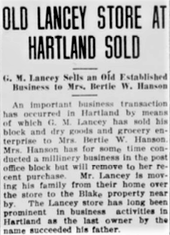
G. M. Lancey Store Sale Article – September 1920
*
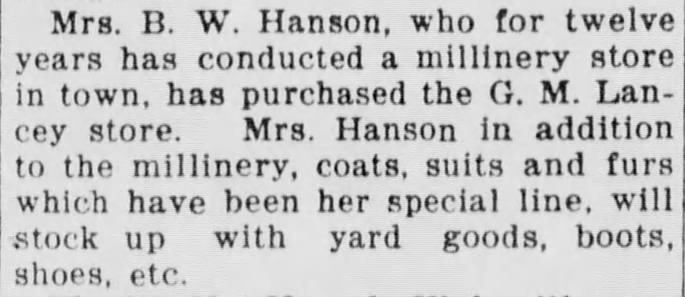
Independent Reporter – October 21, 1920
*
Hartland resident Fred Haseltine, who worked for Carl Randlett on the side, noted in his diary; “Monday, October 4, 1920; Began moving Lancey’s stock over to Carls.”
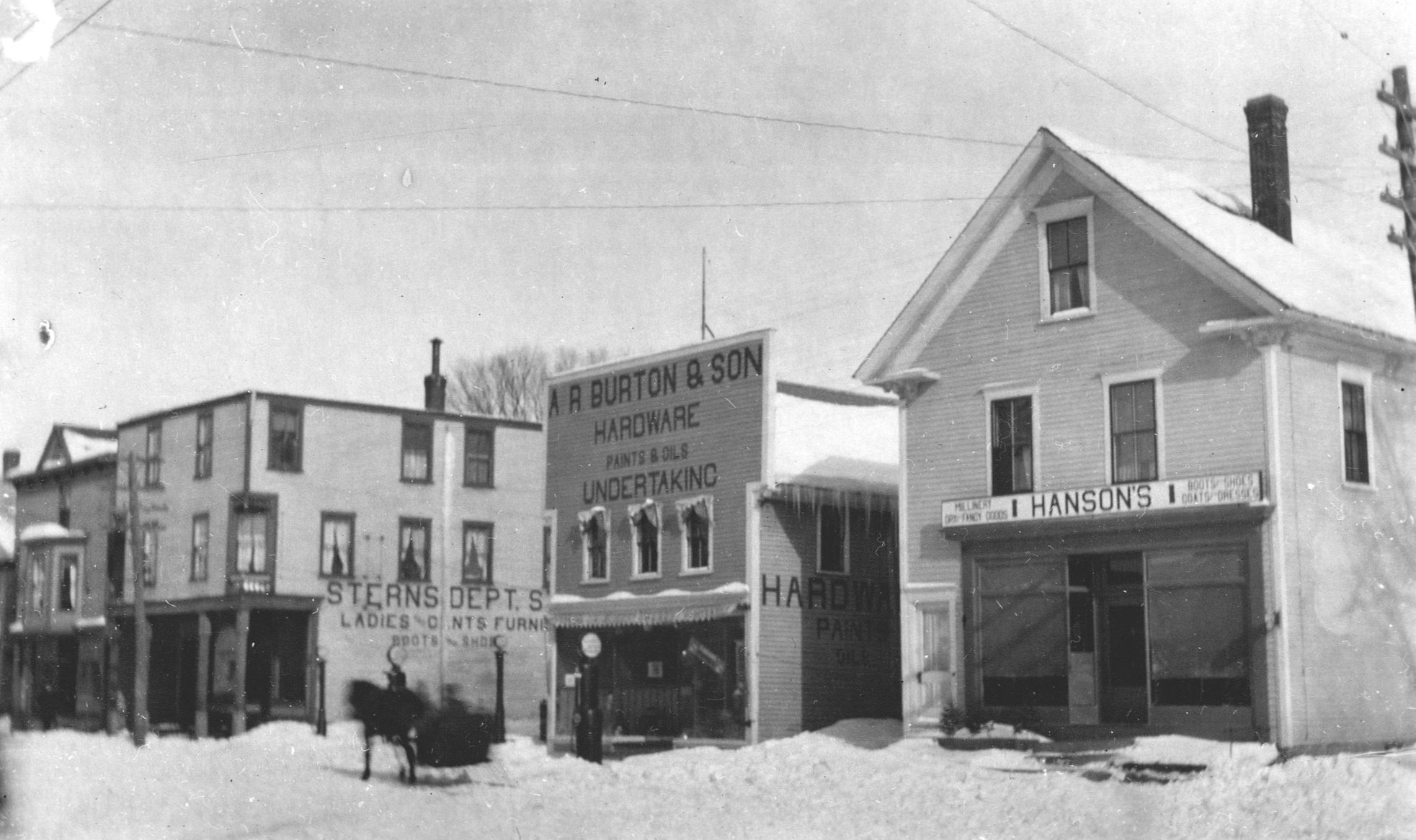
c1924 (L-R): E. P. Dyer Clothing | Sterns Department Store
A. R. Burton & Son Hardware & Undertaking | B. W. Hanson Dry Goods & Clothing Store
An October 18, 1923 article in the Pittsfield Advertiser wrote reviews for several merchants operating in Hartland at the time including:
Sterns’ Department Store – It is not often in going through the towns of Maine that one finds an establishment equal to that of Sterns’ Department Store. A full and complete line is carried of men’s, ladies’ and children’s clothing and a fine stock of dry and fancy goods, also boots and shoes. This store features dependable quality in men’s and women’s ready-to-wear at the lowest possible prices. Suits and overcoats for men that are known from coast to coast. Throughout the entire store you will find the same high quality and a large assortment from which to choose. With their staple lines, hosiery, underwear, all kept up in full stock, yard goods of special taste and quality, radiating with the season’s latest designs, with the new shades of the season, we can surely recommend Sterns’ Department Store of Hartland; a store that offers the latest in style, the best of quality and a service uniformly courteous and satisfactory.
*
A. R. Burton & Son – One of the stores in Hartland that has a prestige in this section is the hardware store of Allen R. Burton & Son (Elmer). Hardware of all kinds is carried here in large quantities, carpenter’s and plumber’s tools, farm tools, etc. They also sell lime, cement, roofing and shingles. There is also a fine display of cutlery of all kinds and they are agents for the Certain-Teed paints, shingles and roofing. This store offers much in the way of merchandise to the people of Hartland for in addition to the things mentioned are electrical supplies, kitchenware in tin, agate and aluminum. Pyrex is displayed in its many shapes and sizes that makes it possible to see exactly how things are baking. Furniture is also to be noted in this store, also bedding, blankets, iron beds, floor coverings, art squares, window shades, doors and window frames. This firm are licensed undertakers and embalmers and are equipped to offer the very best service in a tactful and unobtrusive way.
*
B. W. Hanson – Everything needed in dry and fancy goods is carried at Mrs. Bertie (Wilkins) Hanson’s and she specializes in the best of hosiery and underwear. Notions of all kinds and small wears in all the latest fads and fancies are conveniently arranged. The ready-to-wear department is replete with dresses, suits and coats of the latest styles and fashion. If you have not already chosen your fall hat, you will be sure to find something out of the ordinary in the millinery department, here is a fine showing of large and small hats to suit the most fastidious. White sewing machines are for sale here, electric or foot power, either cash or the payment plan. Last but not least we mention the line of boots and shoes on display at this store. Many are regular patrons of this special department where discrimination is shown in choosing with an idea of her special trade. Mrs. Hanson, during the thirteen years she has been in business, has proved herself to be of unusual foresight and enterprise.
*
Dyer Clothing Company – This concern has been in business in Hartland for a number of years, long enough to understand the needs of the public and offers them the best the market affords. They carry a full and complete line of Hart, Schaffner, Marx and Style-Plus suits and overcoats and many specialties in the way of sweaters, hose, collars, neckwear, etc. Also hunting coats, sheep-lined coats, rain coats, etc., men’s, women’s and children’s shoes and hose, all advertised lines, also Ball-Band and Gold Seal woolen and rubber footwear. Hats and caps, the last word in style are on display in their early selection, in fact all the goods shown at this store are absolutely correct in style, cut and fabric, for the progressive man who appreciates good fitting clothes. At Dyer’s you will find a fine assortment of the best makes and styles at popular prices. This store is in charge of Ralph E. Nutting, one of the partners (Elberton P. Dyer’s son-in-law) in this enterprise.
*
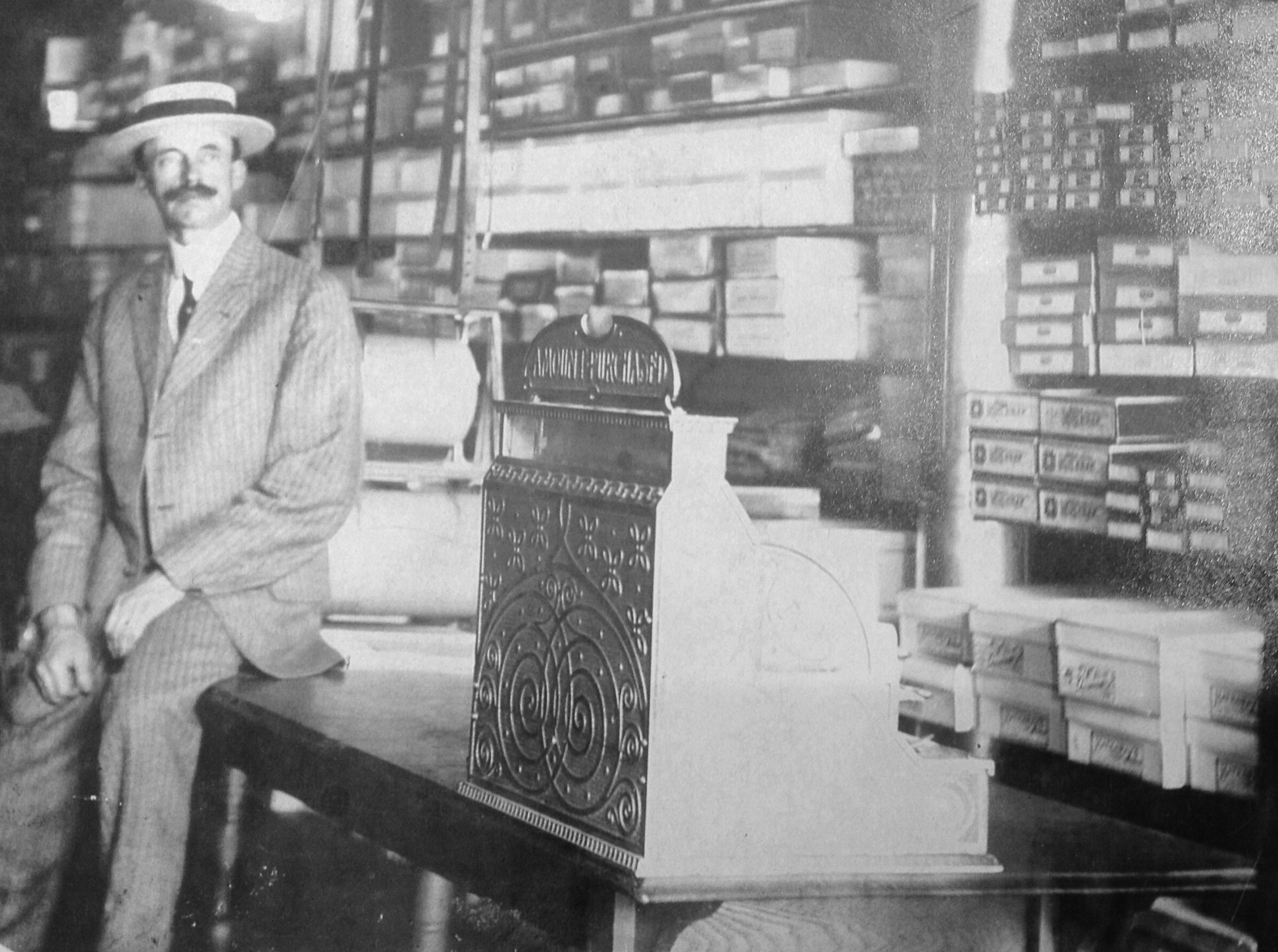
Elberton P. Dyer at his Commercial Street Clothing Store
*
Following G. M. Lancey’s sale of his Commercial Street store block where they had been living in the upstairs apartment, he and his wife Annie, along with their youngest daughter Ardis Lancey, moved into his Uncle Calvin Blake’s former house on Academy Street in October of 1920 where George continued selling insurance until his retirement in 1941 just before his death in 1942.
The house was built by George’s maternal grandfather Dr. Calvin Blake and upon his death in 1870 had been occupied by his son Calvin Blake, Jr and his wife Jeanette Turner. Following Calvin Jr’s death in 1905, his widow and his sister Hattie remained there until Jeanette’s death in 1915.
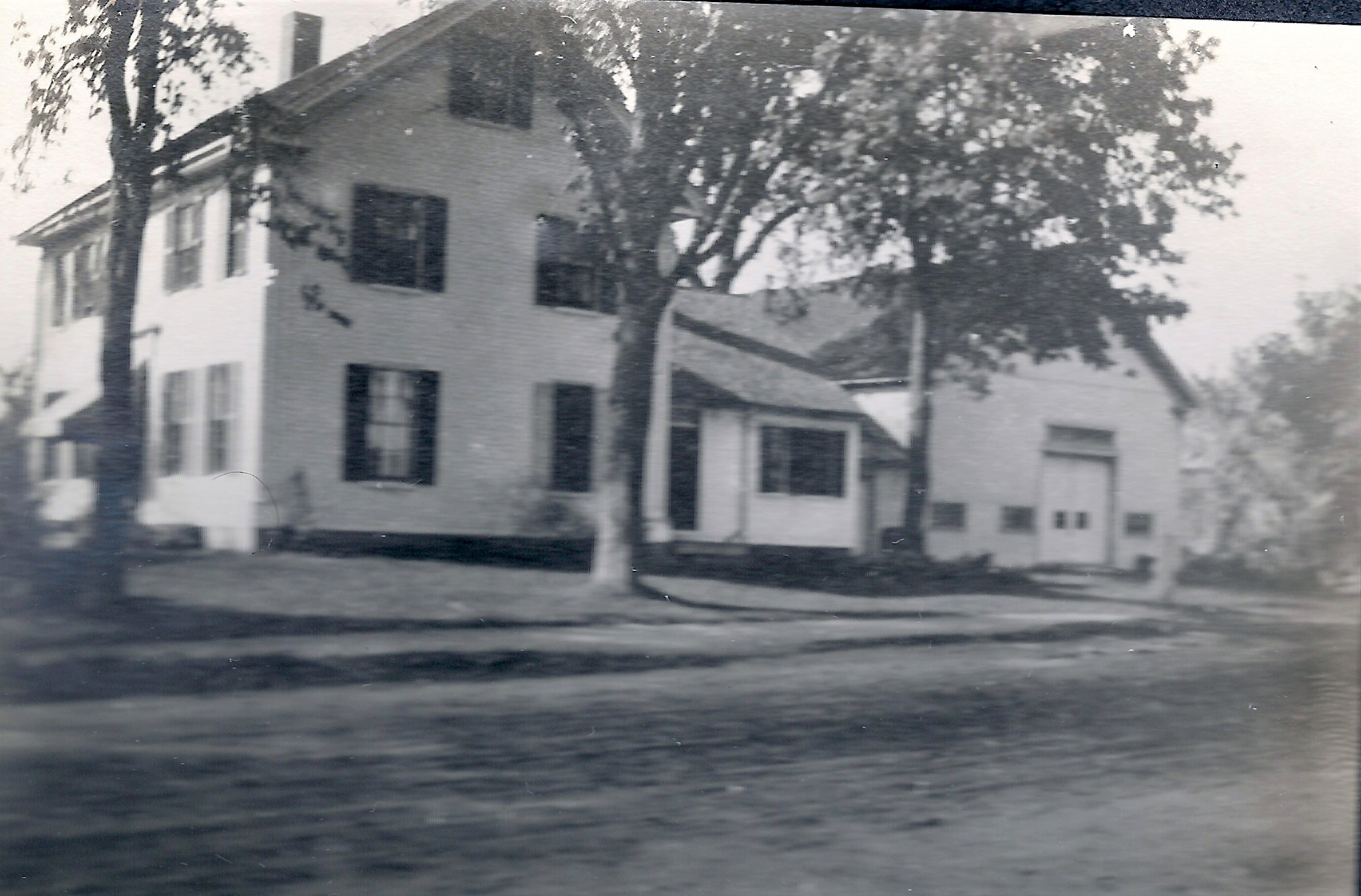
Blake-Lancey House on Academy Street
*
Clair Isaac Currie (1888-1962) and his family moved from Drew, Maine to Hartland in the Spring of 1922 after he purchased the grocery store business from J. M. Higgins at the former A. H. Buck Stove Shop on Commercial Street. One of their daughters Eleanor (Currie) Parsons became a school teacher and would go on to write numerous books including “A Town called Drew & Beyond” with several references to her life growing up in Hartland. Their son Darrel Bishop Currie went on to work for the Federal Bureau of Investigation in Washington D. C. and eventually became head of the FBI Office in Bangor.
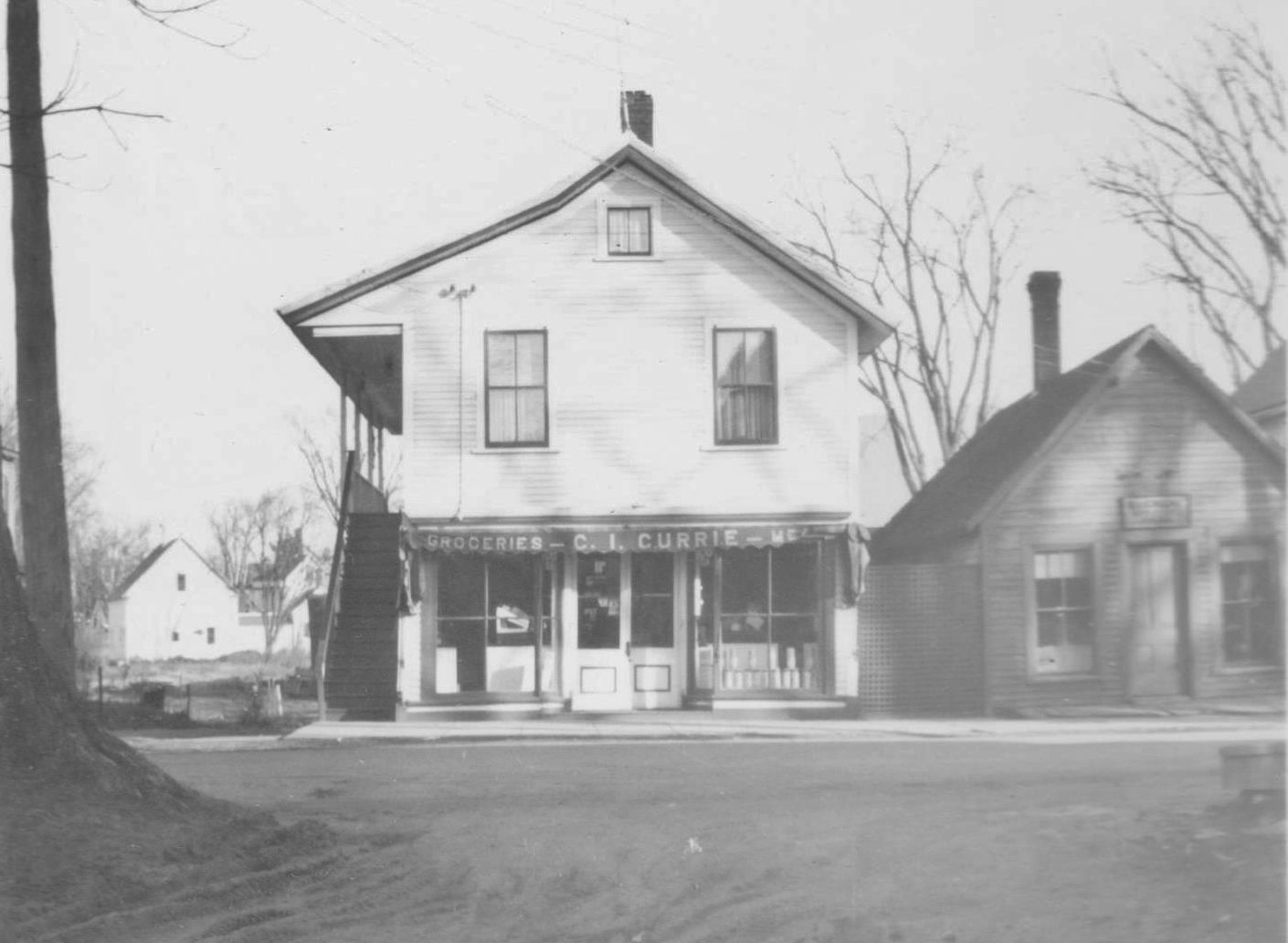
Claire I. Currie Groceries & Greene’s Cobbler Shop
*
C. I. Currie Groceries – Mr. Claire I. Currie, successor to J. M. Higgins, bought out this business about two years ago. Here every need of the purchaser can be met with a large stock of strictly high grade goods. On the well-arranged shelves one will find the very best of fancy groceries, and many are the tempting novelties displayed. These include the best makes of canned, bottled and jar goods which should be on the “emergency shelf” in every home. We would also mention his large line of cigars, tobacco and cigarettes, the very best brands for which he has a regular trade. His ice cream is of the finest texture and popular flavorings and many there are who frequent this store for their daily refreshment. Mr. Currie is a competent and alert business man who seeks to please his patrons by offering them the best of goods and service. ~ Pittsfield Advertiser – October 18, 1923
*
Edgar “Eddie” Greene (1879-1948) of Palmyra opened his first Cobbler Shop in 1923 in the new Davis & Webber Block at Warren Square. In May of 1924, he purchased the small building next door to Currie’s Grocery Store from Albion F. Buker where he continued operating his business into the early 1940s. The 1896 “Bird’s Eye View” Map of Hartland is seen in the photo below hanging on the wall to the left.
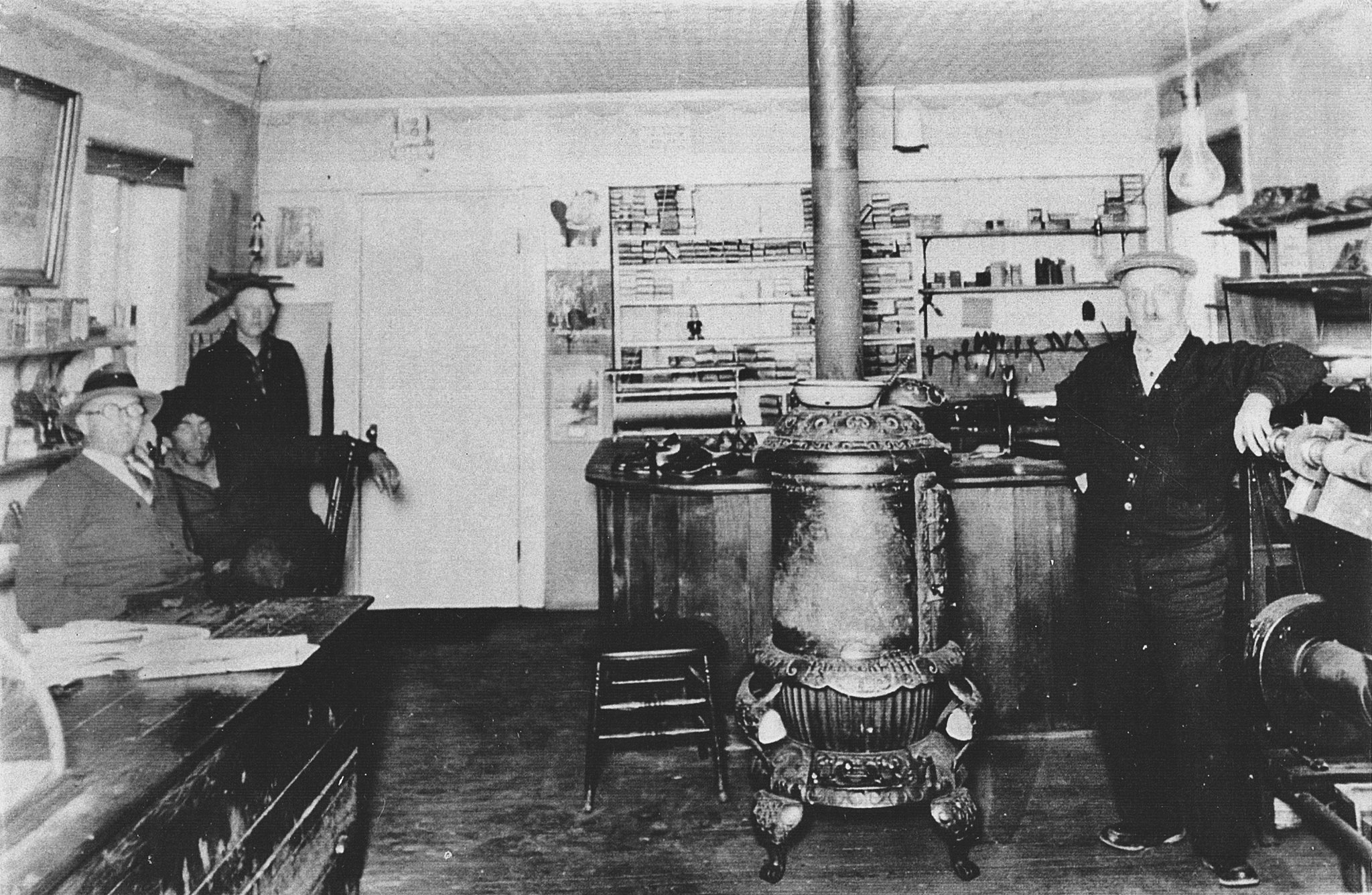
Interior of Greene’s Cobbler Shop with Clair Currie seated on the left and Eddie Greene standing to the right
*
Greene’s Cobbler Shop: In Mr. Edgar Green’s shop on Commercial Street can be found electrical machinery for the repair of shoes and the expert work turned out by this shop has been the means of saving many dollars for his numerous patrons. While he has been in business in his present quarters for only about a year and a half, the fine repair work he is doing has been the means of making many good friends for him and consequently his business has steadily increased and he now has a long list of regular patrons. ~ Independent Reporter Skowhegan – December 11, 1924
*
Soon after they married in 1920, St Albans native Ervin Wilbur Martin (1900-1977) and his wife Vivian Cookson moved to North Hartland where their 3 sons, Selden, Gerald & Raymond were born. Ervin worked as a Supervisor for the State Highway Commission until 1924 when he began his logging business. By 1934, they moved their family into the former Peleg Haskell/Augustus Bowman house on Commercial Street and located his business office two buildings down toward town. The house remained in the Martin Family until 2019.
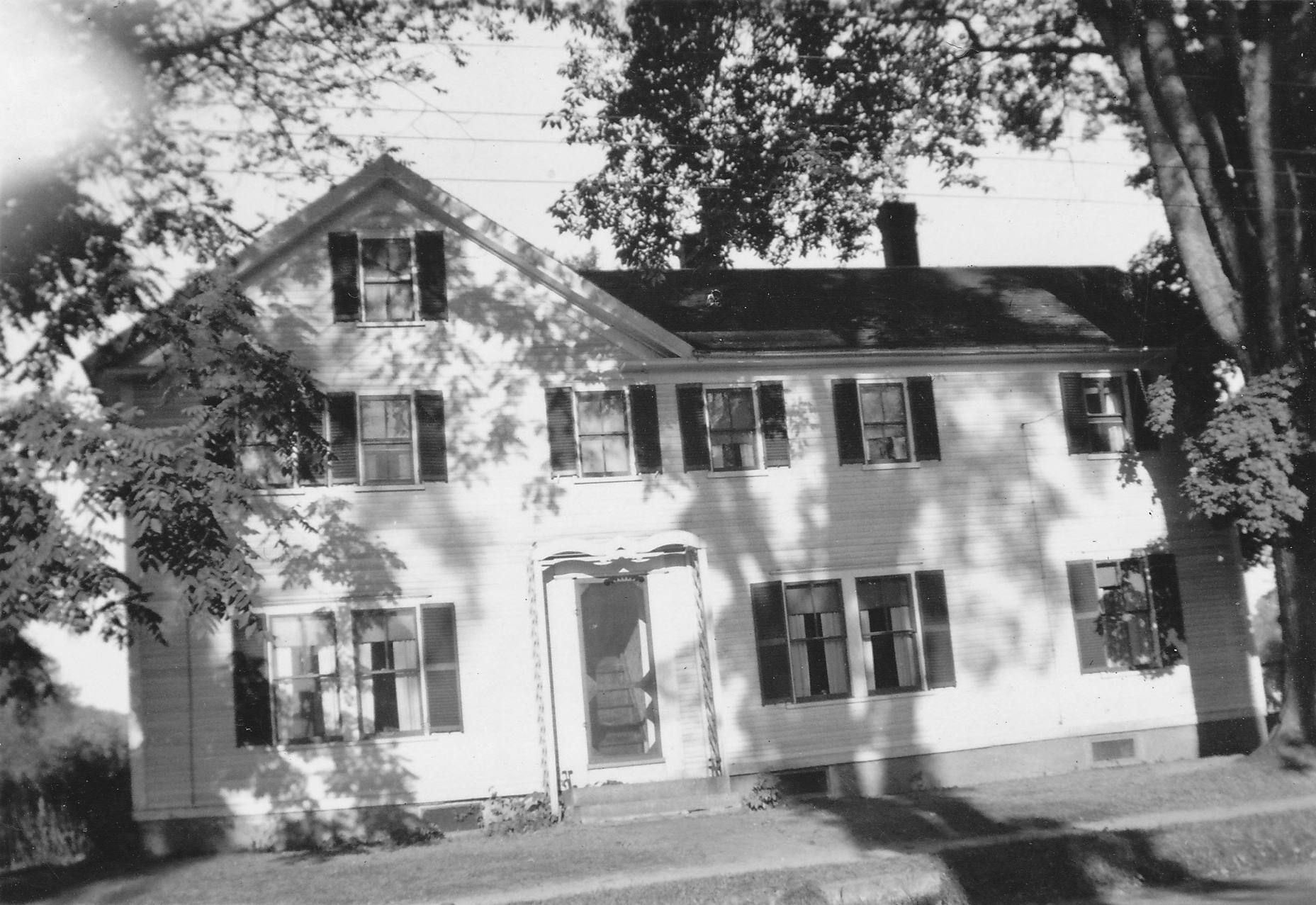
Ervin & Vivian Martin Commercial Street Residence – 1935
(Photo courtesy of Raymond & Beverly Martin)
*
In 1923, John Franklin Seekins, son of Walter E. M. Seekins, opened a store at the former Reverend Bowman Store Block where he operated until 1925.
J. F. Seekins – A store that has recently opened up in Hartland is that of Mr. John F. Seekins in the line of groceries, confectionery, cigars, tobacco, fruit and tonics. Anticipating a good trade in these, he has a large stock that his patrons may be well served. He aims to make one of those popular stores where the boys may feel at home and all treated as guests while serving them with the best on the market. This store contains a full line of groceries, teas, coffees, spices, condiments and the freshest of fruits in season. On these well-filled shelves the shrewd housewives will find the best goods at prices surprisingly low. The candies and confectionery carried at this store are always of the freshest. Smokers’ requisites of all kinds are always to be found here and you will find it a handy store to run in for your after dinner cigar. Quality and service is the key-note of this store and you will find it both a pleasure and to your profit to trade here. ~ Pittsfield Advertiser October 18, 1923
*
In September of 1925, Perley A. Gowen purchased John F. Seekins’ store where he and his wife Fidella operated a grocery store until the early 1940s.
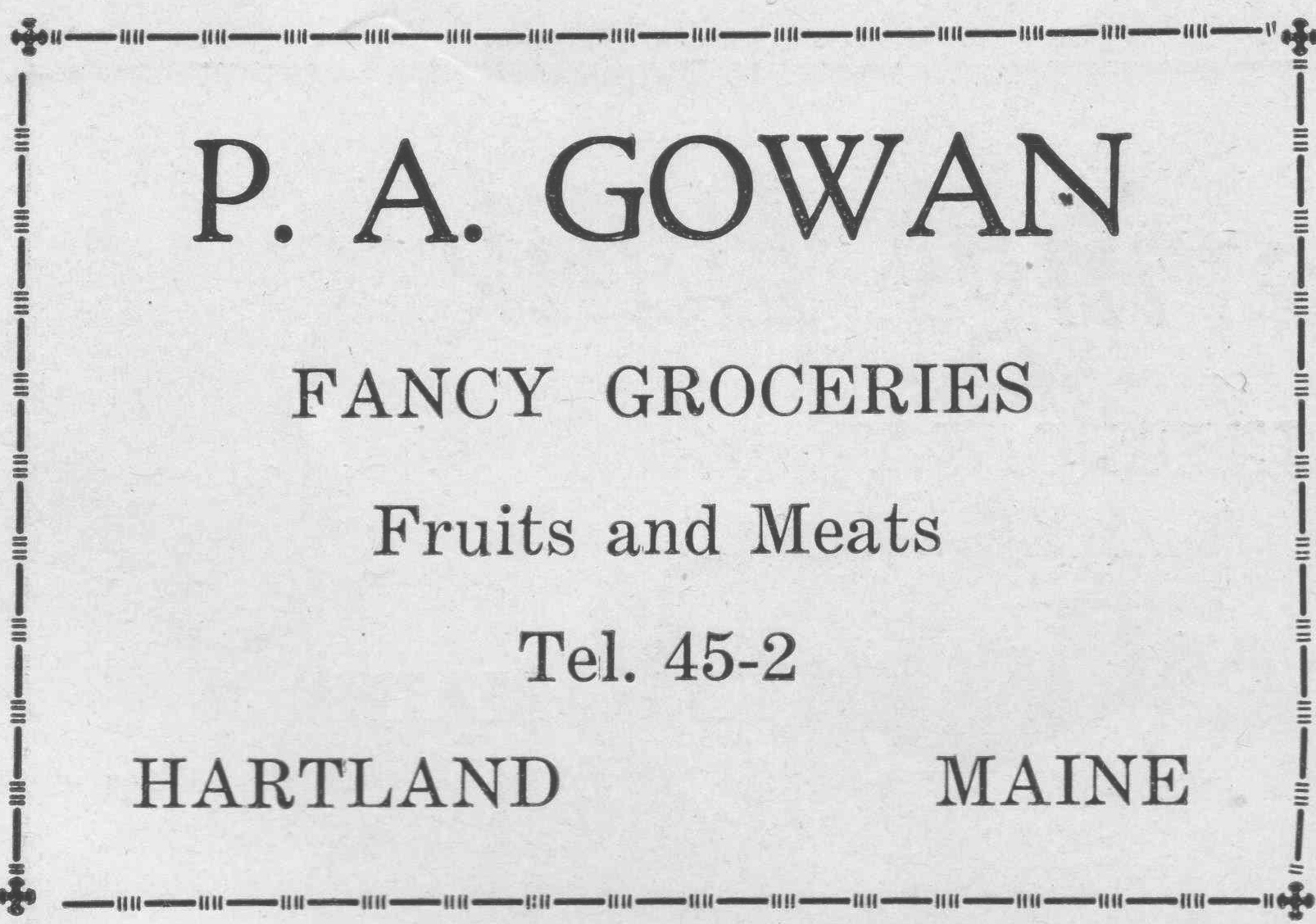
Perley A. Gowen Store Ripple Advertisement (with surname typo)
*
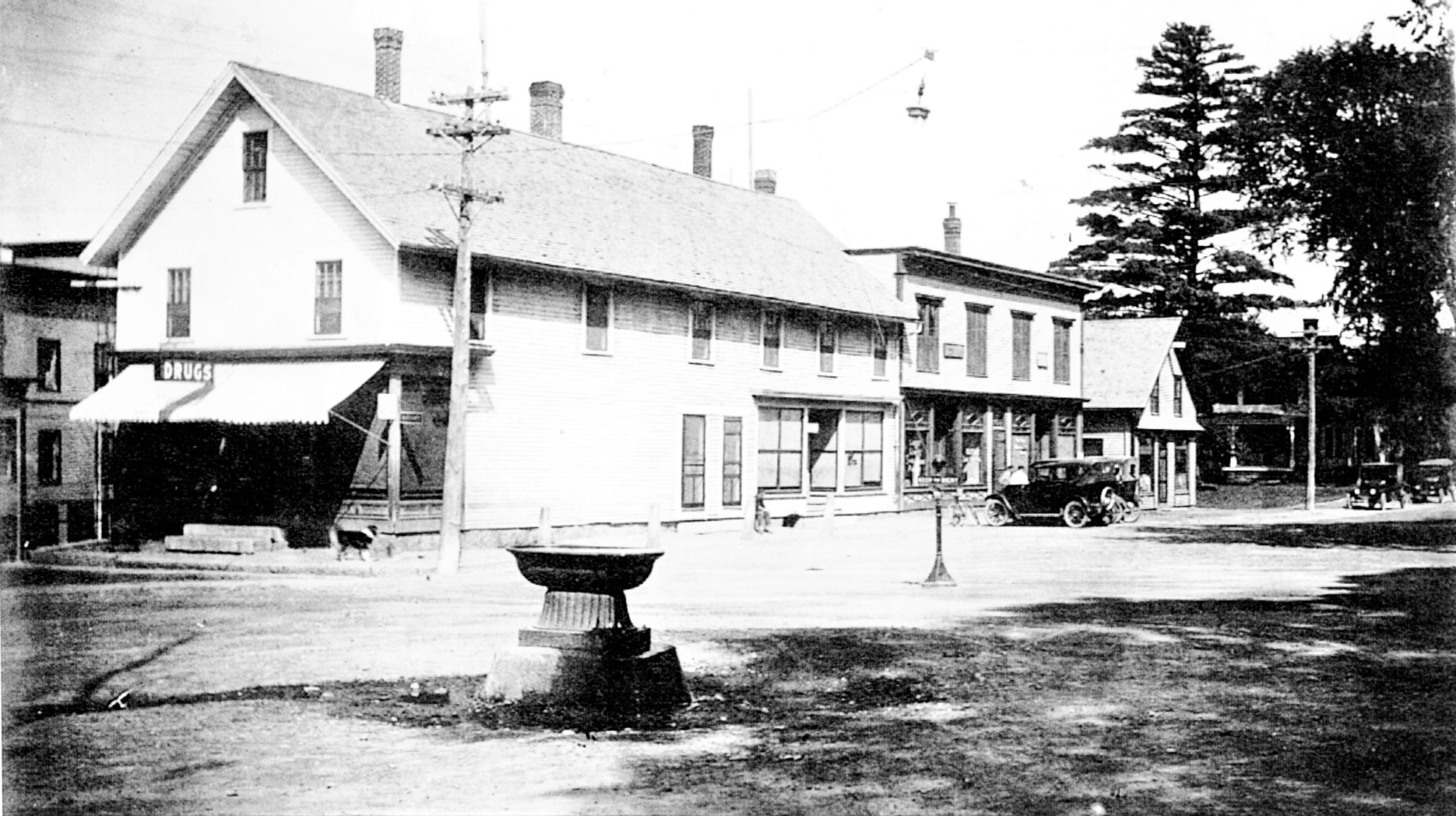
Commercial Street from Warren Square
*
Hartland Drug Store – Mr. Ralph C. Hamilton is proprietor of the store which is a most complete modern drug establishment, carrying a well-stocked line or pure and wholesome drugs, hospital and sick-room supplies, rubber goods of the best quality. A most attractive line of toilet articles are tastily arranged as are all the lines in this store, their soaps and powders being from the best wholesale houses in the country. Their perfumes are also of the best and they have a large number of regular customers for their special line. They have an especially fine soda fountain where they dispense the popular drinks. Mr. Hamilton is a registered Druggist and gives the most careful attention to the compounding of prescriptions and uses the purest drugs in them. His store is well equipped for rendering the best possible service to its patrons. ~ Pittsfield Advertiser October 18, 1923
*
Following Harry Sterns move to Waterville, Lewis Henry Barden (1876-1960) leased the former Walter E. M. Seekins Block in 1930 and relocated his store from Main Street to Commercial Street and soon after purchased the building in 1932. The buildings original open street level entryway along with its unique corner windows and molding on the 2nd floor were still in place at the time.
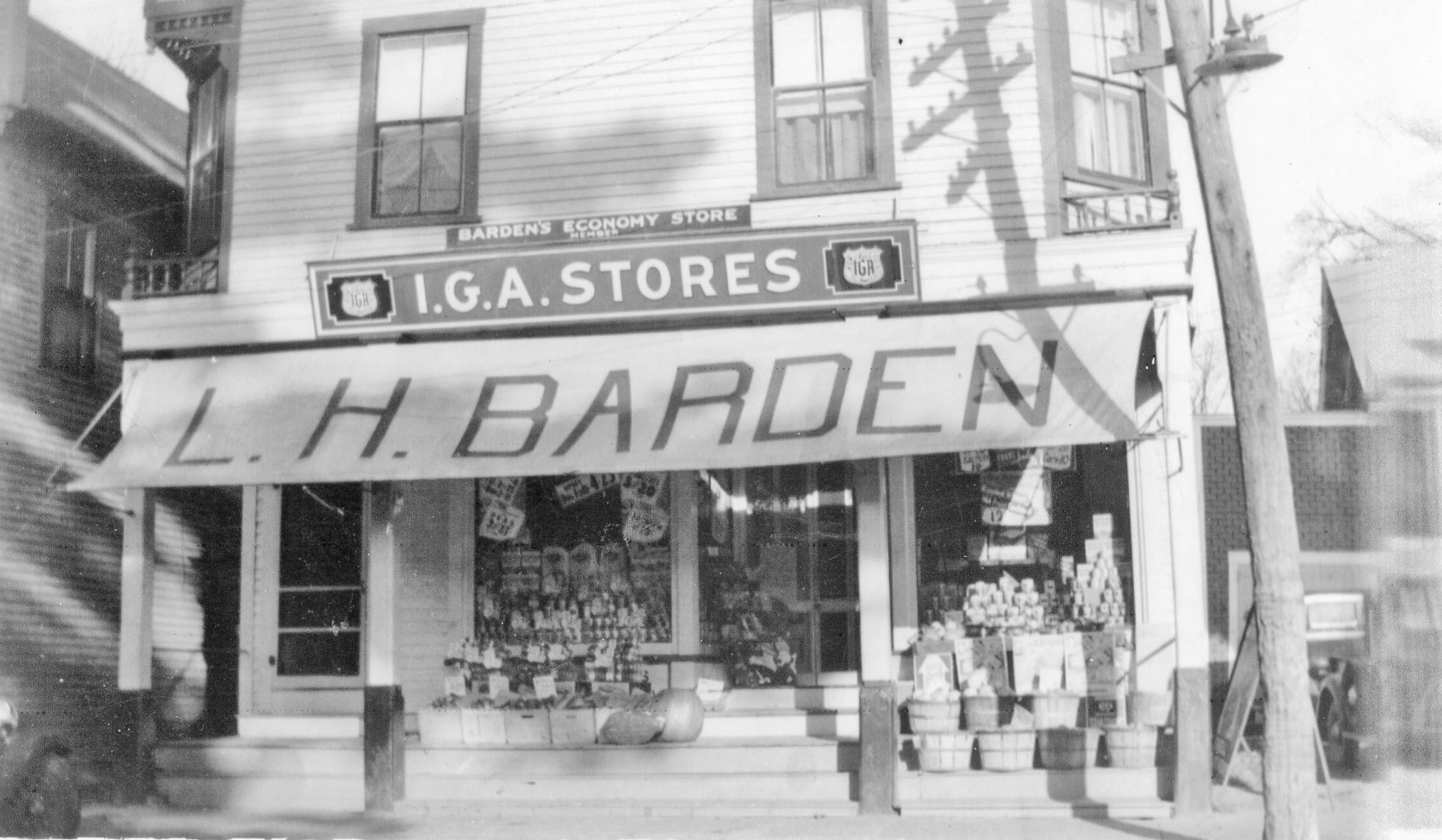
Lewis H. Barden’s IGA Economy Store
*
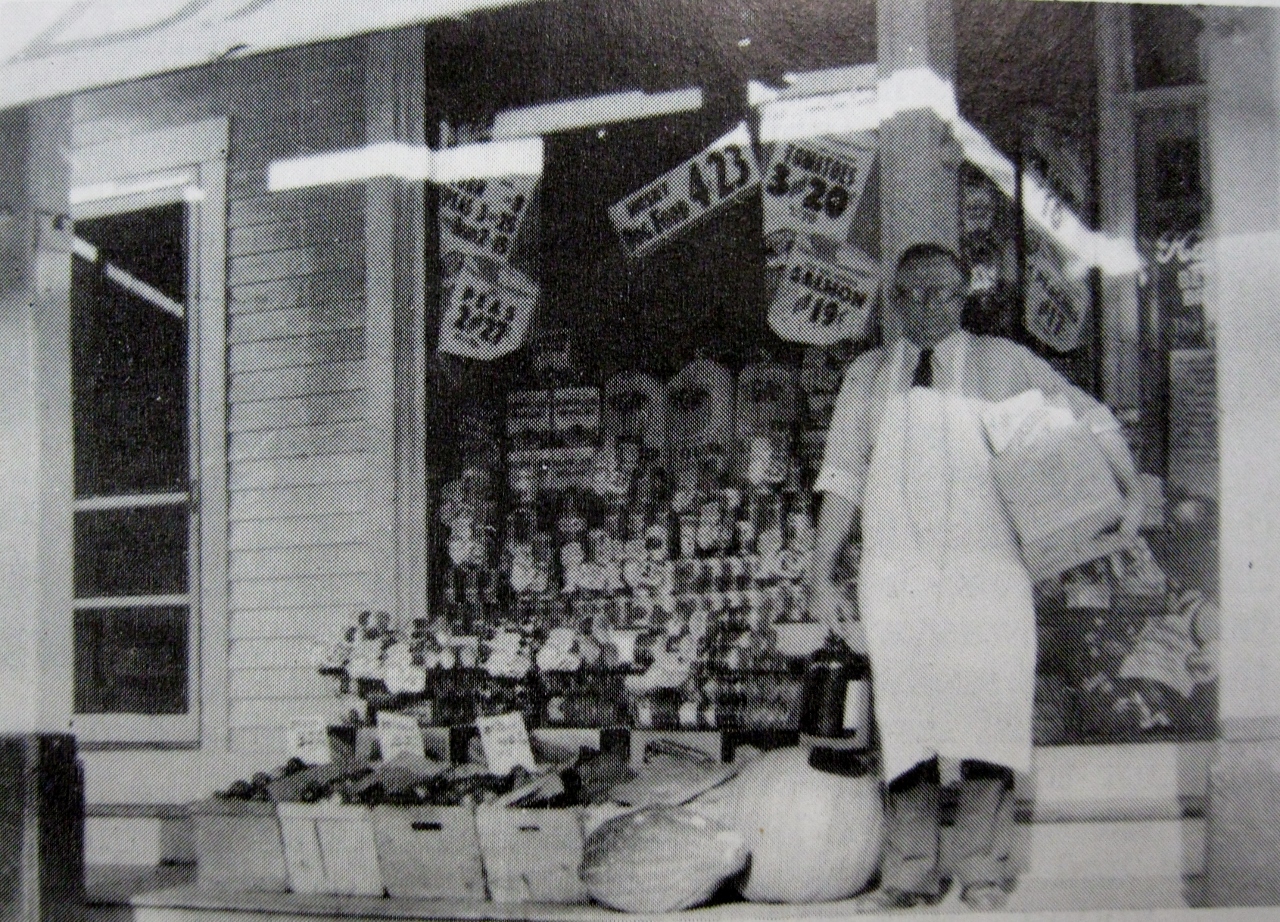
Lewis H. Barden at his Commercial Street Store
*
Overall, the American Woolen Company business venture in Hartland had gone well until October 29, 1929; now infamously known as “Black Friday”. While the 1929 Stock Market crash didn’t adversely affect Hartland immediately, the resulting national Great Depression brought the first signs of trouble to town in 1931 when the American Woolen Company requested a large tax break on their mill holdings in Hartland because of their own overall economic woes throughout all their New England operations.

American Woolen Mill
*
After the Post Office was moved to Robert E. Latty’s building on Main Street in 1922, Walter Earl Seekins (1891-1962), son of Walter E. M. Seekins, opened a restaurant on the first floor of the Linn Block next to the Hartland Drug Store. The office of Dr. Charles E. Norcross, D.D.S. and the law office of J. Howard Haley had been located upstairs for several years prior.
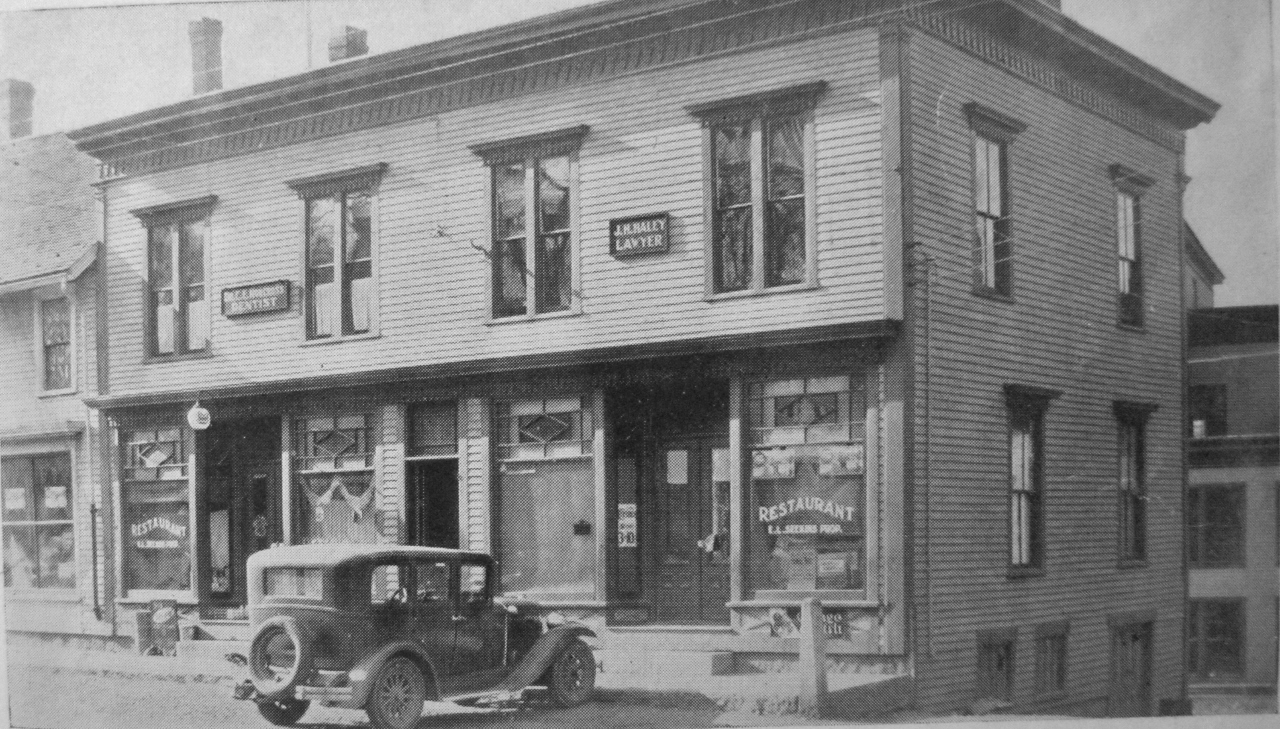
Former Linn Block with Seekins’ Restaurant, Dr. Norcross Office & J. H. Haley Office – 1932
*

*
By 1930, Bertie Hanson had been joined by her son Maurice Wilkins Hanson (1902-1973) who had begun as a salesman at the store. Although she still maintained her dry goods inventory for a time, the store’s business focus was shifting to clothing and footwear. Bertie’s daughter Gwendolyn F. Hanson married Rae Fuller Randlett in 1927.
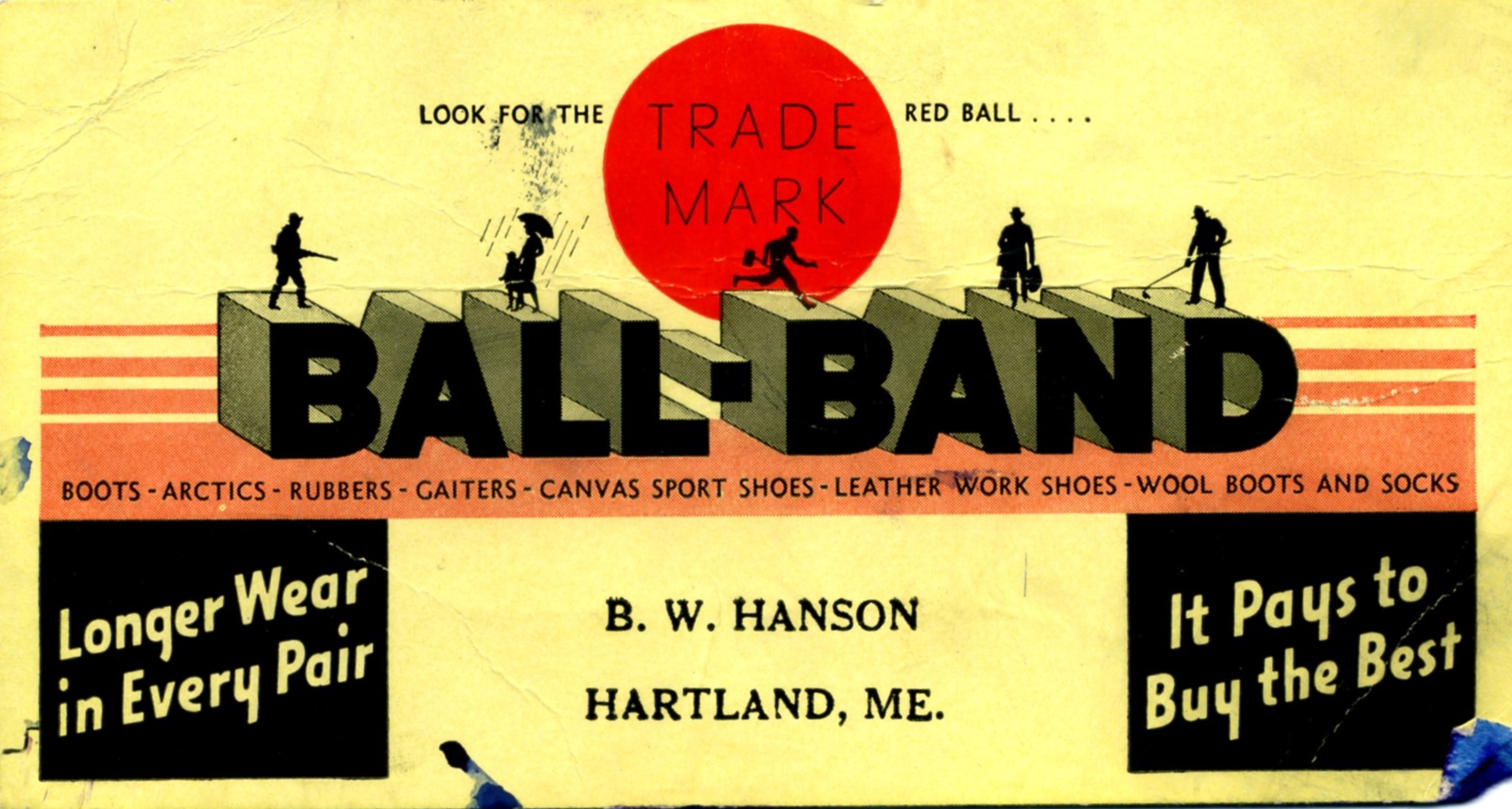
B. W. Hanson Advertisement
*
Although unconfirmed, it is believed this photo is the interior of B. W. Hanson’s Clothing Store based on the merchandise.
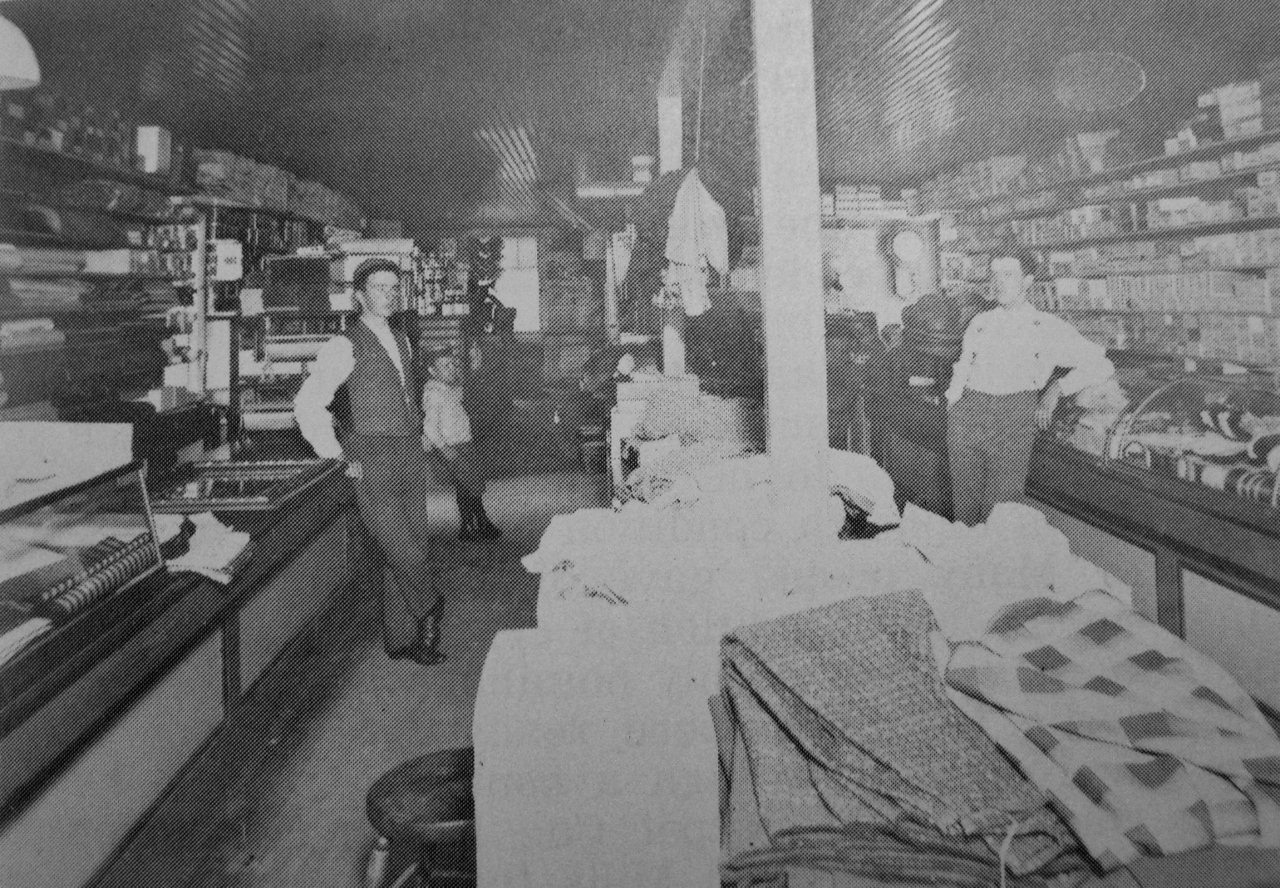
B. W. Hanson’s Clothing Store Interior (Unconfirmed)
*
Following the death of Allen R. Burton in 1932, his son Elmer Burton and his wife Marguerite took over the family business retaining the store name, however Elmer soon closed the undertaking services of the business.
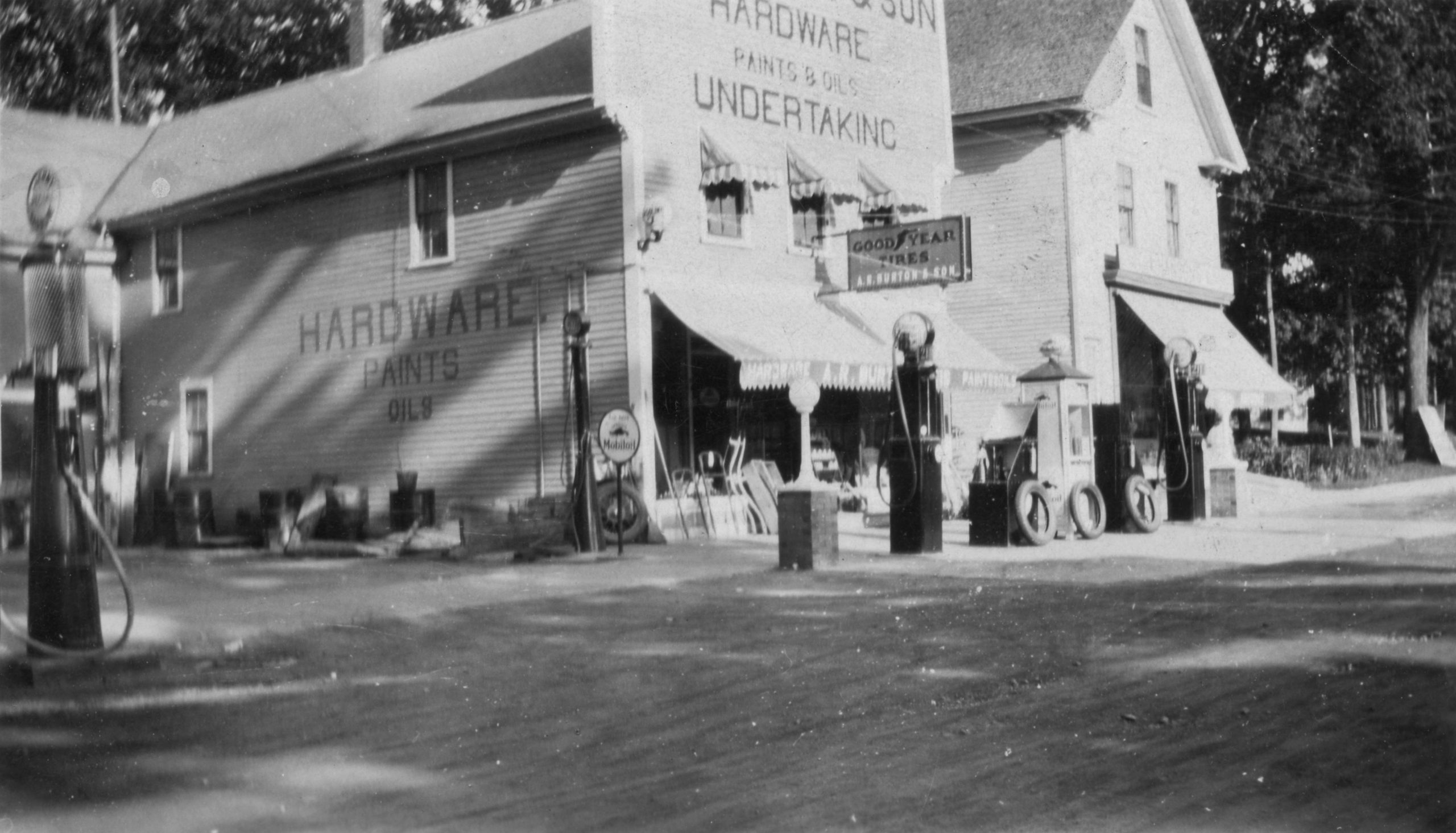
A. R. Burton & Son Hardware & Undertaking and B. W. Hanson’s Dry Goods & Clothing Store – 1932
*
Bert Hubert Lovely (1900-1978) was a familiar face for customers at A. R. Burton’s where he worked for many years after gasoline pumps were installed and it became a full service gas station as well as remaining a full line hardware store. Bert would later operate his own Tydol Gas Station on Pittsfield Avenue.
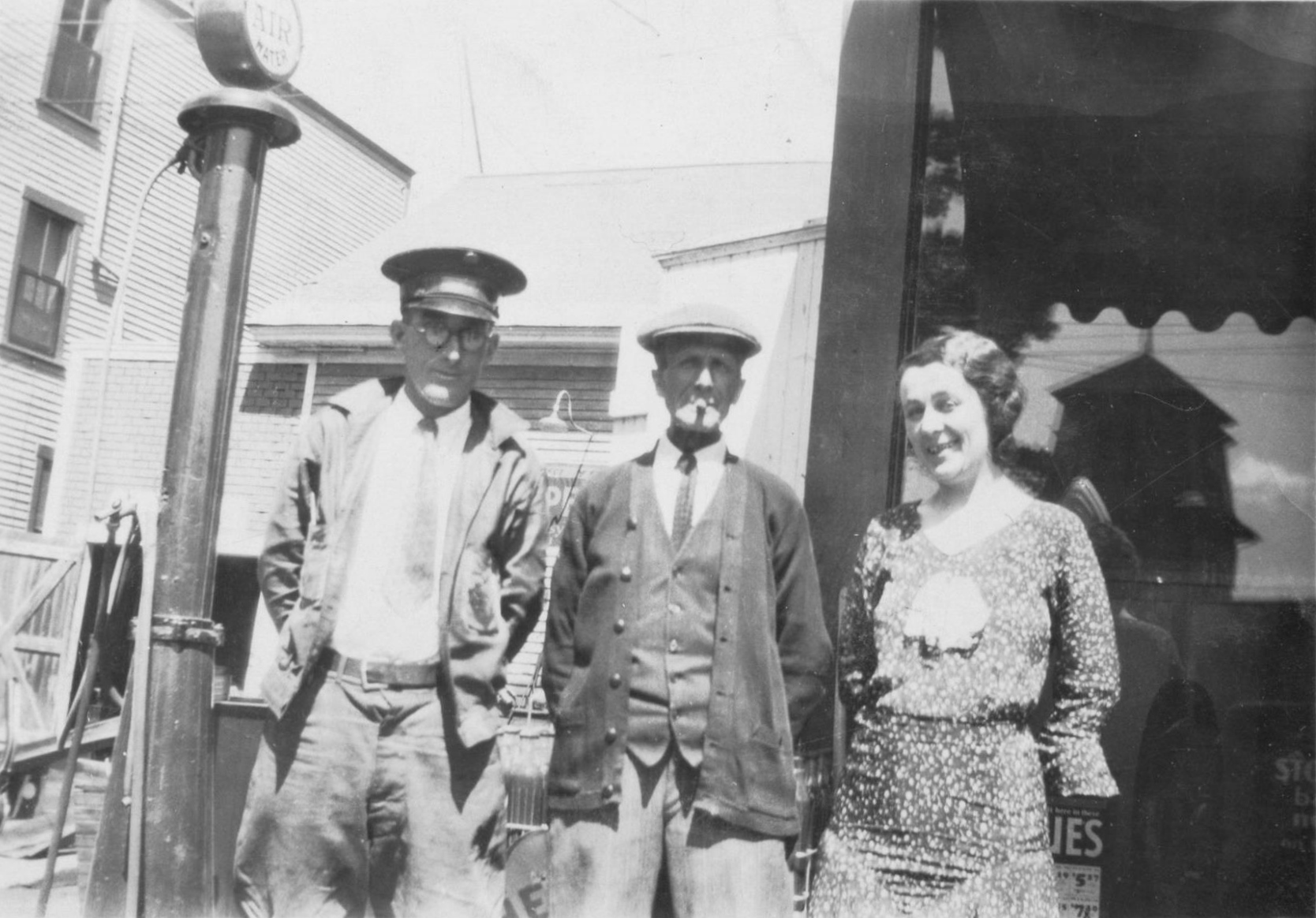
(L-R) Bert Lovely, Will Deering & Marguerite Burton at A. R. Burton & Son Store
*
February 8, 1933 “Cash on Account” receipt for Robert Kendall Snow from A. R. Burton & Son. By this time, the undertaking business has been removed after Elmer & Marguerite had taken over the family business.
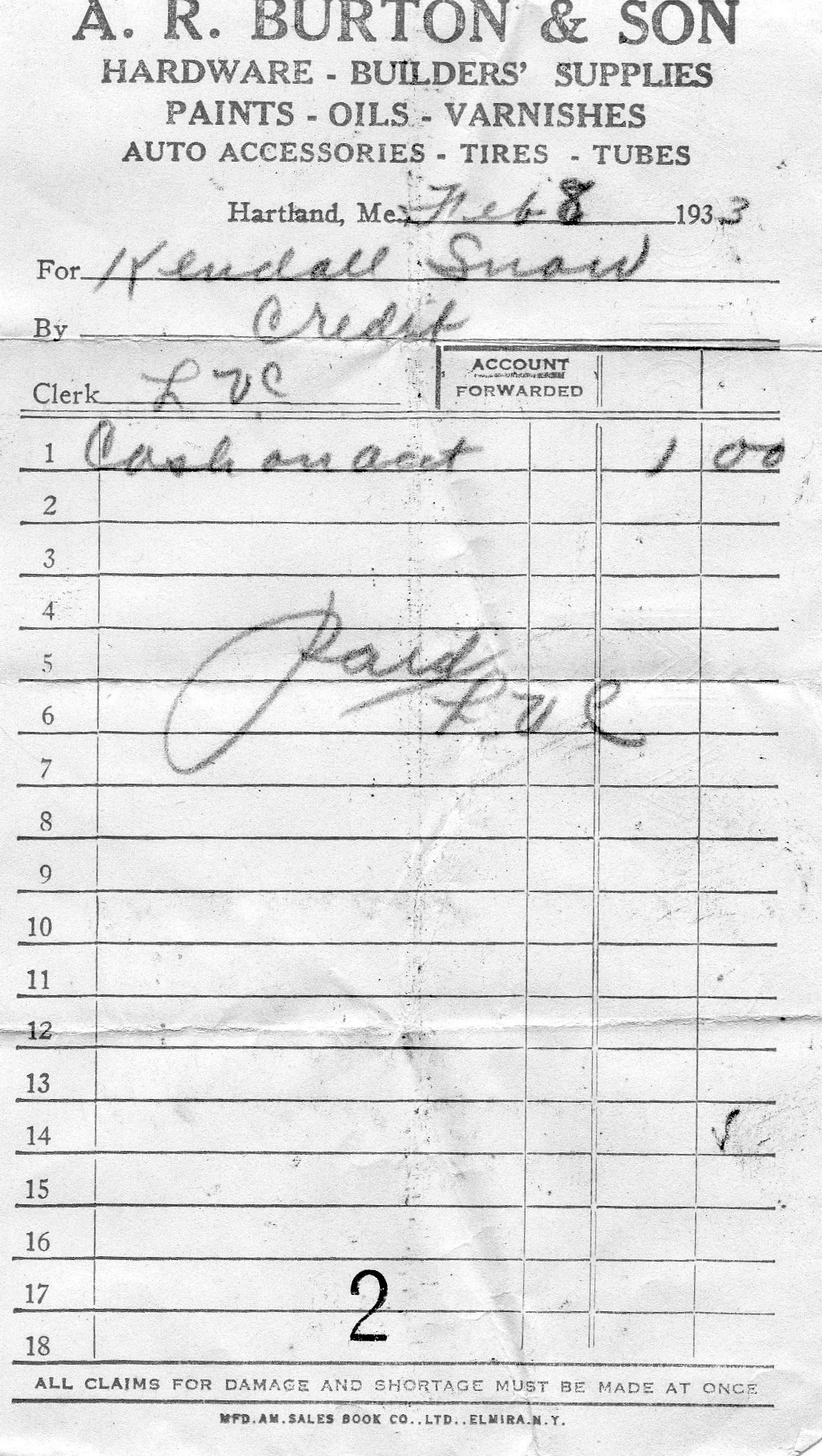
Robert Kendall Snow Receipt
(Photo courtesy of Dana Perkins; Robert’s grandson)
*
Although the American Woolen Company made some efforts keep the mill open, in 1932 they officially announced they would close the Hartland location and surrender all their property holdings and soon filed for bankruptcy. Shortly after their bankruptcy filing, much of the vast real estate holdings it had purchased in Hartland from the former Linn Manufacturing Company and Archibald Linn’s Estate were sold off at the Great Auction of 1932 held on December 2nd.
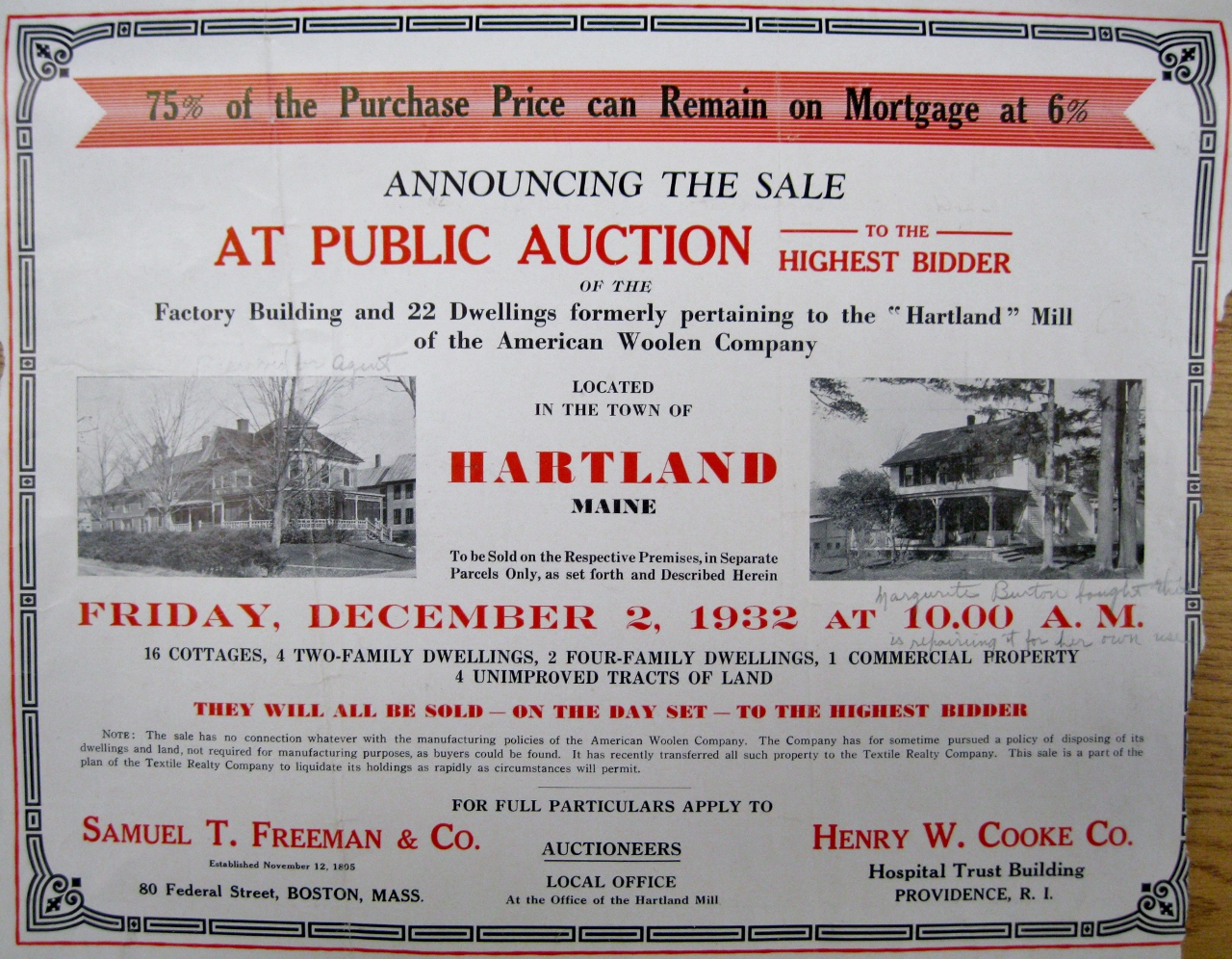
Great Auction of 1932 Flyer Cover
(Original Flyer owned by Fred Libby – Photo courtesy of Wayne Libby)
*
The auction did not include the 2 main mills or several of the smaller buildings on the mill’s lot which were surrendered to the town along with the former Linn Woolen Mill Main Office but over 2 dozen houses and properties remained. Numerous locations on Commercial Street included the former Archibald & Grace Linn residence, the Linn Block built in 1888, the former Gorham Prescott Block and the former Greenville Shaw Maple Lane Farm.
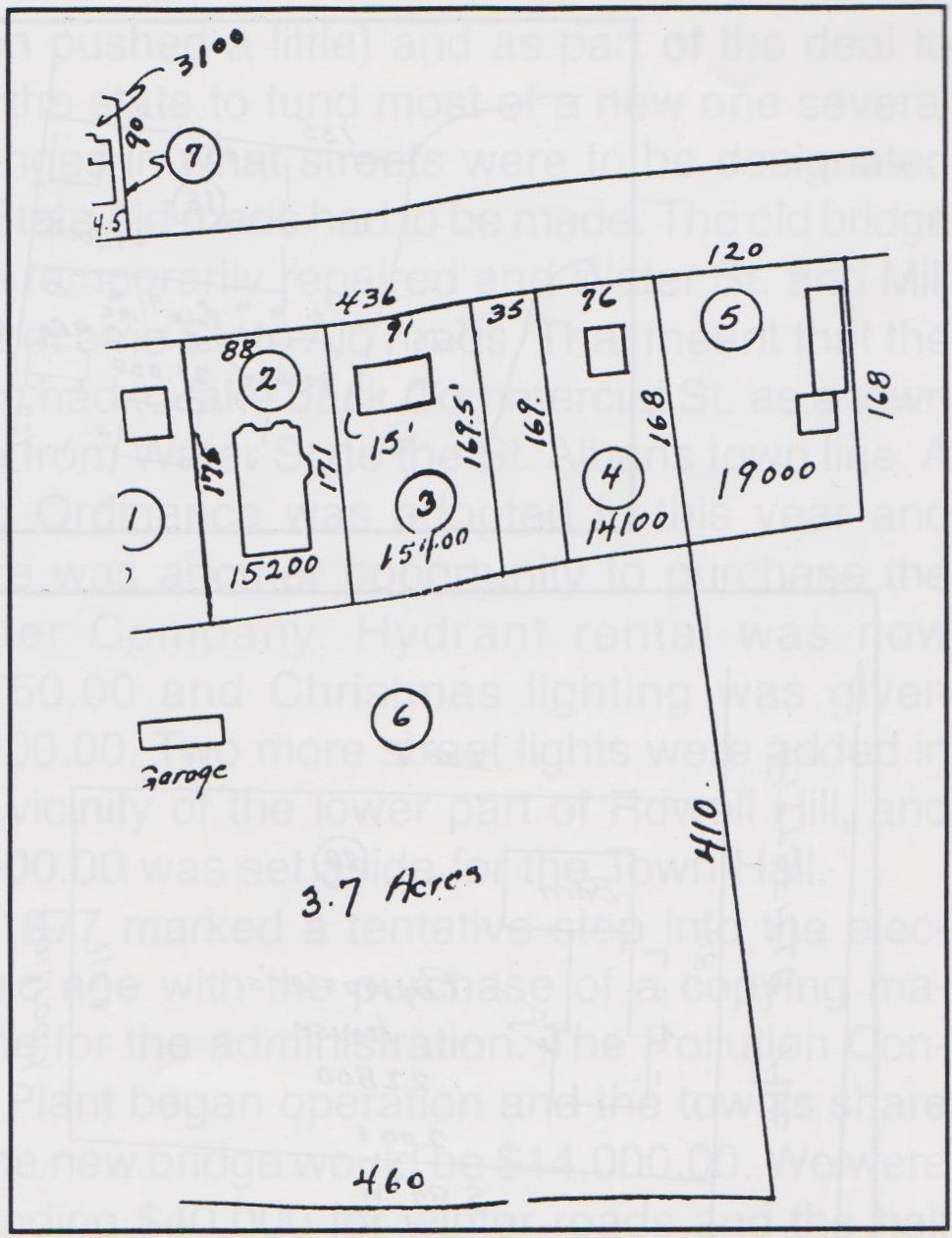
Auction Map 1 – Upper Commercial Street
*
1. NO. 44 COMMERCIAL STREET: Approximately 79,800 square feet of land with two-story frame cottage. Having seven rooms, bath, toilet, hard pine floors, heater. (Purchased by Mrs. Corliss for $800)
2. NOS. 40-43 COMMERCIAL STREET: Approximately 15,200 square feet of land with two story frame four-family dwelling, having five rooms to each family, toilets, electricity. (Purchased by Mr. Bean from Dover for $300. He sold immediately after to Carl Randlett) Former Greenville Jefferson Shaw residence, aka Maple Lane Farm
3. NOS. 45-46 COMMERCIAL STREET: Approximately 15,400 square feet of land with two story frame two-family dwelling having seven rooms to each family, bath, heater. (Purchased by Elmer Burton for $800) Sold to Lloyd Cookson, Sr in 1933
4. NO. 47 COMMERCIAL STREET: Approximately 14,100 square feet of land with two-story frame cottage, having seven rooms, bath, toilet, heater.
(Purchased by George E. Merrow for $975)
5. NO. 20 COMMERCIAL STREET: Approximately 19,000 square feet of land with one and one-half story frame cottage having seven rooms, shed and barn. (Purchased by J. Haley for $500)
6. TRACT OF LAND: Approximately 3.7 acres of land. With framed 4 car garage. (Purchased by Frank Withee for $100) Sold to Carl Randlett in 1933
7. NO. 19 COMMERCIAL STREET: Approximately 3,100 square feet of land with two-story frame cottage having five rooms with shed attached.
(Purchased by William Brawn for $200)
*
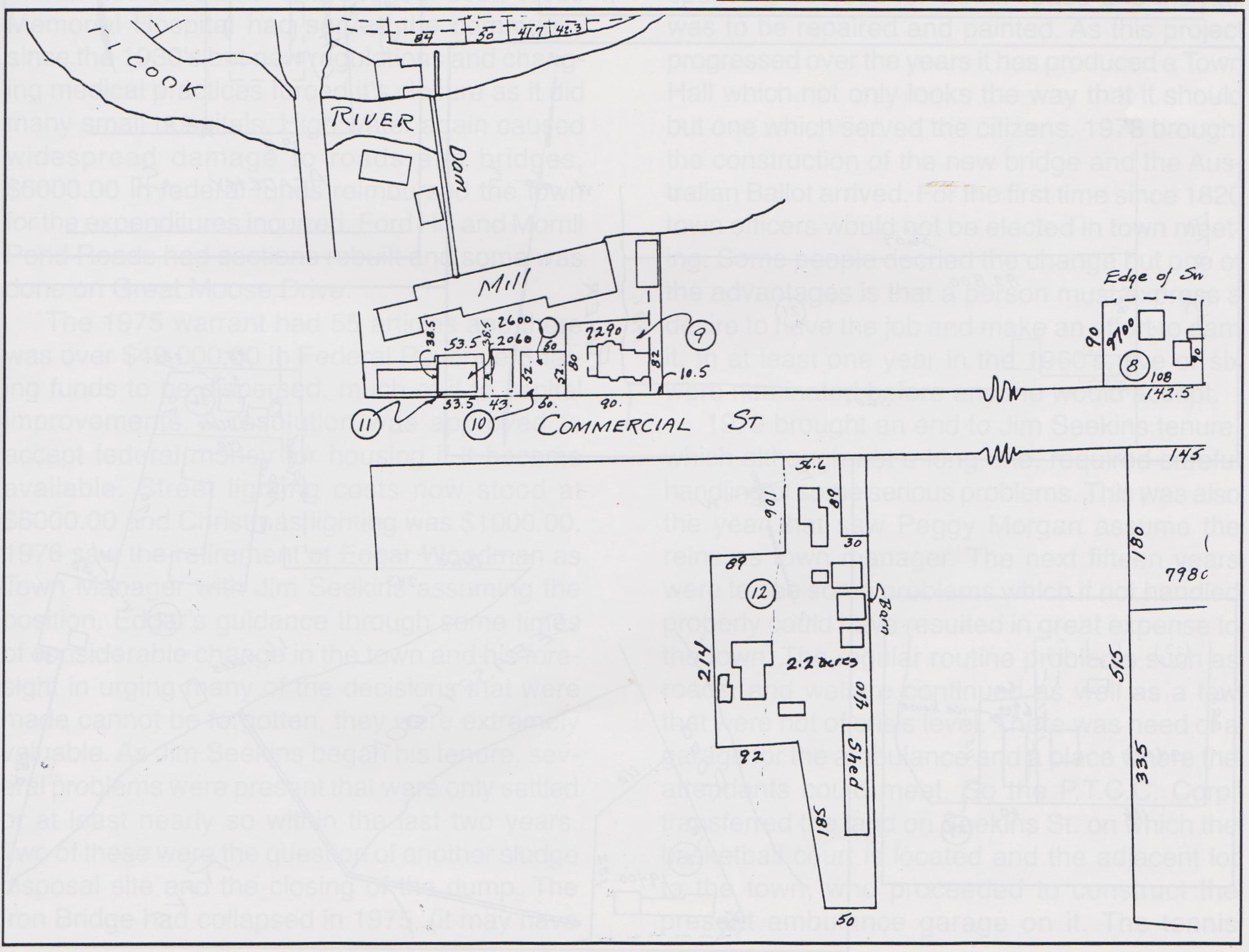
Auction Map 2 – Lower Commercial Street
*
8. NO. 18 COMMERCIAL STREET: Approximately 9,700 square feet of land with two-story frame cottage having six rooms, also barn in rear.
(Purchased by Cora Davis for $750)
9. NO. 33 COMMERCIAL STREET: Approximately 7,290 square feet of land with two-story frame cottage, having nine rooms with electricity, bath, toilet, furnace heat. (Purchased by Elmer Burton for $675)
10. BUILDING LOT: Approx. 2,600 square feet of land. See auction plot.
11. NOS. 5-6-7-8 COMMERCIAL STREET: Approximately 2,060 square feet of land with two-story frame building having two stories and two offices.
(Purchased by Mr. Shandling from out of town for $1450) Sold to J. Howard Haley & Dr. Charles E. Norcross in 1933
12. NOS. 16-17 COMMERCIAL STREET AND REAR NOS. 10-11-12-13: Approximately 2.2 acres of land with one and one-half-story frame two-family dwelling having five rooms each and two-story four-family dwelling having five rooms each, also framed sheds. (Purchased by Clair Currie for $100 & $675)
*
Following their purchase of the former Archibald & Grace Linn Residence (No. 9) at the Great Auction of 1932, Elmer & Marguerite Burton moved into their new home across the street from their store where they remained until the widowed Marguerite sold the home in the late 1950s.
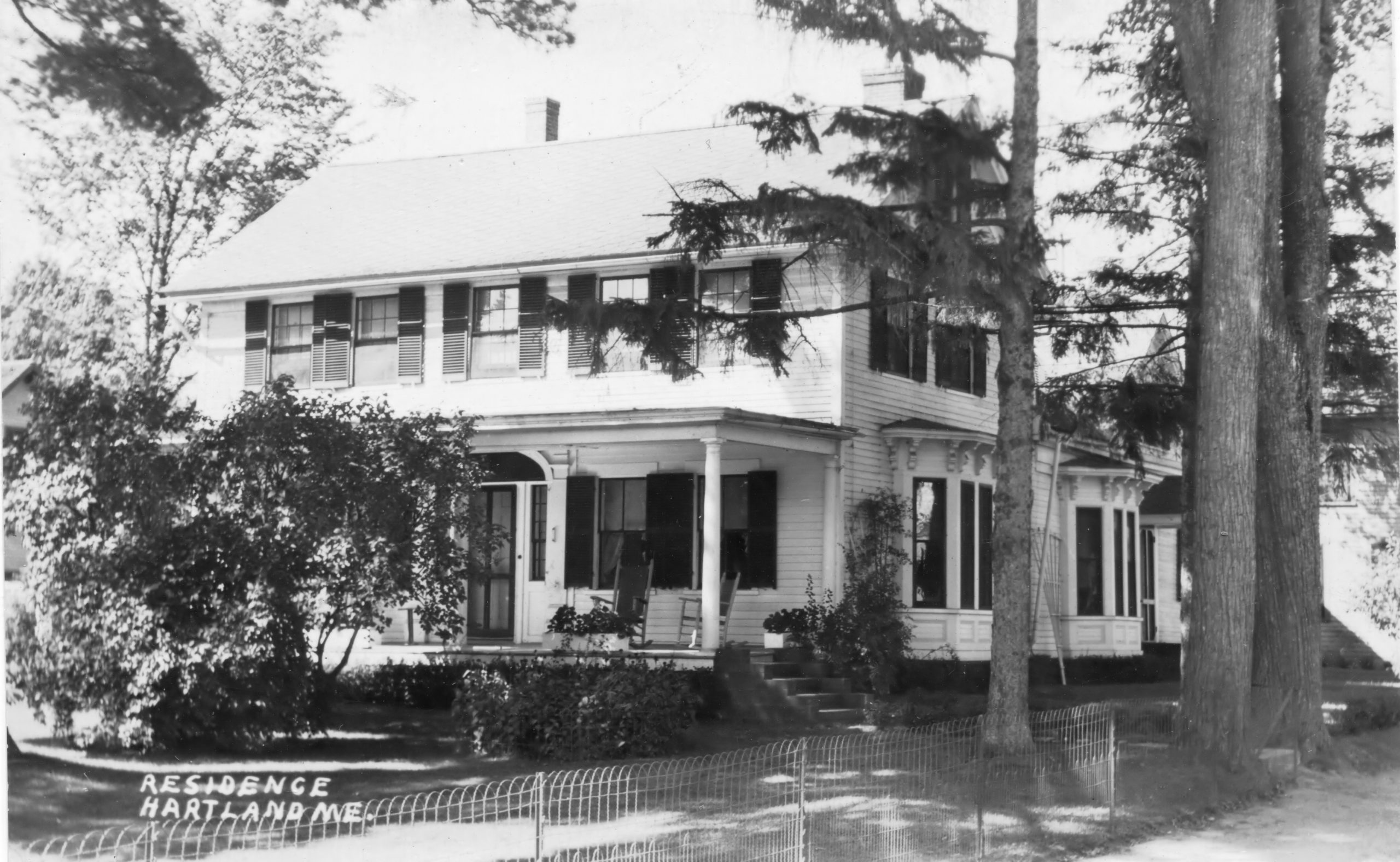
Former Prescott-Linn Residence purchased by Elmer & Marguerite Burton – 1945
*
Citizens knew the future of Hartland rested upon finding a suitable and long term replacement at the abandoned American Woolen Company facility. A search began at once by various factions including the newly formed Hartland Chamber of Commerce but came up empty.
In early 1934, a group of citizens banded together in an unprecedented effort to bring a new industry to town. They decided to create and incorporate as a company to take over the former mill’s remaining holdings with $10,000 worth of Capitol Stock offered to interested citizens in 2,000 units of shares valued at $5.00 each. The grassroots movement secured roughly $4,100 worth of initial stock share commitments from 51 citizens by the time it held its first Stock Subscribers Meeting on December 14, 1934 to vote on empowering the committee to officially incorporate as Hartland Mills, Incorporated.
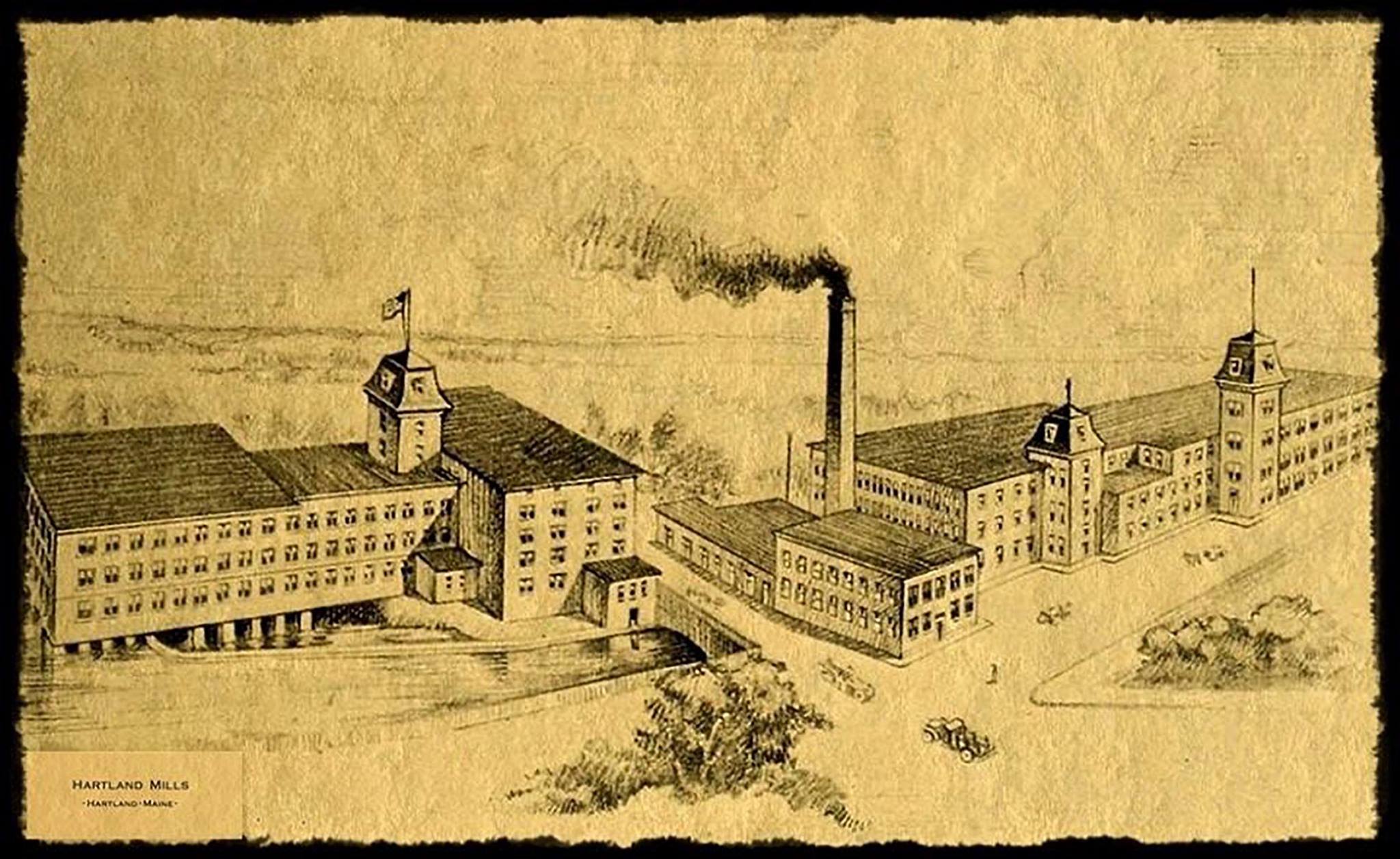
Hartland Mills, Incorporated Advertisement – 1935
*
Throughout 1935, several offers were made to lease or buy the mills but none were accepted with Hartland Mills, Inc. siting unfavorable lease conditions or various other unacceptable terms. In April of 1935, the Ohio Carpet Company stated it had a firm interest in locating a business at the mills pending the process of a loan. Major work and investments were done in preparation for the new owners however their loan application was rejected in November and the deal fell through.
Following the very disappointing collapse of the Ohio Carpet Company deal, the Directors were informed of a request from Irving Tanning Company of Peabody, Massachusetts to meet with the group on December 16th and tour the mill with an interest in establishing a new subsidiary for their company. In a follow-up meeting with Meyer Kirstein in Peabody on December 19th, members of Hartland Mills, Inc. returned with a note for Two Thousand Dollars in good faith on a contract for the establishment of a new tannery business. The tanning industry in Hartland was about to be reborn and the new Hartland Tanning Company would soon open in 1936.
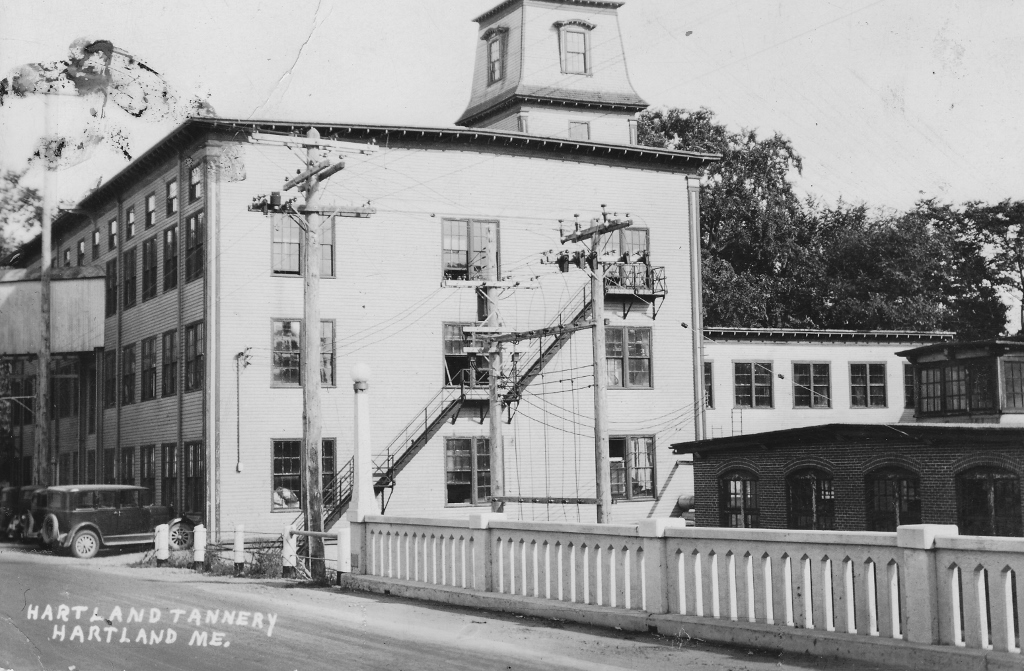
Hartland Tanning Company
*
One of several buildings Hartland Mills, Incorporated acquired was the former Linn Woolen Mill Main Office on Commercial Street which had been built with the mill in 1863. Several unsuccessful attempts by Hartland Library Trustees to purchase the building were made until a special Hartland Mills, Inc. Stock Holders Meeting was held on September 25, 1935. Library Trustees Dr. Charles A. Moulton & George M. Lancey pleaded their case for the building to be sold so it could be used as a permanent home for the library which was still located at the Opera House at the time. This time the proposal was accepted by a substantial majority of the stock holder shares and following a special Town Meeting to formally vote on the proposed sale, it became the first dedicated building for the Hartland Public Library in 1935.
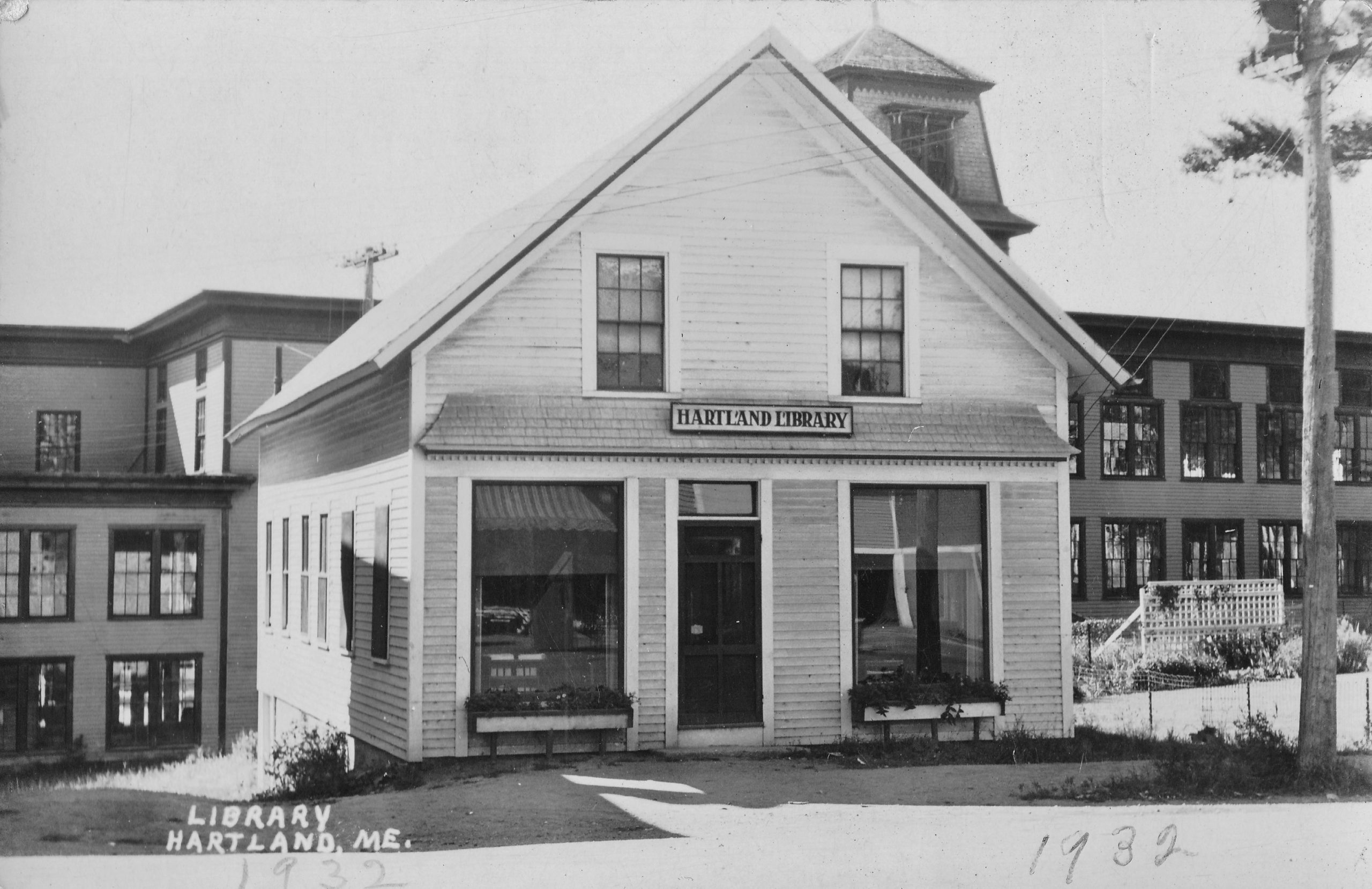
New Home of the Hartland Public Library – 1935
*
Following the 1932 sale of the former Linn Block at the Great Auction, Walter Seekins closed his restaurant. It was later opened by Thor Stromback in the late 1930s into the late 1940s as a restaurant & tavern and was a very popular spot for Hartland Tanning Company workers. It was eventually purchased by Lloyd Page who operated a cafe at the location until 1950.
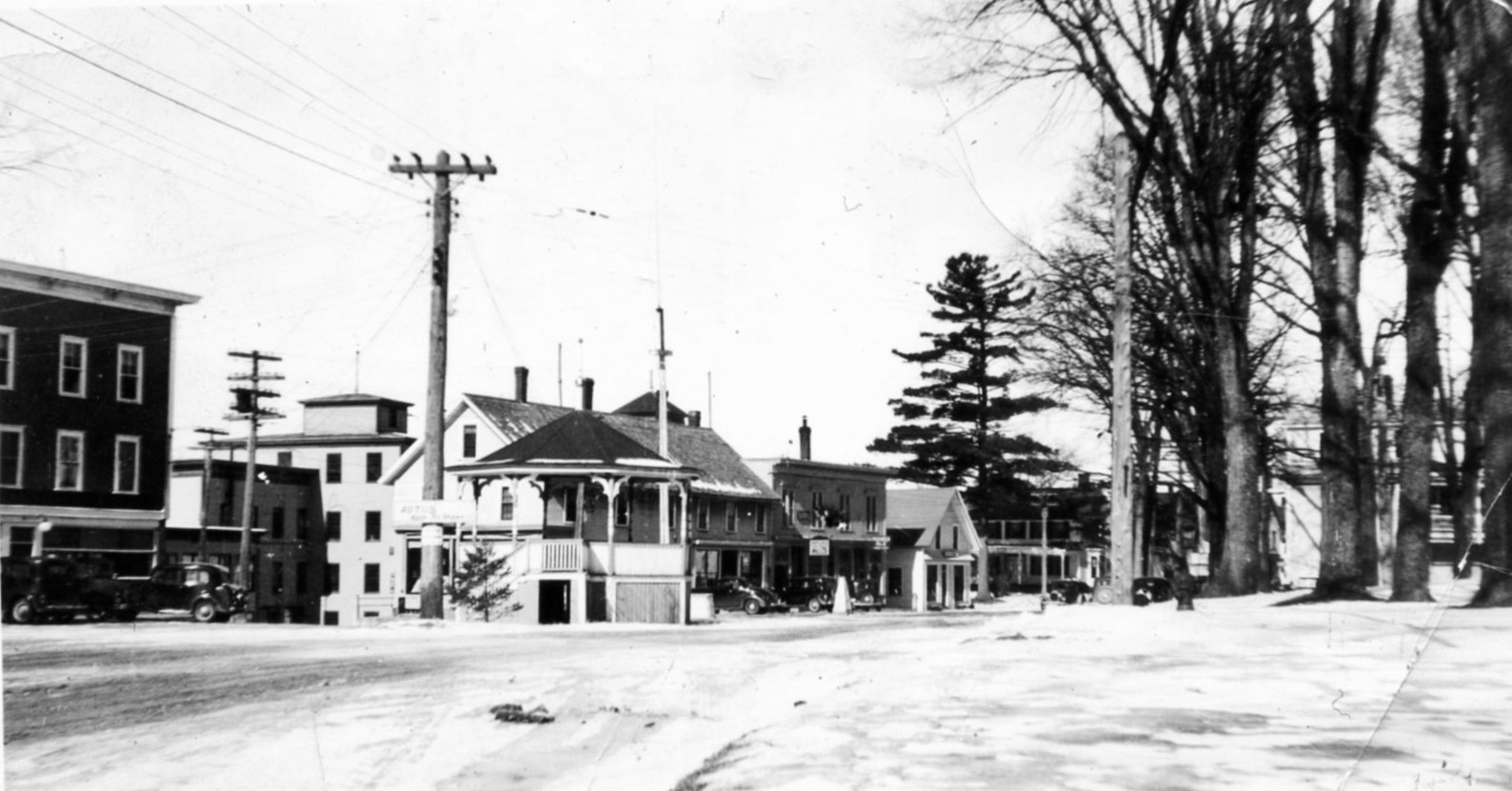
Commercial Street from Warren Square – 1937
*
George Cook (1812-1890) moved from St Albans to Hartland by 1840 where he soon after married Christiana Otis and raised their family of 8 of 9 surviving children. It was noted in the 1870 Census some of their children, Rosanna (25), Alzadia (23), William (18), Permelia (16) & Laura (14), were working at the Linn Woolen Mill. It is unknown exactly where they lived before but by the 1880 Census they were living on Commercial Street also noted on the 1883 Map of Hartland Village. George & Christiana and several of their children are interred at Ireland Cemetery. Among George’s siblings are Mary (Cook) Woodbury, wife of Isaiah Woodbury II & Martha (Cook) Stedman, wife of Orren Stedman.
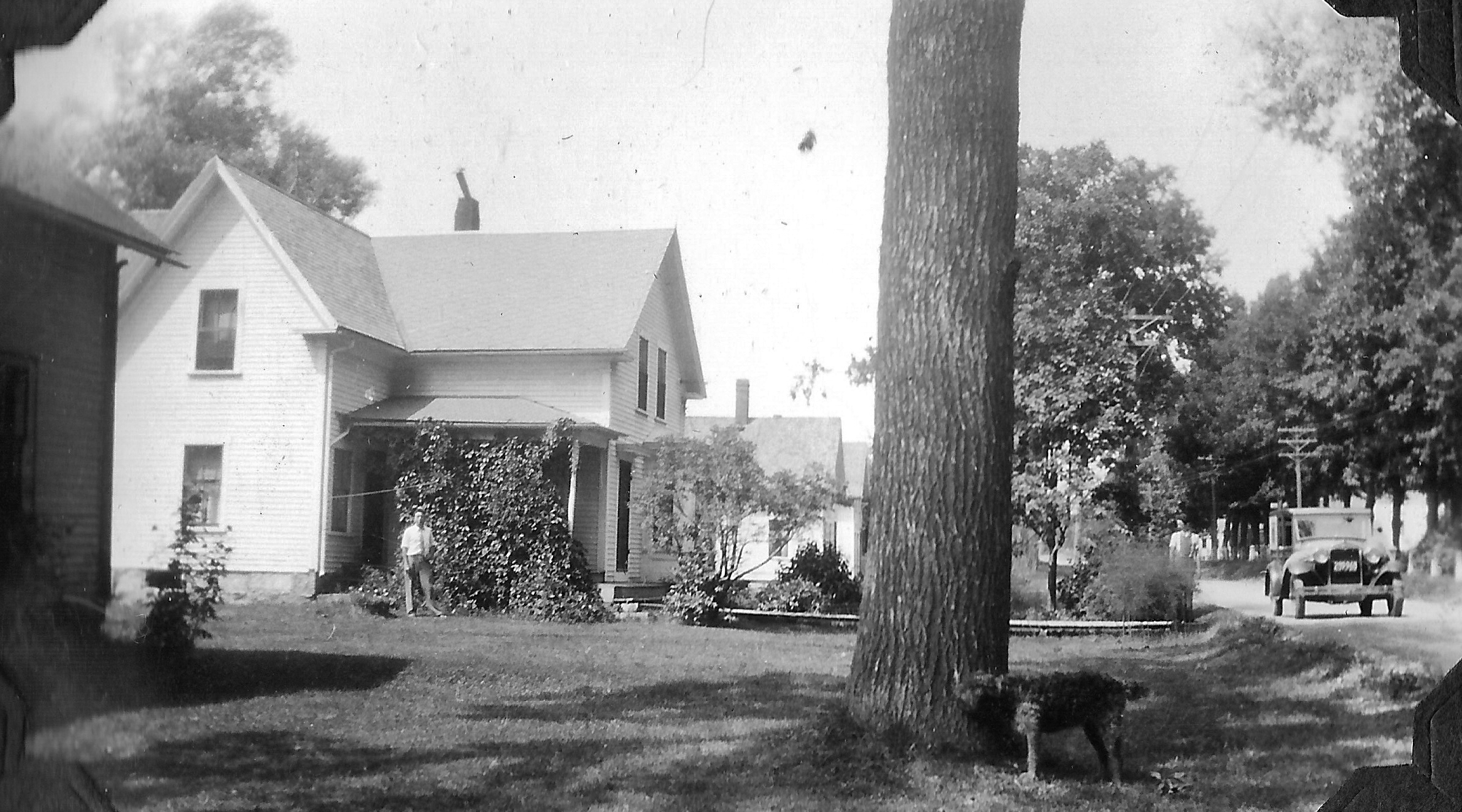
Former George Cook Residence just past Water Street
*
Renovations at the former William Anderson residence at the corner of Commercial Street & Water Street.

Former Anderson Residence before renovations
*
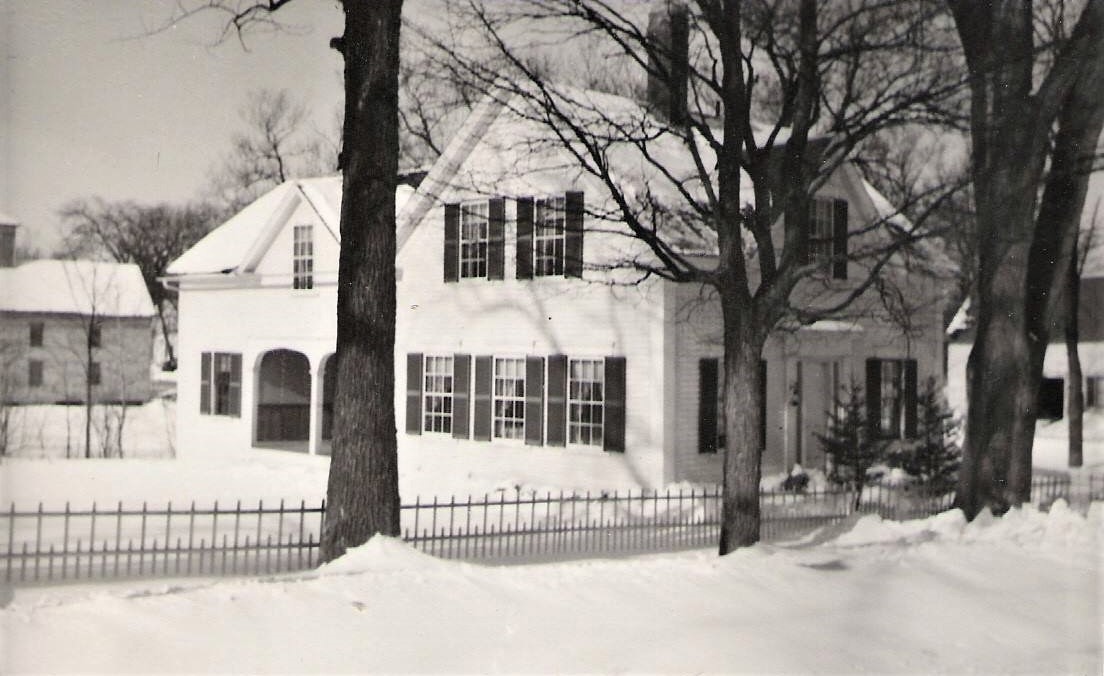
Former Anderson Residence after renovations
*
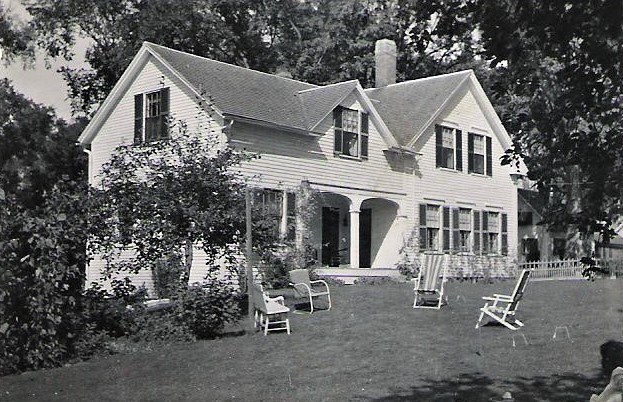
Backyard of former Anderson Residence after renovations
(Anderson House Photos Courtesy of Maggie Smith)
*
Commercial Street was a thriving center of commerce in Hartland in the late 1930s with several stores featuring various types of merchandise, gas stations, drug store, restaurant, bowling alley & pool hall, dentist and law offices, Town Library and numerous houses along its path out of town.
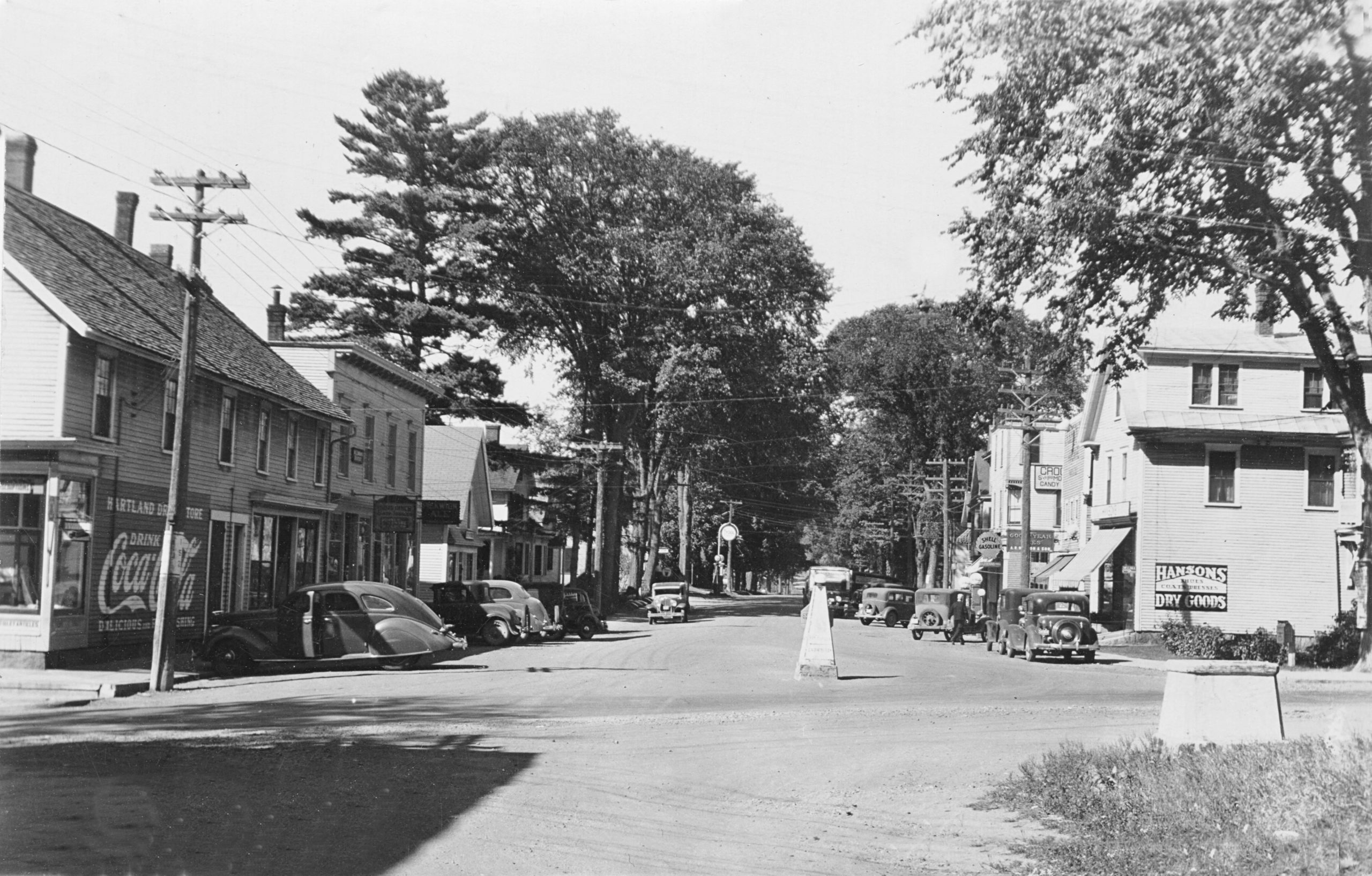
Commercial Street from Warren Square – c1939
*
By the late 1930s, Lewis H. Barden purchased the original John Butterfield Block and the William Lancey Block just up from his store on Commercial Street as seen on the map below listed under his 2nd wife Eda’s name. Barden rented out apartments in the Butterfield Block. He also rented apartments upstairs at the Lancey Block but leased the 1st floor to Alvin A. Spaulding who operated a magazine, bowling alley & pool room until he sold his business in 1951 to Charles O. Cloutier who continued operations in the building and moved into the upstairs apartment with his wife Alvina Raymond until his death in 1955. Alvina was the widow of Homer E. Gregoire before she married Charles in 1941 and mother of Raymond Gregoire.
*
By 1940, Maurice Hanson had become a full partner in the family business and the store had become known as B. W. Hanson & Son Clothing Store. Maurice married Lucille Braley in 1932 and the couple were raising their only child Gary Hanson while Lucille worked as a Nurse at Scott-Webb Memorial Hospital.
*
Property Ownership on Commercial Street from the 1943 Hartland Village Map.
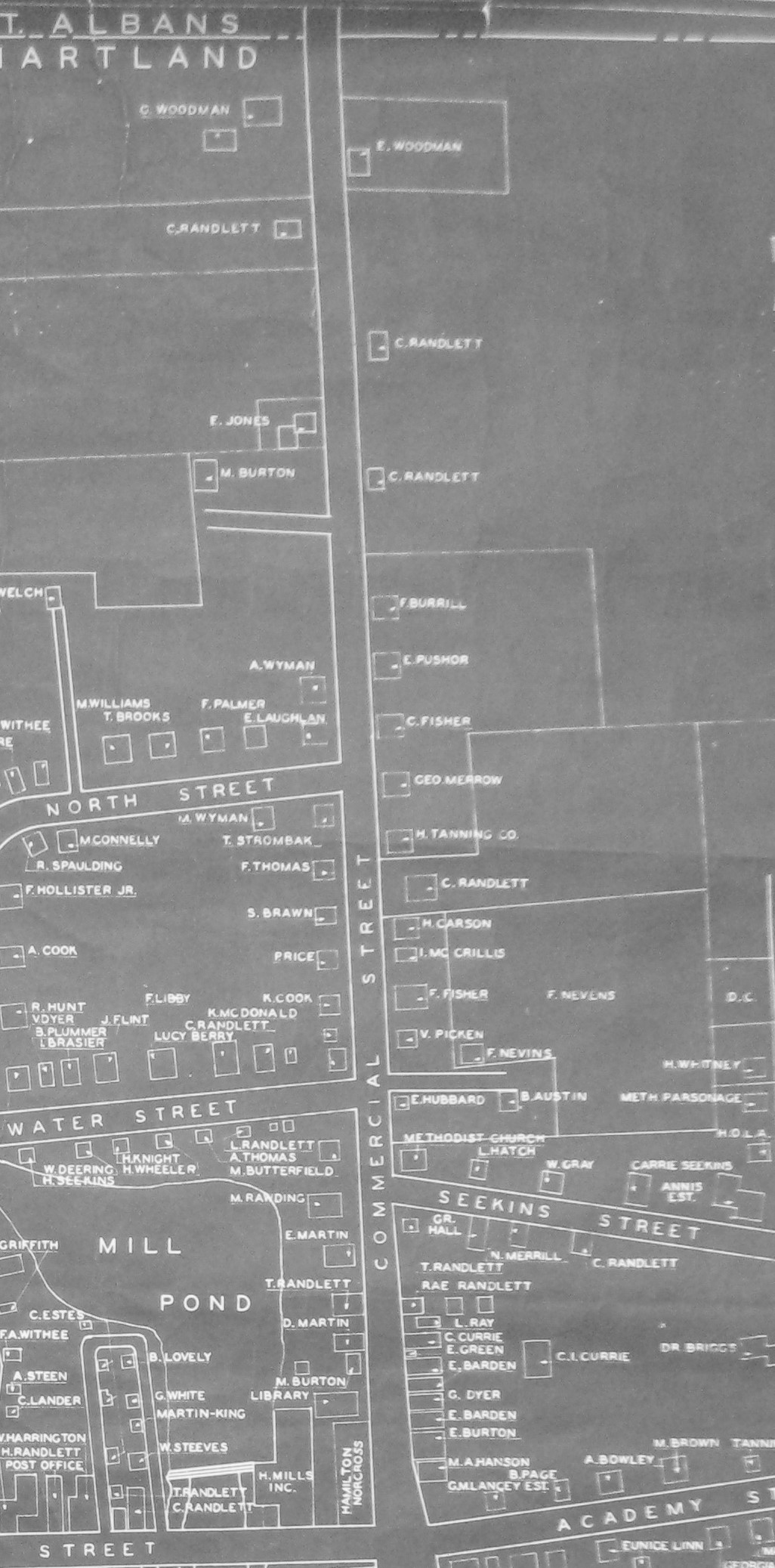
Commercial Street – 1943
*
Following the death of George Merrill Lancey in 1942, Lewis H. Barden and his 2nd wife Eda B. Stafford-Holt purchased the former Blake-Lancey home on Academy Street in 1945 and moved in with their 2 children, Lewis Henry Barden, Jr & Laura Saville Barden.
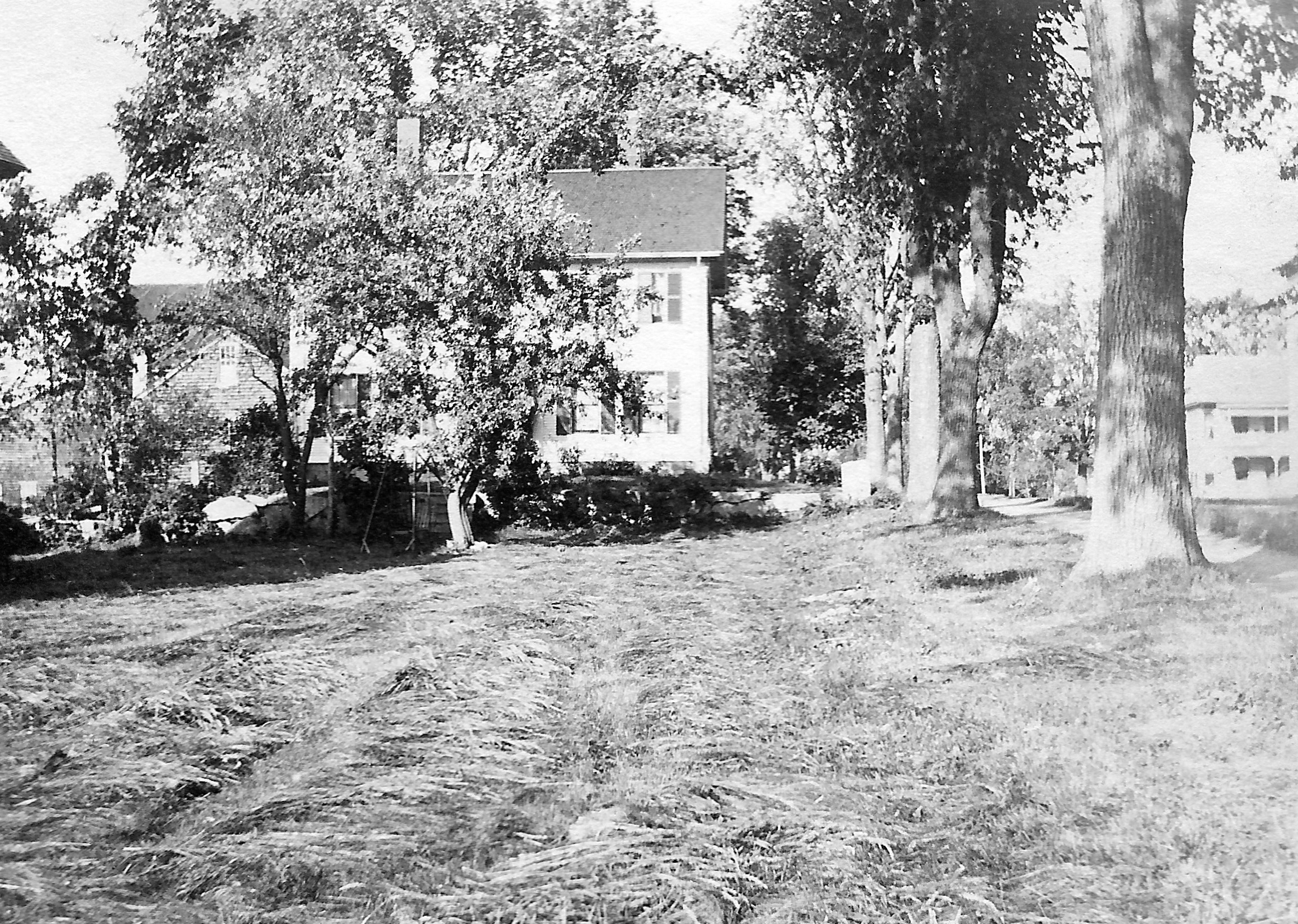
Former Blake-Lancey Home on Academy Street from Commercial Street
*
Although Ervin Martin’s Logging Company had incorporated many trucks into the fleet, they still used old fashioned horse power when needed.
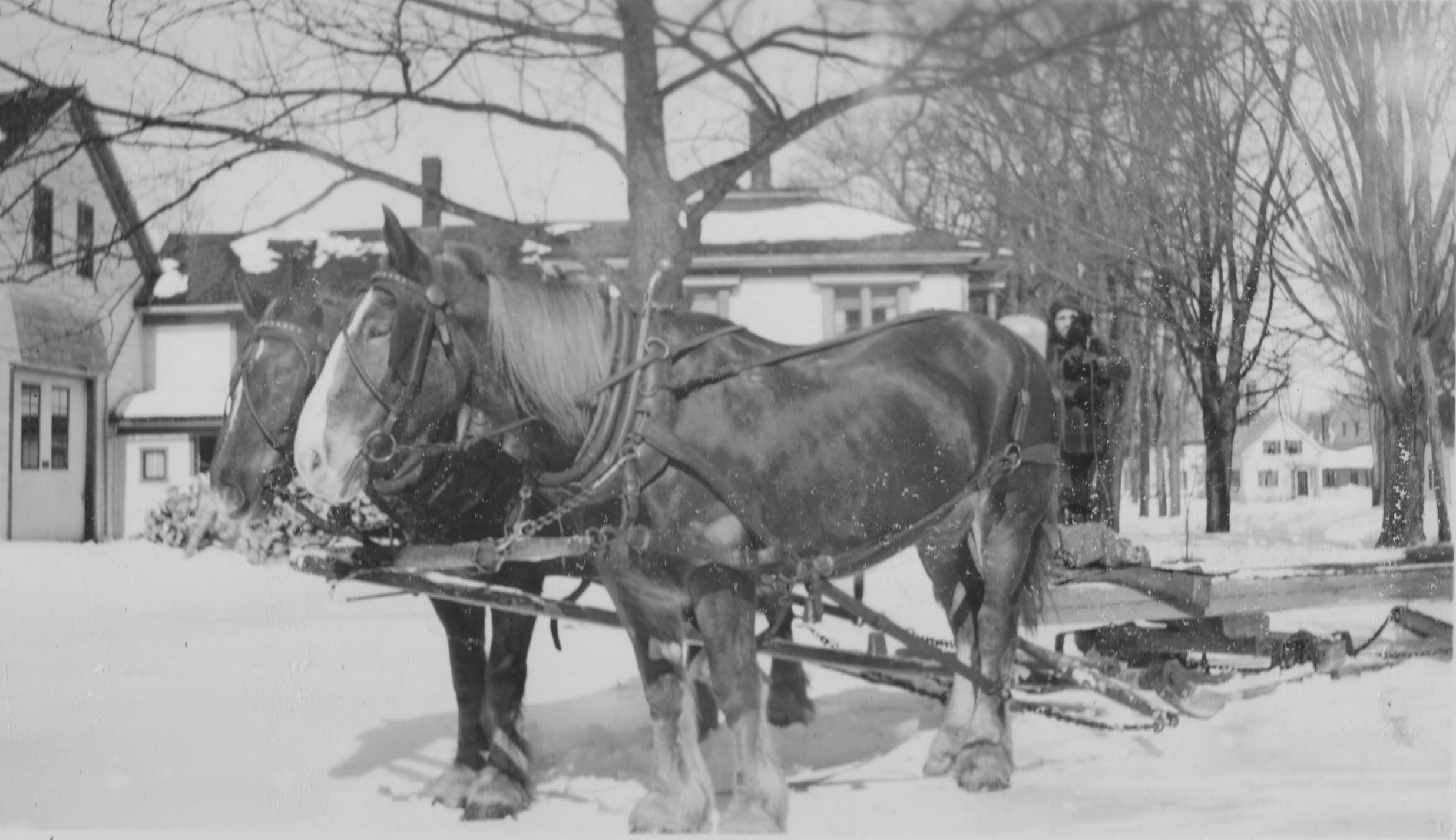
Raymond Martin leads Maud & Queenie up Commercial Street – 1943
(Photo courtesy of Maynard Ross)
*
In the early 1940s, Rae Fuller Randlett (1904-1984) purchased the A. R. Burton & Son Store from Elmer & Marguerite Burton where he began operating as “Rae’s General Hardware”. Rae was recently widowed after his wife Gwendolyn Hanson passed away unexpectedly in 1938 at 33 years old leaving their 2 children, Rae Jean Randlett & Rogen Randlett. Rae also serviced the town school buses and provided gasoline for them for many years from his store. He was an active member in numerous town affairs including being on the Board of Hartland Mills, Inc., and serving on the Hartland School Committee & Hartland Volunteer Fire Department.
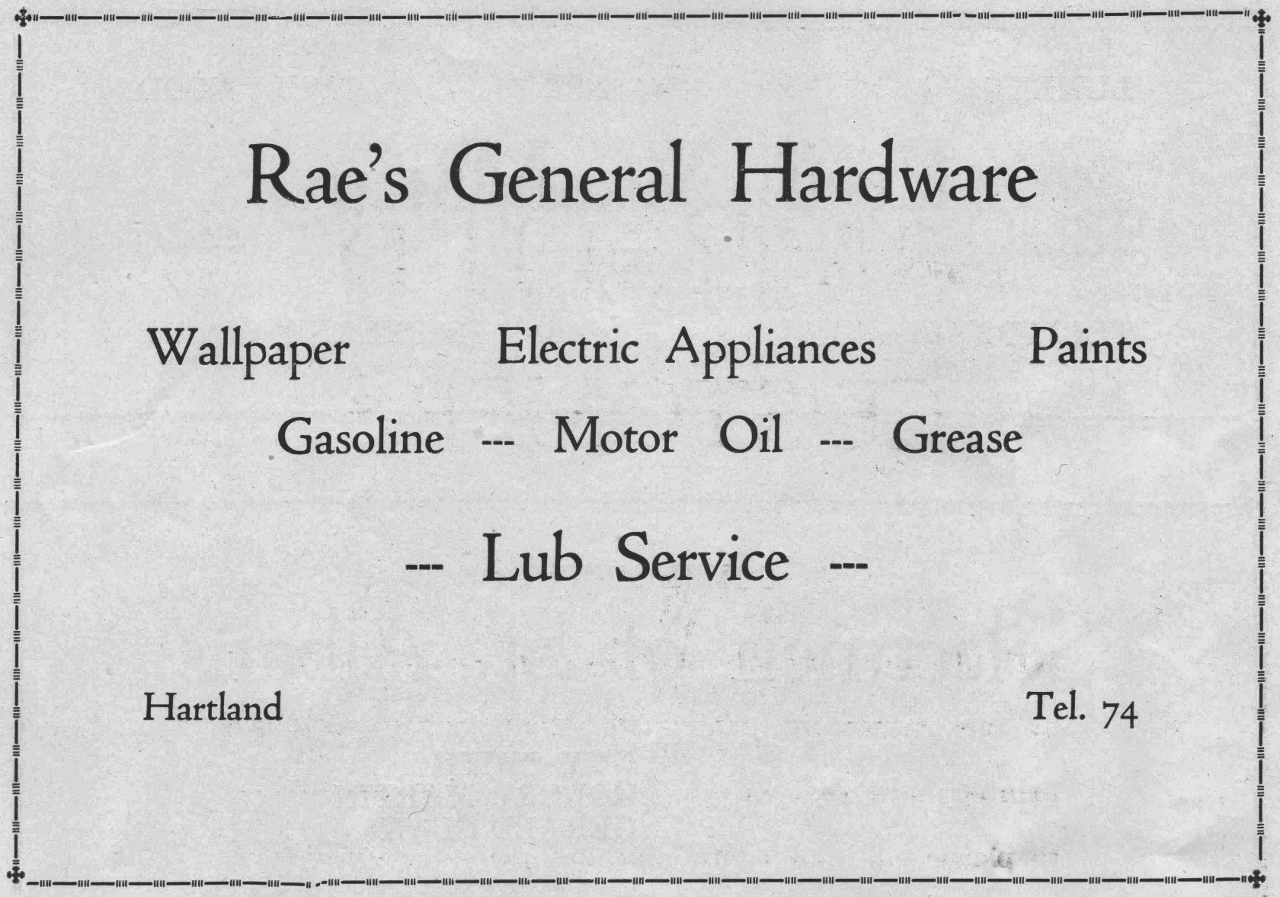
Rae’s General Hardware Ad – 1945 Ripple
*
About 1944, Guy Lloyd Wood (1903-1988) moved from Burnham and purchased the former Eddie Greene cobbler store next to Clair Currie’s store and opened “Guy’s Barber Shop” where he would remain in business until his retirement in 1980.
*
In the fall of 1944, Ervin Martin began construction on a new garage behind his Commercial Street home with the help of his sons.
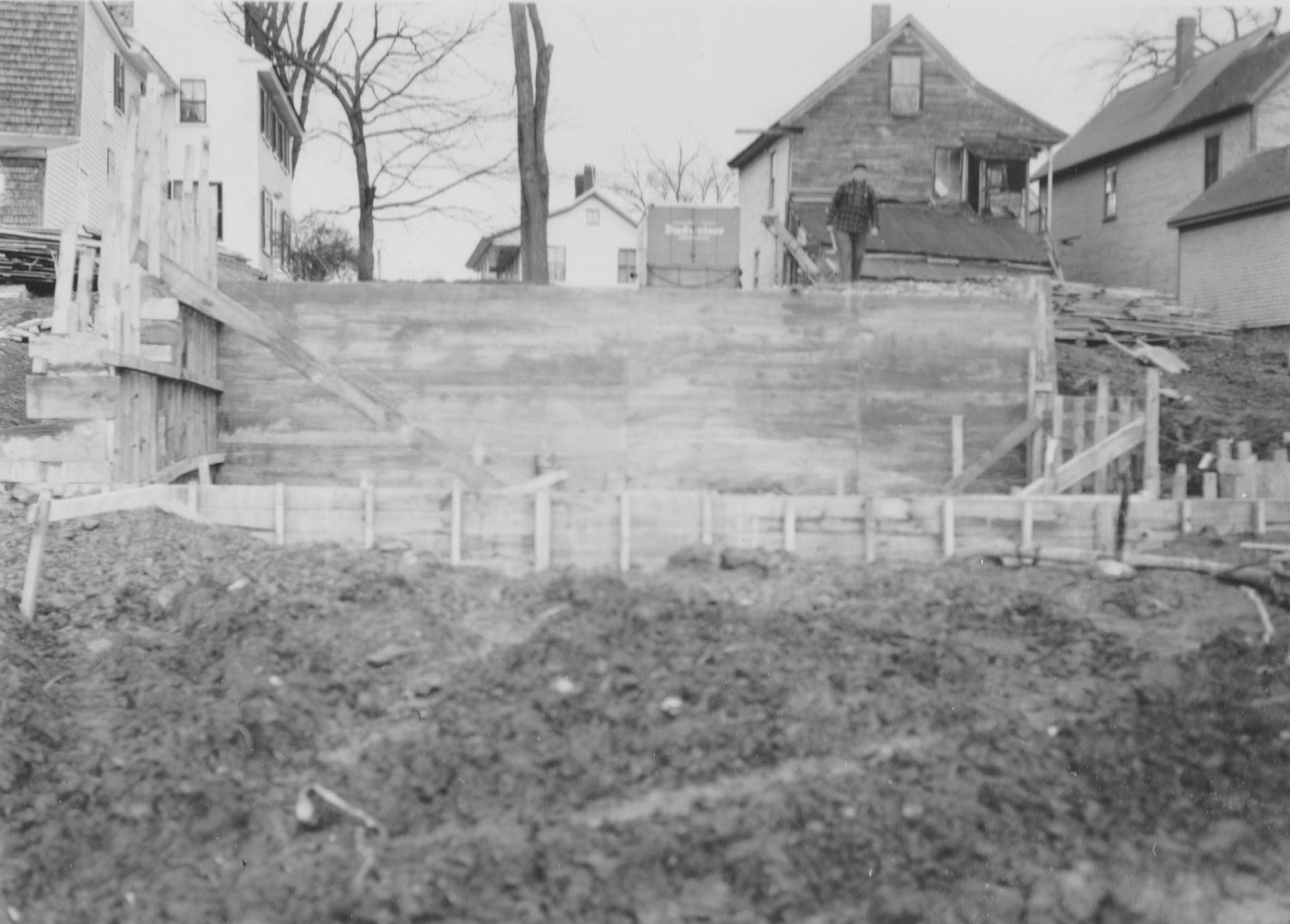
New Ervin Martin Garage foundation with his house to the left and office to the far right
*
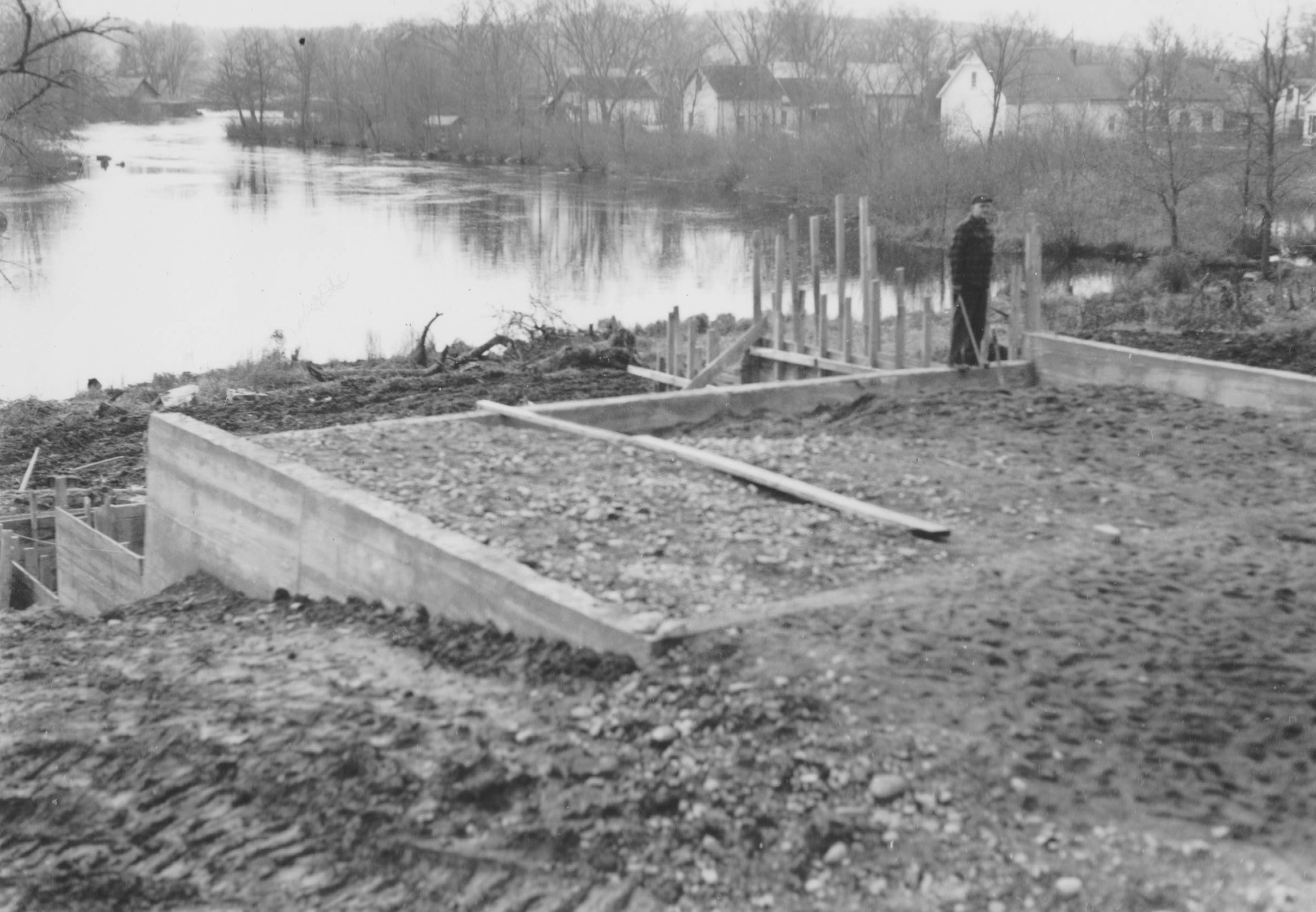
*
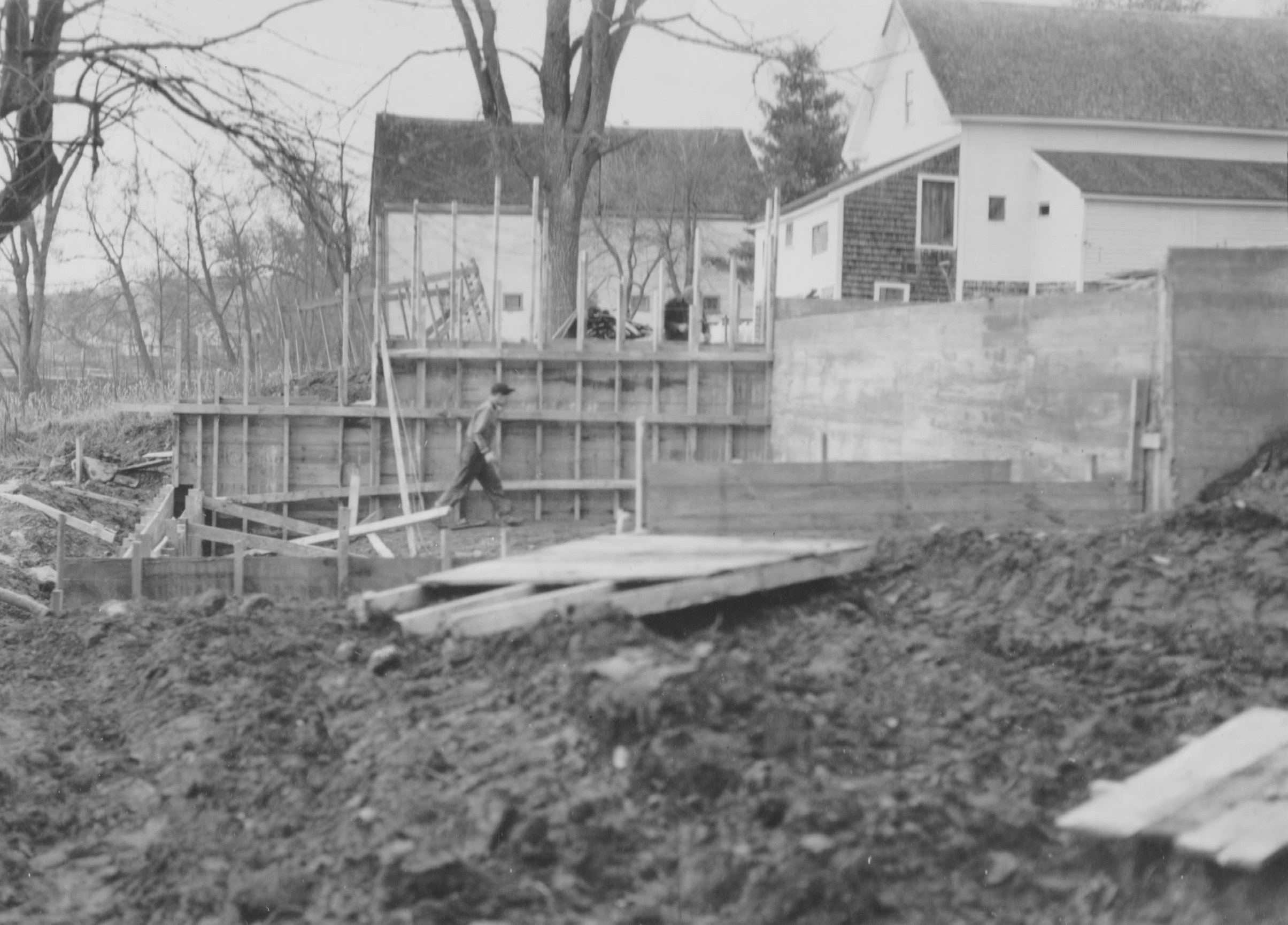
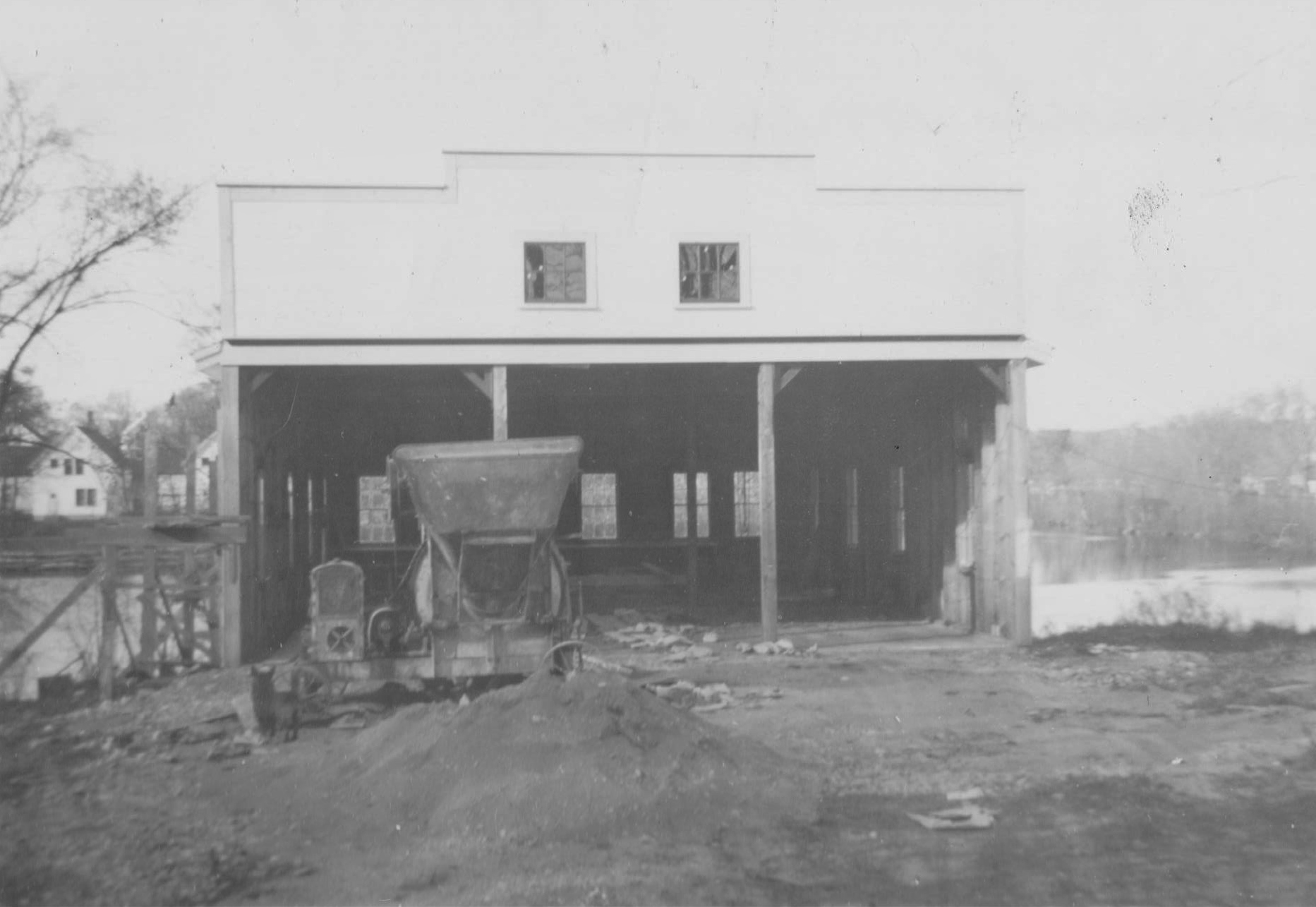
*
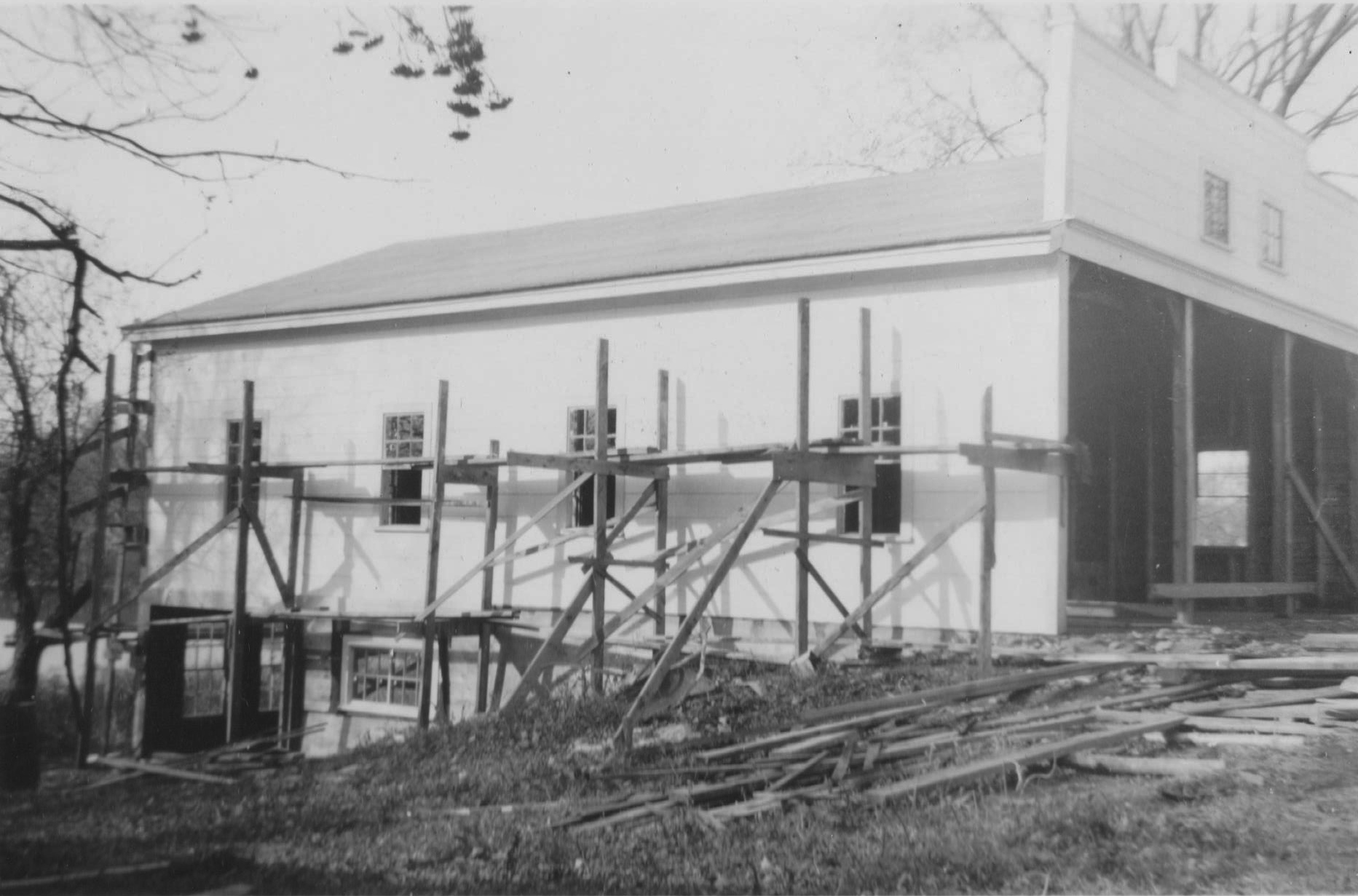
*
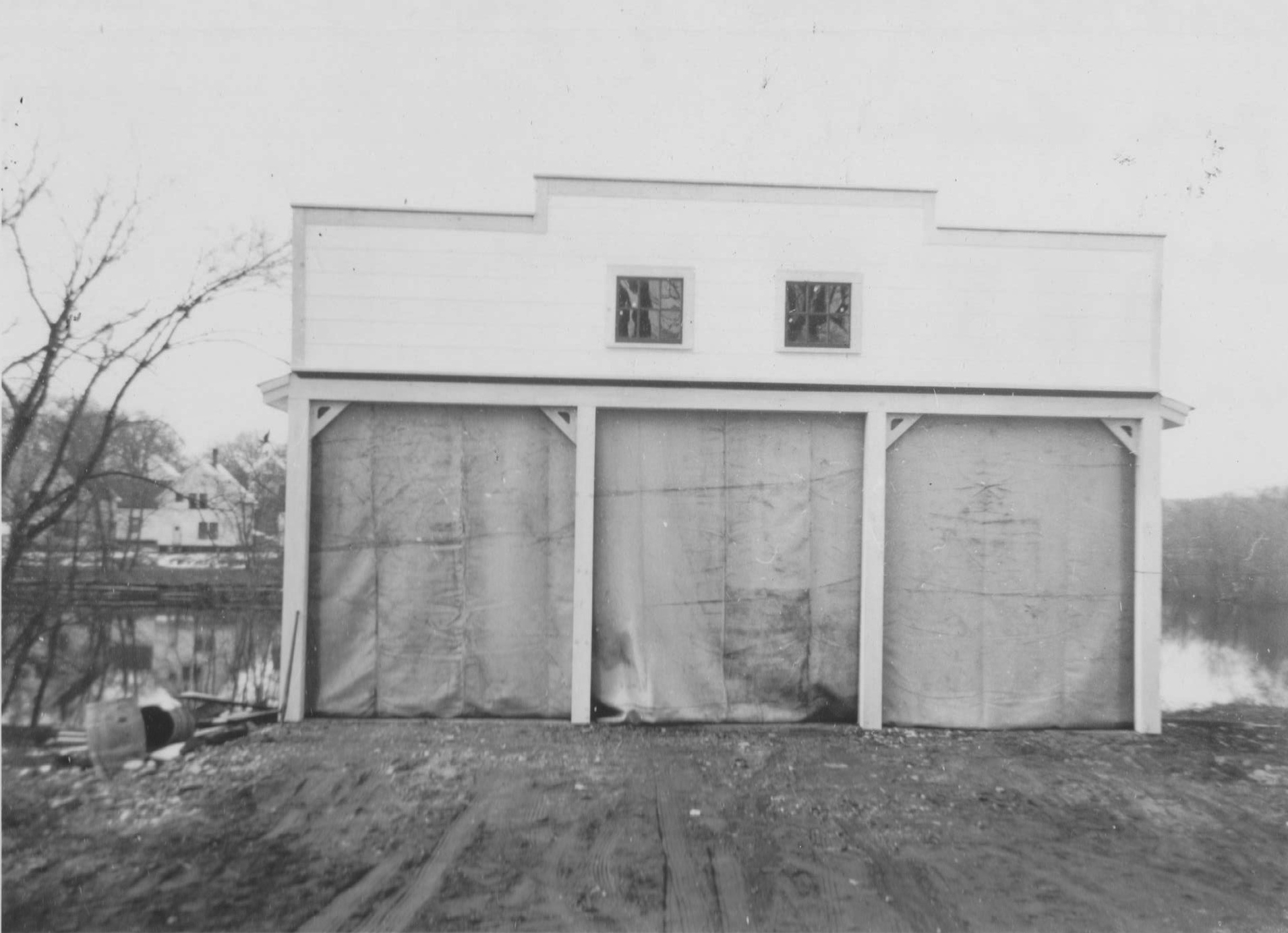
*
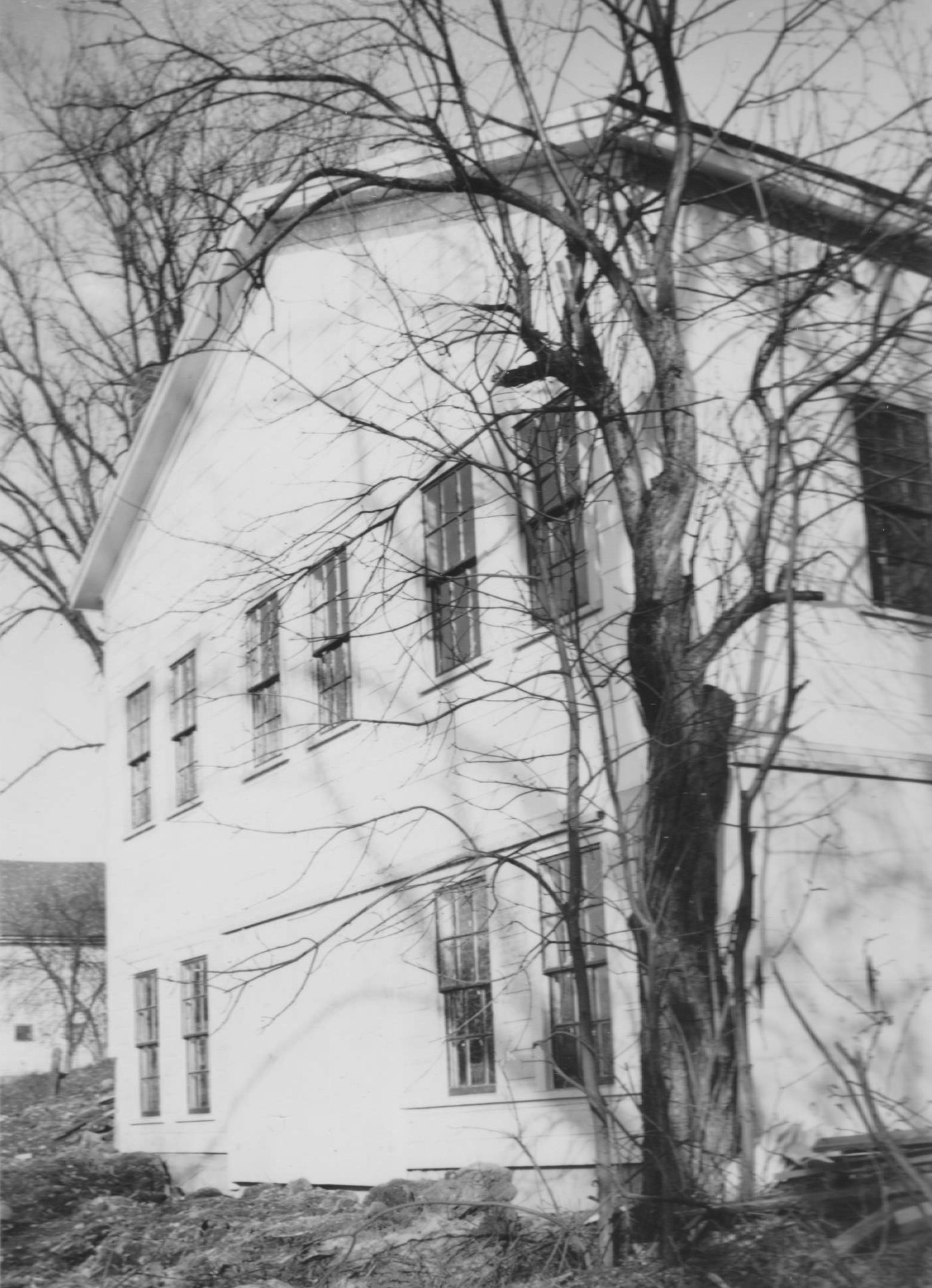
Rear of the completed Ervin Martin Garage – November 5, 1944
(Photos courtesy of Maynard Ross)
*
Elberton P. Dyer’s lingering illness caused his retirement from his clothing business in 1945, however he then took a job as Town Manager of Danforth traveling back and forth weekly from Hartland until his death in 1947.
On March 25, 1946, the Dyers sold the building to Kenneth & Geraldine (Knowles) Bishop and along with her sister Meredith (Knowles) Hollister and their father Guy Knowles opened “B & H Cash Market” on June 7, 1946. Geraldine and Meredith are daughters of Guy Bertram Knowles and his 2nd wife Relief Giles. The sisters had moved to Hartland with their parents in 1937 and both graduated from Hartland Academy Class of 1941. Geraldine Euleta Knowles (1921-1977) married Ken Bishop in 1941 and Meredith Ellen Knowles (1923-2019) married Frank Hollister, Jr in 1942. Meredith later sold her interest in the store to Ken & Geraldine in 1950 when she remarried to Rae Fuller Randlett. The opening year of 1945 was incorrectly reported and is verified as 1946 in an earlier article from June 13, 1946.
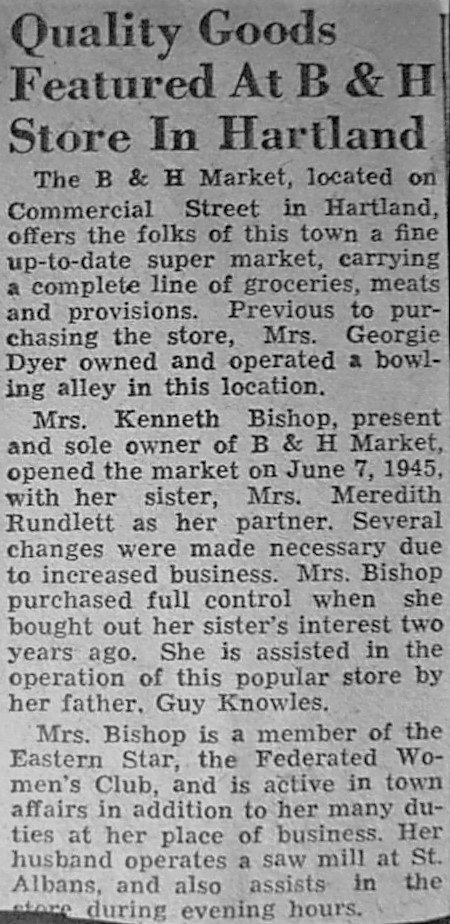
B & H Cash Market Article – 1952
*
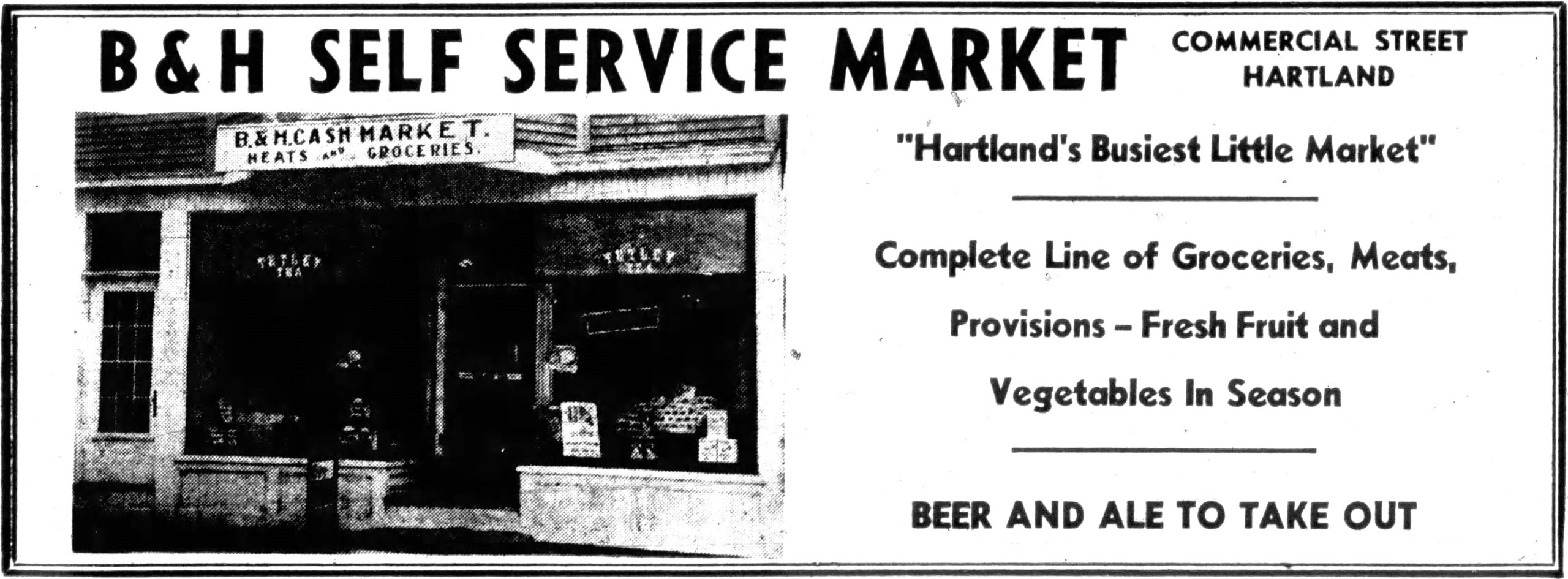
B & H Cash Market Advertisement – Waterville Sentinel – June 2, 1951
*
Perley & Fidella Gowen continued operating their store at its original location until early 1946 they moved the business into the barn of their home a couple of houses down the street and operated a smaller sized store. Norman Bennett McCormack (1921-1994) then purchased the former Gowen Store in 1946 after serving in World War II. “Betz” had extensive renovations and repairs done to the building in April of 1946 before opening as McCormack’s Market where he remained in business for the next 25 years.
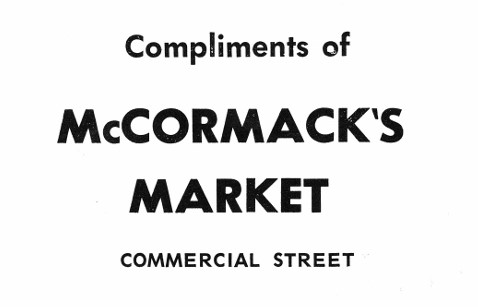
McCormack’s Market Advertisement – 1970
*
By 1943, Rae Fuller Randlett purchased the former Gorham Prescott Block from Clair Currie which Clair had purchased in 1932.
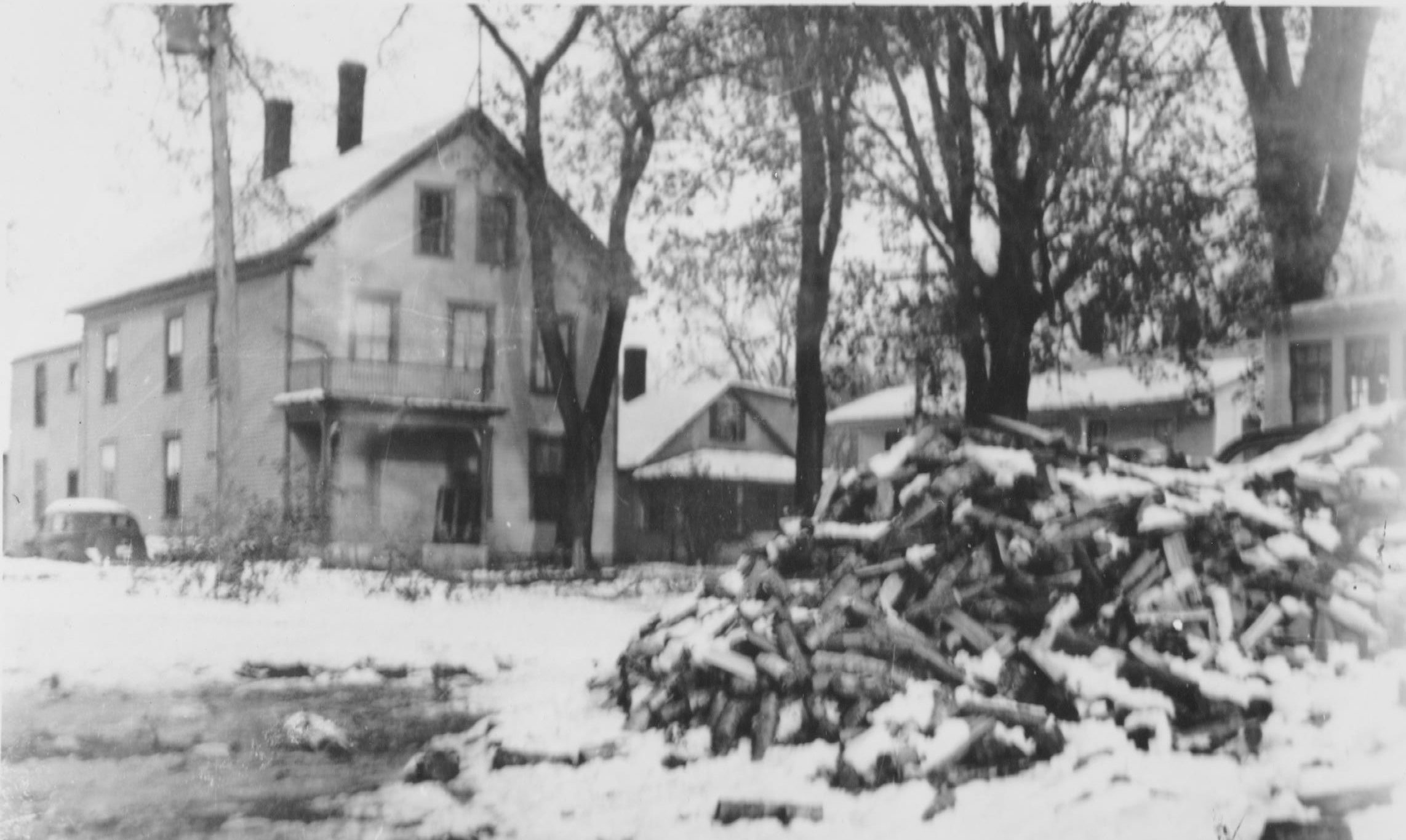
Former Gorham Prescott Block from Ervin Martin’s Residence – 1945
(Photo courtesy of Maynard Ross)
*
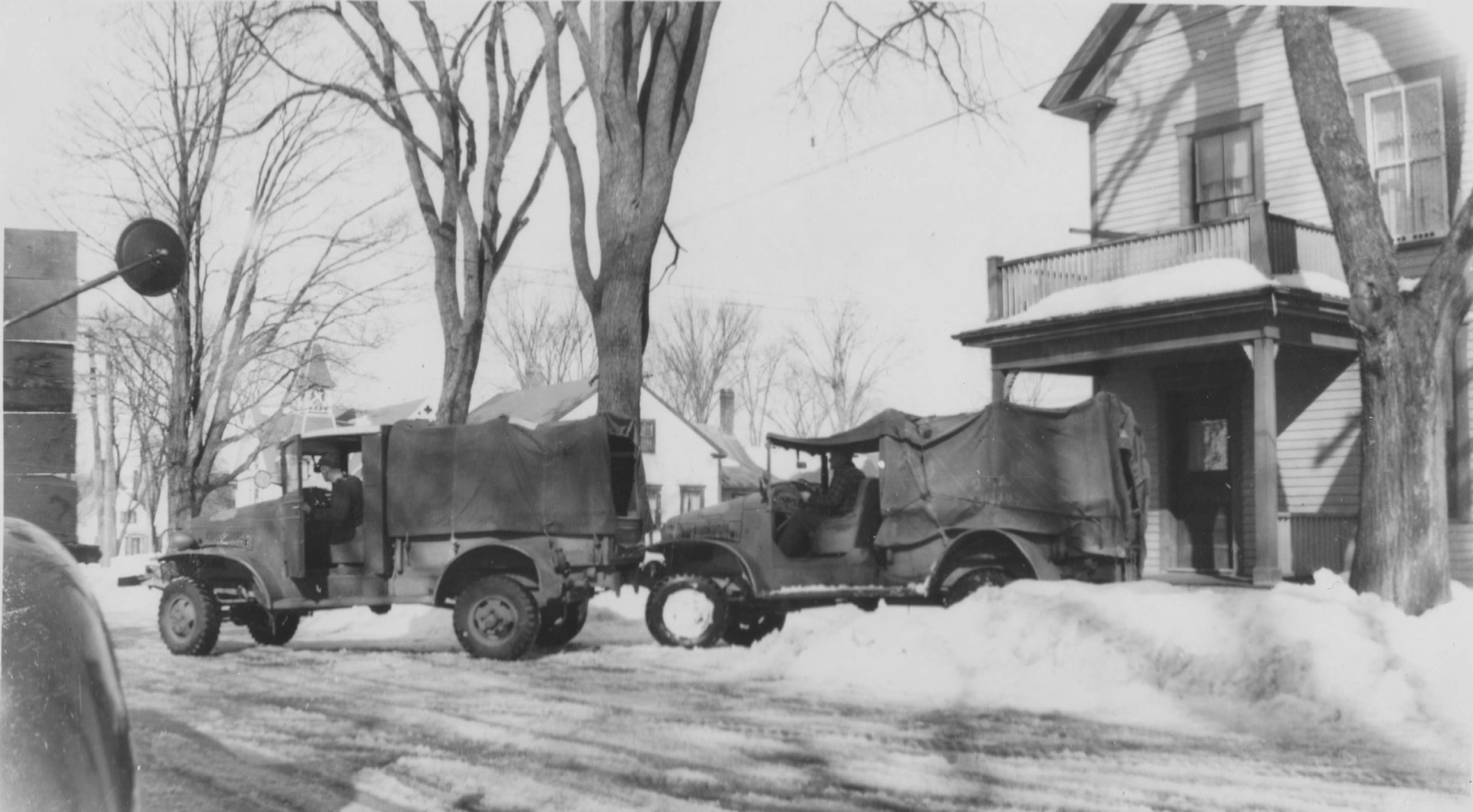
Ervin Martin being pulled out by Lloyd “Red” Hubbard at the former Gorham Prescott Block – 1945
(Photo courtesy of Maynard Ross)
*
Velma Vanadestine (1928-2009) waiting on customers at Ralph Hamilton’s Hartland Drug Store Counter while attending Hartland Academy.
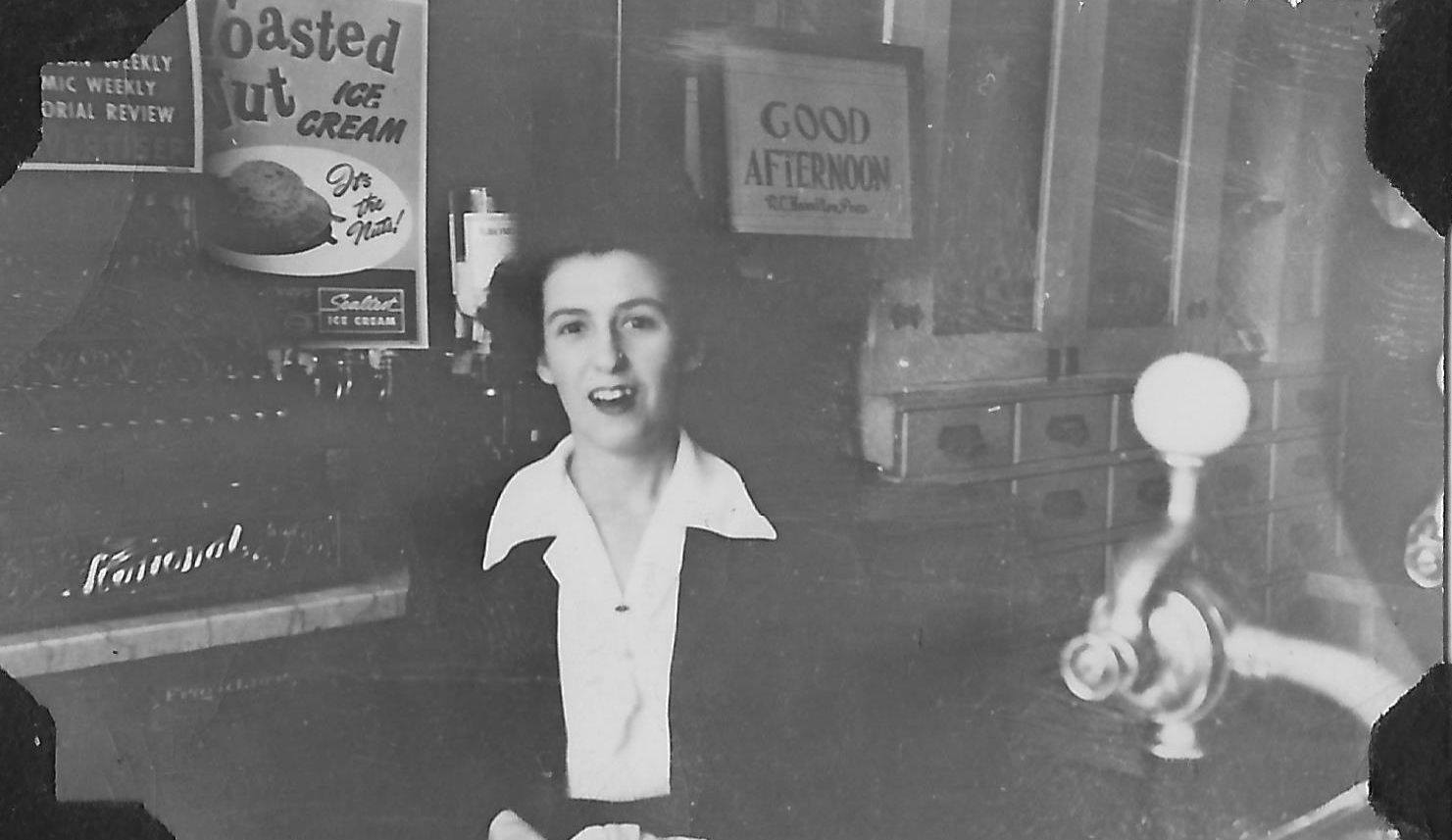
Hartland Drug Store – 1945
*
Ervin Martin’s logging company had become a mammoth operation growing from an early annual production of 3,000 cord of wood in the 1920s to over 25,000 cord cut annually by the 1940s with his main office located near his home on Commercial Street.
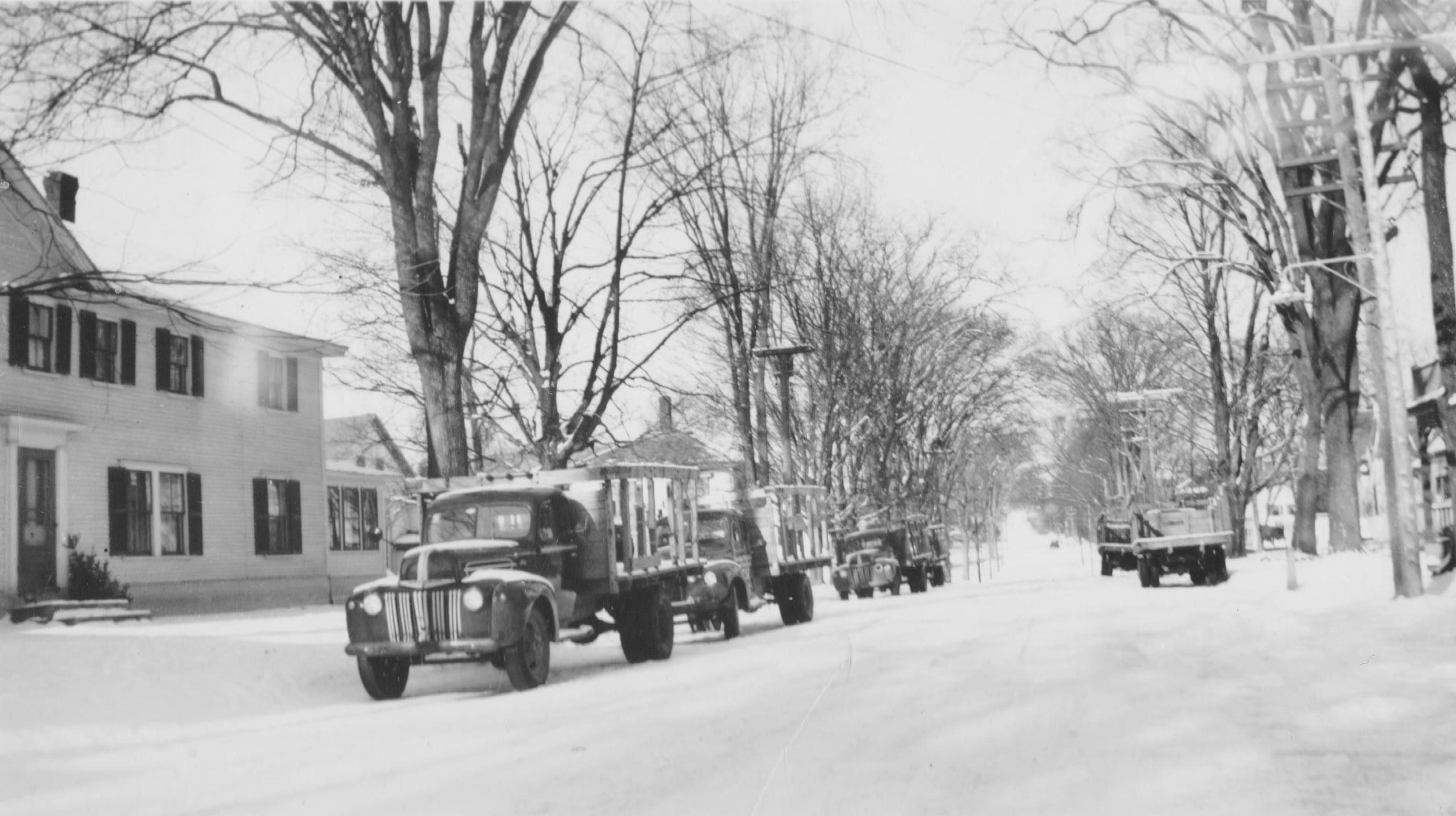
E. W. Martin Logging Company Trucks in front of his Commercial Street Home – 1945
(Photo courtesy of Maynard Ross)
*
In 1947, following his service in WWII, Lloyd Vernon Cookson, Sr opened his 1st grocery store at the Davis & Webber Block in Warren Square which had been purchased by Lewis H. Barden in 1944.
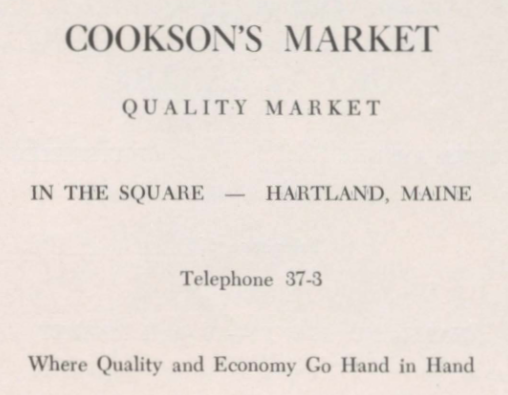
The Ripple – 1947 Ad
*
In 1951, following Lewis H. Barden’s decision to come out of retirement and open a new store at the former Davis & Webber Block, Lloyd moved his business into the rear section of the Hartland Drug Store Block.

Commercial Street Store Facade in the rear of the Hartland Drug Store next to the Linn Block
*
In January of 1949, Lewis H. Barden announced his retirement from active management of his Commercial Street store and passed the management along to his son Lewis H. Barden, Jr who he had been grooming as his replacement since Jr’s return from service in WWII. Lewis, Jr, with his sister Laura S. Barden as his Assistant Manager, continued operations of the L. H. Barden IGA Economy Store for a few months before he was struck with an illness lasting just a few weeks before his untimely death on June 27, 1949 at 24yrs old.
Following his son’s death, Barden sold his Commercial Street store to Fred & Ellen (Worthen) Cooper later that year, however he came out of retirement a couple of years later in 1951 to reopen a grocery store business at the Davis & Webber Block in Warren Square he had purchased in 1944.
The Coopers remodeled the entryway of the store extending a portion of the 1st floor forward over the old stairs to the front of the building. They operated as Cooper’s IGA Store before they sold the store and moved to St Albans. (Special thanks to the Cooper Family for providing the photos and information below)
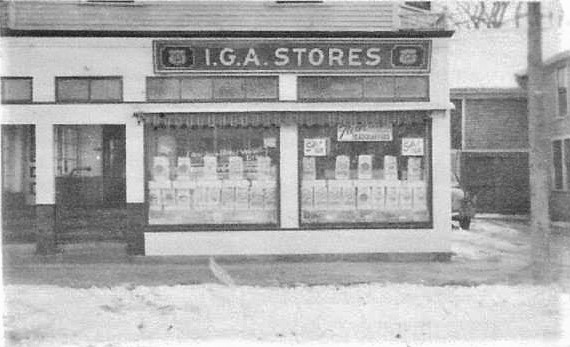
Cooper’s IGA Store with remodeled entryway
*
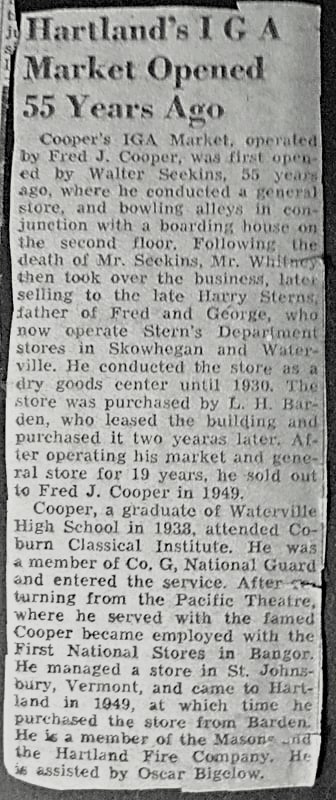
Cooper’s IGA Store Article – 1951
*
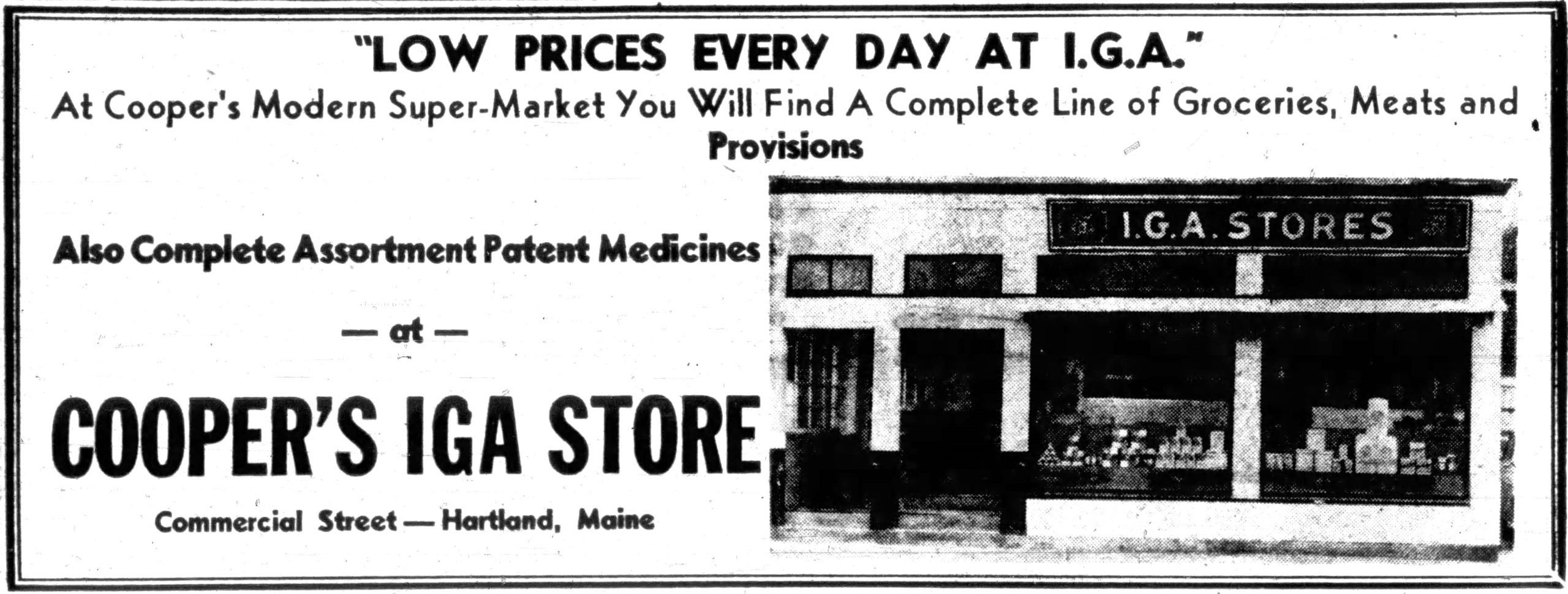
Cooper’s IGA Store Advertisement – Morning Sentinel – June 2, 1951
*
As noted by Mary (Cooper) Lary, “My parents, Fred & Ellen Cooper, were living in St. Johnsbury, Vermont when my sister Carol was two years old and just before my brother Dana was born in 1949. My father was a manager at the First National Grocery Store there. My mother’s Uncle Harry Hilton and Uncle Harlan Wilkins decided they needed to come home to Maine so they bought the store in Hartland.”

*
Ellen later wrote about the family’s experiences when they first purchased the store and returned to Hartland.
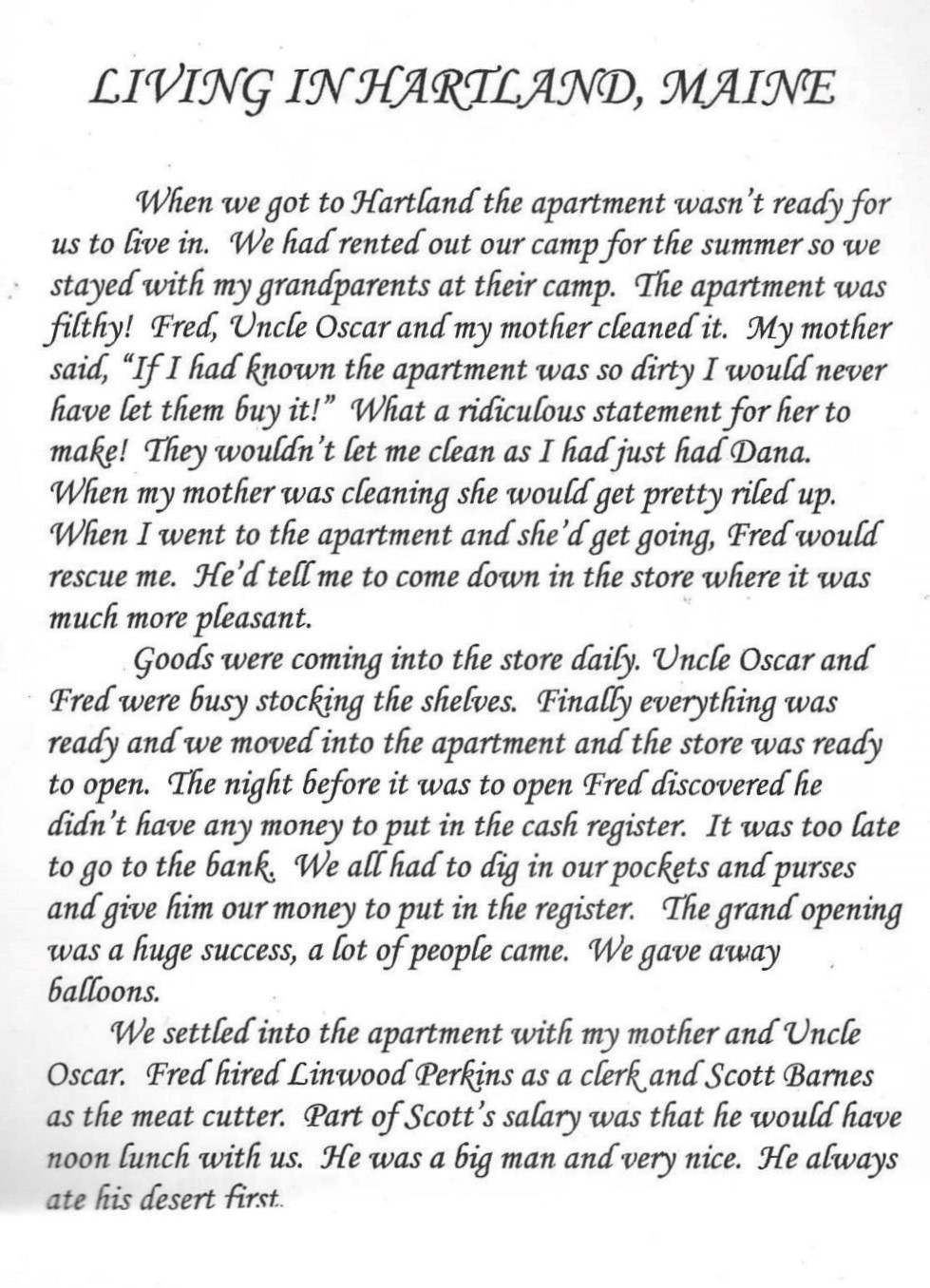
Ellen Cooper’s “Living in Hartland” Memories
*
In 1950, Meredith (Knowles) Randlett joined her 2nd husband Rae Fuller Randlett in business which continued operating as Rae’s General Hardware Store. They soon leased the former Elberton P. Dyer building from her sister Geraldine and brother-in-law Ken Bishop in the mid-1950s after they had closed their B&H Market business. Meredith operated a full line grocery store there for a few years doing business as Randlett’s Market which included a popular ice cream & soda counter. In the early 1960s, she rejoined Rae full-time operating under their newly renamed business as Randlett’s General Store combining all their goods and services into one location.
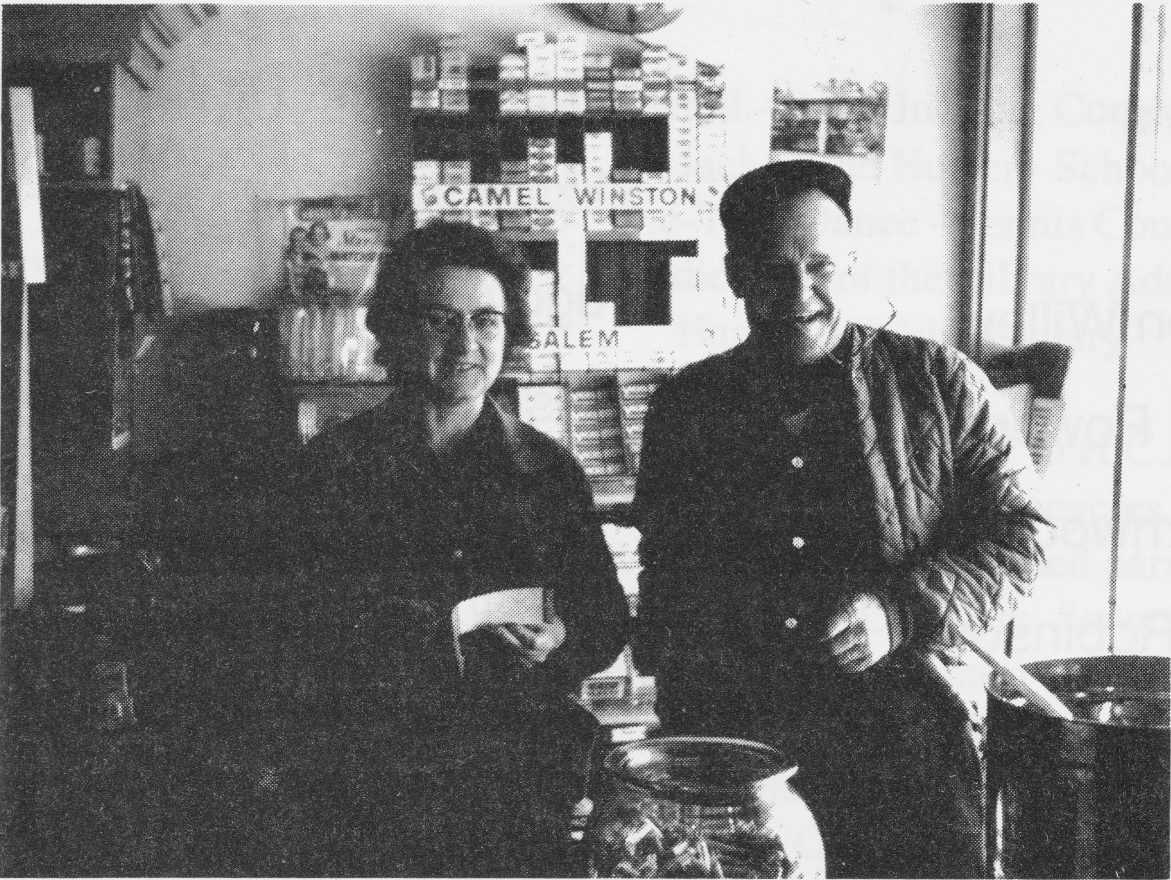
Meredith (Knowles) Randlett & Rae Fuller Randlett at Randlett’s General Store
*
In 1950, the former Linn Block was purchased by the Butera Brothers of Bangor who opened a new restaurant at the location called “Calogeno’s Restaurant”. A 1951 newspaper article notes, “Italian Food on Menu at new Hartland Cafe. The only restaurant in Hartland is that operated by Charlie & Benjamin Butera, who hail from Bangor. The restaurant, formerly Page’s Cafe, was taken over by the Queen City Brothers and features Italian and American foods.”
*
In October of 1952, fire ravaged the Calogeno’s Restaurant building and it remained abandoned for several years.
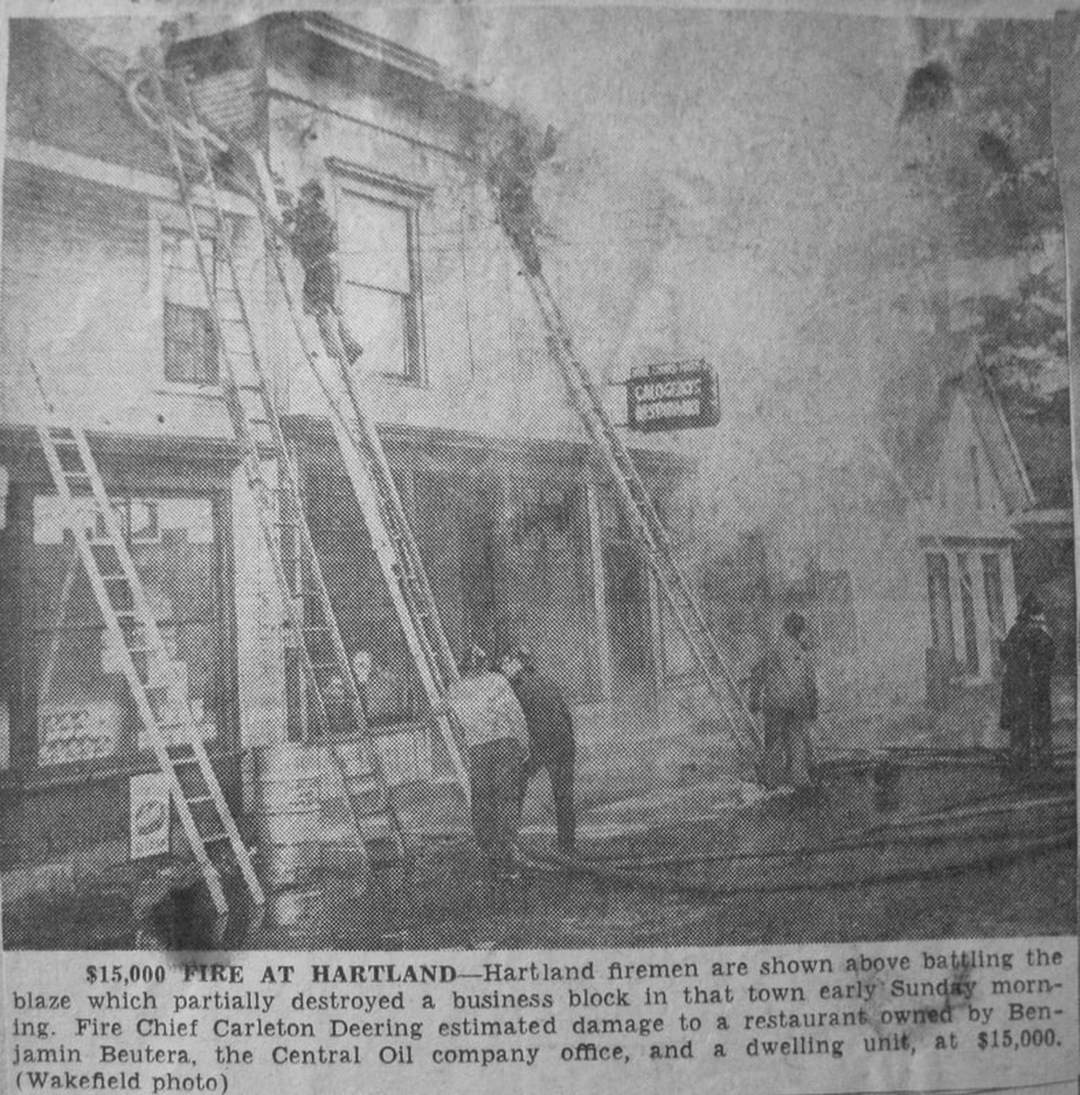
Calogeno’s Restaurant Fire at the former Linn Block on Commercial Street – 1952
*
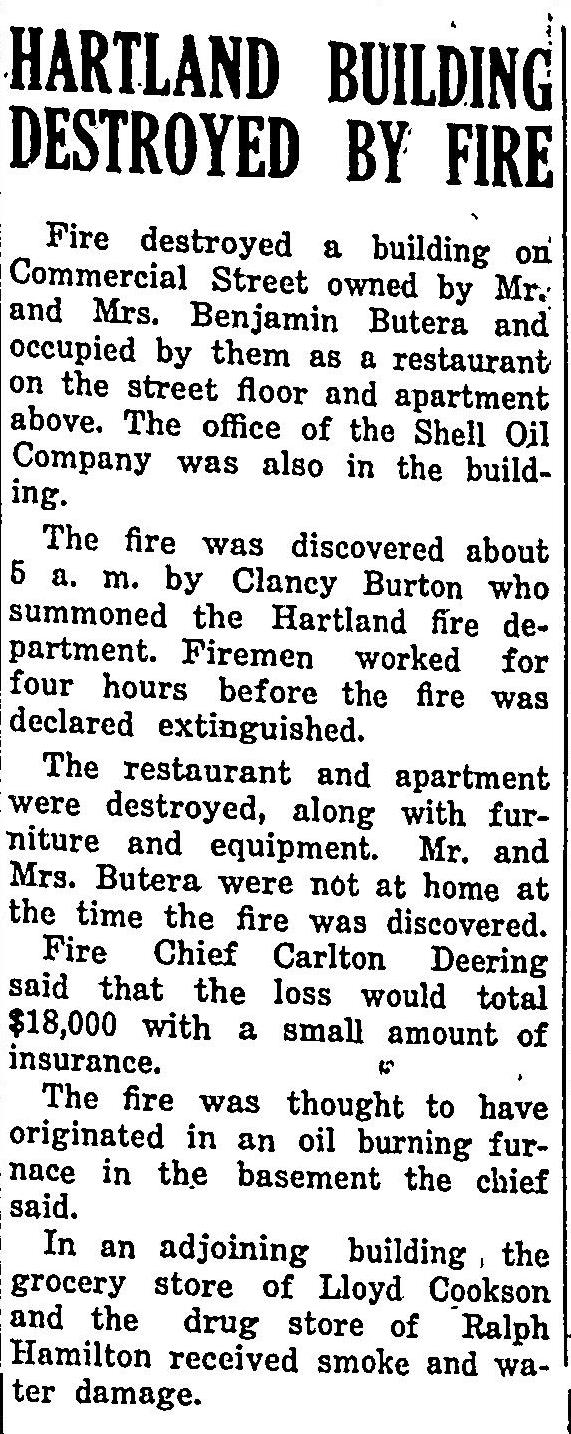
Calogeno’s Restaurant Fire Pittsfield Advertiser Article – Published October 9, 1952
*
Ervin W. Martin was joined in business by his sons Selden and Gerald and later Raymond Martin, and began operating as E. W. Martin & Sons with the main office still located near his home on Commercial Street. Martin’s successful logging business was noted in a newspaper article in 1951.

E. W. Martin & Sons Article – 1951
*
Wes Harrington in front of Randlett’s Store with the Hartland Drug Store and L. H. Barden’s IGA at Warren Square in the background.
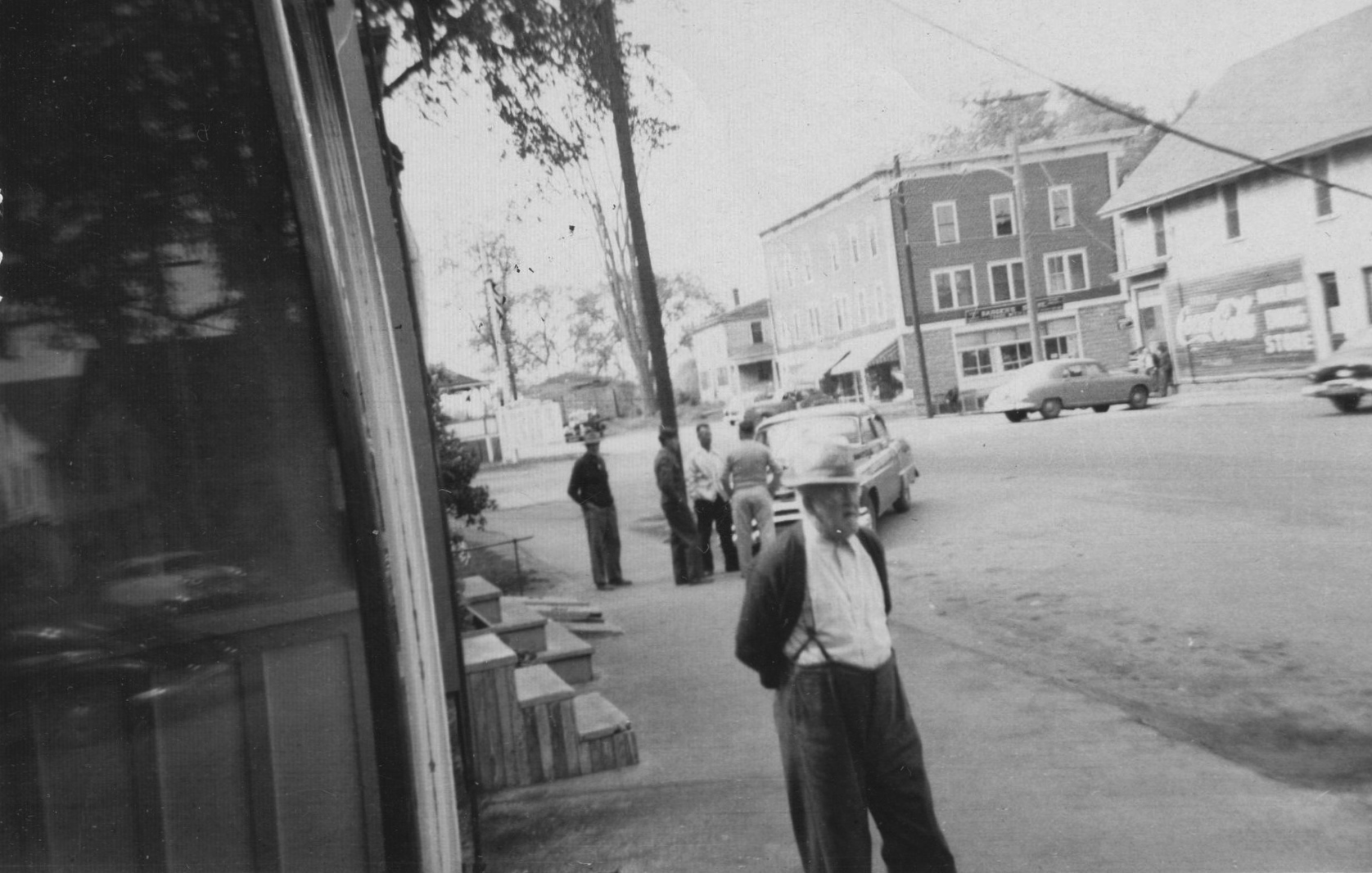
Commercial Street
*
1954 Town Meeting – Article 51: “To see if the town will vote to authorize the selectmen to contract with the Central Maine Power Company for the installation of 2 four-way flashing traffic beacons. One in the center of Warren Square at the intersection of Main Street, Commercial Street, Elm Street and Academy Street and one in the center of the intersection of Main Street, Mill Street, Pleasant Street and Pittsfield Avenue.”
*
Ralph C. Hamilton had made a couple of attempts to sell his Hartland Drug Store business in the early 1950s as he neared his 70s but with no proper suitors he continued in business until his death on January 24, 1955. His 2nd wife Gertrude “Gertie” Pryor took over and did extensive renovations and reopened the business in March of 1955 as the Hartland Variety Store but passed away just a few months later in October. Ralph had no children with either of his wives so Gertie’s half-sister Vita Crocker and her husband Ernest A. Elliott of Portland took over the business until 1958.
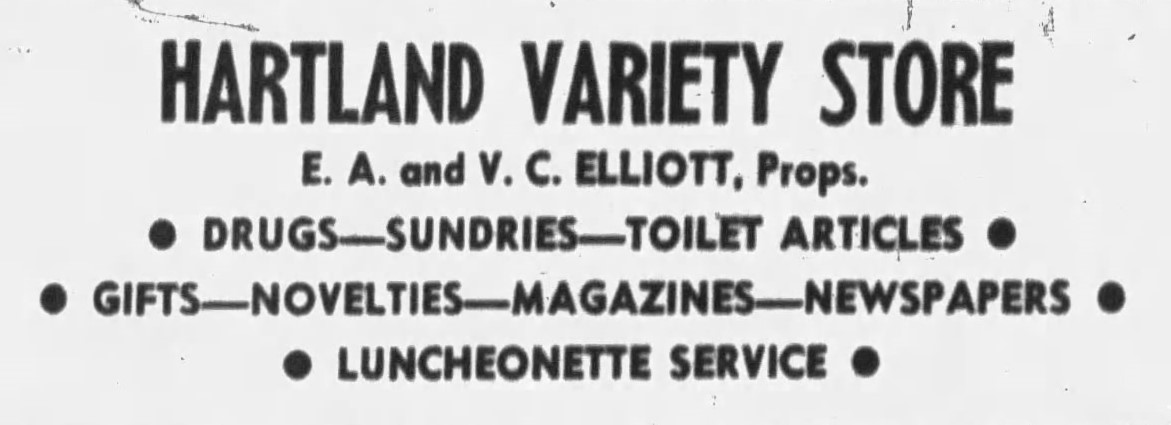
Hartland Variety Store Ad – February 28, 1958
In 1956, construction began on the new Hartland Branch of the First National Bank of Pittsfield located on the corner of Commercial Street & Academy Street becoming the first fully dedicated bank location built in Hartland.
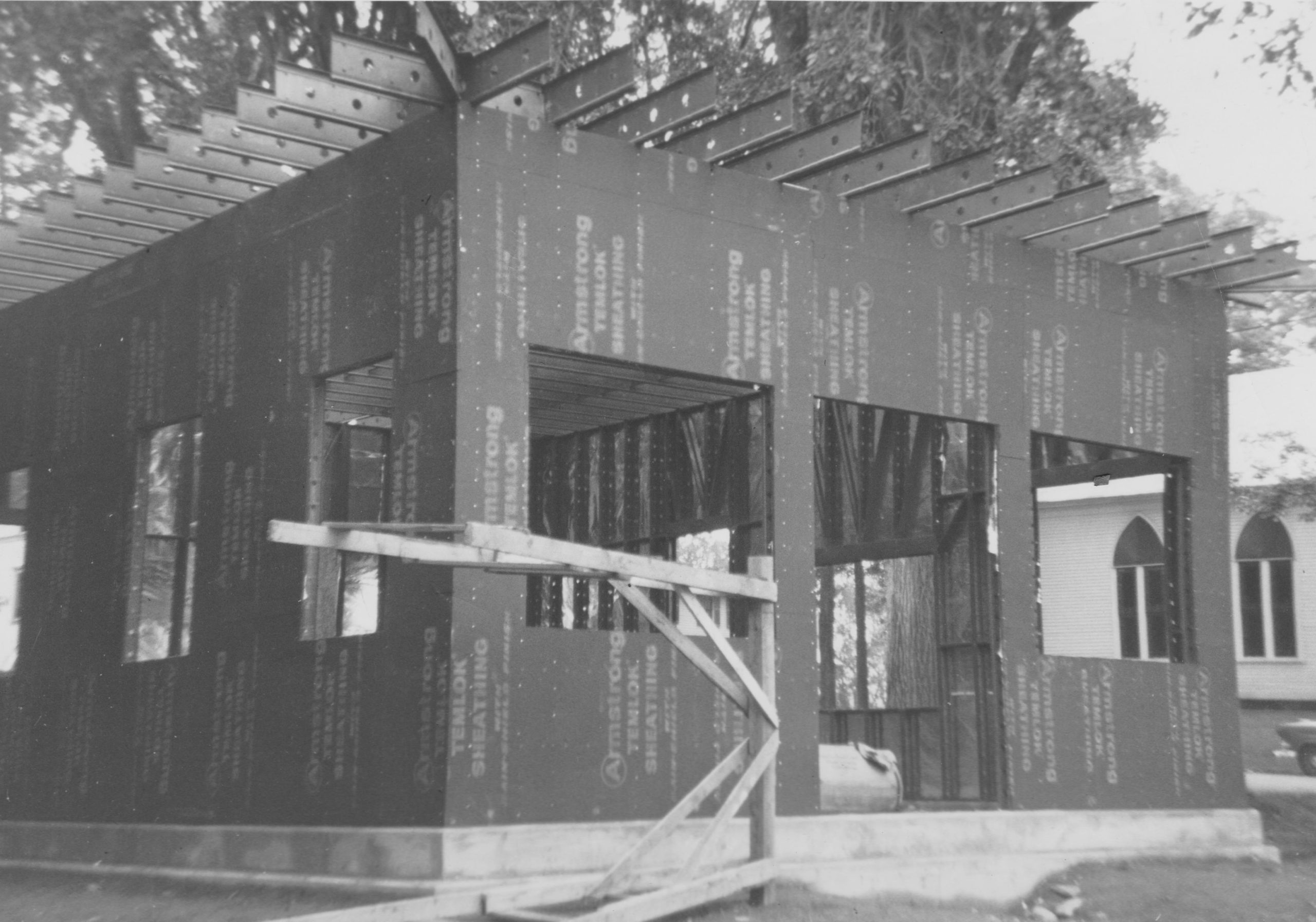
Hartland Branch of the First National Bank of Pittsfield – 1956
(Original photo by Jean Stedman)
*
While living in Pittsfield, Reginald Knowles had opened a Barber Shop in Hartland at the time the new bank was built. His wife Beatrice wrote an article for the Hartland Historical Society sharing her personal experiences working at the bank and their family’s eventual move to Hartland.
Banking on Hartland – Part I
*
In 1957, Reginald & Beatrice Knowles purchased the former Haskell-Linn residence from the widowed Marguerite Burton where Reggie would set up his new Barber Shop while Beatrice continued working at the First National Bank Branch in Hartland.
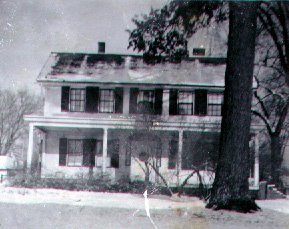
Former Haskell-Linn-Burton Commercial Street Residence
*
In January of 1959, Claude Fisher and his wife Elizabeth Hart purchased the former C. I. Currie Store block following Clair’s retirement in 1957 where Elizabeth soon opened “Star Jewelry & Home Supply” in the former A. H. Buck Store location.
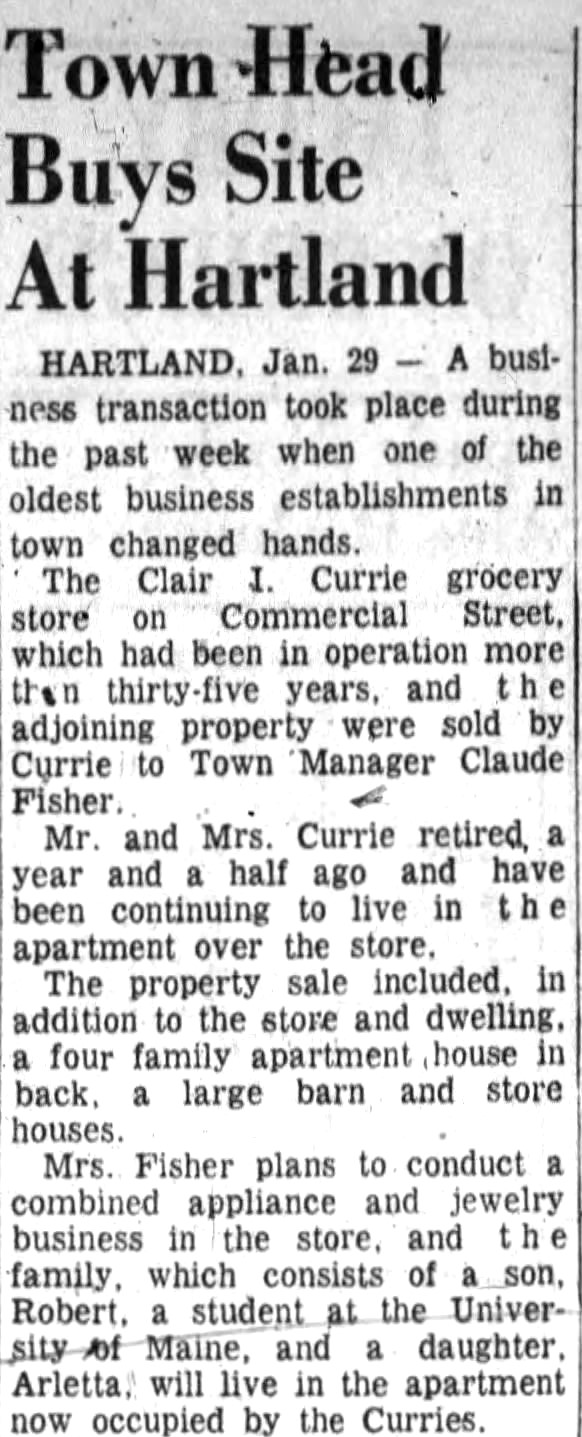
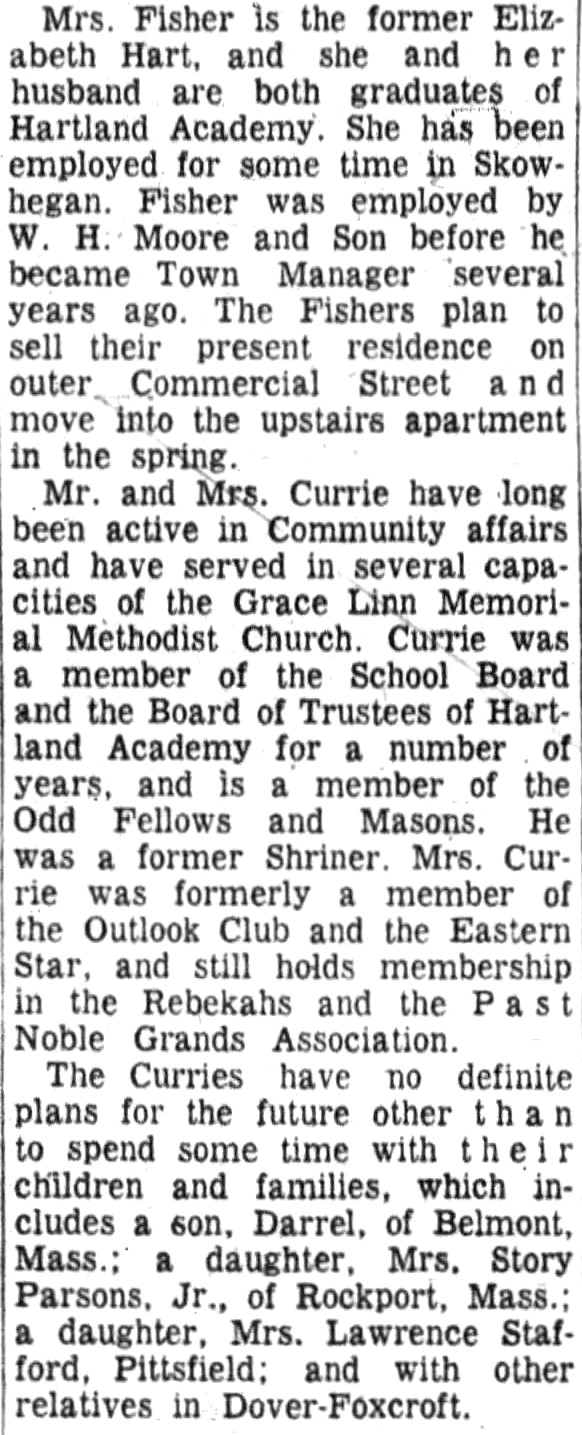
Bangor Daily News – Published January 30, 1959
*
Reggie & Beatrice Knowles’ children Gary, Laurel & Rebecca in front of their house on Commercial Street with Guy Wood’s Barber Shop and Star Jewelry & Home Supply in background.
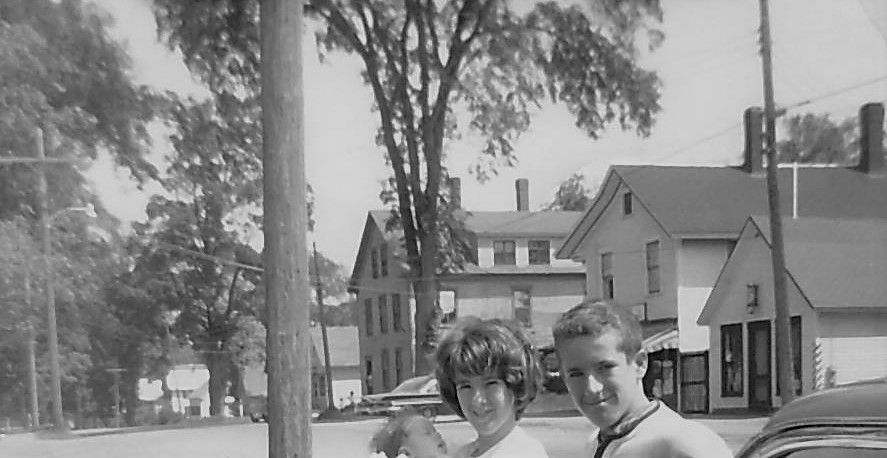
Knowles Siblings on Commercial Street – c1959
(Courtesy of Laurel Knowles White)
*
In 1957, the former Hartland Drug Store Block was put up for sale by Ernest & Veta (Crocker) Elliott but it would be a little over a year until it would be sold.
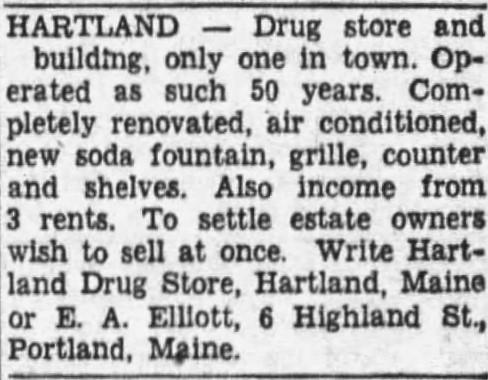
Hartland Drug Store Sale Ad – Bangor Daily News – April 8, 1957
*
The Elliotts remained in business until Violet Bickford purchased the building in the summer of 1958 where she operated as the Hartland Variety Store until 1977.
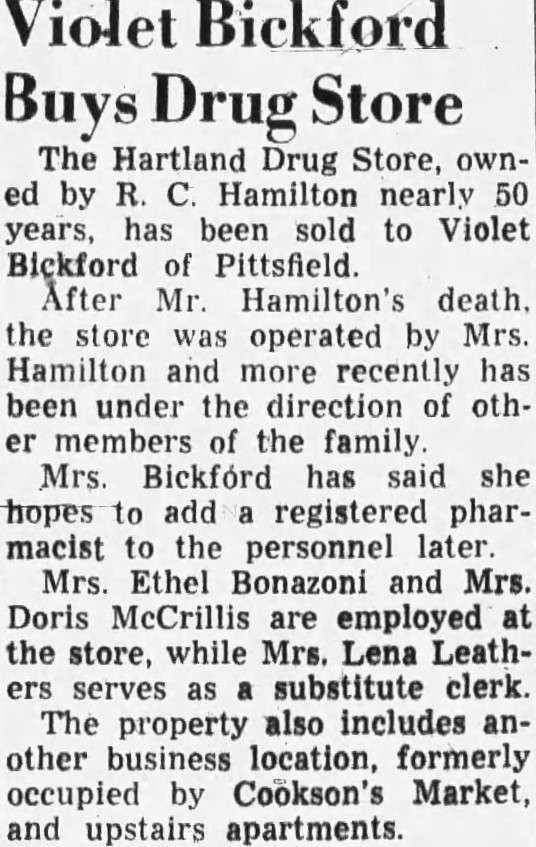
Violet Bickford Drug Store Purchase – Waterville Sentinel – August 9, 1958
*
Vi’s store became one of the popular gathering spots for locals to mingle over breakfast or lunch.
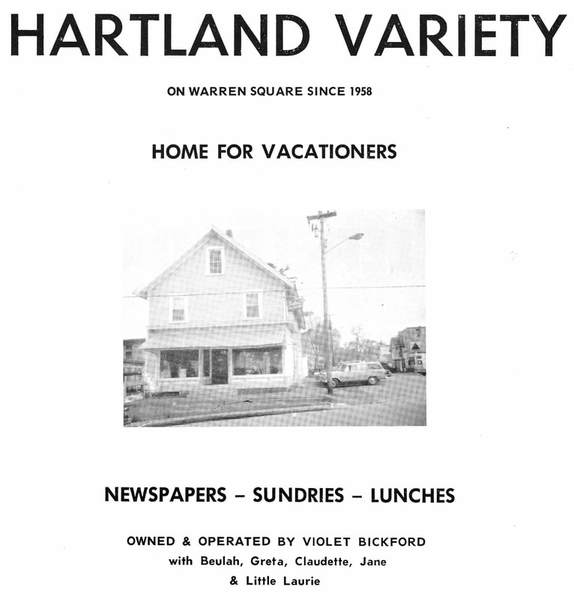
Hartland Variety Store Ad – 1970
*
A February 28, 1958 newspaper article noting various events from 1957 included the passage, “The Butera Building, which was gutted by fire several years ago, was purchased by Norman McCormack with plans to renovate for public hire.” Betz leveled the remains of the former Linn Block but it has remained a vacant lot to this day.
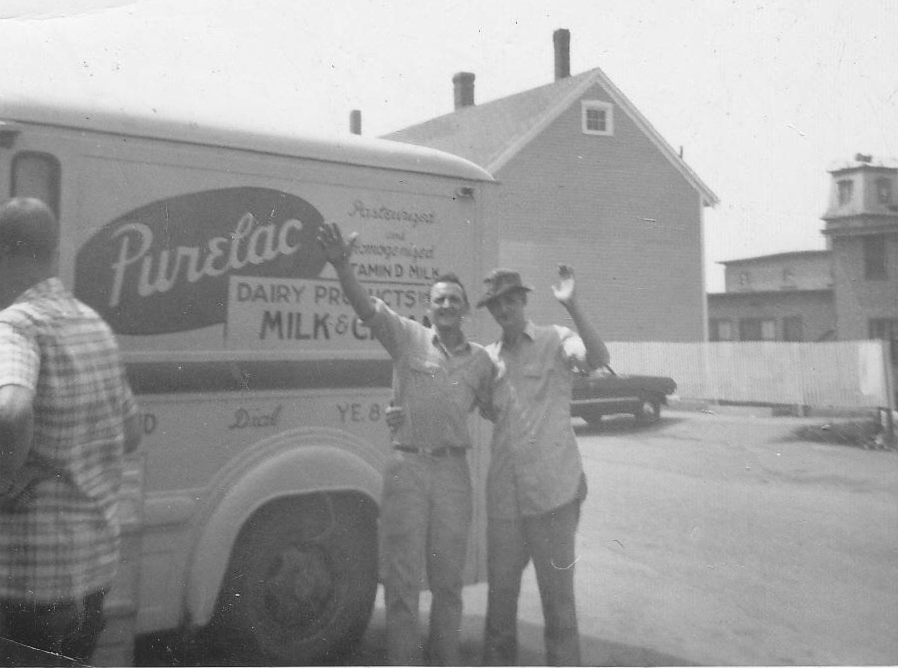
Carl Tash & Neal Stanley on Commercial Street with the vacant lot of the former Linn Block in the background – 1963
(Courtesy of Laurel Knowles White)
*
Rogen Haven Randlett (1933-1966) operated a garage attached to his father’s store for several years before his tragic death at Unity Raceway.
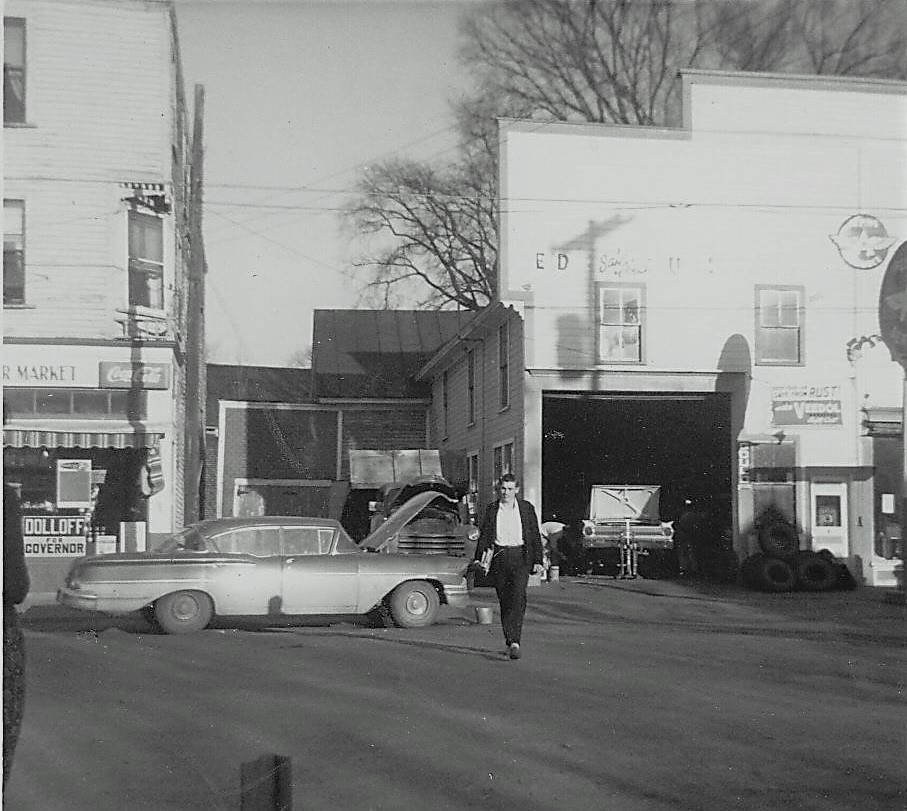
Rogen Randlett’s Garage at Randlett’s General Store – 1961
(Courtesy of Laurel Knowles White)
*
Following Bertie Hanson’s death in 1960, her son Maurice continued operations at the store and in 1963 was joined by his niece-in-law, Joan (Levasseur) Randlett, wife of Rogen Randlett. Joan continued operating the store following Maurice’s death in 1973 when his son Gary Hanson took over ownership of the building and the business.
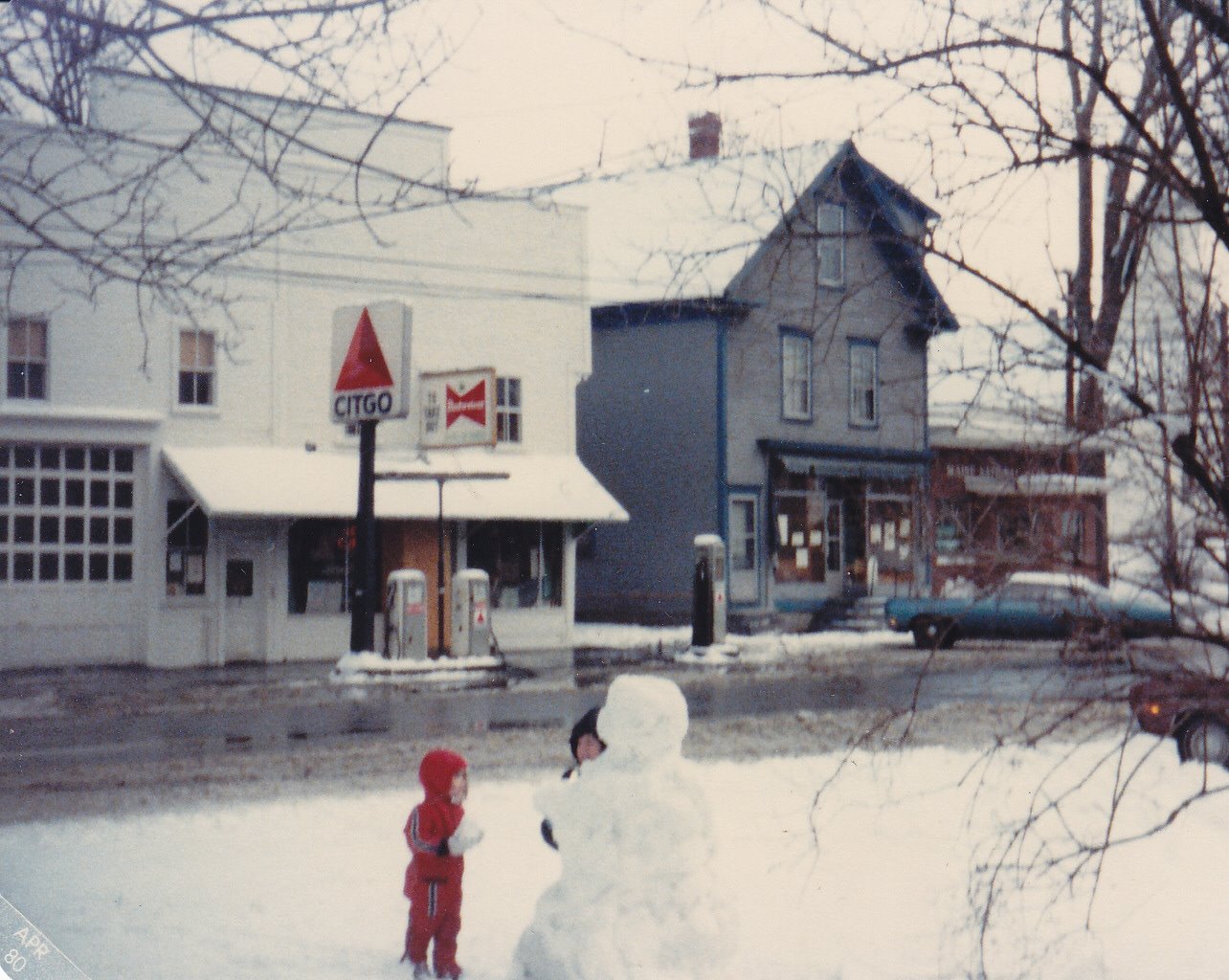
Randlett’s General Store, B. W. Hanson & Son Clothing Store & Maine First National Bank – 1980
(Courtesy of Laurel Knowles White)
*
In 1957, Lloyd Vernon Cookson, Sr (1908-1983) purchased Cooper’s IGA Store at the former Seekins Block where he moved his Cookson’s Super Market business. Cookson had been operating his store across the street at the rear section of the Hartland Drug Store since 1950 after opening his first store in 1947 in the Davis & Webber Block at Warren Square following his service in World War II. Lloyd had worked for L. H. Barden as a store clerk while he was attending Hartland Academy in the Class of 1927 and later served as the Hartland Post Master in 1934 & 1935. Lloyd’s wife Vivian Merrow was a well known hairdresser in Hartland for over 60 years following in the footsteps of her mother who had been a long time beautician in Cambridge.
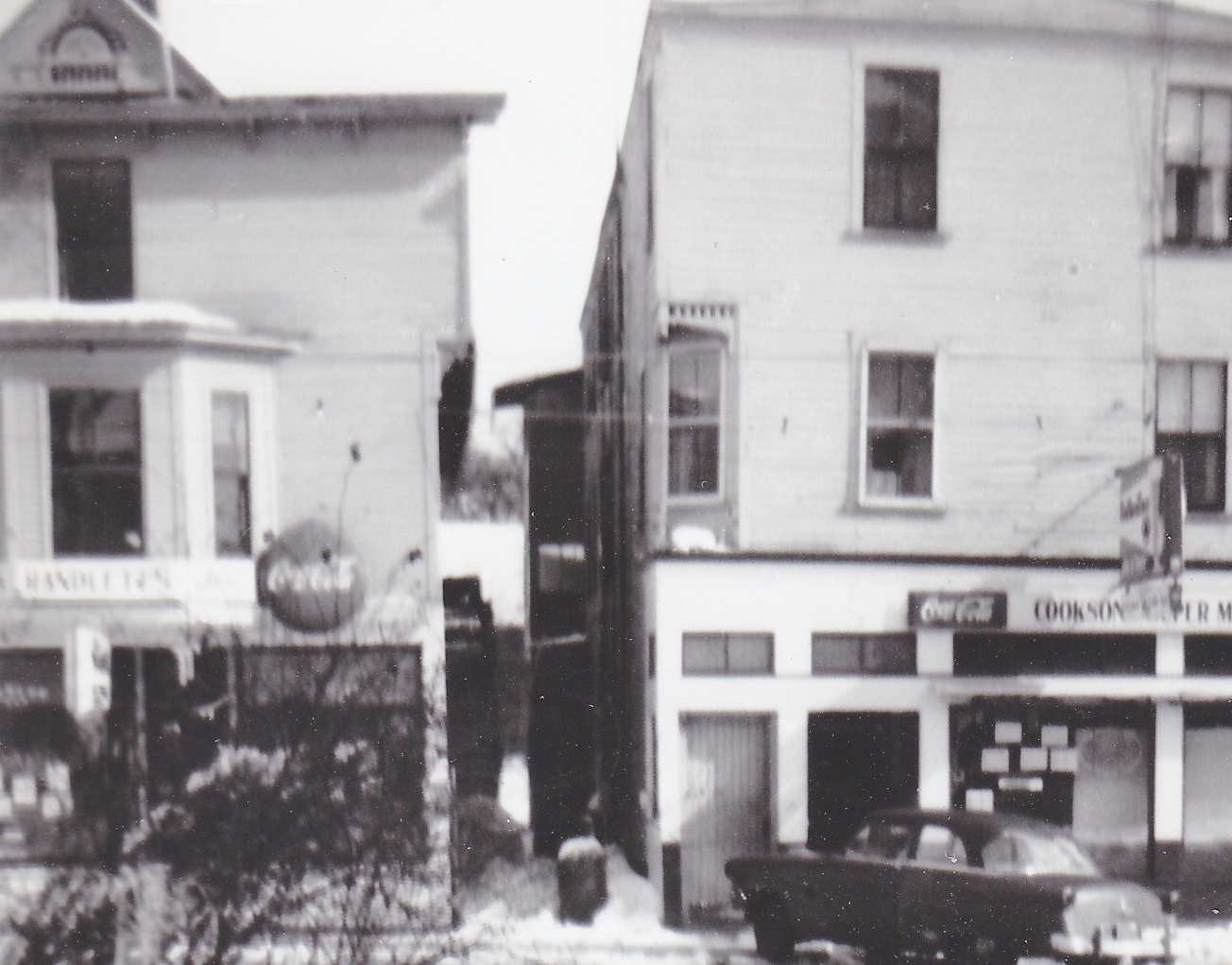
Randlett’s Market & Ice Cream & Soda Shop and Cookson’s Super Market – 1959
(Courtesy of Laurel Knowles White)
*
In 1968, Maine’s U. S. Senator Edmund Muskie took to the campaign trail in Hartland as a candidate in the Democratic Presidential Primary.
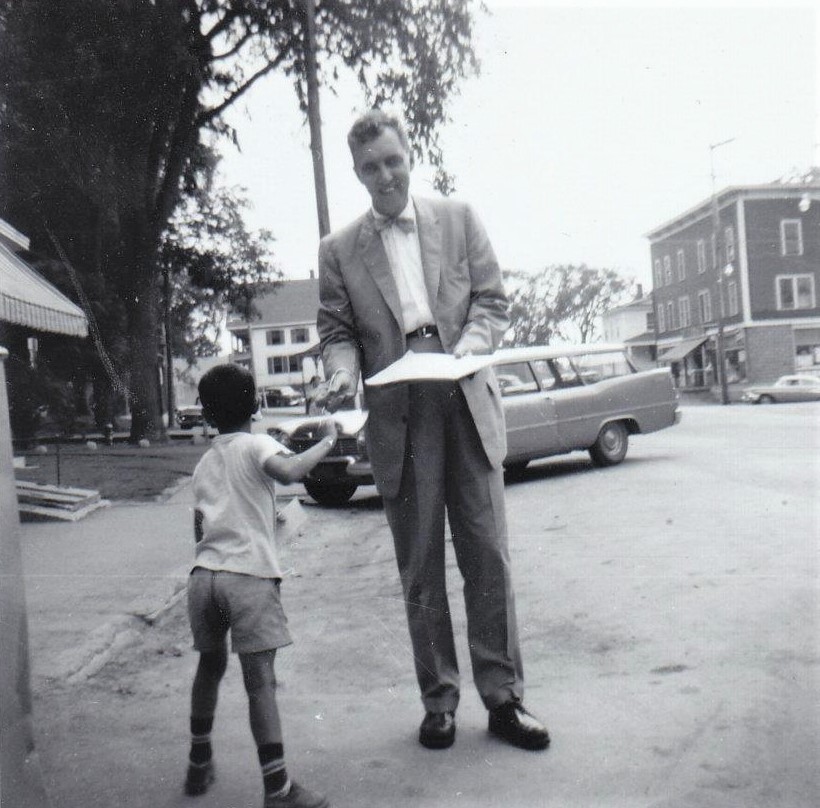
U. S. Senator Ed Muskie on Commercial Street – 1968
*
In August of 1970, the First National Bank of Pittsfield merged with Maine National Bank of Portland. Maine National Bank continued their operations at the Hartland Branch however just a month later, the bank was robbed in a daylight heist on Thursday, September 10th.
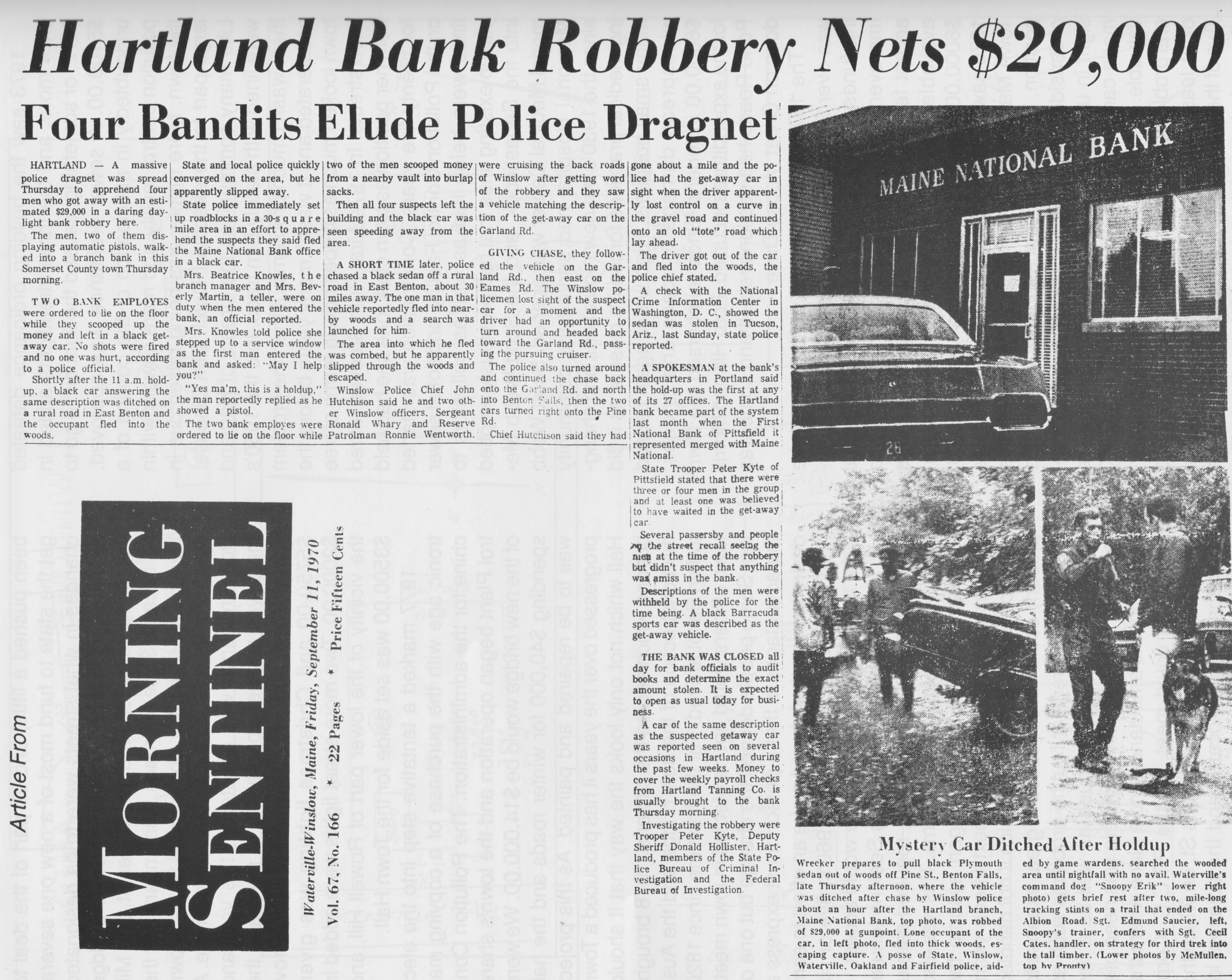
Morning Sentinel Bank Robbery Article – September 11, 1970
*
Beatrice Knowles’ article continues below sharing her personal experiences of the merger and subsequent bank robbery.
Banking on Hartland – Part II
*
It would take over a year to apprehend and charge the suspected Hartland bank robbers.
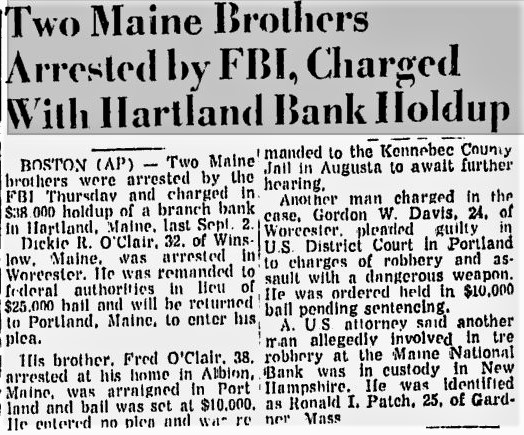
1971 Bank Robbery Article
*
Commercial Street seen from Warren Square.
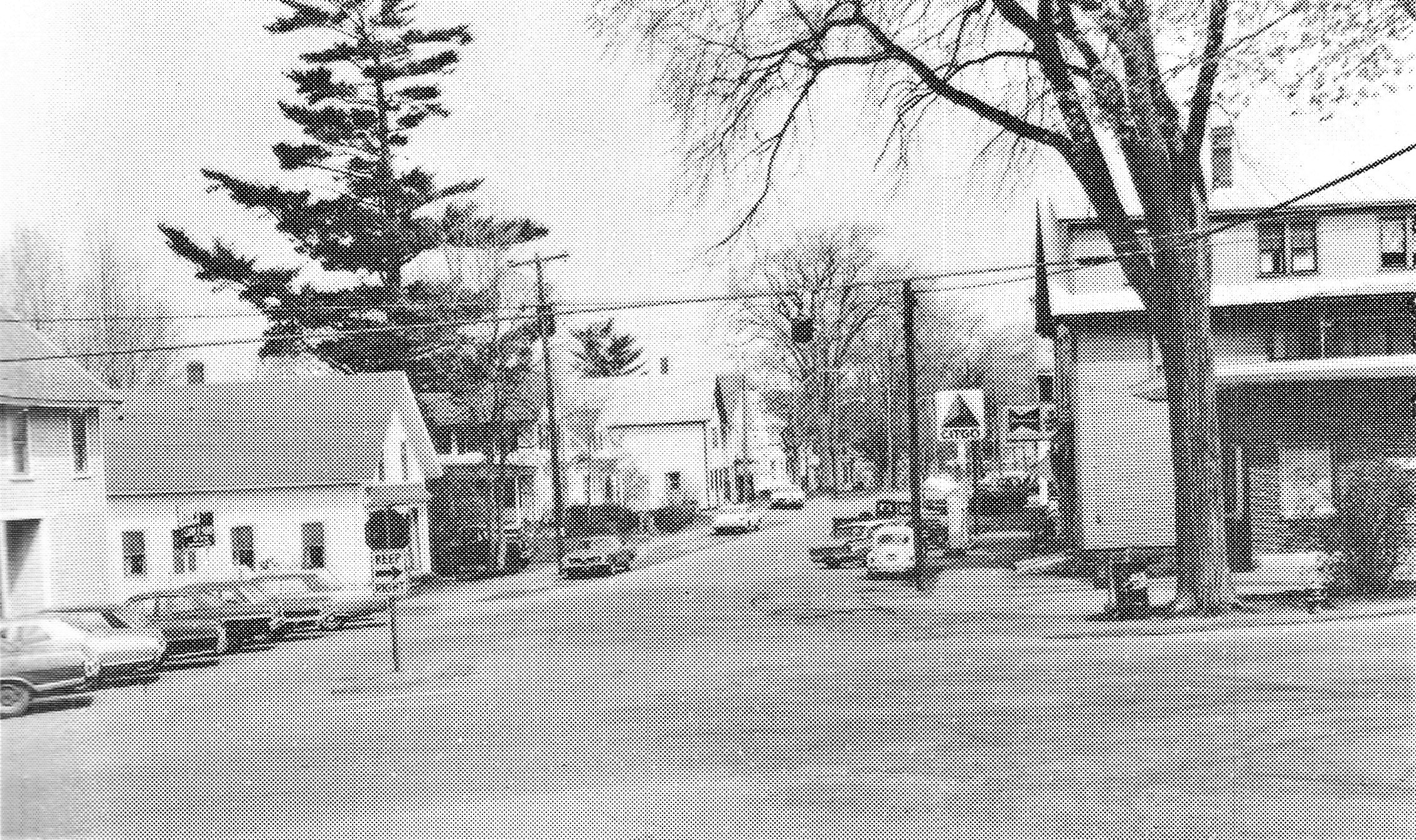
Commercial Street – 1970
*
Maine National Bank eventually closed its Hartland Branch and the building was abandoned for several years and later privately purchased.
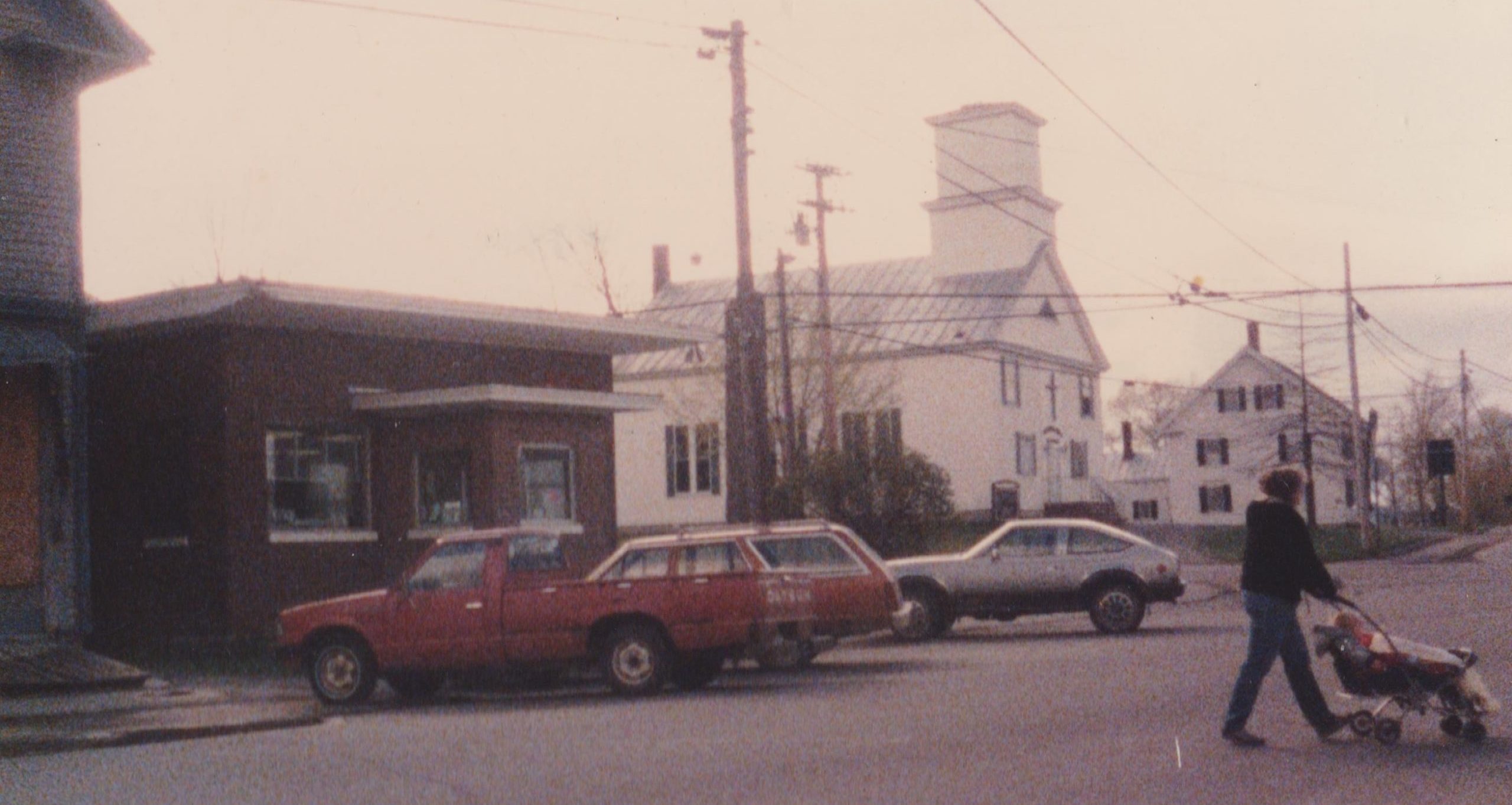
Maine National Bank – Hartland Branch – 1986
*
This farmhouse on Outer Commercial Street was owned by James Leadbetter in 1860 before being purchased by Archibald Linn by 1883 as one of his many properties. It was sold during the Great Auction of 1932 to J. Howard Haley and later owned by Alvah “Pinky” & Faye Snowman, among others.
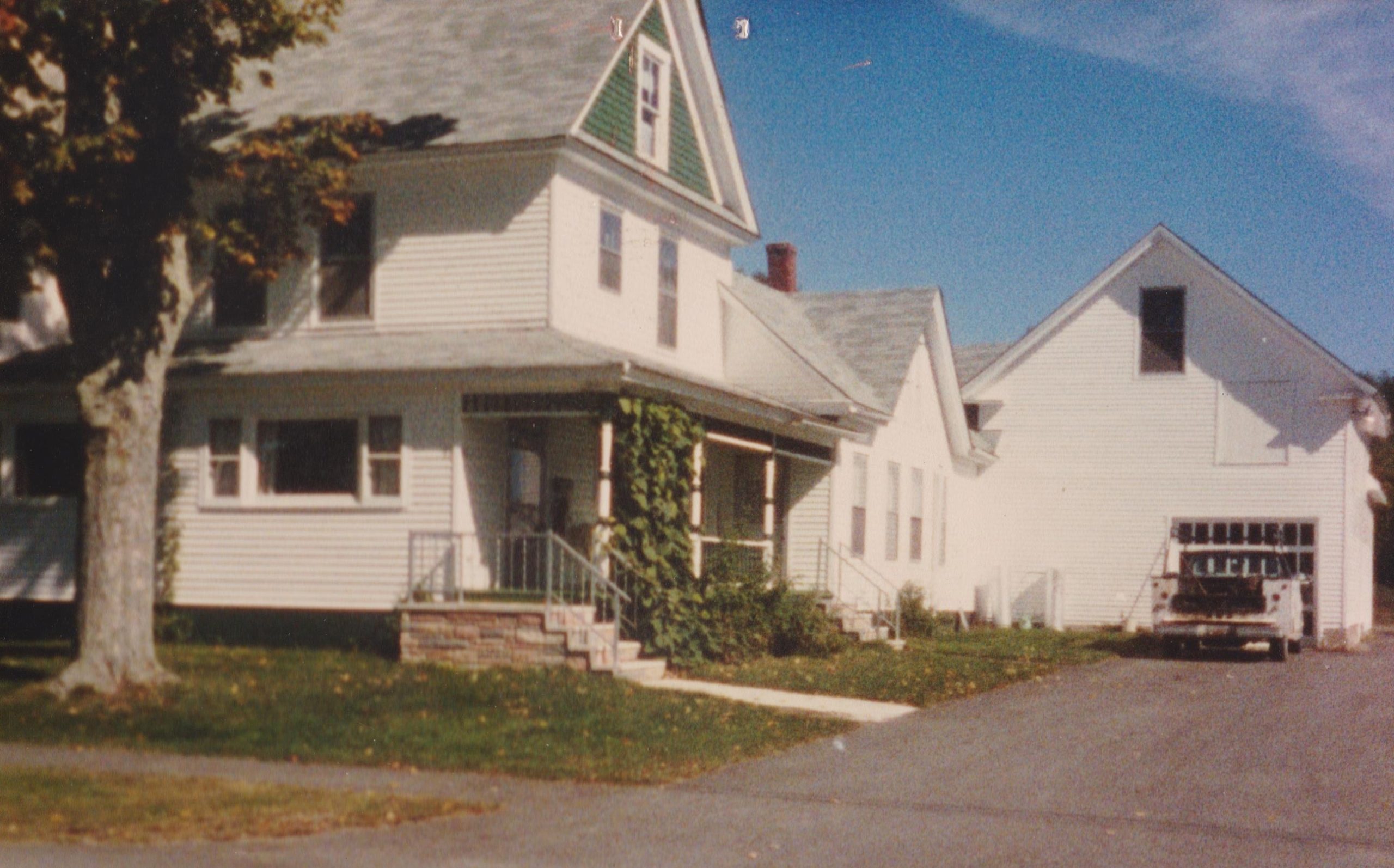
Former Leadbetter Homestead – Linn Property – 1988
*
This duplex was part of the Linn Estate and was purchased by Elmer Burton at the Great Auction of 1932 then sold it soon after to Lloyd Cookson, Sr & Vivian Merrow where she operated “Vivian’s Beauty Salon” for many years.
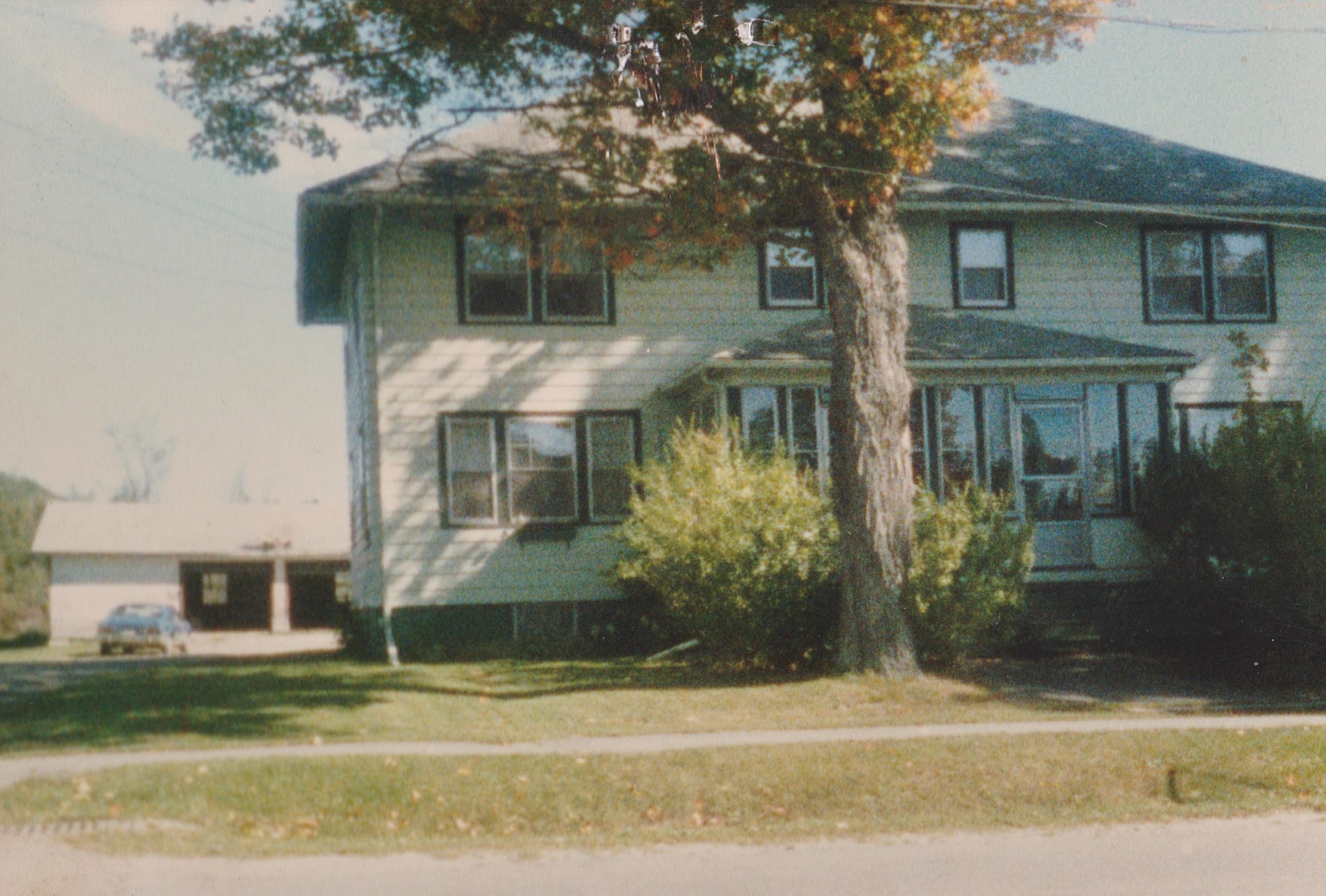
Linn Estate Duplex – 1988
*
The house at the former Maple Lane Farm was purchased by Carl Randlett immediately following the Great Auction of 1932.
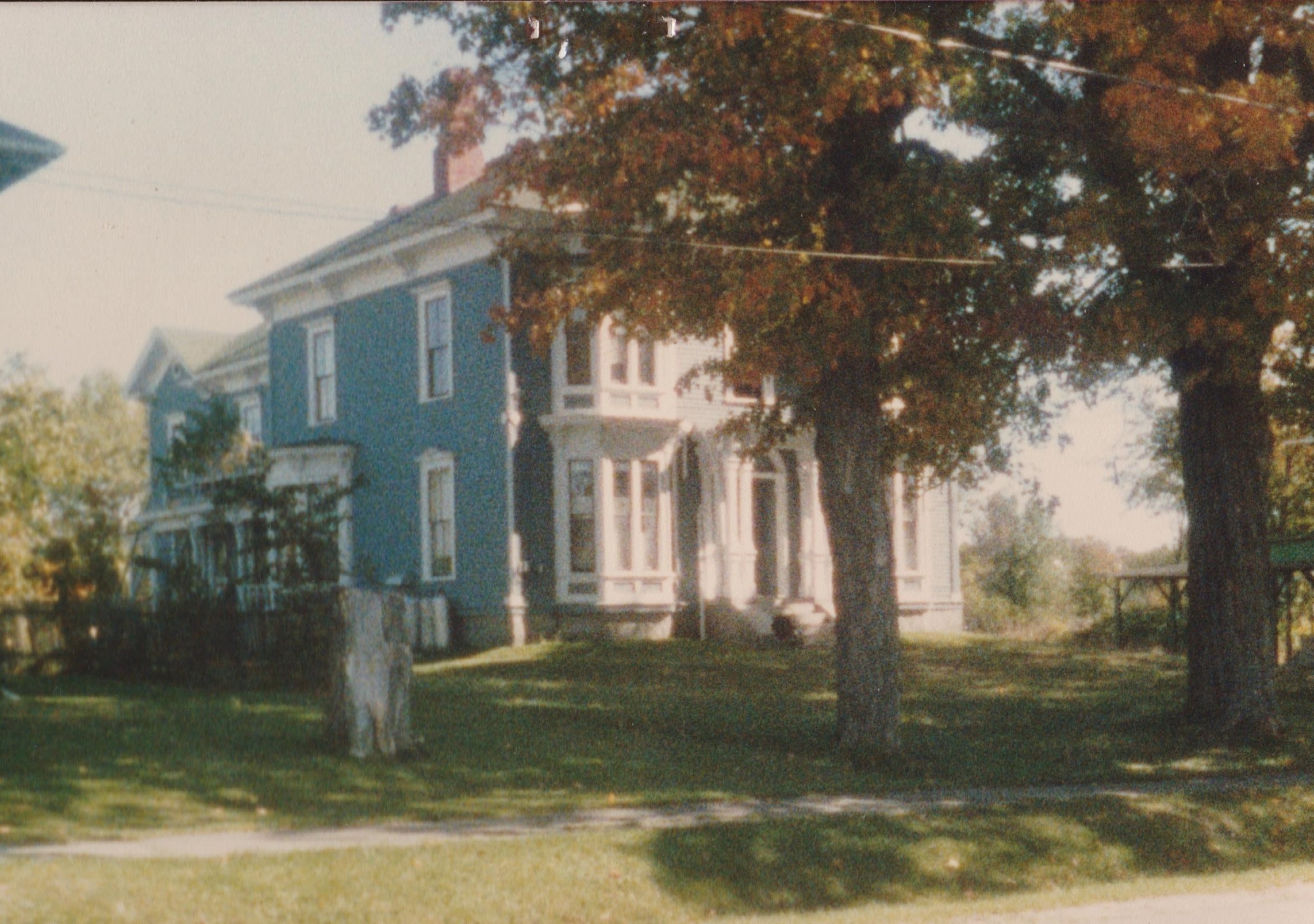
Former Maple Lane Farm House now commonly known as the Century House – c1988
*
Several upgrades were made to the Methodist Church over the years but its basic structure remained unchanged.
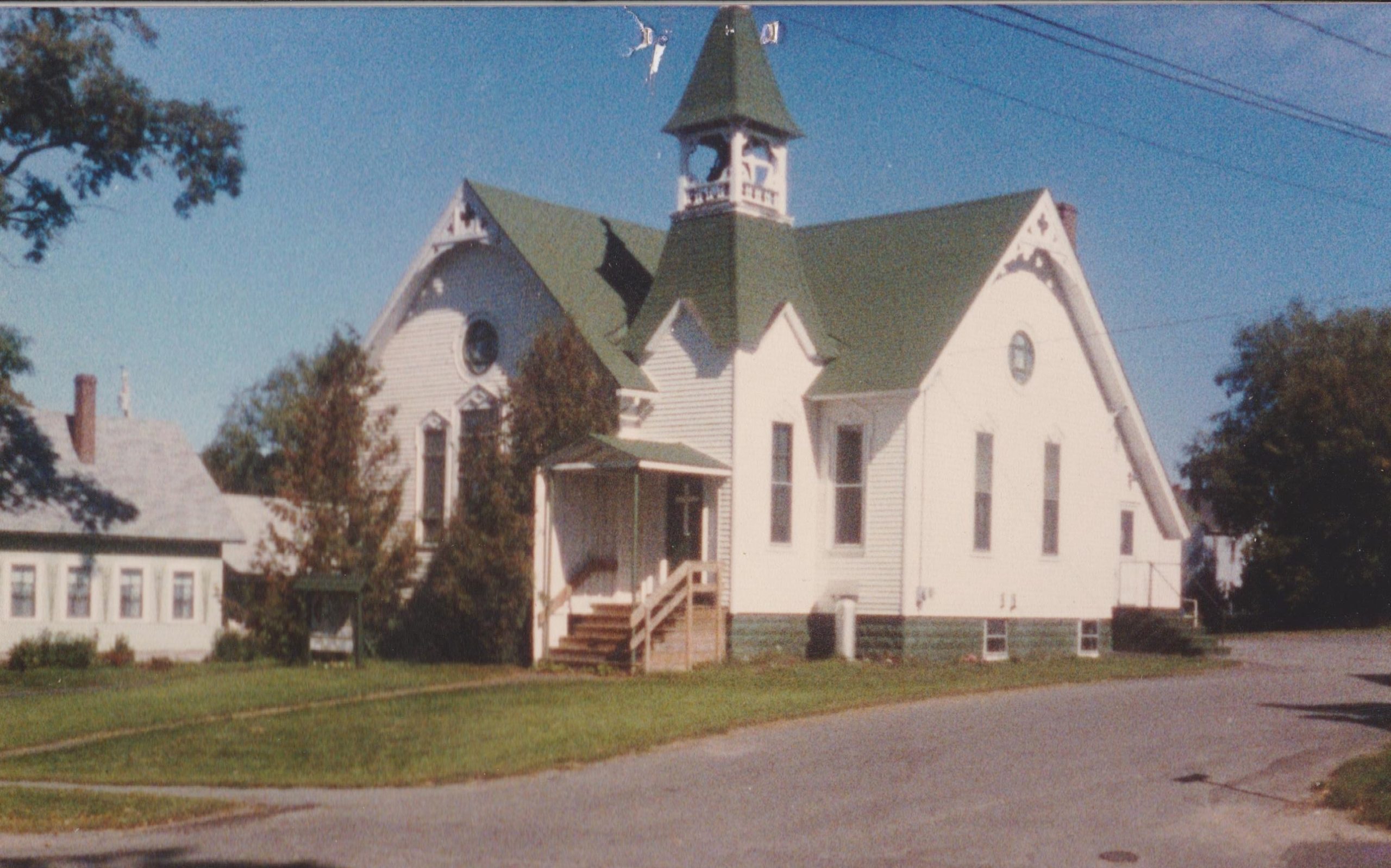
Grace Linn Memorial Methodist Church – 1988
*
The former Gorham Prescott Block was purchased by Clair I. Currie at the Great Auction of 1932 who years later sold the building to Rae Fuller Randlett.
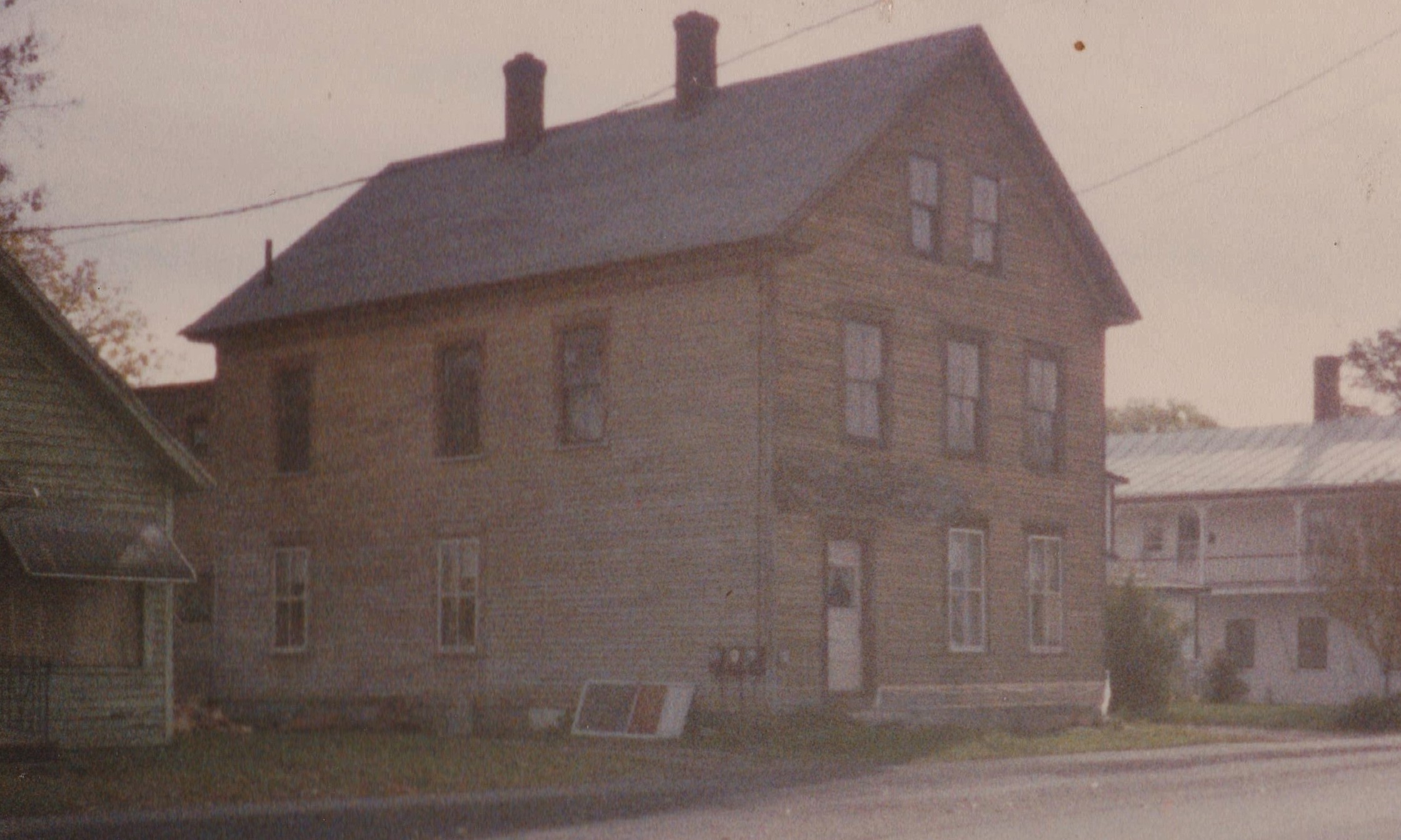
Former Gorham Prescott Block – 1988
*
The former E. W. Martin & Sons Logging Company Main Office on the left remained in the Martin Family for years. It was rented out as an apartment and was the residence of Ervin’s son, Gerald Martin for a time.
Norman “Betz” McCormack sold his store on the right in 1971 to Linwood & Carolyn Wheeler who operated a store there for a year before selling to Charlie Pelkie in 1972 who operated his business as “Pelkie’s Market”. Rocky Rice & Vicki Getchell purchased the building in 1977 and opened as “V&R Market” before moving to the Hartland Drug Store location in 1981. Numerous families lived upstairs over the years. Both buildings were eventually demolished and replaced with a laundromat.

Former Martin Logging Company Office (left) and former York Taylor Shop – 1988
*
The Hartland Public Library remained at the original Linn Woolen Mill Office from 1935 until 1991 when it moved to its new home on Mill Street. The building would later become a leather outlet store for the tannery before being closed and abandoned.
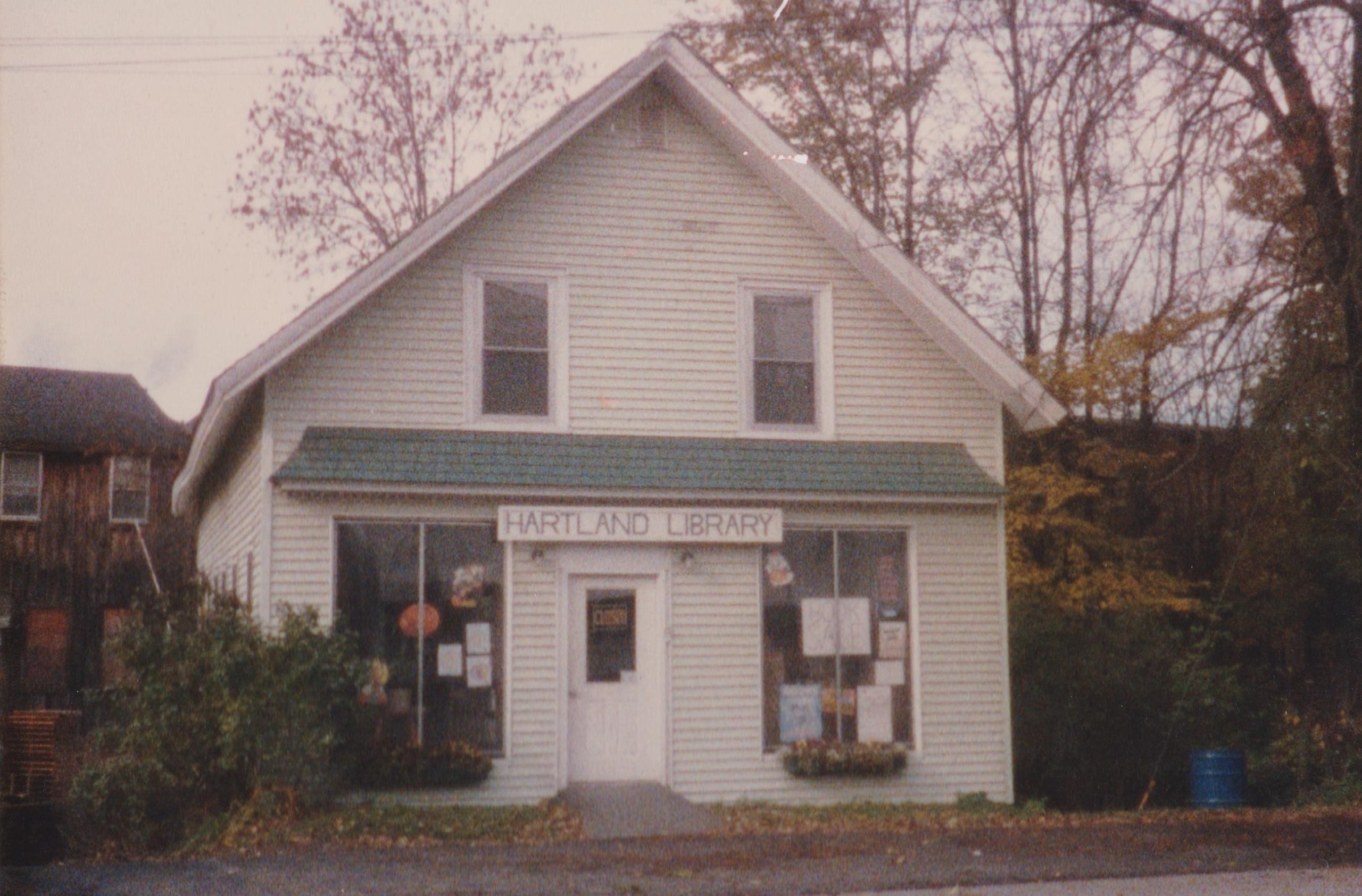
Former Linn Woolen Mill Office – 1988
*
In 1977, Florence “Flossie” Southard & Charles DeGuisto briefly operated a store business at the former Hartland Drug Store Block. When it closed in 1978, the building was purchased by Bowman & Littlefield Construction of Hartland who used the rear part for storage and leased the store out for a time to Harry Graff. In 1981, Rocky & Vicki Rice moved their “V&R Variety” store here from their previous location on Commercial Street. In 1984, they moved to the former Davis-Barden-Wright Block in Warren Square taking over the former Wright’s Shurway Store location.
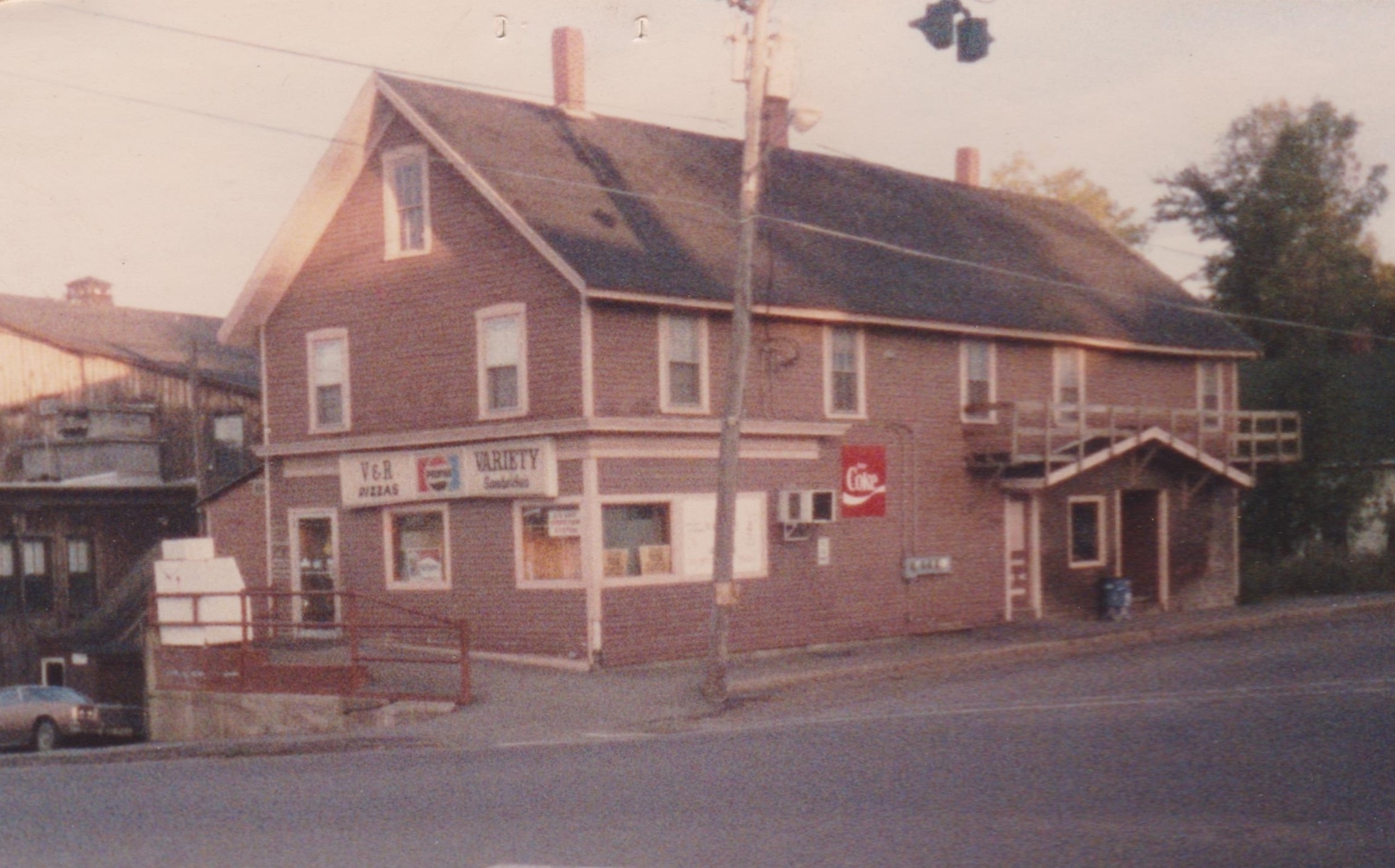
Former Hartland Drug Store Block – 1984
*
Elizabeth (Hart) Fisher’s “Star Jewelry & Home Supply” at the former Buck and Currie store location with Guy Lloyd Wood’s former business next door where he had begun operating as “Guy’s Barber Shop” about 1944 at the former Greene Cobbler Shop.
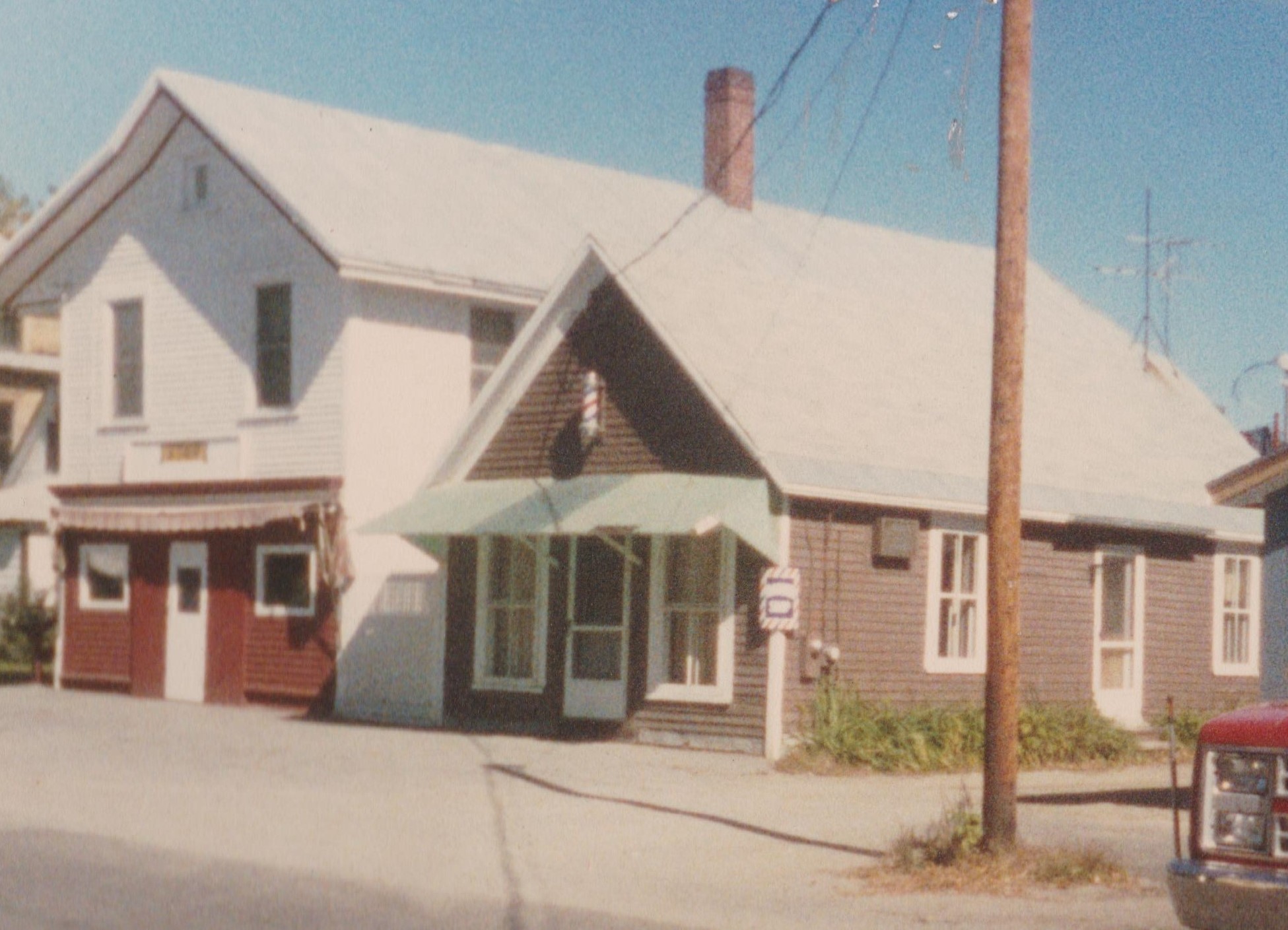
Former Buck – Currie Block and Former Greene Block – 1986
*
The former Butterfield Block was purchased by Lewis H. Barden by the late 1930s where he rented apartments on the 1st & 2nd floors until his death. It was later sold and remained an apartment building until a tragic fire on September 20, 1984 destroyed the building and claimed 5 lives; 3 of them young children.
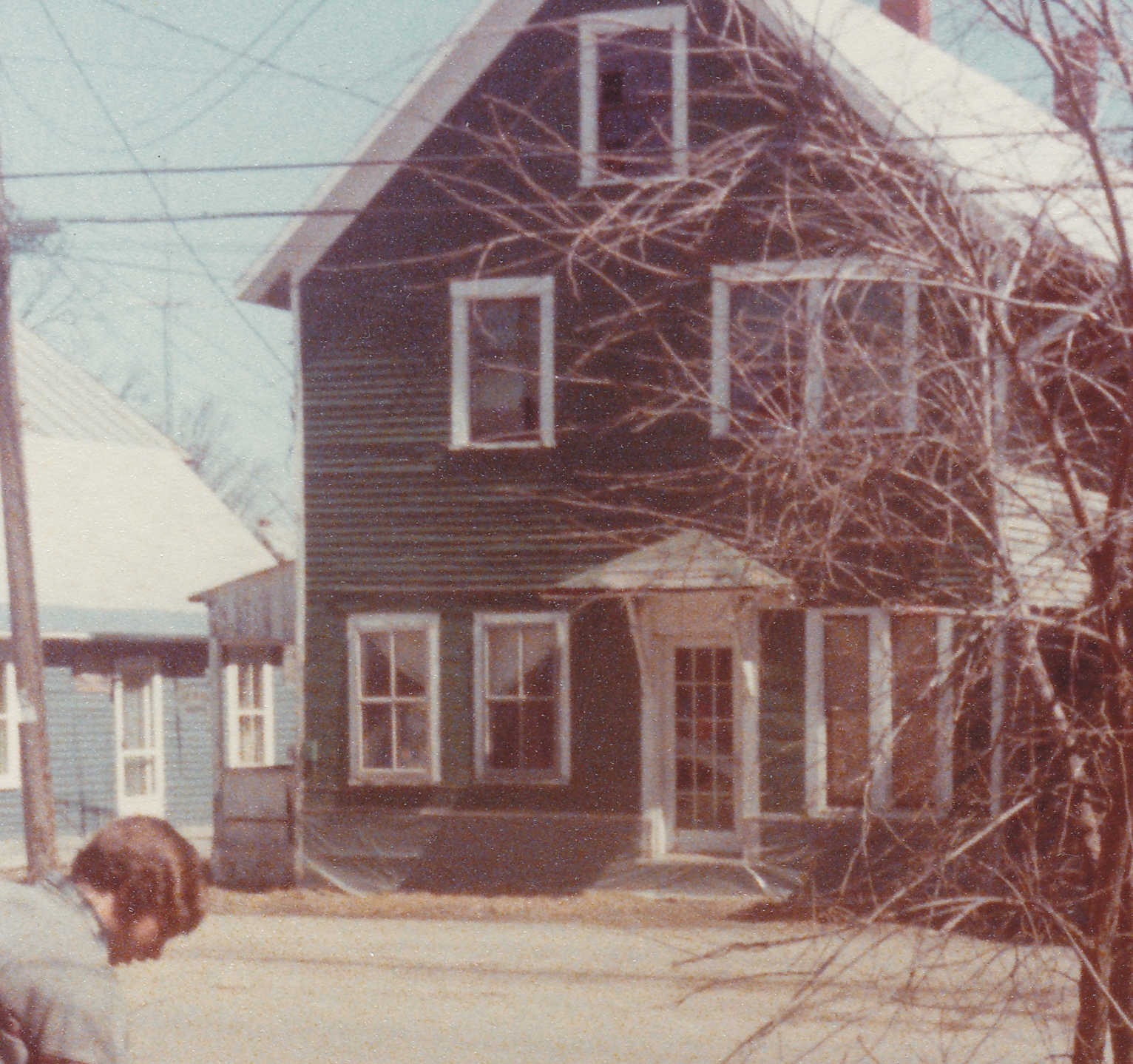
Former Butterfield – Hardy Sisters – Buker Brothers – Varney & Buker – L. H. Barden Block – 1970s
(Courtesy of Laurel Knowles White)
*
A smaller building was eventually built on the lot of the former Butterfield Block by 1986.

Former Lot of Butterfield Block – 1986
*
The former William Lancey Block served as the home of numerous businesses over the decades including those operated by Mr. & Mrs. E. S. Locke, Henry & Margaret (Brown) Smith and Daniel A. Packard. It was purchased by Lewis H. Barden in the late 1930s who rented the 2nd floor as an apartment and leased the 1st floor as a bowling alley & pool hall business operated 1st by Alvin Spaulding then Charles Cloutier into the mid-1950s.

Former William Lancey Block – 1986
*
Following consolidation of Rae & Meredith Randlett’s businesses down the street, Reverend Ronald Parker and his wife Patricia Bean leased the former E. P. Dyer Block in 1964 from Ken & Geraldine (Knowles) Bishop and opened a pizza shop. They were followed by Mike & Martha Greene in 1966 who began operating there as “Hartland Pizzarina”. In late 1969, following an August 30th fire at their restaurant in the basement floor of the Wright Block at Warren Square, Joe Bizeau & “Gertie” Grignon moved into the building continuing business as “Joe & Gertie’s Restaurant”.
Soon after their purchase of the former Cookson Store Block next door in October of 1971, Towne & Wilma Reynolds leased the 1st floor from the Bishops and opened a pool hall & pizza shop known as “TJ’s Pizza”. They purchased the building from the Bishops in 1975 after selling their store and remained in business there until 1987. Roger Carr then purchased the building and opened the “Hartland Diner” operating it until 1994 when Elaine (Bowdoin) Delescluse purchased the building where she continued operating as the Hartland Diner until 2000.

Former E. P. Dyer Block as Hartland Diner – 1988
*
In October of 1971, Lloyd Cookson sold the former Seekins Store Block to Towne & Wilma Reynolds who operated as Reynold’s Market until 1975. William Doyle and his wife Lois then bought the store operating as Bill’s Market until around 1978.
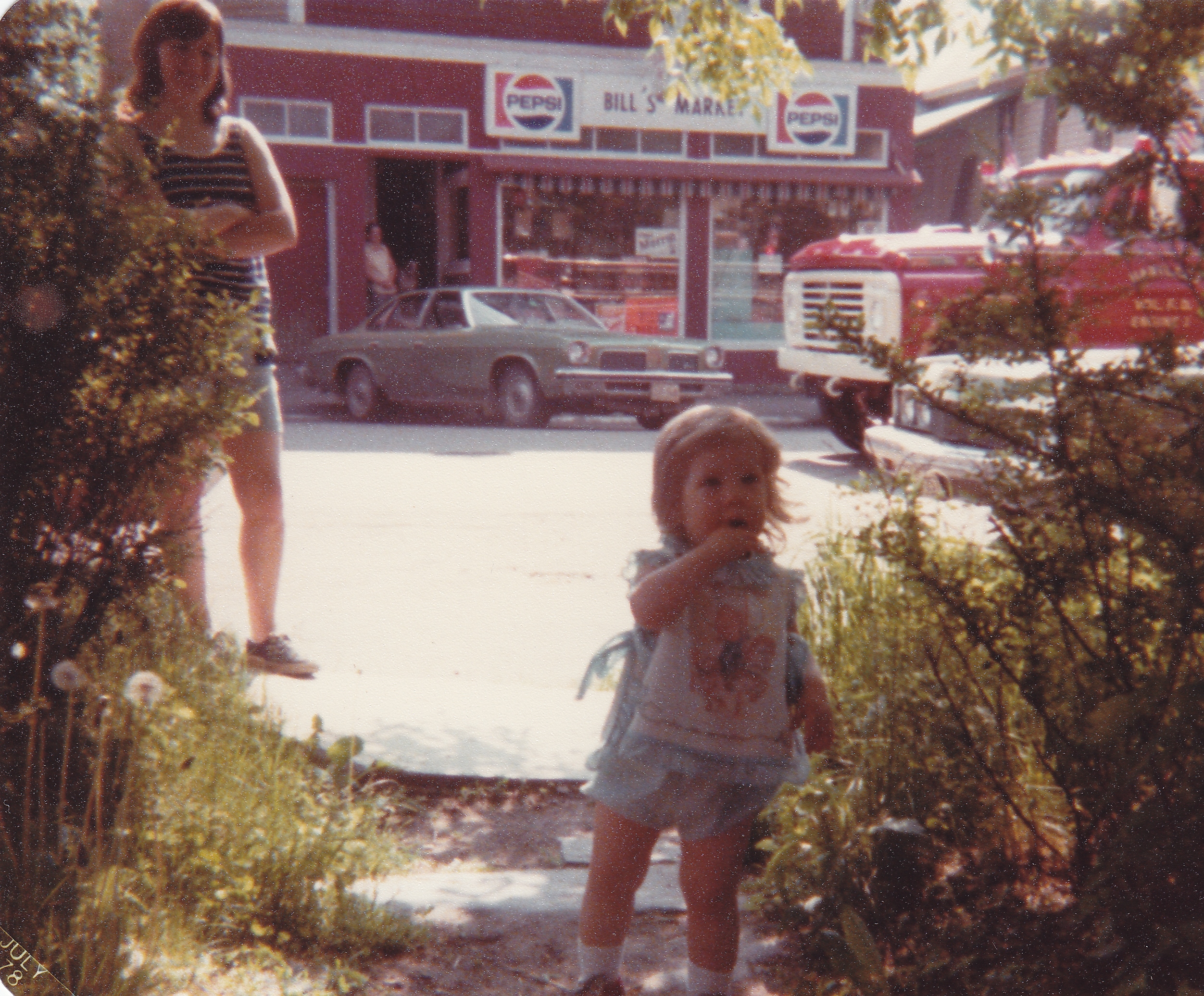
Former Seekins Block as Bill Doyle’s Market – 1978
(Courtesy of Laurel Knowles White)
*

Former Seekins Block – 1986
*
Following Rae Fuller Randlett’s death in 1984, Meredith continued operations for several more years with assistance from their children, Daphne & Rae Fuller Randlett II. In the late 1990s, the store was sold to David Wright, son of Fod Wright, who still operates “Wrights’ General Store” at the location today. Rae & Meredith’s daughter, Daphne Randlett married David’s older brother, Thomas E. Wright.

Former Lancey- Skinner – Smith – Burton Block – 1988
*
In the 1990s, an entire section of the western side of Commercial Street was razed and a parking lot was built. The lot was the former location of the Knowles’ Residence, Martin Logging Office and former V&R Store where a laundry mat was built in its place in front of Martin’s Garage.
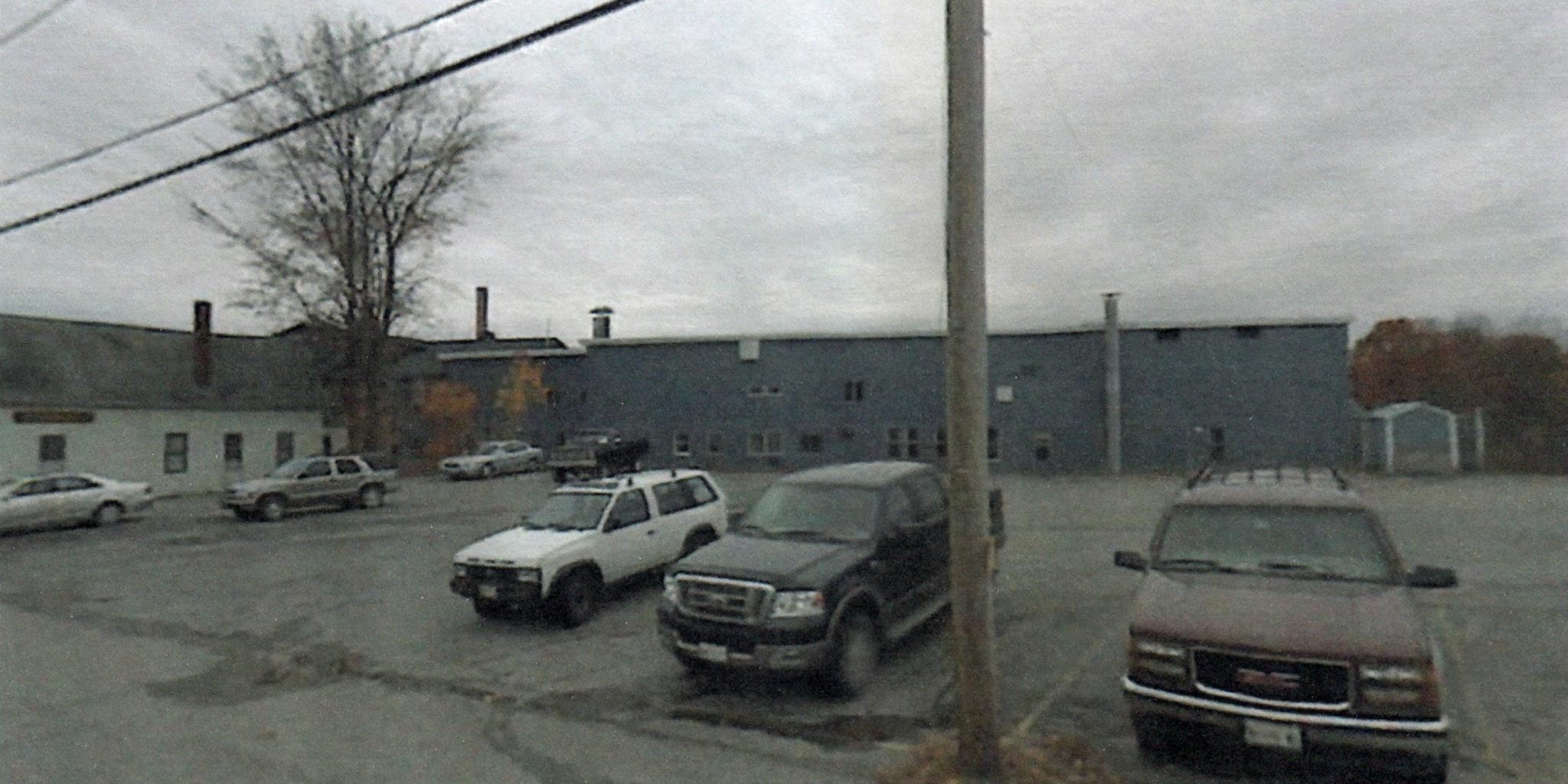
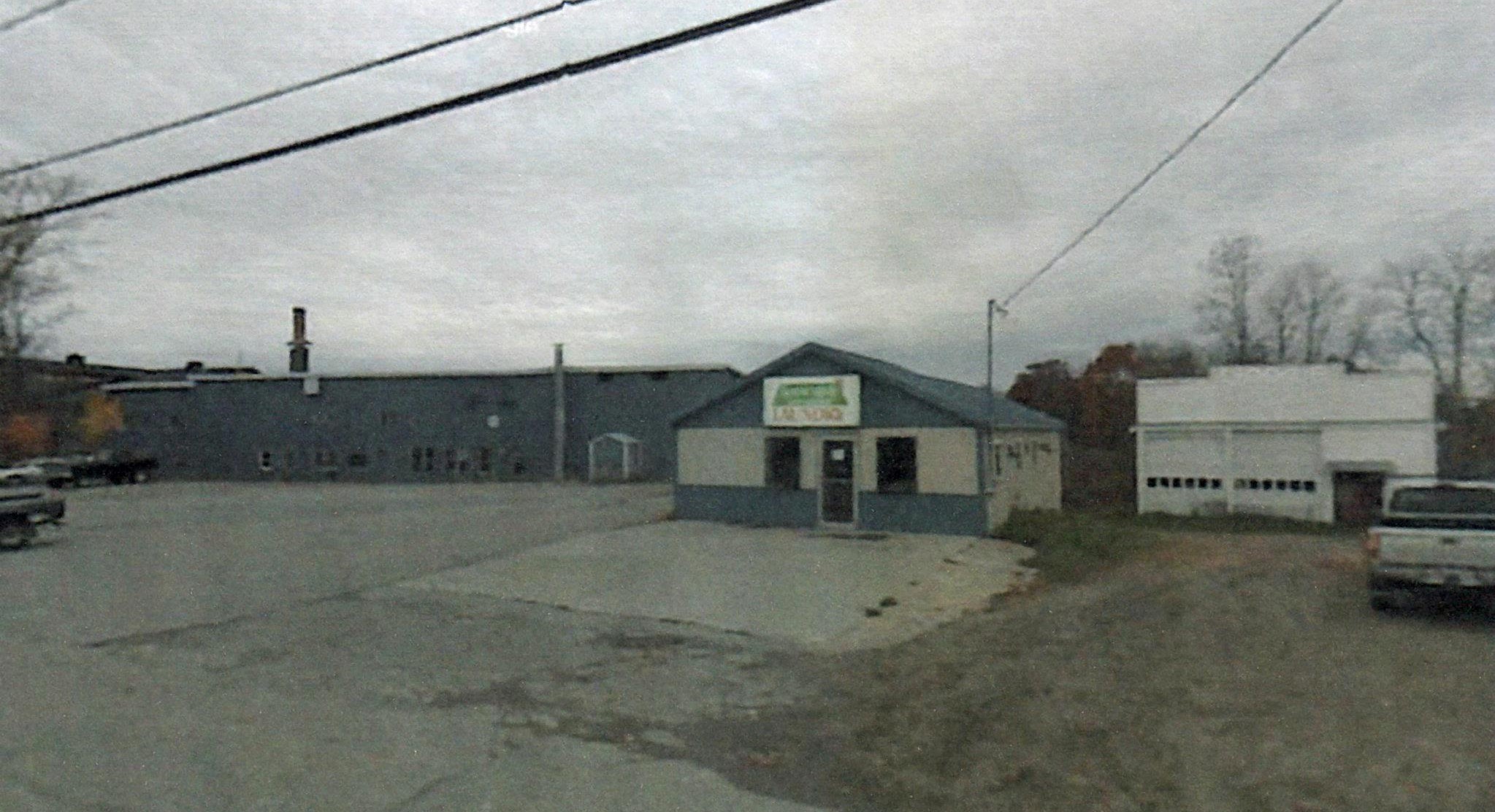
Left & Right side of the Commercial Street Parking Lot
(Google Maps)
*
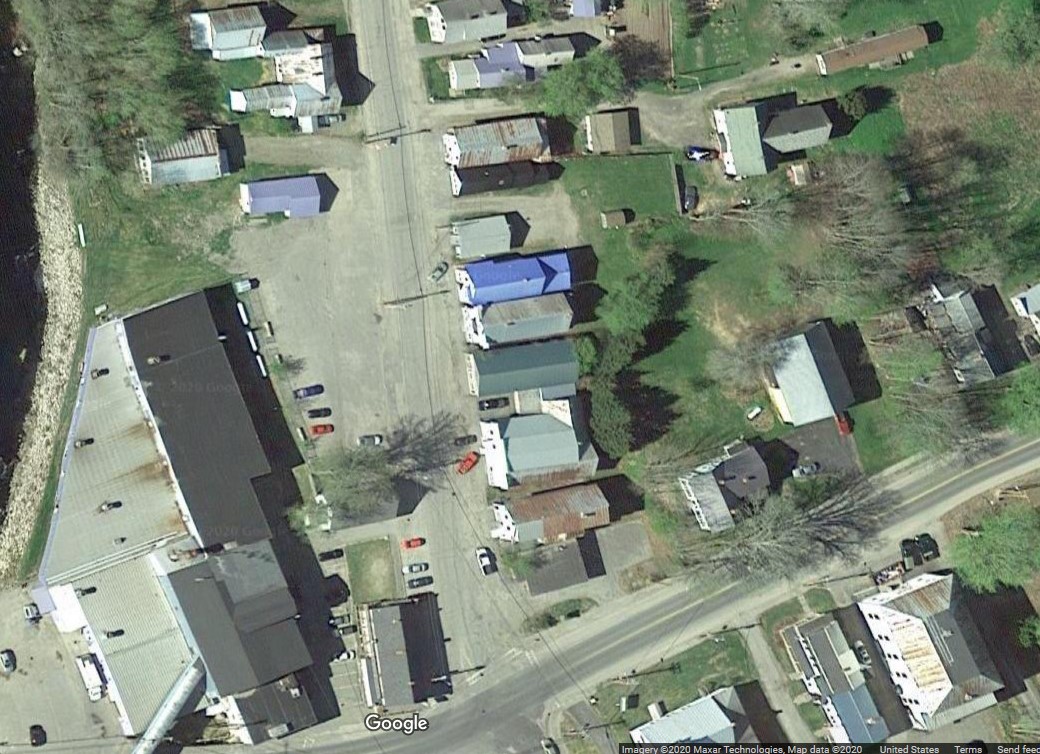
Lower Commercial Street – 2010
(Google Maps)
*
100 Year Then & Now comparison of Store Blocks on the eastern side of Lower Commercial Street.
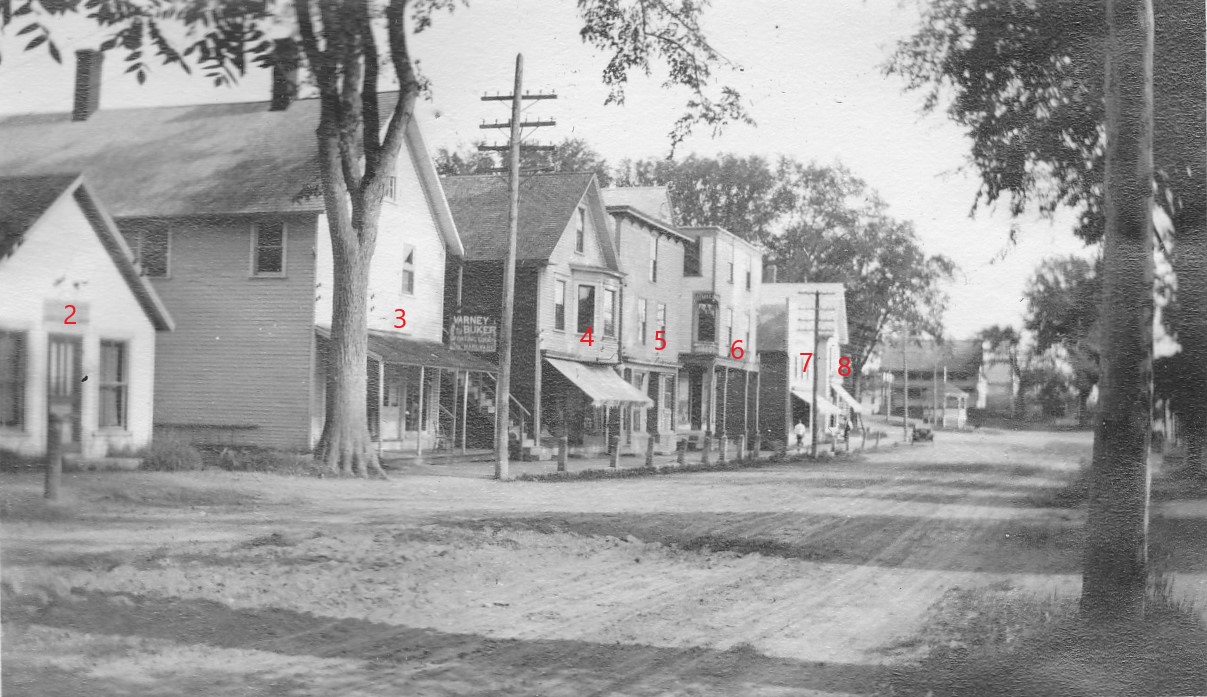
Lower Commercial Street Store Blocks – c1912
*
Those same numbered buildings below as seen in 2012 with some of their known former occupants.
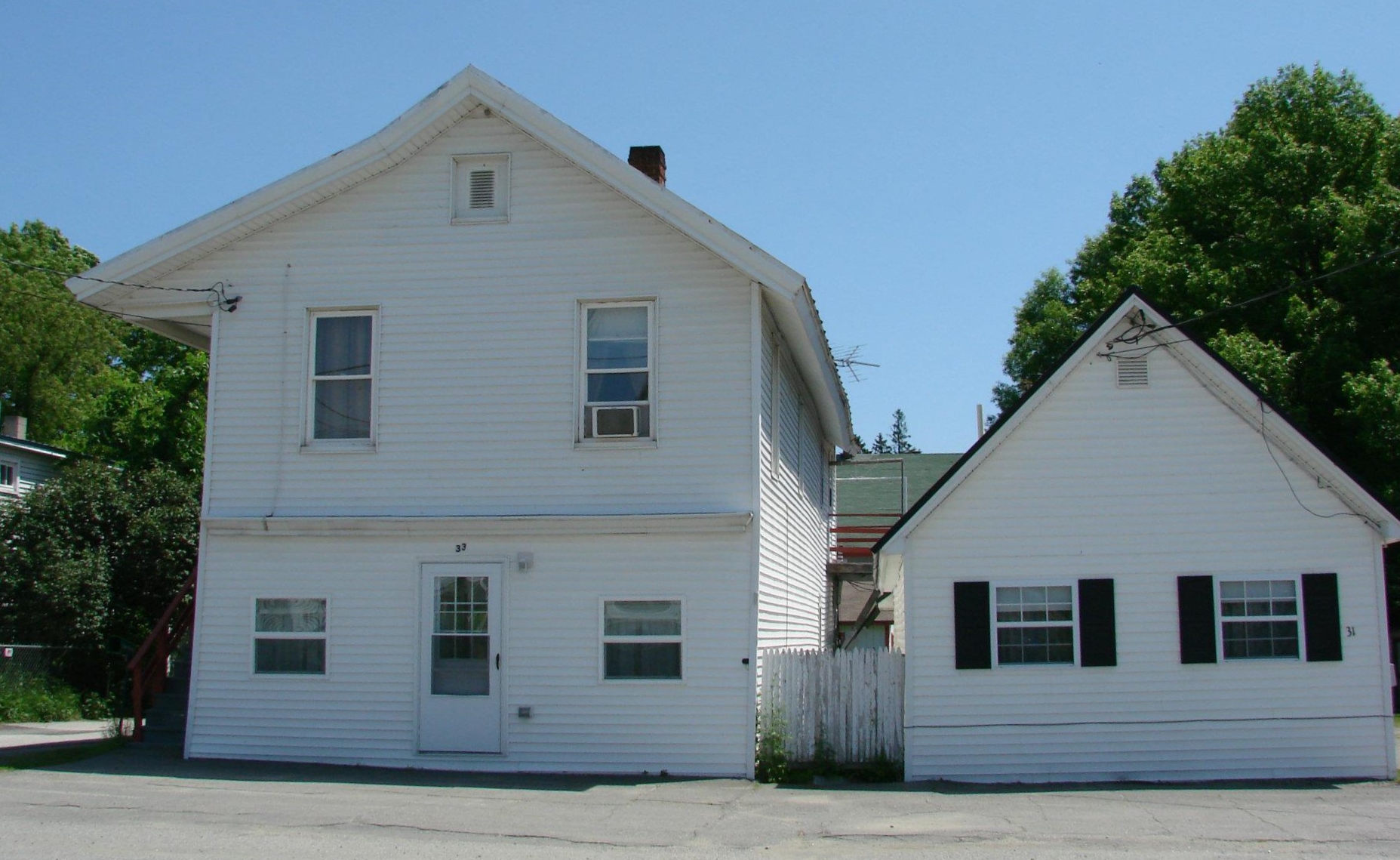
1. (unseen in 1912 Photo) Unknown Origins
Buck – Higgins – Currie – Fisher
2. Unknown Origins
Greene – Wood
*
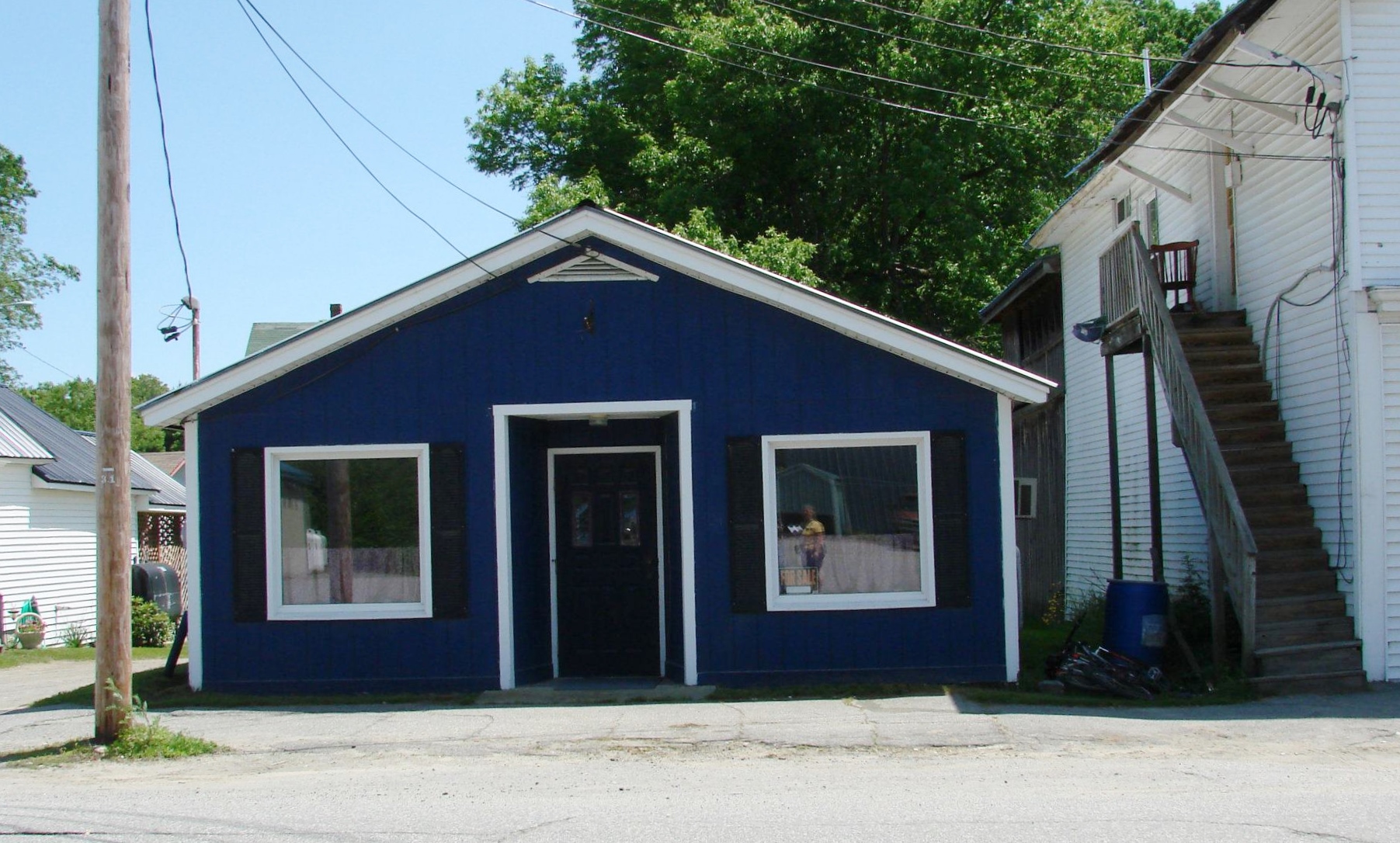
3. Lot location of original John Butterfield, Jr Block built in 1870s
Hardy Sisters – Freeman Daniels – Buker Brothers – Varney & Buker
*
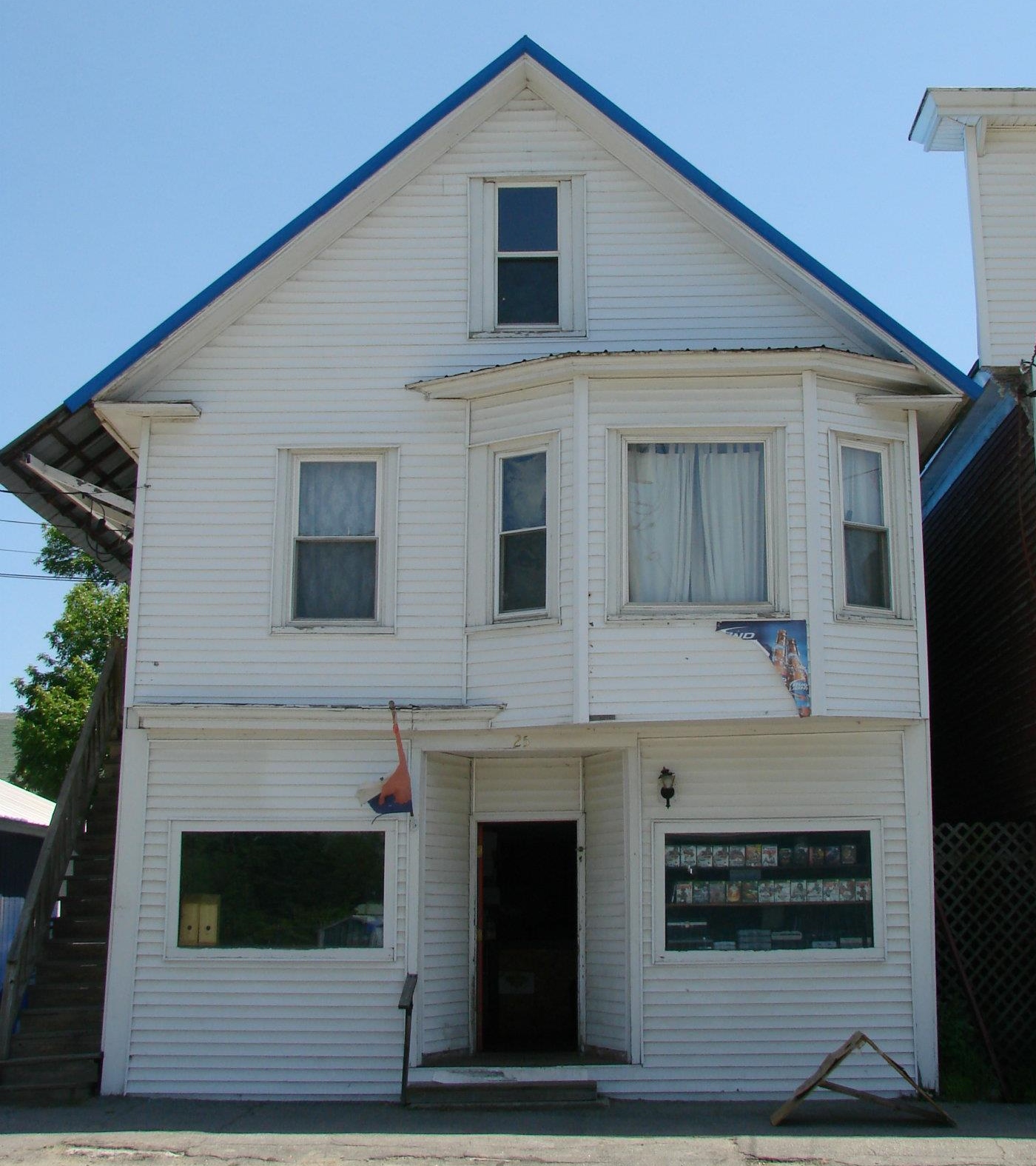
4. Original William Lancey Block built in 1870s
E. S. Locke – Mrs. Henry L. Smith – Daniel Packard – Ridley & Wakefield – Spaulding – Cloutier
*
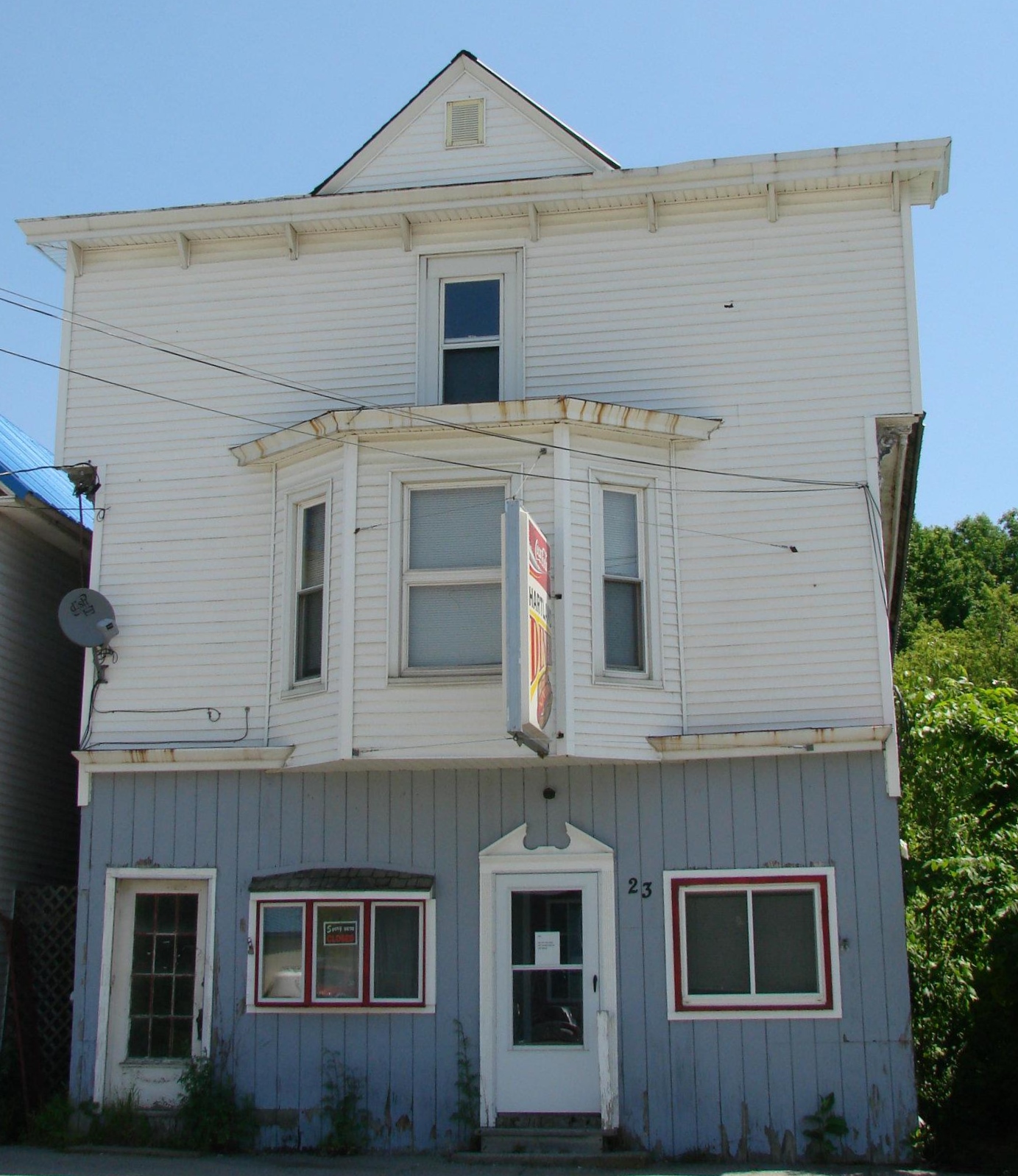
5. Original Lucian H. Goodwin Block built in 1896
Smith Brothers – E. P. Dyer – B & H Market – Randlett’s Market – Hartland Pizzarina – Bizeau Restaurant – TJ’s Pool Hall – Hartland Diner
*
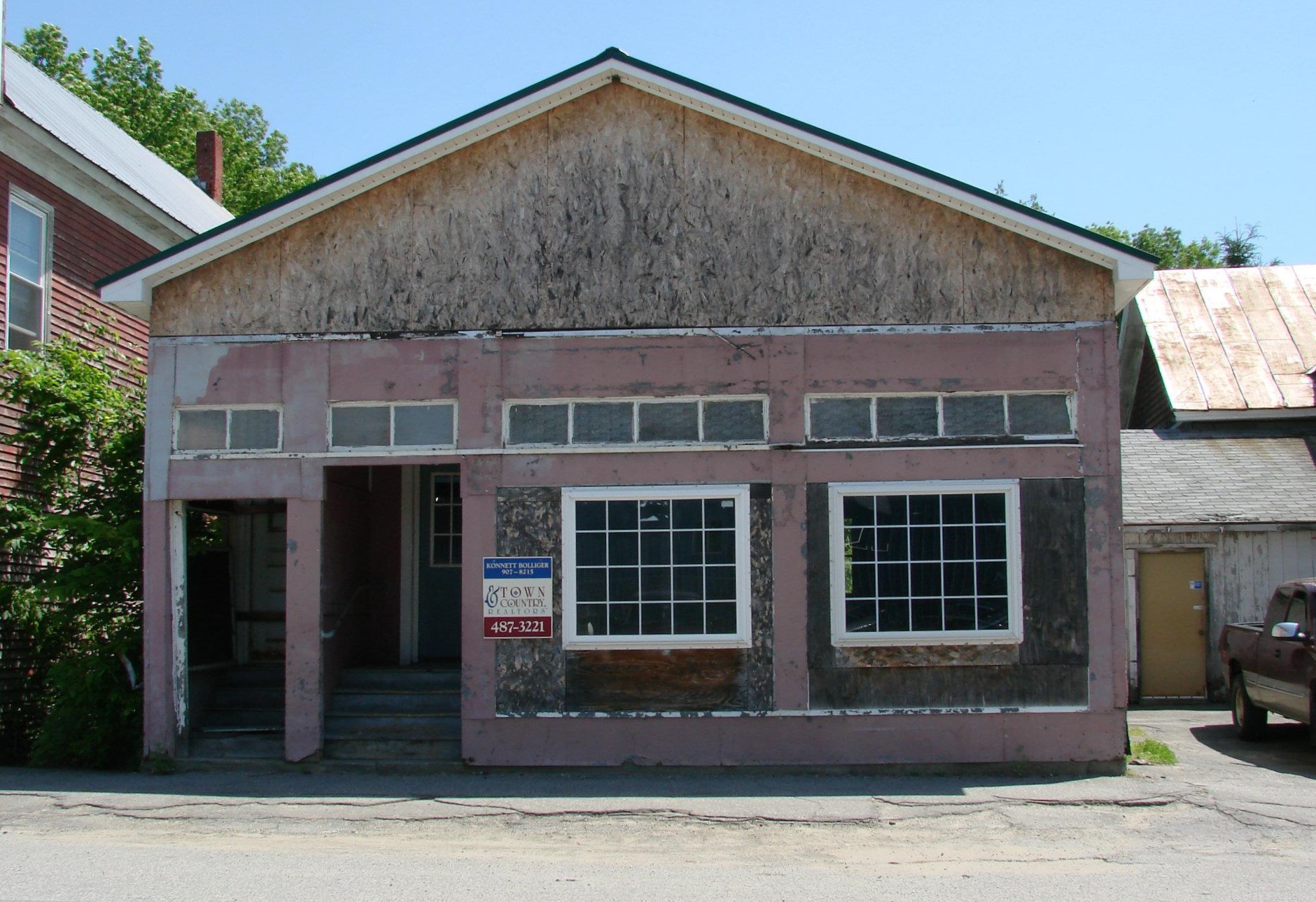
6. Original Walter E. M. Seekins Block built in 1892
Whitney – Whitcomb – Hamilton & Young – Sterns – Barden – Cooper – Cookson – Reynolds – Doyle
*
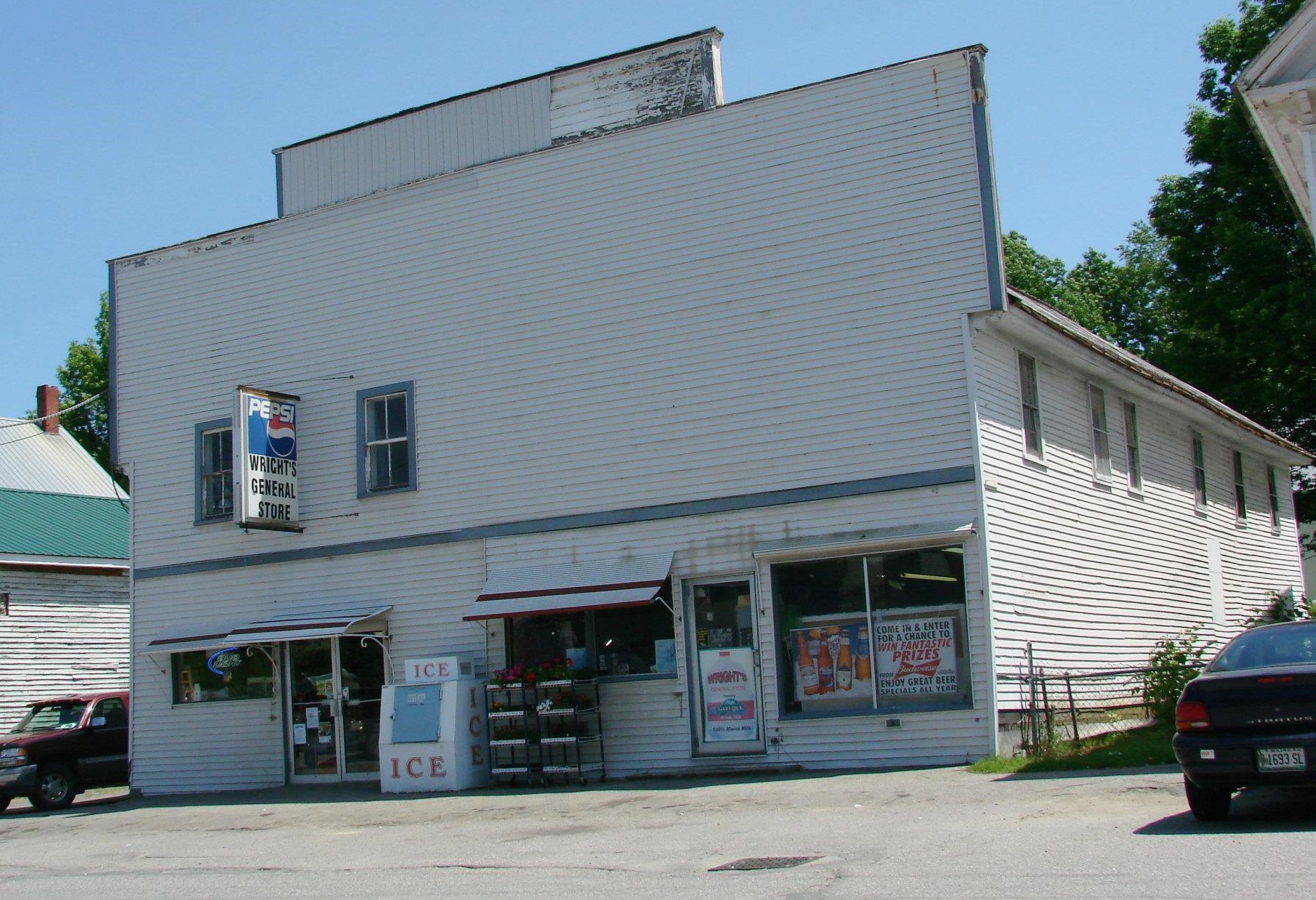
7. Original George Lancey, Jr Block #1 built in 1870s
Skinner – W. Smith – A. Burton – E. Burton – Randlett – Wright
*

8. Original George Lancey, Jr Block #2 built c1876
George M. Lancey – B. W. Hanson
(2012 photos courtesy of Laurel Knowles White)
*
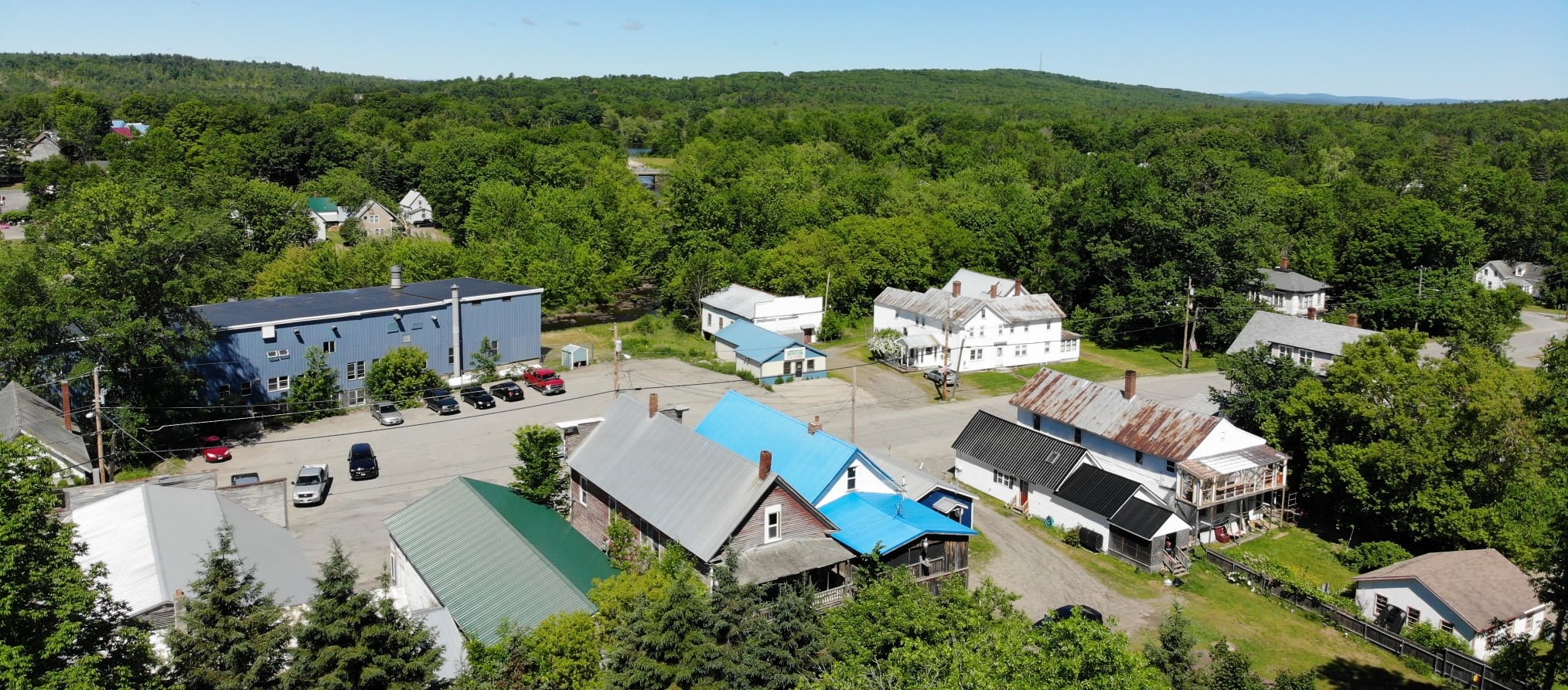
Commercial Street – 2018
(Photo courtesy of Dana Morgan)
*
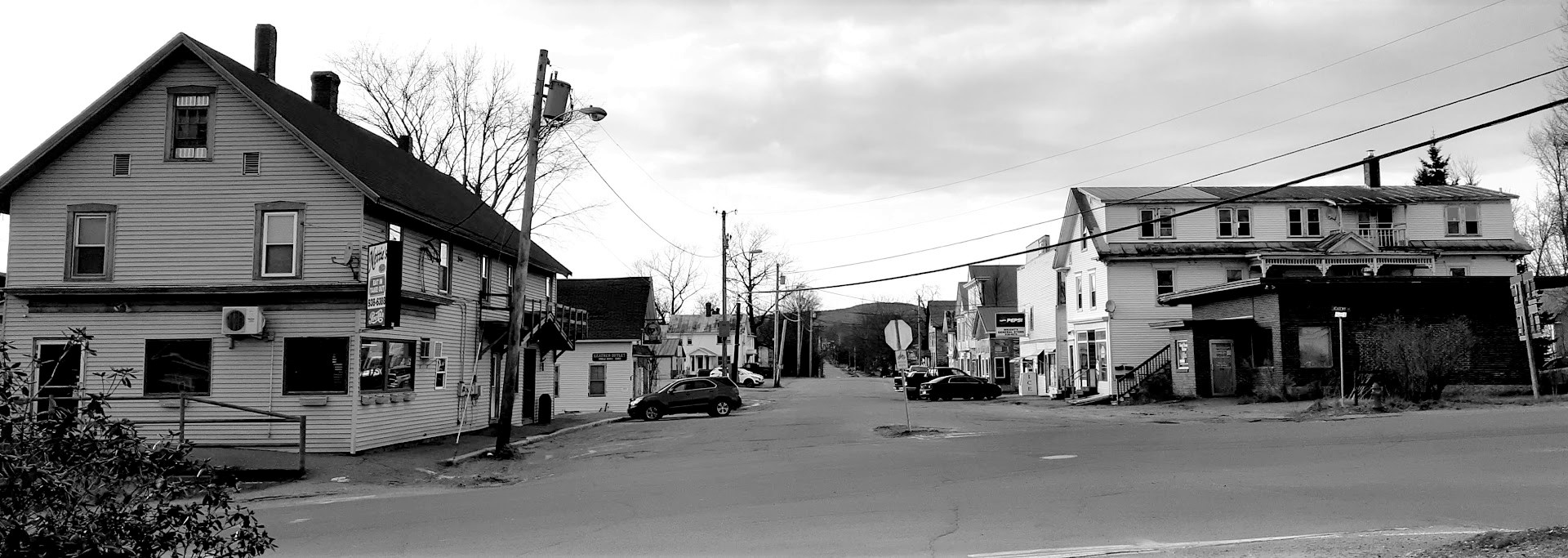
Commercial Street – 2019
(Photo courtesy of Will Bunker Photography)